Jacqueline Abelson's Blog
September 23, 2018
31 Classic Horror Movies To Watch Before Halloween
Horror.
It is an ancient art form. We've terrified each other with tales that trigger the less logical parts of our imaginations for as long as we've told stories. What we’ve learned is that audiences willingly offer themselves up to sadistic storytellers to be scared witless. Perhaps we are engrossed with this tales of terror because we get a basic thrill from it all. Or maybe, horror stories serve a wider moral purpose.
But when it comes to horror movies, they deliver thrills as well as exploring the dark, forbidden side of life (and death) — cautionary tales for grown ups. They also provide a compelling mirror image of the anxieties of their time. Nosferatu for example, isn't just a tale of vampirism, but offers heart-rending images of a town beleaguered by premature and random deaths, echoes of the Great War and the Great Flu Epidemic fatalities.
Each generation gets the horror films it deserves, and one of the more fascinating aspects of the study of the genre is the changing nature of the monsters who present a threat. Through the 1920s came from Germany's expressionist movement, with films like The Cabinet of Dr. Caligari and Nosferatu influencing the next generation of American cinema, and Universal Studios being the epicenter of all horror movies.
So you wanna see how the horror genre evolved?
Here are 31 classic horror movies that changed the genre of horror forever. 1. The Cabinet of Dr. Caligari (1920)
1. The Cabinet of Dr. Caligari (1920)
 Hailed as the world’s first full-length horror movie, The Cabinet of Dr. Caligari is an instant classic. With an insane jangle of crooked angles and unbalanced teetering images, this film remains as one of the most influential pictures ever released, leaving an indelible mark across a surprising spectrum of genres. The story centers around two young friends, Francis and Alan, while jockeying for the affections of Jane, visit a local traveling carnival. There they take in the act of the mysterious, top-hatted and wild-haired Dr. Caligari. As they watch, Caligari awakens his somnambulist subject, Cesare, who under hypnosis answers questions from the audience. When Alan jokingly asks when he will die, Cesare responds “Before dawn.” Chilling. After Alan and a couple other people are found stabbed to death, Francis decides to do a little detective work of his own, which brings him back to Caligari. For a silent film, what is notable isn’t the so much the storyline, but rather the visuals that makes this movie so haunting. The painted townscape is filled with curved and pointed buildings teetering at dangerous angles, almost as if they were alive and shrieking. Roads twist and spiral to nowhere. The perspectives are deliberately mismatched and inconsistent, with the props and sets sometimes being too large for the characters, and others too small. When watching, it almost makes you feel like you’re stuck inside an Edvard Munch painting.
Hailed as the world’s first full-length horror movie, The Cabinet of Dr. Caligari is an instant classic. With an insane jangle of crooked angles and unbalanced teetering images, this film remains as one of the most influential pictures ever released, leaving an indelible mark across a surprising spectrum of genres. The story centers around two young friends, Francis and Alan, while jockeying for the affections of Jane, visit a local traveling carnival. There they take in the act of the mysterious, top-hatted and wild-haired Dr. Caligari. As they watch, Caligari awakens his somnambulist subject, Cesare, who under hypnosis answers questions from the audience. When Alan jokingly asks when he will die, Cesare responds “Before dawn.” Chilling. After Alan and a couple other people are found stabbed to death, Francis decides to do a little detective work of his own, which brings him back to Caligari. For a silent film, what is notable isn’t the so much the storyline, but rather the visuals that makes this movie so haunting. The painted townscape is filled with curved and pointed buildings teetering at dangerous angles, almost as if they were alive and shrieking. Roads twist and spiral to nowhere. The perspectives are deliberately mismatched and inconsistent, with the props and sets sometimes being too large for the characters, and others too small. When watching, it almost makes you feel like you’re stuck inside an Edvard Munch painting.
2. Nosferatu (1922) Perhaps the most terrifying thing about Nosferatu is how close this masterpiece of a film came to being lost forever. But thankfully, copies survived. Loosely adapted from Bram Stoker’s legendary Dracula novel, the vampire here is not actually named Dracula, but Count Orlok. Also, instead of Jonathan Harker we get a Thomas Hutter. But little does Hutter know as he travels to Transylvania to meet Orlok for the first time, that he is crossing into the boundary between the real world and the nightmare one. After glimpsing at Hutter's portrait of his wife, Ellen, Orlok makes his way, with a stash of earth-filled coffins by sea to north Germany to seek Ellen out with his macabre ways. Nosferatu is still haunting and ethereal to this day. Vampires are such familiar screen figures to us now it's hard to appreciate that Nosferatu was the first vampire movie of its time. The film centers on a monster, Count Orlok, but it's so much more than a monster movie. It's a melting pot of early Weimar Republic anxieties, reflecting concerns about many things from the rise of women into political power (female suffrage was granted in 1919) to theories about the cause of the recent Spanish Flu epidemic (contagion from overseas). Visually, it's a blend of trick photography and documentary. One that will definitely stay with you.
Perhaps the most terrifying thing about Nosferatu is how close this masterpiece of a film came to being lost forever. But thankfully, copies survived. Loosely adapted from Bram Stoker’s legendary Dracula novel, the vampire here is not actually named Dracula, but Count Orlok. Also, instead of Jonathan Harker we get a Thomas Hutter. But little does Hutter know as he travels to Transylvania to meet Orlok for the first time, that he is crossing into the boundary between the real world and the nightmare one. After glimpsing at Hutter's portrait of his wife, Ellen, Orlok makes his way, with a stash of earth-filled coffins by sea to north Germany to seek Ellen out with his macabre ways. Nosferatu is still haunting and ethereal to this day. Vampires are such familiar screen figures to us now it's hard to appreciate that Nosferatu was the first vampire movie of its time. The film centers on a monster, Count Orlok, but it's so much more than a monster movie. It's a melting pot of early Weimar Republic anxieties, reflecting concerns about many things from the rise of women into political power (female suffrage was granted in 1919) to theories about the cause of the recent Spanish Flu epidemic (contagion from overseas). Visually, it's a blend of trick photography and documentary. One that will definitely stay with you.
3. The Phantom of the Opera (1925)
 This film, the first adaptation of Gaston Leroux’s novel from 1908, remains one of the definitive masterpieces of silent horror. Released by horror giant Universal in 1925, this film emphatically established a formula that Universal would rework into the thirties and forties, which proposed the important idea that those who look beastly will inevitably act beastly. Shocking for its time, this timeless classic features one of the most memorable scare scenes of the silent era: the sudden unmasking of Erik – the ghostly opera ghost of the title. The story concerns Erik, a much-feared fiend who haunts the Paris Opera House. Lurking around the damp, dank passages deep in the cellars of the theater, he secretly coaches understudy Christine Daae to be an opera star. Through a startling sequence of terrors, including sending a giant chandelier crashing down on the opera patrons, the Phantom forces the lead soprano to withdraw from the opera, permitting Christine to step in. Luring Christine into his subterranean lair below the opera house, the Phantom confesses his love. But Christine is in love with Raoul de Chagny. The Phantom demands that Christine break off her relationship with Raoul before he'll allow her to return to the opera house stage. She agrees, but immediately upon her release from the Phantom's lair, she runs into the arms of Raoul and they plan to flee to England after her performance that night. The Phantom overhears their conversation and, during her performance, the Phantom kidnaps Christine, taking her to the depths of his dungeon. It is left to Raoul and Simon Buquet, a secret service agent, to track down the Phantom and rescue Christine. There have been over ten other adaptations of the myth but none can match this original for atmospheric dread or stunning direction.
This film, the first adaptation of Gaston Leroux’s novel from 1908, remains one of the definitive masterpieces of silent horror. Released by horror giant Universal in 1925, this film emphatically established a formula that Universal would rework into the thirties and forties, which proposed the important idea that those who look beastly will inevitably act beastly. Shocking for its time, this timeless classic features one of the most memorable scare scenes of the silent era: the sudden unmasking of Erik – the ghostly opera ghost of the title. The story concerns Erik, a much-feared fiend who haunts the Paris Opera House. Lurking around the damp, dank passages deep in the cellars of the theater, he secretly coaches understudy Christine Daae to be an opera star. Through a startling sequence of terrors, including sending a giant chandelier crashing down on the opera patrons, the Phantom forces the lead soprano to withdraw from the opera, permitting Christine to step in. Luring Christine into his subterranean lair below the opera house, the Phantom confesses his love. But Christine is in love with Raoul de Chagny. The Phantom demands that Christine break off her relationship with Raoul before he'll allow her to return to the opera house stage. She agrees, but immediately upon her release from the Phantom's lair, she runs into the arms of Raoul and they plan to flee to England after her performance that night. The Phantom overhears their conversation and, during her performance, the Phantom kidnaps Christine, taking her to the depths of his dungeon. It is left to Raoul and Simon Buquet, a secret service agent, to track down the Phantom and rescue Christine. There have been over ten other adaptations of the myth but none can match this original for atmospheric dread or stunning direction.
4. Dr. Jekyll and Mr. Hyde (1931)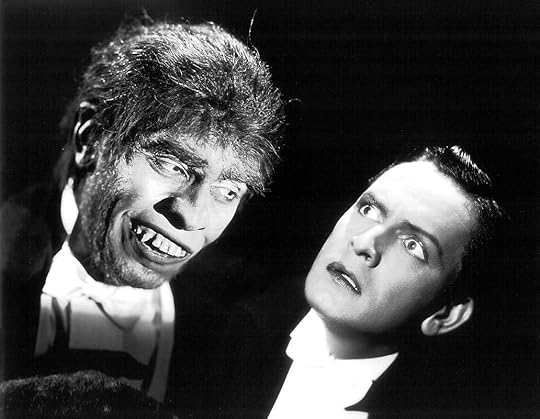 Considered to be the best film adaptation of Robert Louis Stevenson’s classic novel by the same name, Dr. Jekyll and Mr. Hyde is one of the most sophisticated and frightening films in 1930s cinema. It explicitly explores sexuality and repression in ways that most films of that era merely hinted at or disguised in allegory. When London physician, Dr. Henry Jekyll – who is impatient to marry his fiancée, Muriel – gets rejected by Muriel's father for an early wedding, the tormented Jekyll heads to his laboratory, where he has been developing a potion to separate the benevolent from the malevolent sides of human nature. After he drinks the concoction, the doctor’s evil impulses are unleashed as he is transformed into the monstrous Mr. Hyde. Using extended point-of-view shots, we are forced to experience the world through the eyes of Dr. Jekyll. The film begins exclusively from this unique perspective, so much in fact that the first time we actually see the good doctor is through a mirror. We see a young patient looking at him, and thereby us, with admiration and almost religious awe. The viewers, essentially, become Dr. Jekyll, making us sympathize with him. More significantly, it also prepares viewers for the breathtaking transformation scenes.
Considered to be the best film adaptation of Robert Louis Stevenson’s classic novel by the same name, Dr. Jekyll and Mr. Hyde is one of the most sophisticated and frightening films in 1930s cinema. It explicitly explores sexuality and repression in ways that most films of that era merely hinted at or disguised in allegory. When London physician, Dr. Henry Jekyll – who is impatient to marry his fiancée, Muriel – gets rejected by Muriel's father for an early wedding, the tormented Jekyll heads to his laboratory, where he has been developing a potion to separate the benevolent from the malevolent sides of human nature. After he drinks the concoction, the doctor’s evil impulses are unleashed as he is transformed into the monstrous Mr. Hyde. Using extended point-of-view shots, we are forced to experience the world through the eyes of Dr. Jekyll. The film begins exclusively from this unique perspective, so much in fact that the first time we actually see the good doctor is through a mirror. We see a young patient looking at him, and thereby us, with admiration and almost religious awe. The viewers, essentially, become Dr. Jekyll, making us sympathize with him. More significantly, it also prepares viewers for the breathtaking transformation scenes.
5. Dracula (1931)
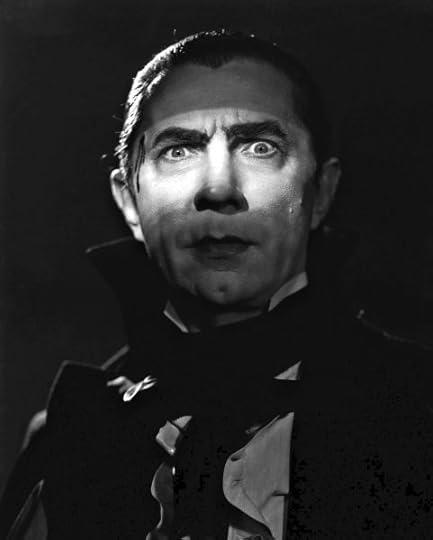 Considered the first in the cycle of Universal Studios classic monsters, the movie Dracula starred famed actor Bela Lugosi and was noted as being the first horror movie with sound. Plus, it was thanks to this movie that helped create the American supernatural cinema. The movie is an atmospheric, haunting film that offered one of the most imitable performances in the history of cinema. The electric tension between the elegant Dracula and the vampire hunter Professor Van Helsing is chilling. And it's hard to forget such moments as the lustful gleam in the eyes of Mina Harker as she succumbs to the will of Dracula, or the omnipresent insane giggle of the fly-eating Renfield. Despite the static nature of the final scenes, Dracula is a classic among horror films, with Bela Lugosi giving the performance of a lifetime as the erudite Count.
Considered the first in the cycle of Universal Studios classic monsters, the movie Dracula starred famed actor Bela Lugosi and was noted as being the first horror movie with sound. Plus, it was thanks to this movie that helped create the American supernatural cinema. The movie is an atmospheric, haunting film that offered one of the most imitable performances in the history of cinema. The electric tension between the elegant Dracula and the vampire hunter Professor Van Helsing is chilling. And it's hard to forget such moments as the lustful gleam in the eyes of Mina Harker as she succumbs to the will of Dracula, or the omnipresent insane giggle of the fly-eating Renfield. Despite the static nature of the final scenes, Dracula is a classic among horror films, with Bela Lugosi giving the performance of a lifetime as the erudite Count.
6. Frankenstein (1931)
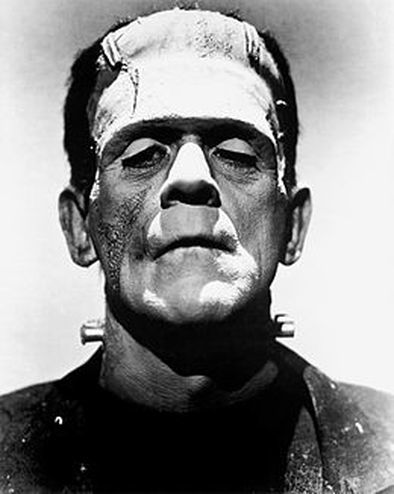 Loosely based on the novel of the same name by Mary Shelley, Frankenstein is a film about a mad, obsessed scientist, Dr. Henry Frankenstein, who creates a monster, by taking body parts from dead people. Upon placing a brain inside the head of the monster, Henry and his assistant Fritz are amazed that the experiment is alive. When the monster mistakenly kills Maria, a young girl he meets down by the river, the town is up in arms and aims to bring the monster to justice. Thanks to Jack Pierce – the makeup artist at Universal Studios – he was able to a create a grotesque, other-worldly makeup design for the Monster that proved to be instantly iconic, creating a brand image for the character that’s still widely recognizable almost a century later.
Loosely based on the novel of the same name by Mary Shelley, Frankenstein is a film about a mad, obsessed scientist, Dr. Henry Frankenstein, who creates a monster, by taking body parts from dead people. Upon placing a brain inside the head of the monster, Henry and his assistant Fritz are amazed that the experiment is alive. When the monster mistakenly kills Maria, a young girl he meets down by the river, the town is up in arms and aims to bring the monster to justice. Thanks to Jack Pierce – the makeup artist at Universal Studios – he was able to a create a grotesque, other-worldly makeup design for the Monster that proved to be instantly iconic, creating a brand image for the character that’s still widely recognizable almost a century later.
7. Freaks (1932) A carnival barker tells his audience the story behind the sideshow attraction they have come to see: Once a beautiful trapeze artist, Cleopatra weds sideshow midget Hans to get her hands on his inheritance. She and her lover, the strong man Hercules, plot to poison Hans. But when the other sideshow attractions realize their plan, they take revenge. Todd Browning's film is a masterpiece of audience manipulation, years ahead of itself in presenting characters who are both sympathetic and terrifying. Early scenes showing the performers going about their lives create a tremendous empathy that gradually overpowers any revulsion audiences feel toward their physical conditions. There are even moments of gentle, very human humor. In some cases, the performers are presented as innocents functioning perfectly within a world they have built for themselves. Yet the final revenge scenes twist those feelings, displaying the monstrous behavior of which they are capable in response to a threat from someone outside their group. It's a searing portrait of the humanity within all of us at its best and its worst.
A carnival barker tells his audience the story behind the sideshow attraction they have come to see: Once a beautiful trapeze artist, Cleopatra weds sideshow midget Hans to get her hands on his inheritance. She and her lover, the strong man Hercules, plot to poison Hans. But when the other sideshow attractions realize their plan, they take revenge. Todd Browning's film is a masterpiece of audience manipulation, years ahead of itself in presenting characters who are both sympathetic and terrifying. Early scenes showing the performers going about their lives create a tremendous empathy that gradually overpowers any revulsion audiences feel toward their physical conditions. There are even moments of gentle, very human humor. In some cases, the performers are presented as innocents functioning perfectly within a world they have built for themselves. Yet the final revenge scenes twist those feelings, displaying the monstrous behavior of which they are capable in response to a threat from someone outside their group. It's a searing portrait of the humanity within all of us at its best and its worst.
8. The Mummy (1932) When Howard Carter uncovered Tutankhamun’s long-buried tomb in Egypt’s Valley of the Kings in November 1922, he sparked a global press frenzy and triggered a new craze — Egyptology (or, “Tutmania”). But when rumors began to swirl around the sudden, unexplained deaths of key individuals involved with Carter’s expedition, the concept of the famed theory that it was caused by the "Curse of the Mummy’s Tomb" rapidly became part of the zeitgeist. The 1932 movie, The Mummy taps into the horror centered around Tutmania that may people feared. The main action takes place in Cairo, and revolves around a mummy who is brought to life by the accidental reading of a spell. He then hunts down the reincarnation of his lost love. This movie sealed Universal Studio’s fate, as helming the horror genre and successfully executing the monster movie drama for its viewers.
When Howard Carter uncovered Tutankhamun’s long-buried tomb in Egypt’s Valley of the Kings in November 1922, he sparked a global press frenzy and triggered a new craze — Egyptology (or, “Tutmania”). But when rumors began to swirl around the sudden, unexplained deaths of key individuals involved with Carter’s expedition, the concept of the famed theory that it was caused by the "Curse of the Mummy’s Tomb" rapidly became part of the zeitgeist. The 1932 movie, The Mummy taps into the horror centered around Tutmania that may people feared. The main action takes place in Cairo, and revolves around a mummy who is brought to life by the accidental reading of a spell. He then hunts down the reincarnation of his lost love. This movie sealed Universal Studio’s fate, as helming the horror genre and successfully executing the monster movie drama for its viewers.
9. The Invisible Man (1933) The film opens with a mysterious stranger, his face swathed in bandages and his eyes obscured by dark spectacles, taking a room at an inn at the English village of Iping, in Sussex. Never leaving his quarters, the stranger demands that the staff leave him completely alone. However, his dark secret is slowly revealed to his suspicious landlady and the villagers: he is an invisible man. When the innkeeper and his semi-hysterical wife tell him to leave after he makes a huge mess in the parlor and drives away the other patrons, he tears off the bandages, laughing maniacally, and throws the innkeeper down the stairs. He takes off the rest of his clothes, rendering himself completely invisible, and tries to strangle a police officer. Among the many vintage horror films released by Universal Studios in the 1930’s, The Invisible Man still packs a punch today. It is a shining example of fantastic thrills with quotable dialogue and unexpected humor and shocks, all delivered with great mood and economy.
The film opens with a mysterious stranger, his face swathed in bandages and his eyes obscured by dark spectacles, taking a room at an inn at the English village of Iping, in Sussex. Never leaving his quarters, the stranger demands that the staff leave him completely alone. However, his dark secret is slowly revealed to his suspicious landlady and the villagers: he is an invisible man. When the innkeeper and his semi-hysterical wife tell him to leave after he makes a huge mess in the parlor and drives away the other patrons, he tears off the bandages, laughing maniacally, and throws the innkeeper down the stairs. He takes off the rest of his clothes, rendering himself completely invisible, and tries to strangle a police officer. Among the many vintage horror films released by Universal Studios in the 1930’s, The Invisible Man still packs a punch today. It is a shining example of fantastic thrills with quotable dialogue and unexpected humor and shocks, all delivered with great mood and economy.
10. Bride of Frankenstein (1935)
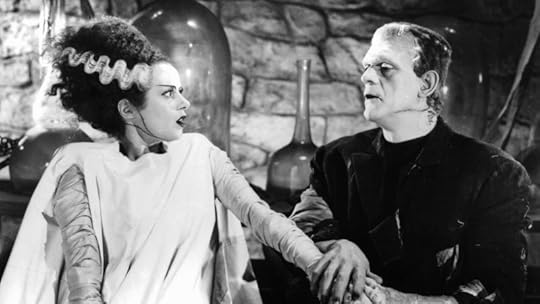 In 1931, when James Whale's Frankenstein was breaking all kinds of box office records and establishing Universal Studios as a major force, the rules weren't so clearly laid out. And, as Whale was clearly on a roll following his hit with The Invisible Man, the studio pretty allowed him creative license to put together a sequel for one of his movies. And thus, Bride of Frankenstein was born. The macabre, satirical film is generally considered one of the greatest horror sequels of all time - a spectacular, bizarre, high-camp, excessive, humorous, farcical and surrealistic film. The film opens with Mary Shelley saying, to a recumbent Lord Byron and her husband, that she's not quite done with the whole monster deal after all—there's more to tell. What the audience wouldn't or couldn't have anticipated was Elsa Lanchester in her vertical hairdo, complete with bleached lightning bolts. Whale definitely gave audiences what they wanted in Bride of Frankenstein, even if they didn't know it themselves.
In 1931, when James Whale's Frankenstein was breaking all kinds of box office records and establishing Universal Studios as a major force, the rules weren't so clearly laid out. And, as Whale was clearly on a roll following his hit with The Invisible Man, the studio pretty allowed him creative license to put together a sequel for one of his movies. And thus, Bride of Frankenstein was born. The macabre, satirical film is generally considered one of the greatest horror sequels of all time - a spectacular, bizarre, high-camp, excessive, humorous, farcical and surrealistic film. The film opens with Mary Shelley saying, to a recumbent Lord Byron and her husband, that she's not quite done with the whole monster deal after all—there's more to tell. What the audience wouldn't or couldn't have anticipated was Elsa Lanchester in her vertical hairdo, complete with bleached lightning bolts. Whale definitely gave audiences what they wanted in Bride of Frankenstein, even if they didn't know it themselves.
11. Son of Frankenstein (1939)
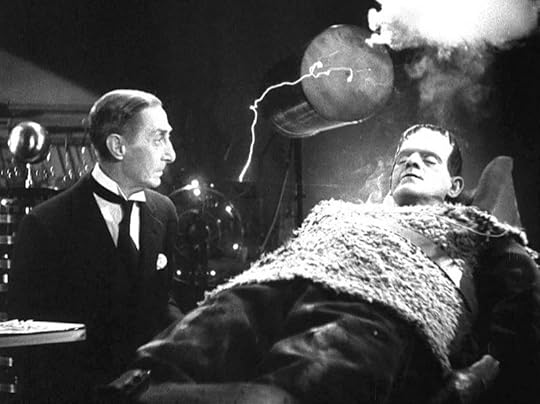 After the 1931 successes of both Frankenstein and Dracula, the studio stumbled a bit with their horror film output over the next few years. Son of Frankenstein was the last to feature Boris Karloff as The Monster, and also included Bela Lugosi as Ygor, alongside Basil Rathbone as the title character, Baron Wolf von Frankenstein. The plot centers around Wolf Von Frankenstein, returning to his ancestral home with his wife Elsa and their young son Peter. However, they are greeted on arrival with a suspicious crowd at the train station. Wolf is the son of Victor Frankenstein, who created the monster in the previous 1931 James Whale film. Wolf soon meets Ygor, who has survived the villagers' attempt to hang him despite having a broken neck. Ygor brings Wolf to a family crypt, where he reveals the comatose monster laying near the tombs of his father and grandfather. Ygor demands Wolf revive the monster. Wolf examines the monster's body decides that the extreme abnormalities causing the monster to be nearly immortal warrants scientific investigation. Once the monster is revived, Ygor uses a flute type instrument to control him, committing multiple murders. While the third film in a series sometimes isn’t on par with its predecessors, Son of Frankenstein remains one of the most solidly entertaining movies in the Universal horror canon.
After the 1931 successes of both Frankenstein and Dracula, the studio stumbled a bit with their horror film output over the next few years. Son of Frankenstein was the last to feature Boris Karloff as The Monster, and also included Bela Lugosi as Ygor, alongside Basil Rathbone as the title character, Baron Wolf von Frankenstein. The plot centers around Wolf Von Frankenstein, returning to his ancestral home with his wife Elsa and their young son Peter. However, they are greeted on arrival with a suspicious crowd at the train station. Wolf is the son of Victor Frankenstein, who created the monster in the previous 1931 James Whale film. Wolf soon meets Ygor, who has survived the villagers' attempt to hang him despite having a broken neck. Ygor brings Wolf to a family crypt, where he reveals the comatose monster laying near the tombs of his father and grandfather. Ygor demands Wolf revive the monster. Wolf examines the monster's body decides that the extreme abnormalities causing the monster to be nearly immortal warrants scientific investigation. Once the monster is revived, Ygor uses a flute type instrument to control him, committing multiple murders. While the third film in a series sometimes isn’t on par with its predecessors, Son of Frankenstein remains one of the most solidly entertaining movies in the Universal horror canon.
12. The Wolf Man (1940)
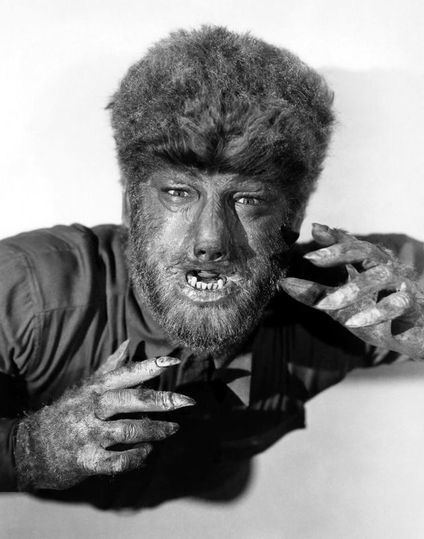 Although there is a well established werewolf mythology extending back to the ancient world, there was no single established story (as with Dracula and the vampire myth) ripe for easy adaptation. The Wolf Man is a mishmash of several wolf legends, with added ingredients. Putting together, pentagrams, silver bullets and the full moon to create a robust myth to establish a new set of cinematic rules which Hollywood lycanthropes would adhere to for decades. When Larry Talbot attempts to rescue Jenny Williams from a nocturnal attack by a wolf, he winds up injured. However, by Jenny’s side isn’t the body of a wolf, but that of man. Now bitten, Talbot is cursed to suffer the torments of the beast whenever the moon is full. Arguably the best of the "original" Universal horrors, The Wolf Man boasts one of the most stellar casts ever to grace a "B” picture.
Although there is a well established werewolf mythology extending back to the ancient world, there was no single established story (as with Dracula and the vampire myth) ripe for easy adaptation. The Wolf Man is a mishmash of several wolf legends, with added ingredients. Putting together, pentagrams, silver bullets and the full moon to create a robust myth to establish a new set of cinematic rules which Hollywood lycanthropes would adhere to for decades. When Larry Talbot attempts to rescue Jenny Williams from a nocturnal attack by a wolf, he winds up injured. However, by Jenny’s side isn’t the body of a wolf, but that of man. Now bitten, Talbot is cursed to suffer the torments of the beast whenever the moon is full. Arguably the best of the "original" Universal horrors, The Wolf Man boasts one of the most stellar casts ever to grace a "B” picture.
13. The Creature of the Black Lagoon (1954)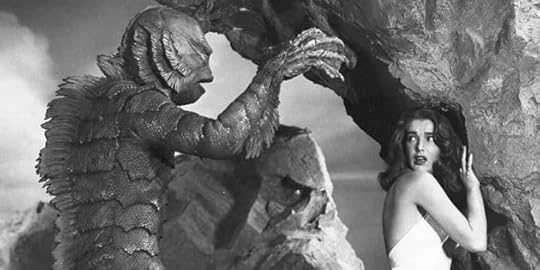 Unfortunately, the poor Creature from the Black Lagoon was never able to shuffle his way into the expanded universe shared by Dracula, The Wolf Man, Frankenstein’s Monster, and, if briefly, The Invisible Man. Nevertheless, because of Universal Studios’ success with Dracula, Frankenstein, The Mummy, The Wolfman (and their numerous sequels), the original Universal monsters had been overexposed and just didn’t have the scare appeal they had had a decade earlier. So Universal rose to the occasion and produced some of the best Sci-fi/ Horror films of the period, and thus entered The Creature of the Black Lagoon. The story involves the members of a fossil-hunting expedition down a dark tributary of the mist-shrouded Amazon, where they enter the domain of a prehistoric, amphibious "Gill Man” – possibly the last of a species of fanged, clawed humanoids who may have evolved entirely underwater. Tranquilized, captured, and brought aboard, the creature still manages to revive and escape – slaughtering several members of the team -- and abducts their sole female member, spiriting her off to his mist-shrouded lair. Director Jack Arnold makes excellent use of the tropical location, employing heavy mists and eerie jungle noises to create an atmosphere of nearly constant menace. The film's most effective element is certainly the monster itself, with his pulsating gills and fearsome webbed talons.
Unfortunately, the poor Creature from the Black Lagoon was never able to shuffle his way into the expanded universe shared by Dracula, The Wolf Man, Frankenstein’s Monster, and, if briefly, The Invisible Man. Nevertheless, because of Universal Studios’ success with Dracula, Frankenstein, The Mummy, The Wolfman (and their numerous sequels), the original Universal monsters had been overexposed and just didn’t have the scare appeal they had had a decade earlier. So Universal rose to the occasion and produced some of the best Sci-fi/ Horror films of the period, and thus entered The Creature of the Black Lagoon. The story involves the members of a fossil-hunting expedition down a dark tributary of the mist-shrouded Amazon, where they enter the domain of a prehistoric, amphibious "Gill Man” – possibly the last of a species of fanged, clawed humanoids who may have evolved entirely underwater. Tranquilized, captured, and brought aboard, the creature still manages to revive and escape – slaughtering several members of the team -- and abducts their sole female member, spiriting her off to his mist-shrouded lair. Director Jack Arnold makes excellent use of the tropical location, employing heavy mists and eerie jungle noises to create an atmosphere of nearly constant menace. The film's most effective element is certainly the monster itself, with his pulsating gills and fearsome webbed talons.
14. Invasion of the Body Snatchers (1956)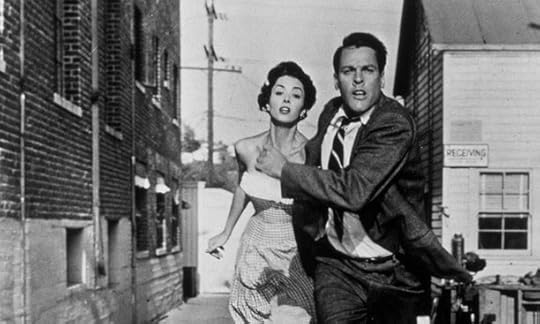 The film begins with doctor Miles Bennell returning to his small Californian town after attending a medical convention, and noticing that a lot of the townspeople have “changed” in some way while he was gone. After resuming a relationship with his one-time fiancée Becky Driscoll he learns that she too is aware of something wrong in the town. Later, during a visit to friends Jack and Theodora Belicec, a seedpod-shaped object is found growing in the Belicec’s greenhouse. When it opens it reveals a half-formed human figure in the exact likeness of Jack himself. Eventually it is found that there are many of these pods around town and that they represent an alien invasion of Earth. The pods adopt the appearance of people, then replace or incorporate them while the victims are asleep. In an era characterized by the Red Scare, this film was part of the sweeping mass hysteria of McCarthyism in the 1950s. Suffice to say, that it left an unsettling impression amongst viewers at the time of its release.
The film begins with doctor Miles Bennell returning to his small Californian town after attending a medical convention, and noticing that a lot of the townspeople have “changed” in some way while he was gone. After resuming a relationship with his one-time fiancée Becky Driscoll he learns that she too is aware of something wrong in the town. Later, during a visit to friends Jack and Theodora Belicec, a seedpod-shaped object is found growing in the Belicec’s greenhouse. When it opens it reveals a half-formed human figure in the exact likeness of Jack himself. Eventually it is found that there are many of these pods around town and that they represent an alien invasion of Earth. The pods adopt the appearance of people, then replace or incorporate them while the victims are asleep. In an era characterized by the Red Scare, this film was part of the sweeping mass hysteria of McCarthyism in the 1950s. Suffice to say, that it left an unsettling impression amongst viewers at the time of its release.
15. Eyes Without A Face (1960)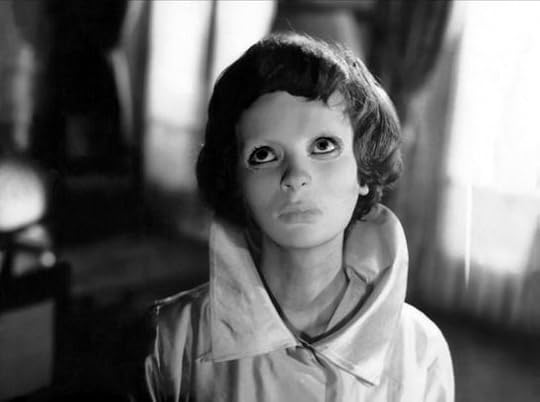 French director Georges Franju's Eyes Without a Face isn't just cinema's most shocking mad doctor flick of all time, it's also one of cinema's most overlooked horror gems. In it, Doctor Genessier lures innocent young women to his mansion in an effort to cut off the current victim's face and fasten it onto that of his daughter, who suffered face-ruining burns from a car accident. Without a new, scar-free face, the doctor’s daughter, Christiane, wears an all-white, featureless mask that makes her look like a bloodless walking corpse, a lasting image that gives Eyes Without a Face a haunting quality that's tough to shake. And one scene in particular, a grisly and methodical face-removal sequence uncommon for its time, is one of horror's great try-not-to-look-away moments. The film is done in a sober, muted style, with stark black and whites and the bizarre camera angles much loved by film noir.
French director Georges Franju's Eyes Without a Face isn't just cinema's most shocking mad doctor flick of all time, it's also one of cinema's most overlooked horror gems. In it, Doctor Genessier lures innocent young women to his mansion in an effort to cut off the current victim's face and fasten it onto that of his daughter, who suffered face-ruining burns from a car accident. Without a new, scar-free face, the doctor’s daughter, Christiane, wears an all-white, featureless mask that makes her look like a bloodless walking corpse, a lasting image that gives Eyes Without a Face a haunting quality that's tough to shake. And one scene in particular, a grisly and methodical face-removal sequence uncommon for its time, is one of horror's great try-not-to-look-away moments. The film is done in a sober, muted style, with stark black and whites and the bizarre camera angles much loved by film noir.
16. Psycho (1960)
 It’s safe to say that no movie has ever had the same sheer bloody, jaw-dropping terror, than Alfred Hitchcock’s game-changing masterpiece, Psycho. Here, Hitchcock breaks every single rule of horror cinema, and reshapes the film in his own image. In Psycho, murder makes no sense at all. In the famous shower scene, not only was Hitchcock signing Marion Crane’s death certificate, but also slicing through years of audience expectation that the hero or heroine of a fictional work would be shielded and protected. But when it comes to Hitchcock, horror and suspense, everything is left up in the air. Exhausted after leaving Phoenix with $40,000 in cash to start a new life for herself, Marion Crane decides to stop for the night at the Bates Motel, where nervous but personable innkeeper Norman Bates cheerfully mentions that she's the first guest in weeks, before he regales her with curious stories about his mother. There's hardly a film fan alive who doesn't know what happens next, but while the shower scene is justifiably the film's most famous sequence, there are dozens of memorable bits throughout this film.
It’s safe to say that no movie has ever had the same sheer bloody, jaw-dropping terror, than Alfred Hitchcock’s game-changing masterpiece, Psycho. Here, Hitchcock breaks every single rule of horror cinema, and reshapes the film in his own image. In Psycho, murder makes no sense at all. In the famous shower scene, not only was Hitchcock signing Marion Crane’s death certificate, but also slicing through years of audience expectation that the hero or heroine of a fictional work would be shielded and protected. But when it comes to Hitchcock, horror and suspense, everything is left up in the air. Exhausted after leaving Phoenix with $40,000 in cash to start a new life for herself, Marion Crane decides to stop for the night at the Bates Motel, where nervous but personable innkeeper Norman Bates cheerfully mentions that she's the first guest in weeks, before he regales her with curious stories about his mother. There's hardly a film fan alive who doesn't know what happens next, but while the shower scene is justifiably the film's most famous sequence, there are dozens of memorable bits throughout this film.
17. The Innocents (1961)
 Adapted from Henry James's novella, The Turn of the Screw, The Innocents is a story about possession. When Miss Giddens, is hired as a governess to look after little Flora and Miles by their uncle, the two children initially seem sweet and fun. But – as is the way with creepy horror-film kids – they soon turn demonic and troubled. The first intimation of this arrives when it transpires that Miles has been expelled from school; this is compounded by the children's odd behavior, apparent secrets and reports of strange visions. Miss Giddens eventually connects all this to two previous employees of the house, both dead: governess Miss Jessel, and valet Peter Quint, who were locked in an abusive relationship.So now the question is: Are Jessel and Quint using the children as vehicles to continue it from beyond the grave? This film has a great spooky atmosphere, infusing the drama with a certain sense of the weird and supernatural. Even the camera shots of the apparitions (or "ghosts") in the open air and broad daylight have a startling and chilling quality.
Adapted from Henry James's novella, The Turn of the Screw, The Innocents is a story about possession. When Miss Giddens, is hired as a governess to look after little Flora and Miles by their uncle, the two children initially seem sweet and fun. But – as is the way with creepy horror-film kids – they soon turn demonic and troubled. The first intimation of this arrives when it transpires that Miles has been expelled from school; this is compounded by the children's odd behavior, apparent secrets and reports of strange visions. Miss Giddens eventually connects all this to two previous employees of the house, both dead: governess Miss Jessel, and valet Peter Quint, who were locked in an abusive relationship.So now the question is: Are Jessel and Quint using the children as vehicles to continue it from beyond the grave? This film has a great spooky atmosphere, infusing the drama with a certain sense of the weird and supernatural. Even the camera shots of the apparitions (or "ghosts") in the open air and broad daylight have a startling and chilling quality.
18. Carnival of Souls (1962)
 When a young woman survives a drag race accident, she agrees to take a job as a church organist in Salt Lake City. En route, she is haunted by a bizarre apparition that compels her toward an abandoned lakeside pavilion. The film as a whole is a strange, atmospheric and unforgettable low-budget horror film. Yet, the movie continues to exert a strange fascination for many viewers. Even though it’s not a conventional horror or ghost story, Carnival of Souls raises a number of perplexing questions that relate to our own existence here on earth. You can thank the cinematography, which provides an unsettling surreal and otherworldly feeling for viewers alike – one-part dream like, one part, nightmare.
When a young woman survives a drag race accident, she agrees to take a job as a church organist in Salt Lake City. En route, she is haunted by a bizarre apparition that compels her toward an abandoned lakeside pavilion. The film as a whole is a strange, atmospheric and unforgettable low-budget horror film. Yet, the movie continues to exert a strange fascination for many viewers. Even though it’s not a conventional horror or ghost story, Carnival of Souls raises a number of perplexing questions that relate to our own existence here on earth. You can thank the cinematography, which provides an unsettling surreal and otherworldly feeling for viewers alike – one-part dream like, one part, nightmare.
19. The Birds (1963)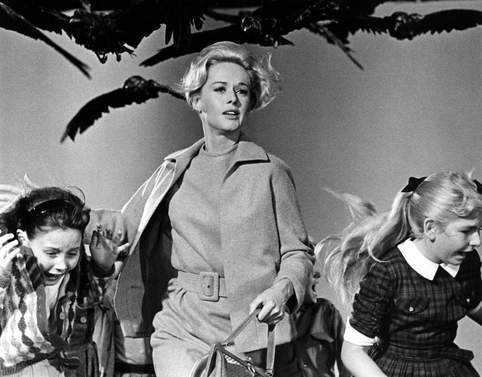 The master of suspense reigns supreme once more. The story begins after wealthy Melanie Daniels purchases some lovebirds in a pet shop in San Francisco, only for her to notice the curious behavior of the birds in the Northern California area. At first, it's no more than a sea gull swooping down and pecking at Melanie's head. But things take a truly ugly turn when hundreds of birds converge on a children's party. There is never an explanation as to why the birds have run amok, but once the onslaught begins, there's virtually no letup. Only three years after shaking and reshaping the rules of horror cinema with Psycho, Hitchcock gave us the equally entertaining and sub-textually subversive avian thriller, The Birds. Each scene is better than the next until the ultimate crescendo when poor Melanie Daniels is getting picked and pecked to near death. To this day, that scene ranks as one of the most horrifying sequences in cinematic history.
The master of suspense reigns supreme once more. The story begins after wealthy Melanie Daniels purchases some lovebirds in a pet shop in San Francisco, only for her to notice the curious behavior of the birds in the Northern California area. At first, it's no more than a sea gull swooping down and pecking at Melanie's head. But things take a truly ugly turn when hundreds of birds converge on a children's party. There is never an explanation as to why the birds have run amok, but once the onslaught begins, there's virtually no letup. Only three years after shaking and reshaping the rules of horror cinema with Psycho, Hitchcock gave us the equally entertaining and sub-textually subversive avian thriller, The Birds. Each scene is better than the next until the ultimate crescendo when poor Melanie Daniels is getting picked and pecked to near death. To this day, that scene ranks as one of the most horrifying sequences in cinematic history.
20. The Haunting (1963)
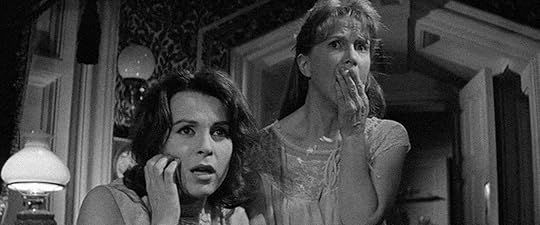 Though at first it might seem like a cliche-filled premise of a spooky house, but not everything is exactly as it seems. The Haunting is essentially the story of Eleanor Lance – a lonely middle-aged woman being slowly devoured by her groaning, undulating surroundings. Although it's technically a ghost story, ghosts aren't what will spook you within this movie. The fear, instead, can be found amongst the details of the film. The suspense is amped up, with creeping psychological terrors rather than gore that would later define horror films in years to come.
Though at first it might seem like a cliche-filled premise of a spooky house, but not everything is exactly as it seems. The Haunting is essentially the story of Eleanor Lance – a lonely middle-aged woman being slowly devoured by her groaning, undulating surroundings. Although it's technically a ghost story, ghosts aren't what will spook you within this movie. The fear, instead, can be found amongst the details of the film. The suspense is amped up, with creeping psychological terrors rather than gore that would later define horror films in years to come.
21. Rosemary’s Baby (1968)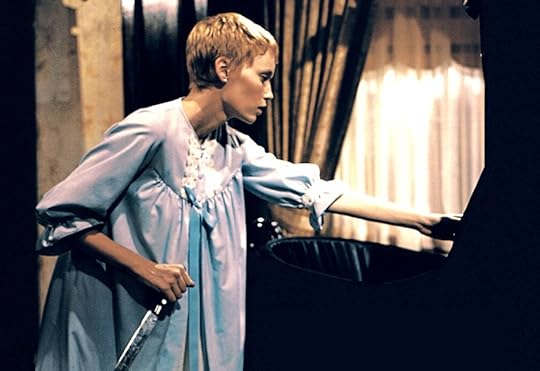 Roman Polanski's first American Hollywood feature was an adaptation of Ira Levin's bestseller, and its success launched a trend for devil-baby, evil-kiddy and satanic pregnancy movies that extended well into the 70s. When a young wife, Rosemary Woodhouse and her struggling actor husband, Guy, move into the Bramford, neighbors Roman and Minnie Castevet soon come nosing around to welcome the Woodhouses to the building. Despite Rosemary's reservations about their eccentricity and the weird noises that she keeps hearing, Guy starts spending time with the Castevets. Shortly after Guy lands a plum Broadway role, Rosemary becomes pregnant and the Castevets take a special interest in her welfare. As the sickened Rosemary becomes increasingly isolated, she begins to suspect that the Castevets' circle is not what it seems. The best thing about this movie, is that Polanski builds the terror by degrees. Like the frog in the slowly boiling pot of water, you don't know it's too late until you're already doomed. For every city-dweller who's ever wondered about his or her neighbors, there's something terrifying waiting in Rosemary's Baby.
Roman Polanski's first American Hollywood feature was an adaptation of Ira Levin's bestseller, and its success launched a trend for devil-baby, evil-kiddy and satanic pregnancy movies that extended well into the 70s. When a young wife, Rosemary Woodhouse and her struggling actor husband, Guy, move into the Bramford, neighbors Roman and Minnie Castevet soon come nosing around to welcome the Woodhouses to the building. Despite Rosemary's reservations about their eccentricity and the weird noises that she keeps hearing, Guy starts spending time with the Castevets. Shortly after Guy lands a plum Broadway role, Rosemary becomes pregnant and the Castevets take a special interest in her welfare. As the sickened Rosemary becomes increasingly isolated, she begins to suspect that the Castevets' circle is not what it seems. The best thing about this movie, is that Polanski builds the terror by degrees. Like the frog in the slowly boiling pot of water, you don't know it's too late until you're already doomed. For every city-dweller who's ever wondered about his or her neighbors, there's something terrifying waiting in Rosemary's Baby.
22. Night of the Living Dead (1968)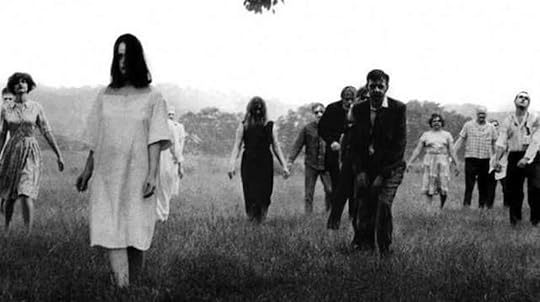 Well, just as Johnny said they would, they definitely got Barbara. In George A. Romero's horror classic, Night of the Living Dead the story concerns a group of people trapped in a remote farmhouse surrounded by cannibalistic undead ghouls. The film effectively invented the modern zombie movie, inspiring countless imitations and five Romero-directed sequels. While the movie – when watched – instantly makes you feel claustrophobic, it also ushers in a sense of originality.
Well, just as Johnny said they would, they definitely got Barbara. In George A. Romero's horror classic, Night of the Living Dead the story concerns a group of people trapped in a remote farmhouse surrounded by cannibalistic undead ghouls. The film effectively invented the modern zombie movie, inspiring countless imitations and five Romero-directed sequels. While the movie – when watched – instantly makes you feel claustrophobic, it also ushers in a sense of originality.
23. The Wicker Man (1973)
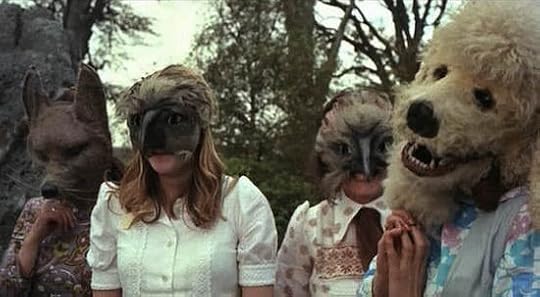 When a righteous police officer investigates the disappearance of a young girl, he comes into conflict with the unusual residents of a secluded Scottish isle. Brought to the island of Summerisle by an anonymous letter, the constable is surprised to discover that the island's population suspiciously denies the missing girl's very existence. Even more shocking, the island is ruled by a libertarian society organized around pagan rituals. The officer's unease intensifies as he continues his investigation, slowly coming to fear that the girl's disappearance may be linked in a particularly horrifying manner to an upcoming public festival. Built upon a foundation of both mystery and horror, the climax at the end of The Wicker Man is indeed a masterstroke of horror.
When a righteous police officer investigates the disappearance of a young girl, he comes into conflict with the unusual residents of a secluded Scottish isle. Brought to the island of Summerisle by an anonymous letter, the constable is surprised to discover that the island's population suspiciously denies the missing girl's very existence. Even more shocking, the island is ruled by a libertarian society organized around pagan rituals. The officer's unease intensifies as he continues his investigation, slowly coming to fear that the girl's disappearance may be linked in a particularly horrifying manner to an upcoming public festival. Built upon a foundation of both mystery and horror, the climax at the end of The Wicker Man is indeed a masterstroke of horror.
24. Don’t Look Now (1973)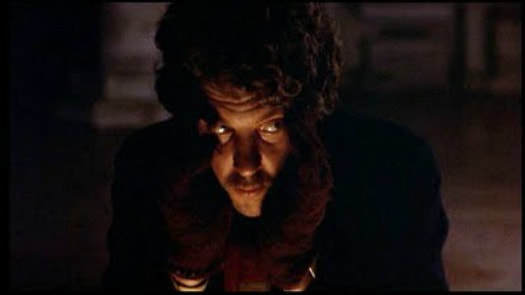 The singularly haunting Don’t Look Now tells the story of a pair of bereaved parents whose mourning process tilts out of proportion. When the grieving couple, John and Laura Baxter, go on a business trip to Venice after the sudden death of their child, their turmoil increases after meeting with two sisters at a restaurant. One of the sisters claims to be a psychic and says that she foresees their child talking to them from beyond the grave. The two then begin to see strange images throughout the twisty streets of Venice. Don’t Look Now emphasizes the tortured state of its characters. There are many flashbacks and flash-forwards, along with nightmarish inter-cut sequences. The film consistently asks its viewers to double-check their reality, and forces them to recognize the horror through the eyes of grief-addled characters.
The singularly haunting Don’t Look Now tells the story of a pair of bereaved parents whose mourning process tilts out of proportion. When the grieving couple, John and Laura Baxter, go on a business trip to Venice after the sudden death of their child, their turmoil increases after meeting with two sisters at a restaurant. One of the sisters claims to be a psychic and says that she foresees their child talking to them from beyond the grave. The two then begin to see strange images throughout the twisty streets of Venice. Don’t Look Now emphasizes the tortured state of its characters. There are many flashbacks and flash-forwards, along with nightmarish inter-cut sequences. The film consistently asks its viewers to double-check their reality, and forces them to recognize the horror through the eyes of grief-addled characters.
25. The Exorcist (1973)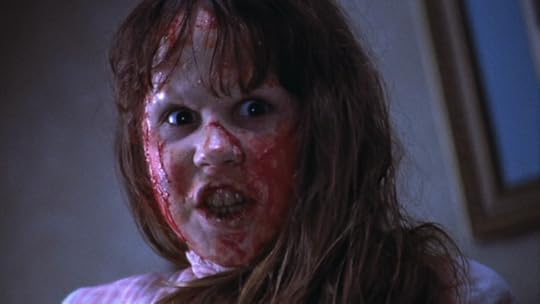 Rarely do movies affect us so deeply, but it’s another thing when they scare the living daylights out of us. The Exorcist is probably the scariest movie ever to be brought to the screen. Upon its initial release in 1973, the film caused quite a scathing response. Reports of fainting, heart attacks, miscarriages, and no end of vomiting was fulled by the hysteria of this movie. Some viewers were submitted to psychiatric care after their screenings, while deaths or suicides near to a screening of the film were attributed to its unholy influence over the viewer. Murderers blamed the film for taking them over, and West Germany propelled the hysteria further when they banned the picture from cinemas. All in all, as scary as this movie is, it’s a horror masterpiece. When sweet young Regan MacNeil suddenly takes ill, her sickness progresses to the point where her mother, Chris becomes convinced that her daughter has been possessed by evil spirits. Perhaps the fact that daughter Regan does the backwards spider walk down the stairs was her first clue. The film assaults the viewer’s senses and faith, leaving the audience subject to devilish, claustrophobic torment. All the worse, it will make you believe that possession could happen to anyone at anytime.
Rarely do movies affect us so deeply, but it’s another thing when they scare the living daylights out of us. The Exorcist is probably the scariest movie ever to be brought to the screen. Upon its initial release in 1973, the film caused quite a scathing response. Reports of fainting, heart attacks, miscarriages, and no end of vomiting was fulled by the hysteria of this movie. Some viewers were submitted to psychiatric care after their screenings, while deaths or suicides near to a screening of the film were attributed to its unholy influence over the viewer. Murderers blamed the film for taking them over, and West Germany propelled the hysteria further when they banned the picture from cinemas. All in all, as scary as this movie is, it’s a horror masterpiece. When sweet young Regan MacNeil suddenly takes ill, her sickness progresses to the point where her mother, Chris becomes convinced that her daughter has been possessed by evil spirits. Perhaps the fact that daughter Regan does the backwards spider walk down the stairs was her first clue. The film assaults the viewer’s senses and faith, leaving the audience subject to devilish, claustrophobic torment. All the worse, it will make you believe that possession could happen to anyone at anytime.
26. The Texas Chainsaw Massacre (1974)
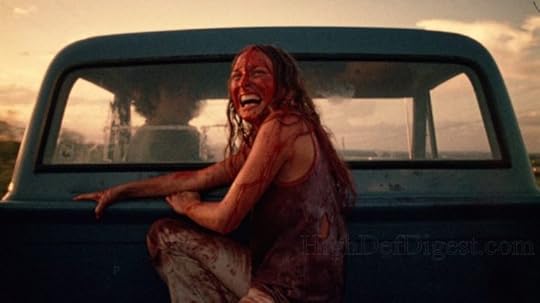 You can thank The Texas Chainsaw Massacre for being the staple for homicidal maniacs. Probably second to The Exorcist, The Texas Chainsaw Massacre is either equally or more terrifying than it’s predecessor. And that’s most likely because of the lack of gore in this film. Yup, that’s correct. What makes watching this movie so unsettling is the film’s atmosphere of unrelenting terror. That terror is so immersive that it suddenly shifts into the power of assumption, supplemented by shrewdly-chosen camera angles and movement, that make viewers think they’re seeing more violence than they actually are. In other words, the camerawork for this movie is genius. When a sister and her brother take a group of friends to visit the farmhouse of their deceased grandfather, they discover that just next door lives a whole family of repugnant psycho killers. Most noteworthy is “Leatherface," wields a chainsaw and has a taste for human flesh. And while there are some shots in the film that are hard to watch, it is hands down one of the few horror movies that has the best cinematography. Especially that final scene.
You can thank The Texas Chainsaw Massacre for being the staple for homicidal maniacs. Probably second to The Exorcist, The Texas Chainsaw Massacre is either equally or more terrifying than it’s predecessor. And that’s most likely because of the lack of gore in this film. Yup, that’s correct. What makes watching this movie so unsettling is the film’s atmosphere of unrelenting terror. That terror is so immersive that it suddenly shifts into the power of assumption, supplemented by shrewdly-chosen camera angles and movement, that make viewers think they’re seeing more violence than they actually are. In other words, the camerawork for this movie is genius. When a sister and her brother take a group of friends to visit the farmhouse of their deceased grandfather, they discover that just next door lives a whole family of repugnant psycho killers. Most noteworthy is “Leatherface," wields a chainsaw and has a taste for human flesh. And while there are some shots in the film that are hard to watch, it is hands down one of the few horror movies that has the best cinematography. Especially that final scene.
27. Jaws (1975)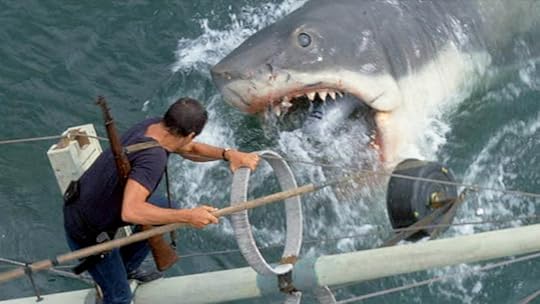 Young director Steven Spielberg took what was classic B-movie fare (big shark chews up skinny-dipping teenagers who scream a lot) and turned out a masterclass in suspense. Jaws built on the mainstream appetite for horror created by films such as The Exorcist, gave viewers a monster that was, uniquely, neither human nor supernatural nor the result of mutation. Sharks are real. They're out there, swimming around, snacking on swimmers, right now. On an early summer night, Chrissie decides to take a moonlight skinny dip while her friends party on the beach. Yanked suddenly below the ocean surface, she never returns. When pieces of her wash ashore, Police Chief Brody suspects the worst, but Mayor Vaughn, mindful of the lucrative tourist trade and the approaching July 4th holiday, refuses to put the island on a business-killing shark alert. After the shark dines on a few more victims, the Mayor orders the local fishermen to catch the culprit. But it’s while they’re out at sea when they realize that they might “need a bigger boat” to catch the deadly great white shark.
Young director Steven Spielberg took what was classic B-movie fare (big shark chews up skinny-dipping teenagers who scream a lot) and turned out a masterclass in suspense. Jaws built on the mainstream appetite for horror created by films such as The Exorcist, gave viewers a monster that was, uniquely, neither human nor supernatural nor the result of mutation. Sharks are real. They're out there, swimming around, snacking on swimmers, right now. On an early summer night, Chrissie decides to take a moonlight skinny dip while her friends party on the beach. Yanked suddenly below the ocean surface, she never returns. When pieces of her wash ashore, Police Chief Brody suspects the worst, but Mayor Vaughn, mindful of the lucrative tourist trade and the approaching July 4th holiday, refuses to put the island on a business-killing shark alert. After the shark dines on a few more victims, the Mayor orders the local fishermen to catch the culprit. But it’s while they’re out at sea when they realize that they might “need a bigger boat” to catch the deadly great white shark.
28. The Omen (1976)
 Much like Roman Polanski’s Rosemary’s Baby, The Omen also explores the possibility of a demon-child and antichrist. When American diplomat Robert Thorn learns that his infant son didn’t survive the birth, Robert can’t bear to inform his wife of the tragedy. There at the hospital, he agrees to take a different newborn child whose mother allegedly died from childbirth. The couple raise the child as their own, who they name Damien. As time elapses, the family returns to London only to encounter many strange and often disturbing events – mostly unfolded around Damien. One of which is when his nanny spontaneously commits suicide at his birthday party. When Robert is told his son is the spawn of Satan he’s initially dismissive until bodies start piling up and other strange occurrences causes Robert to ask himself, who’s child is he exactly raising? And could Damien possibly be the Antichrist after all? It’s an engaging and well-acted film. And the little boy who plays Damien, is cute and chubby with a smile that can simultaneously frighten and endear him to you.
Much like Roman Polanski’s Rosemary’s Baby, The Omen also explores the possibility of a demon-child and antichrist. When American diplomat Robert Thorn learns that his infant son didn’t survive the birth, Robert can’t bear to inform his wife of the tragedy. There at the hospital, he agrees to take a different newborn child whose mother allegedly died from childbirth. The couple raise the child as their own, who they name Damien. As time elapses, the family returns to London only to encounter many strange and often disturbing events – mostly unfolded around Damien. One of which is when his nanny spontaneously commits suicide at his birthday party. When Robert is told his son is the spawn of Satan he’s initially dismissive until bodies start piling up and other strange occurrences causes Robert to ask himself, who’s child is he exactly raising? And could Damien possibly be the Antichrist after all? It’s an engaging and well-acted film. And the little boy who plays Damien, is cute and chubby with a smile that can simultaneously frighten and endear him to you.
29. Carrie (1976) This classic horror movie based on Stephen King's first novel tells the story of Carrie White, a shy teenager who is the butt of practical jokes at her small-town high school. Her blind panic at her first menstruation – a result of ignorance and religious guilt drummed into her by her fanatical mother, Margaret – only causes her classmates' vicious cruelty to escalate. Finally, when the venomous Chris Hargenson engineers a reprehensible prank at the school prom, Carrie lashes out in a horrifying display of her heretofore minor telekinetic powers. In the beginning, Carrie makes you swoon, until you realize that at the same time you’re swooning to all of the freaking stuff that begins happening to poor Carrie White. It’s a romantic teen-dream-turned-nightmare. But what makes Carrie such an unforgettable film is that it’s a movie filled with many different things. Yes, its a high school horror movie. Yes, it’s a tale of telekinesis. And yes, it’s also a familiar Cinderella-goes-to-the-prom fairy tale story. But the movie mocks it all. And isn’t that what Carrie felt from her classmates from the get-go? But it is the ending of Carrie that is the template for every horror movie that ever went out with a final: “Fooled ya! The horror continues!"
This classic horror movie based on Stephen King's first novel tells the story of Carrie White, a shy teenager who is the butt of practical jokes at her small-town high school. Her blind panic at her first menstruation – a result of ignorance and religious guilt drummed into her by her fanatical mother, Margaret – only causes her classmates' vicious cruelty to escalate. Finally, when the venomous Chris Hargenson engineers a reprehensible prank at the school prom, Carrie lashes out in a horrifying display of her heretofore minor telekinetic powers. In the beginning, Carrie makes you swoon, until you realize that at the same time you’re swooning to all of the freaking stuff that begins happening to poor Carrie White. It’s a romantic teen-dream-turned-nightmare. But what makes Carrie such an unforgettable film is that it’s a movie filled with many different things. Yes, its a high school horror movie. Yes, it’s a tale of telekinesis. And yes, it’s also a familiar Cinderella-goes-to-the-prom fairy tale story. But the movie mocks it all. And isn’t that what Carrie felt from her classmates from the get-go? But it is the ending of Carrie that is the template for every horror movie that ever went out with a final: “Fooled ya! The horror continues!"
30. Halloween (1978)
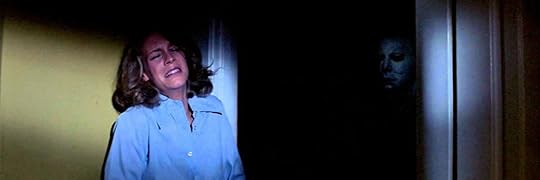 One of the most influential horror films of its era, Halloween – upon its release – was a nerve-frying thriller. Shot in just 20 days on a $325,000 budget in Southern California, the scare-fest about white-mask-sporting 23-year-old psychopath Michael Myers, who stalks and terrorizes three young babysitters on Halloween night, continues to play to sold-out audiences at midnight showings across the country. But what makes Halloween stand out is Jamie Lee Curtis’s character, Laurie. It’s no secret that the horror genre (especially in slasher films) that the depiction of women can often be spotty (i.e. unsympathetic, underwritten and objectified). Except for Laurie in Halloween. Her character is recognizable and relatable. She’s also strong and resourceful. So it’s kind of a pleasant surprise when the mild-mannered babysitter fights back against the murderous Michael Myers. It’s one the many reasons this movie is so absurdly fun to watch.
One of the most influential horror films of its era, Halloween – upon its release – was a nerve-frying thriller. Shot in just 20 days on a $325,000 budget in Southern California, the scare-fest about white-mask-sporting 23-year-old psychopath Michael Myers, who stalks and terrorizes three young babysitters on Halloween night, continues to play to sold-out audiences at midnight showings across the country. But what makes Halloween stand out is Jamie Lee Curtis’s character, Laurie. It’s no secret that the horror genre (especially in slasher films) that the depiction of women can often be spotty (i.e. unsympathetic, underwritten and objectified). Except for Laurie in Halloween. Her character is recognizable and relatable. She’s also strong and resourceful. So it’s kind of a pleasant surprise when the mild-mannered babysitter fights back against the murderous Michael Myers. It’s one the many reasons this movie is so absurdly fun to watch.
31. Alien (1979)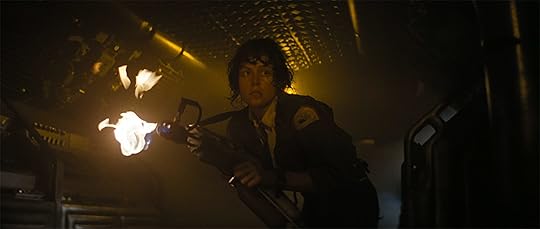 What is great about Alien is that it is a perfect haunted house movie set in space. Of course, Alien sets itself apart from many other haunted house films in that the “house” is a spacecraft they consider home during their missions. The “house” is already there from the beginning. The crew knows it, they feel comfortable in it, they are intimately aware of how it works and how to navigate it. This isn’t a situation where people are thrust into a new environment where they have no idea what is around each corner, such as The Haunting. It’s only after the alien bursts from one of the crew member’s chests that this cold yet strangely secure environment becomes a labyrinthine maze of potential terror. Directed by Ridley Scott, Alien is about a seven-crew commercial hauling ship that, on its return trip to Earth, is required to respond to a distress signal from a strange and dark planet. From there, a monster begins hunting the crew members down one by one.
What is great about Alien is that it is a perfect haunted house movie set in space. Of course, Alien sets itself apart from many other haunted house films in that the “house” is a spacecraft they consider home during their missions. The “house” is already there from the beginning. The crew knows it, they feel comfortable in it, they are intimately aware of how it works and how to navigate it. This isn’t a situation where people are thrust into a new environment where they have no idea what is around each corner, such as The Haunting. It’s only after the alien bursts from one of the crew member’s chests that this cold yet strangely secure environment becomes a labyrinthine maze of potential terror. Directed by Ridley Scott, Alien is about a seven-crew commercial hauling ship that, on its return trip to Earth, is required to respond to a distress signal from a strange and dark planet. From there, a monster begins hunting the crew members down one by one.
So grab some candy and pop in one of these instant Halloween classics for a spooky night in.
It is an ancient art form. We've terrified each other with tales that trigger the less logical parts of our imaginations for as long as we've told stories. What we’ve learned is that audiences willingly offer themselves up to sadistic storytellers to be scared witless. Perhaps we are engrossed with this tales of terror because we get a basic thrill from it all. Or maybe, horror stories serve a wider moral purpose.
But when it comes to horror movies, they deliver thrills as well as exploring the dark, forbidden side of life (and death) — cautionary tales for grown ups. They also provide a compelling mirror image of the anxieties of their time. Nosferatu for example, isn't just a tale of vampirism, but offers heart-rending images of a town beleaguered by premature and random deaths, echoes of the Great War and the Great Flu Epidemic fatalities.
Each generation gets the horror films it deserves, and one of the more fascinating aspects of the study of the genre is the changing nature of the monsters who present a threat. Through the 1920s came from Germany's expressionist movement, with films like The Cabinet of Dr. Caligari and Nosferatu influencing the next generation of American cinema, and Universal Studios being the epicenter of all horror movies.
So you wanna see how the horror genre evolved?
Here are 31 classic horror movies that changed the genre of horror forever.
 1. The Cabinet of Dr. Caligari (1920)
1. The Cabinet of Dr. Caligari (1920)
 Hailed as the world’s first full-length horror movie, The Cabinet of Dr. Caligari is an instant classic. With an insane jangle of crooked angles and unbalanced teetering images, this film remains as one of the most influential pictures ever released, leaving an indelible mark across a surprising spectrum of genres. The story centers around two young friends, Francis and Alan, while jockeying for the affections of Jane, visit a local traveling carnival. There they take in the act of the mysterious, top-hatted and wild-haired Dr. Caligari. As they watch, Caligari awakens his somnambulist subject, Cesare, who under hypnosis answers questions from the audience. When Alan jokingly asks when he will die, Cesare responds “Before dawn.” Chilling. After Alan and a couple other people are found stabbed to death, Francis decides to do a little detective work of his own, which brings him back to Caligari. For a silent film, what is notable isn’t the so much the storyline, but rather the visuals that makes this movie so haunting. The painted townscape is filled with curved and pointed buildings teetering at dangerous angles, almost as if they were alive and shrieking. Roads twist and spiral to nowhere. The perspectives are deliberately mismatched and inconsistent, with the props and sets sometimes being too large for the characters, and others too small. When watching, it almost makes you feel like you’re stuck inside an Edvard Munch painting.
Hailed as the world’s first full-length horror movie, The Cabinet of Dr. Caligari is an instant classic. With an insane jangle of crooked angles and unbalanced teetering images, this film remains as one of the most influential pictures ever released, leaving an indelible mark across a surprising spectrum of genres. The story centers around two young friends, Francis and Alan, while jockeying for the affections of Jane, visit a local traveling carnival. There they take in the act of the mysterious, top-hatted and wild-haired Dr. Caligari. As they watch, Caligari awakens his somnambulist subject, Cesare, who under hypnosis answers questions from the audience. When Alan jokingly asks when he will die, Cesare responds “Before dawn.” Chilling. After Alan and a couple other people are found stabbed to death, Francis decides to do a little detective work of his own, which brings him back to Caligari. For a silent film, what is notable isn’t the so much the storyline, but rather the visuals that makes this movie so haunting. The painted townscape is filled with curved and pointed buildings teetering at dangerous angles, almost as if they were alive and shrieking. Roads twist and spiral to nowhere. The perspectives are deliberately mismatched and inconsistent, with the props and sets sometimes being too large for the characters, and others too small. When watching, it almost makes you feel like you’re stuck inside an Edvard Munch painting. 2. Nosferatu (1922)
 Perhaps the most terrifying thing about Nosferatu is how close this masterpiece of a film came to being lost forever. But thankfully, copies survived. Loosely adapted from Bram Stoker’s legendary Dracula novel, the vampire here is not actually named Dracula, but Count Orlok. Also, instead of Jonathan Harker we get a Thomas Hutter. But little does Hutter know as he travels to Transylvania to meet Orlok for the first time, that he is crossing into the boundary between the real world and the nightmare one. After glimpsing at Hutter's portrait of his wife, Ellen, Orlok makes his way, with a stash of earth-filled coffins by sea to north Germany to seek Ellen out with his macabre ways. Nosferatu is still haunting and ethereal to this day. Vampires are such familiar screen figures to us now it's hard to appreciate that Nosferatu was the first vampire movie of its time. The film centers on a monster, Count Orlok, but it's so much more than a monster movie. It's a melting pot of early Weimar Republic anxieties, reflecting concerns about many things from the rise of women into political power (female suffrage was granted in 1919) to theories about the cause of the recent Spanish Flu epidemic (contagion from overseas). Visually, it's a blend of trick photography and documentary. One that will definitely stay with you.
Perhaps the most terrifying thing about Nosferatu is how close this masterpiece of a film came to being lost forever. But thankfully, copies survived. Loosely adapted from Bram Stoker’s legendary Dracula novel, the vampire here is not actually named Dracula, but Count Orlok. Also, instead of Jonathan Harker we get a Thomas Hutter. But little does Hutter know as he travels to Transylvania to meet Orlok for the first time, that he is crossing into the boundary between the real world and the nightmare one. After glimpsing at Hutter's portrait of his wife, Ellen, Orlok makes his way, with a stash of earth-filled coffins by sea to north Germany to seek Ellen out with his macabre ways. Nosferatu is still haunting and ethereal to this day. Vampires are such familiar screen figures to us now it's hard to appreciate that Nosferatu was the first vampire movie of its time. The film centers on a monster, Count Orlok, but it's so much more than a monster movie. It's a melting pot of early Weimar Republic anxieties, reflecting concerns about many things from the rise of women into political power (female suffrage was granted in 1919) to theories about the cause of the recent Spanish Flu epidemic (contagion from overseas). Visually, it's a blend of trick photography and documentary. One that will definitely stay with you. 3. The Phantom of the Opera (1925)
 This film, the first adaptation of Gaston Leroux’s novel from 1908, remains one of the definitive masterpieces of silent horror. Released by horror giant Universal in 1925, this film emphatically established a formula that Universal would rework into the thirties and forties, which proposed the important idea that those who look beastly will inevitably act beastly. Shocking for its time, this timeless classic features one of the most memorable scare scenes of the silent era: the sudden unmasking of Erik – the ghostly opera ghost of the title. The story concerns Erik, a much-feared fiend who haunts the Paris Opera House. Lurking around the damp, dank passages deep in the cellars of the theater, he secretly coaches understudy Christine Daae to be an opera star. Through a startling sequence of terrors, including sending a giant chandelier crashing down on the opera patrons, the Phantom forces the lead soprano to withdraw from the opera, permitting Christine to step in. Luring Christine into his subterranean lair below the opera house, the Phantom confesses his love. But Christine is in love with Raoul de Chagny. The Phantom demands that Christine break off her relationship with Raoul before he'll allow her to return to the opera house stage. She agrees, but immediately upon her release from the Phantom's lair, she runs into the arms of Raoul and they plan to flee to England after her performance that night. The Phantom overhears their conversation and, during her performance, the Phantom kidnaps Christine, taking her to the depths of his dungeon. It is left to Raoul and Simon Buquet, a secret service agent, to track down the Phantom and rescue Christine. There have been over ten other adaptations of the myth but none can match this original for atmospheric dread or stunning direction.
This film, the first adaptation of Gaston Leroux’s novel from 1908, remains one of the definitive masterpieces of silent horror. Released by horror giant Universal in 1925, this film emphatically established a formula that Universal would rework into the thirties and forties, which proposed the important idea that those who look beastly will inevitably act beastly. Shocking for its time, this timeless classic features one of the most memorable scare scenes of the silent era: the sudden unmasking of Erik – the ghostly opera ghost of the title. The story concerns Erik, a much-feared fiend who haunts the Paris Opera House. Lurking around the damp, dank passages deep in the cellars of the theater, he secretly coaches understudy Christine Daae to be an opera star. Through a startling sequence of terrors, including sending a giant chandelier crashing down on the opera patrons, the Phantom forces the lead soprano to withdraw from the opera, permitting Christine to step in. Luring Christine into his subterranean lair below the opera house, the Phantom confesses his love. But Christine is in love with Raoul de Chagny. The Phantom demands that Christine break off her relationship with Raoul before he'll allow her to return to the opera house stage. She agrees, but immediately upon her release from the Phantom's lair, she runs into the arms of Raoul and they plan to flee to England after her performance that night. The Phantom overhears their conversation and, during her performance, the Phantom kidnaps Christine, taking her to the depths of his dungeon. It is left to Raoul and Simon Buquet, a secret service agent, to track down the Phantom and rescue Christine. There have been over ten other adaptations of the myth but none can match this original for atmospheric dread or stunning direction.4. Dr. Jekyll and Mr. Hyde (1931)
 Considered to be the best film adaptation of Robert Louis Stevenson’s classic novel by the same name, Dr. Jekyll and Mr. Hyde is one of the most sophisticated and frightening films in 1930s cinema. It explicitly explores sexuality and repression in ways that most films of that era merely hinted at or disguised in allegory. When London physician, Dr. Henry Jekyll – who is impatient to marry his fiancée, Muriel – gets rejected by Muriel's father for an early wedding, the tormented Jekyll heads to his laboratory, where he has been developing a potion to separate the benevolent from the malevolent sides of human nature. After he drinks the concoction, the doctor’s evil impulses are unleashed as he is transformed into the monstrous Mr. Hyde. Using extended point-of-view shots, we are forced to experience the world through the eyes of Dr. Jekyll. The film begins exclusively from this unique perspective, so much in fact that the first time we actually see the good doctor is through a mirror. We see a young patient looking at him, and thereby us, with admiration and almost religious awe. The viewers, essentially, become Dr. Jekyll, making us sympathize with him. More significantly, it also prepares viewers for the breathtaking transformation scenes.
Considered to be the best film adaptation of Robert Louis Stevenson’s classic novel by the same name, Dr. Jekyll and Mr. Hyde is one of the most sophisticated and frightening films in 1930s cinema. It explicitly explores sexuality and repression in ways that most films of that era merely hinted at or disguised in allegory. When London physician, Dr. Henry Jekyll – who is impatient to marry his fiancée, Muriel – gets rejected by Muriel's father for an early wedding, the tormented Jekyll heads to his laboratory, where he has been developing a potion to separate the benevolent from the malevolent sides of human nature. After he drinks the concoction, the doctor’s evil impulses are unleashed as he is transformed into the monstrous Mr. Hyde. Using extended point-of-view shots, we are forced to experience the world through the eyes of Dr. Jekyll. The film begins exclusively from this unique perspective, so much in fact that the first time we actually see the good doctor is through a mirror. We see a young patient looking at him, and thereby us, with admiration and almost religious awe. The viewers, essentially, become Dr. Jekyll, making us sympathize with him. More significantly, it also prepares viewers for the breathtaking transformation scenes.5. Dracula (1931)
 Considered the first in the cycle of Universal Studios classic monsters, the movie Dracula starred famed actor Bela Lugosi and was noted as being the first horror movie with sound. Plus, it was thanks to this movie that helped create the American supernatural cinema. The movie is an atmospheric, haunting film that offered one of the most imitable performances in the history of cinema. The electric tension between the elegant Dracula and the vampire hunter Professor Van Helsing is chilling. And it's hard to forget such moments as the lustful gleam in the eyes of Mina Harker as she succumbs to the will of Dracula, or the omnipresent insane giggle of the fly-eating Renfield. Despite the static nature of the final scenes, Dracula is a classic among horror films, with Bela Lugosi giving the performance of a lifetime as the erudite Count.
Considered the first in the cycle of Universal Studios classic monsters, the movie Dracula starred famed actor Bela Lugosi and was noted as being the first horror movie with sound. Plus, it was thanks to this movie that helped create the American supernatural cinema. The movie is an atmospheric, haunting film that offered one of the most imitable performances in the history of cinema. The electric tension between the elegant Dracula and the vampire hunter Professor Van Helsing is chilling. And it's hard to forget such moments as the lustful gleam in the eyes of Mina Harker as she succumbs to the will of Dracula, or the omnipresent insane giggle of the fly-eating Renfield. Despite the static nature of the final scenes, Dracula is a classic among horror films, with Bela Lugosi giving the performance of a lifetime as the erudite Count. 6. Frankenstein (1931)
 Loosely based on the novel of the same name by Mary Shelley, Frankenstein is a film about a mad, obsessed scientist, Dr. Henry Frankenstein, who creates a monster, by taking body parts from dead people. Upon placing a brain inside the head of the monster, Henry and his assistant Fritz are amazed that the experiment is alive. When the monster mistakenly kills Maria, a young girl he meets down by the river, the town is up in arms and aims to bring the monster to justice. Thanks to Jack Pierce – the makeup artist at Universal Studios – he was able to a create a grotesque, other-worldly makeup design for the Monster that proved to be instantly iconic, creating a brand image for the character that’s still widely recognizable almost a century later.
Loosely based on the novel of the same name by Mary Shelley, Frankenstein is a film about a mad, obsessed scientist, Dr. Henry Frankenstein, who creates a monster, by taking body parts from dead people. Upon placing a brain inside the head of the monster, Henry and his assistant Fritz are amazed that the experiment is alive. When the monster mistakenly kills Maria, a young girl he meets down by the river, the town is up in arms and aims to bring the monster to justice. Thanks to Jack Pierce – the makeup artist at Universal Studios – he was able to a create a grotesque, other-worldly makeup design for the Monster that proved to be instantly iconic, creating a brand image for the character that’s still widely recognizable almost a century later.7. Freaks (1932)
 A carnival barker tells his audience the story behind the sideshow attraction they have come to see: Once a beautiful trapeze artist, Cleopatra weds sideshow midget Hans to get her hands on his inheritance. She and her lover, the strong man Hercules, plot to poison Hans. But when the other sideshow attractions realize their plan, they take revenge. Todd Browning's film is a masterpiece of audience manipulation, years ahead of itself in presenting characters who are both sympathetic and terrifying. Early scenes showing the performers going about their lives create a tremendous empathy that gradually overpowers any revulsion audiences feel toward their physical conditions. There are even moments of gentle, very human humor. In some cases, the performers are presented as innocents functioning perfectly within a world they have built for themselves. Yet the final revenge scenes twist those feelings, displaying the monstrous behavior of which they are capable in response to a threat from someone outside their group. It's a searing portrait of the humanity within all of us at its best and its worst.
A carnival barker tells his audience the story behind the sideshow attraction they have come to see: Once a beautiful trapeze artist, Cleopatra weds sideshow midget Hans to get her hands on his inheritance. She and her lover, the strong man Hercules, plot to poison Hans. But when the other sideshow attractions realize their plan, they take revenge. Todd Browning's film is a masterpiece of audience manipulation, years ahead of itself in presenting characters who are both sympathetic and terrifying. Early scenes showing the performers going about their lives create a tremendous empathy that gradually overpowers any revulsion audiences feel toward their physical conditions. There are even moments of gentle, very human humor. In some cases, the performers are presented as innocents functioning perfectly within a world they have built for themselves. Yet the final revenge scenes twist those feelings, displaying the monstrous behavior of which they are capable in response to a threat from someone outside their group. It's a searing portrait of the humanity within all of us at its best and its worst.8. The Mummy (1932)
 When Howard Carter uncovered Tutankhamun’s long-buried tomb in Egypt’s Valley of the Kings in November 1922, he sparked a global press frenzy and triggered a new craze — Egyptology (or, “Tutmania”). But when rumors began to swirl around the sudden, unexplained deaths of key individuals involved with Carter’s expedition, the concept of the famed theory that it was caused by the "Curse of the Mummy’s Tomb" rapidly became part of the zeitgeist. The 1932 movie, The Mummy taps into the horror centered around Tutmania that may people feared. The main action takes place in Cairo, and revolves around a mummy who is brought to life by the accidental reading of a spell. He then hunts down the reincarnation of his lost love. This movie sealed Universal Studio’s fate, as helming the horror genre and successfully executing the monster movie drama for its viewers.
When Howard Carter uncovered Tutankhamun’s long-buried tomb in Egypt’s Valley of the Kings in November 1922, he sparked a global press frenzy and triggered a new craze — Egyptology (or, “Tutmania”). But when rumors began to swirl around the sudden, unexplained deaths of key individuals involved with Carter’s expedition, the concept of the famed theory that it was caused by the "Curse of the Mummy’s Tomb" rapidly became part of the zeitgeist. The 1932 movie, The Mummy taps into the horror centered around Tutmania that may people feared. The main action takes place in Cairo, and revolves around a mummy who is brought to life by the accidental reading of a spell. He then hunts down the reincarnation of his lost love. This movie sealed Universal Studio’s fate, as helming the horror genre and successfully executing the monster movie drama for its viewers. 9. The Invisible Man (1933)
 The film opens with a mysterious stranger, his face swathed in bandages and his eyes obscured by dark spectacles, taking a room at an inn at the English village of Iping, in Sussex. Never leaving his quarters, the stranger demands that the staff leave him completely alone. However, his dark secret is slowly revealed to his suspicious landlady and the villagers: he is an invisible man. When the innkeeper and his semi-hysterical wife tell him to leave after he makes a huge mess in the parlor and drives away the other patrons, he tears off the bandages, laughing maniacally, and throws the innkeeper down the stairs. He takes off the rest of his clothes, rendering himself completely invisible, and tries to strangle a police officer. Among the many vintage horror films released by Universal Studios in the 1930’s, The Invisible Man still packs a punch today. It is a shining example of fantastic thrills with quotable dialogue and unexpected humor and shocks, all delivered with great mood and economy.
The film opens with a mysterious stranger, his face swathed in bandages and his eyes obscured by dark spectacles, taking a room at an inn at the English village of Iping, in Sussex. Never leaving his quarters, the stranger demands that the staff leave him completely alone. However, his dark secret is slowly revealed to his suspicious landlady and the villagers: he is an invisible man. When the innkeeper and his semi-hysterical wife tell him to leave after he makes a huge mess in the parlor and drives away the other patrons, he tears off the bandages, laughing maniacally, and throws the innkeeper down the stairs. He takes off the rest of his clothes, rendering himself completely invisible, and tries to strangle a police officer. Among the many vintage horror films released by Universal Studios in the 1930’s, The Invisible Man still packs a punch today. It is a shining example of fantastic thrills with quotable dialogue and unexpected humor and shocks, all delivered with great mood and economy. 10. Bride of Frankenstein (1935)
 In 1931, when James Whale's Frankenstein was breaking all kinds of box office records and establishing Universal Studios as a major force, the rules weren't so clearly laid out. And, as Whale was clearly on a roll following his hit with The Invisible Man, the studio pretty allowed him creative license to put together a sequel for one of his movies. And thus, Bride of Frankenstein was born. The macabre, satirical film is generally considered one of the greatest horror sequels of all time - a spectacular, bizarre, high-camp, excessive, humorous, farcical and surrealistic film. The film opens with Mary Shelley saying, to a recumbent Lord Byron and her husband, that she's not quite done with the whole monster deal after all—there's more to tell. What the audience wouldn't or couldn't have anticipated was Elsa Lanchester in her vertical hairdo, complete with bleached lightning bolts. Whale definitely gave audiences what they wanted in Bride of Frankenstein, even if they didn't know it themselves.
In 1931, when James Whale's Frankenstein was breaking all kinds of box office records and establishing Universal Studios as a major force, the rules weren't so clearly laid out. And, as Whale was clearly on a roll following his hit with The Invisible Man, the studio pretty allowed him creative license to put together a sequel for one of his movies. And thus, Bride of Frankenstein was born. The macabre, satirical film is generally considered one of the greatest horror sequels of all time - a spectacular, bizarre, high-camp, excessive, humorous, farcical and surrealistic film. The film opens with Mary Shelley saying, to a recumbent Lord Byron and her husband, that she's not quite done with the whole monster deal after all—there's more to tell. What the audience wouldn't or couldn't have anticipated was Elsa Lanchester in her vertical hairdo, complete with bleached lightning bolts. Whale definitely gave audiences what they wanted in Bride of Frankenstein, even if they didn't know it themselves.11. Son of Frankenstein (1939)
 After the 1931 successes of both Frankenstein and Dracula, the studio stumbled a bit with their horror film output over the next few years. Son of Frankenstein was the last to feature Boris Karloff as The Monster, and also included Bela Lugosi as Ygor, alongside Basil Rathbone as the title character, Baron Wolf von Frankenstein. The plot centers around Wolf Von Frankenstein, returning to his ancestral home with his wife Elsa and their young son Peter. However, they are greeted on arrival with a suspicious crowd at the train station. Wolf is the son of Victor Frankenstein, who created the monster in the previous 1931 James Whale film. Wolf soon meets Ygor, who has survived the villagers' attempt to hang him despite having a broken neck. Ygor brings Wolf to a family crypt, where he reveals the comatose monster laying near the tombs of his father and grandfather. Ygor demands Wolf revive the monster. Wolf examines the monster's body decides that the extreme abnormalities causing the monster to be nearly immortal warrants scientific investigation. Once the monster is revived, Ygor uses a flute type instrument to control him, committing multiple murders. While the third film in a series sometimes isn’t on par with its predecessors, Son of Frankenstein remains one of the most solidly entertaining movies in the Universal horror canon.
After the 1931 successes of both Frankenstein and Dracula, the studio stumbled a bit with their horror film output over the next few years. Son of Frankenstein was the last to feature Boris Karloff as The Monster, and also included Bela Lugosi as Ygor, alongside Basil Rathbone as the title character, Baron Wolf von Frankenstein. The plot centers around Wolf Von Frankenstein, returning to his ancestral home with his wife Elsa and their young son Peter. However, they are greeted on arrival with a suspicious crowd at the train station. Wolf is the son of Victor Frankenstein, who created the monster in the previous 1931 James Whale film. Wolf soon meets Ygor, who has survived the villagers' attempt to hang him despite having a broken neck. Ygor brings Wolf to a family crypt, where he reveals the comatose monster laying near the tombs of his father and grandfather. Ygor demands Wolf revive the monster. Wolf examines the monster's body decides that the extreme abnormalities causing the monster to be nearly immortal warrants scientific investigation. Once the monster is revived, Ygor uses a flute type instrument to control him, committing multiple murders. While the third film in a series sometimes isn’t on par with its predecessors, Son of Frankenstein remains one of the most solidly entertaining movies in the Universal horror canon. 12. The Wolf Man (1940)
 Although there is a well established werewolf mythology extending back to the ancient world, there was no single established story (as with Dracula and the vampire myth) ripe for easy adaptation. The Wolf Man is a mishmash of several wolf legends, with added ingredients. Putting together, pentagrams, silver bullets and the full moon to create a robust myth to establish a new set of cinematic rules which Hollywood lycanthropes would adhere to for decades. When Larry Talbot attempts to rescue Jenny Williams from a nocturnal attack by a wolf, he winds up injured. However, by Jenny’s side isn’t the body of a wolf, but that of man. Now bitten, Talbot is cursed to suffer the torments of the beast whenever the moon is full. Arguably the best of the "original" Universal horrors, The Wolf Man boasts one of the most stellar casts ever to grace a "B” picture.
Although there is a well established werewolf mythology extending back to the ancient world, there was no single established story (as with Dracula and the vampire myth) ripe for easy adaptation. The Wolf Man is a mishmash of several wolf legends, with added ingredients. Putting together, pentagrams, silver bullets and the full moon to create a robust myth to establish a new set of cinematic rules which Hollywood lycanthropes would adhere to for decades. When Larry Talbot attempts to rescue Jenny Williams from a nocturnal attack by a wolf, he winds up injured. However, by Jenny’s side isn’t the body of a wolf, but that of man. Now bitten, Talbot is cursed to suffer the torments of the beast whenever the moon is full. Arguably the best of the "original" Universal horrors, The Wolf Man boasts one of the most stellar casts ever to grace a "B” picture.13. The Creature of the Black Lagoon (1954)
 Unfortunately, the poor Creature from the Black Lagoon was never able to shuffle his way into the expanded universe shared by Dracula, The Wolf Man, Frankenstein’s Monster, and, if briefly, The Invisible Man. Nevertheless, because of Universal Studios’ success with Dracula, Frankenstein, The Mummy, The Wolfman (and their numerous sequels), the original Universal monsters had been overexposed and just didn’t have the scare appeal they had had a decade earlier. So Universal rose to the occasion and produced some of the best Sci-fi/ Horror films of the period, and thus entered The Creature of the Black Lagoon. The story involves the members of a fossil-hunting expedition down a dark tributary of the mist-shrouded Amazon, where they enter the domain of a prehistoric, amphibious "Gill Man” – possibly the last of a species of fanged, clawed humanoids who may have evolved entirely underwater. Tranquilized, captured, and brought aboard, the creature still manages to revive and escape – slaughtering several members of the team -- and abducts their sole female member, spiriting her off to his mist-shrouded lair. Director Jack Arnold makes excellent use of the tropical location, employing heavy mists and eerie jungle noises to create an atmosphere of nearly constant menace. The film's most effective element is certainly the monster itself, with his pulsating gills and fearsome webbed talons.
Unfortunately, the poor Creature from the Black Lagoon was never able to shuffle his way into the expanded universe shared by Dracula, The Wolf Man, Frankenstein’s Monster, and, if briefly, The Invisible Man. Nevertheless, because of Universal Studios’ success with Dracula, Frankenstein, The Mummy, The Wolfman (and their numerous sequels), the original Universal monsters had been overexposed and just didn’t have the scare appeal they had had a decade earlier. So Universal rose to the occasion and produced some of the best Sci-fi/ Horror films of the period, and thus entered The Creature of the Black Lagoon. The story involves the members of a fossil-hunting expedition down a dark tributary of the mist-shrouded Amazon, where they enter the domain of a prehistoric, amphibious "Gill Man” – possibly the last of a species of fanged, clawed humanoids who may have evolved entirely underwater. Tranquilized, captured, and brought aboard, the creature still manages to revive and escape – slaughtering several members of the team -- and abducts their sole female member, spiriting her off to his mist-shrouded lair. Director Jack Arnold makes excellent use of the tropical location, employing heavy mists and eerie jungle noises to create an atmosphere of nearly constant menace. The film's most effective element is certainly the monster itself, with his pulsating gills and fearsome webbed talons. 14. Invasion of the Body Snatchers (1956)
 The film begins with doctor Miles Bennell returning to his small Californian town after attending a medical convention, and noticing that a lot of the townspeople have “changed” in some way while he was gone. After resuming a relationship with his one-time fiancée Becky Driscoll he learns that she too is aware of something wrong in the town. Later, during a visit to friends Jack and Theodora Belicec, a seedpod-shaped object is found growing in the Belicec’s greenhouse. When it opens it reveals a half-formed human figure in the exact likeness of Jack himself. Eventually it is found that there are many of these pods around town and that they represent an alien invasion of Earth. The pods adopt the appearance of people, then replace or incorporate them while the victims are asleep. In an era characterized by the Red Scare, this film was part of the sweeping mass hysteria of McCarthyism in the 1950s. Suffice to say, that it left an unsettling impression amongst viewers at the time of its release.
The film begins with doctor Miles Bennell returning to his small Californian town after attending a medical convention, and noticing that a lot of the townspeople have “changed” in some way while he was gone. After resuming a relationship with his one-time fiancée Becky Driscoll he learns that she too is aware of something wrong in the town. Later, during a visit to friends Jack and Theodora Belicec, a seedpod-shaped object is found growing in the Belicec’s greenhouse. When it opens it reveals a half-formed human figure in the exact likeness of Jack himself. Eventually it is found that there are many of these pods around town and that they represent an alien invasion of Earth. The pods adopt the appearance of people, then replace or incorporate them while the victims are asleep. In an era characterized by the Red Scare, this film was part of the sweeping mass hysteria of McCarthyism in the 1950s. Suffice to say, that it left an unsettling impression amongst viewers at the time of its release. 15. Eyes Without A Face (1960)
 French director Georges Franju's Eyes Without a Face isn't just cinema's most shocking mad doctor flick of all time, it's also one of cinema's most overlooked horror gems. In it, Doctor Genessier lures innocent young women to his mansion in an effort to cut off the current victim's face and fasten it onto that of his daughter, who suffered face-ruining burns from a car accident. Without a new, scar-free face, the doctor’s daughter, Christiane, wears an all-white, featureless mask that makes her look like a bloodless walking corpse, a lasting image that gives Eyes Without a Face a haunting quality that's tough to shake. And one scene in particular, a grisly and methodical face-removal sequence uncommon for its time, is one of horror's great try-not-to-look-away moments. The film is done in a sober, muted style, with stark black and whites and the bizarre camera angles much loved by film noir.
French director Georges Franju's Eyes Without a Face isn't just cinema's most shocking mad doctor flick of all time, it's also one of cinema's most overlooked horror gems. In it, Doctor Genessier lures innocent young women to his mansion in an effort to cut off the current victim's face and fasten it onto that of his daughter, who suffered face-ruining burns from a car accident. Without a new, scar-free face, the doctor’s daughter, Christiane, wears an all-white, featureless mask that makes her look like a bloodless walking corpse, a lasting image that gives Eyes Without a Face a haunting quality that's tough to shake. And one scene in particular, a grisly and methodical face-removal sequence uncommon for its time, is one of horror's great try-not-to-look-away moments. The film is done in a sober, muted style, with stark black and whites and the bizarre camera angles much loved by film noir. 16. Psycho (1960)
 It’s safe to say that no movie has ever had the same sheer bloody, jaw-dropping terror, than Alfred Hitchcock’s game-changing masterpiece, Psycho. Here, Hitchcock breaks every single rule of horror cinema, and reshapes the film in his own image. In Psycho, murder makes no sense at all. In the famous shower scene, not only was Hitchcock signing Marion Crane’s death certificate, but also slicing through years of audience expectation that the hero or heroine of a fictional work would be shielded and protected. But when it comes to Hitchcock, horror and suspense, everything is left up in the air. Exhausted after leaving Phoenix with $40,000 in cash to start a new life for herself, Marion Crane decides to stop for the night at the Bates Motel, where nervous but personable innkeeper Norman Bates cheerfully mentions that she's the first guest in weeks, before he regales her with curious stories about his mother. There's hardly a film fan alive who doesn't know what happens next, but while the shower scene is justifiably the film's most famous sequence, there are dozens of memorable bits throughout this film.
It’s safe to say that no movie has ever had the same sheer bloody, jaw-dropping terror, than Alfred Hitchcock’s game-changing masterpiece, Psycho. Here, Hitchcock breaks every single rule of horror cinema, and reshapes the film in his own image. In Psycho, murder makes no sense at all. In the famous shower scene, not only was Hitchcock signing Marion Crane’s death certificate, but also slicing through years of audience expectation that the hero or heroine of a fictional work would be shielded and protected. But when it comes to Hitchcock, horror and suspense, everything is left up in the air. Exhausted after leaving Phoenix with $40,000 in cash to start a new life for herself, Marion Crane decides to stop for the night at the Bates Motel, where nervous but personable innkeeper Norman Bates cheerfully mentions that she's the first guest in weeks, before he regales her with curious stories about his mother. There's hardly a film fan alive who doesn't know what happens next, but while the shower scene is justifiably the film's most famous sequence, there are dozens of memorable bits throughout this film. 17. The Innocents (1961)
 Adapted from Henry James's novella, The Turn of the Screw, The Innocents is a story about possession. When Miss Giddens, is hired as a governess to look after little Flora and Miles by their uncle, the two children initially seem sweet and fun. But – as is the way with creepy horror-film kids – they soon turn demonic and troubled. The first intimation of this arrives when it transpires that Miles has been expelled from school; this is compounded by the children's odd behavior, apparent secrets and reports of strange visions. Miss Giddens eventually connects all this to two previous employees of the house, both dead: governess Miss Jessel, and valet Peter Quint, who were locked in an abusive relationship.So now the question is: Are Jessel and Quint using the children as vehicles to continue it from beyond the grave? This film has a great spooky atmosphere, infusing the drama with a certain sense of the weird and supernatural. Even the camera shots of the apparitions (or "ghosts") in the open air and broad daylight have a startling and chilling quality.
Adapted from Henry James's novella, The Turn of the Screw, The Innocents is a story about possession. When Miss Giddens, is hired as a governess to look after little Flora and Miles by their uncle, the two children initially seem sweet and fun. But – as is the way with creepy horror-film kids – they soon turn demonic and troubled. The first intimation of this arrives when it transpires that Miles has been expelled from school; this is compounded by the children's odd behavior, apparent secrets and reports of strange visions. Miss Giddens eventually connects all this to two previous employees of the house, both dead: governess Miss Jessel, and valet Peter Quint, who were locked in an abusive relationship.So now the question is: Are Jessel and Quint using the children as vehicles to continue it from beyond the grave? This film has a great spooky atmosphere, infusing the drama with a certain sense of the weird and supernatural. Even the camera shots of the apparitions (or "ghosts") in the open air and broad daylight have a startling and chilling quality.18. Carnival of Souls (1962)
 When a young woman survives a drag race accident, she agrees to take a job as a church organist in Salt Lake City. En route, she is haunted by a bizarre apparition that compels her toward an abandoned lakeside pavilion. The film as a whole is a strange, atmospheric and unforgettable low-budget horror film. Yet, the movie continues to exert a strange fascination for many viewers. Even though it’s not a conventional horror or ghost story, Carnival of Souls raises a number of perplexing questions that relate to our own existence here on earth. You can thank the cinematography, which provides an unsettling surreal and otherworldly feeling for viewers alike – one-part dream like, one part, nightmare.
When a young woman survives a drag race accident, she agrees to take a job as a church organist in Salt Lake City. En route, she is haunted by a bizarre apparition that compels her toward an abandoned lakeside pavilion. The film as a whole is a strange, atmospheric and unforgettable low-budget horror film. Yet, the movie continues to exert a strange fascination for many viewers. Even though it’s not a conventional horror or ghost story, Carnival of Souls raises a number of perplexing questions that relate to our own existence here on earth. You can thank the cinematography, which provides an unsettling surreal and otherworldly feeling for viewers alike – one-part dream like, one part, nightmare.
19. The Birds (1963)
 The master of suspense reigns supreme once more. The story begins after wealthy Melanie Daniels purchases some lovebirds in a pet shop in San Francisco, only for her to notice the curious behavior of the birds in the Northern California area. At first, it's no more than a sea gull swooping down and pecking at Melanie's head. But things take a truly ugly turn when hundreds of birds converge on a children's party. There is never an explanation as to why the birds have run amok, but once the onslaught begins, there's virtually no letup. Only three years after shaking and reshaping the rules of horror cinema with Psycho, Hitchcock gave us the equally entertaining and sub-textually subversive avian thriller, The Birds. Each scene is better than the next until the ultimate crescendo when poor Melanie Daniels is getting picked and pecked to near death. To this day, that scene ranks as one of the most horrifying sequences in cinematic history.
The master of suspense reigns supreme once more. The story begins after wealthy Melanie Daniels purchases some lovebirds in a pet shop in San Francisco, only for her to notice the curious behavior of the birds in the Northern California area. At first, it's no more than a sea gull swooping down and pecking at Melanie's head. But things take a truly ugly turn when hundreds of birds converge on a children's party. There is never an explanation as to why the birds have run amok, but once the onslaught begins, there's virtually no letup. Only three years after shaking and reshaping the rules of horror cinema with Psycho, Hitchcock gave us the equally entertaining and sub-textually subversive avian thriller, The Birds. Each scene is better than the next until the ultimate crescendo when poor Melanie Daniels is getting picked and pecked to near death. To this day, that scene ranks as one of the most horrifying sequences in cinematic history. 20. The Haunting (1963)
 Though at first it might seem like a cliche-filled premise of a spooky house, but not everything is exactly as it seems. The Haunting is essentially the story of Eleanor Lance – a lonely middle-aged woman being slowly devoured by her groaning, undulating surroundings. Although it's technically a ghost story, ghosts aren't what will spook you within this movie. The fear, instead, can be found amongst the details of the film. The suspense is amped up, with creeping psychological terrors rather than gore that would later define horror films in years to come.
Though at first it might seem like a cliche-filled premise of a spooky house, but not everything is exactly as it seems. The Haunting is essentially the story of Eleanor Lance – a lonely middle-aged woman being slowly devoured by her groaning, undulating surroundings. Although it's technically a ghost story, ghosts aren't what will spook you within this movie. The fear, instead, can be found amongst the details of the film. The suspense is amped up, with creeping psychological terrors rather than gore that would later define horror films in years to come.21. Rosemary’s Baby (1968)
 Roman Polanski's first American Hollywood feature was an adaptation of Ira Levin's bestseller, and its success launched a trend for devil-baby, evil-kiddy and satanic pregnancy movies that extended well into the 70s. When a young wife, Rosemary Woodhouse and her struggling actor husband, Guy, move into the Bramford, neighbors Roman and Minnie Castevet soon come nosing around to welcome the Woodhouses to the building. Despite Rosemary's reservations about their eccentricity and the weird noises that she keeps hearing, Guy starts spending time with the Castevets. Shortly after Guy lands a plum Broadway role, Rosemary becomes pregnant and the Castevets take a special interest in her welfare. As the sickened Rosemary becomes increasingly isolated, she begins to suspect that the Castevets' circle is not what it seems. The best thing about this movie, is that Polanski builds the terror by degrees. Like the frog in the slowly boiling pot of water, you don't know it's too late until you're already doomed. For every city-dweller who's ever wondered about his or her neighbors, there's something terrifying waiting in Rosemary's Baby.
Roman Polanski's first American Hollywood feature was an adaptation of Ira Levin's bestseller, and its success launched a trend for devil-baby, evil-kiddy and satanic pregnancy movies that extended well into the 70s. When a young wife, Rosemary Woodhouse and her struggling actor husband, Guy, move into the Bramford, neighbors Roman and Minnie Castevet soon come nosing around to welcome the Woodhouses to the building. Despite Rosemary's reservations about their eccentricity and the weird noises that she keeps hearing, Guy starts spending time with the Castevets. Shortly after Guy lands a plum Broadway role, Rosemary becomes pregnant and the Castevets take a special interest in her welfare. As the sickened Rosemary becomes increasingly isolated, she begins to suspect that the Castevets' circle is not what it seems. The best thing about this movie, is that Polanski builds the terror by degrees. Like the frog in the slowly boiling pot of water, you don't know it's too late until you're already doomed. For every city-dweller who's ever wondered about his or her neighbors, there's something terrifying waiting in Rosemary's Baby.22. Night of the Living Dead (1968)
 Well, just as Johnny said they would, they definitely got Barbara. In George A. Romero's horror classic, Night of the Living Dead the story concerns a group of people trapped in a remote farmhouse surrounded by cannibalistic undead ghouls. The film effectively invented the modern zombie movie, inspiring countless imitations and five Romero-directed sequels. While the movie – when watched – instantly makes you feel claustrophobic, it also ushers in a sense of originality.
Well, just as Johnny said they would, they definitely got Barbara. In George A. Romero's horror classic, Night of the Living Dead the story concerns a group of people trapped in a remote farmhouse surrounded by cannibalistic undead ghouls. The film effectively invented the modern zombie movie, inspiring countless imitations and five Romero-directed sequels. While the movie – when watched – instantly makes you feel claustrophobic, it also ushers in a sense of originality. 23. The Wicker Man (1973)
 When a righteous police officer investigates the disappearance of a young girl, he comes into conflict with the unusual residents of a secluded Scottish isle. Brought to the island of Summerisle by an anonymous letter, the constable is surprised to discover that the island's population suspiciously denies the missing girl's very existence. Even more shocking, the island is ruled by a libertarian society organized around pagan rituals. The officer's unease intensifies as he continues his investigation, slowly coming to fear that the girl's disappearance may be linked in a particularly horrifying manner to an upcoming public festival. Built upon a foundation of both mystery and horror, the climax at the end of The Wicker Man is indeed a masterstroke of horror.
When a righteous police officer investigates the disappearance of a young girl, he comes into conflict with the unusual residents of a secluded Scottish isle. Brought to the island of Summerisle by an anonymous letter, the constable is surprised to discover that the island's population suspiciously denies the missing girl's very existence. Even more shocking, the island is ruled by a libertarian society organized around pagan rituals. The officer's unease intensifies as he continues his investigation, slowly coming to fear that the girl's disappearance may be linked in a particularly horrifying manner to an upcoming public festival. Built upon a foundation of both mystery and horror, the climax at the end of The Wicker Man is indeed a masterstroke of horror. 24. Don’t Look Now (1973)
 The singularly haunting Don’t Look Now tells the story of a pair of bereaved parents whose mourning process tilts out of proportion. When the grieving couple, John and Laura Baxter, go on a business trip to Venice after the sudden death of their child, their turmoil increases after meeting with two sisters at a restaurant. One of the sisters claims to be a psychic and says that she foresees their child talking to them from beyond the grave. The two then begin to see strange images throughout the twisty streets of Venice. Don’t Look Now emphasizes the tortured state of its characters. There are many flashbacks and flash-forwards, along with nightmarish inter-cut sequences. The film consistently asks its viewers to double-check their reality, and forces them to recognize the horror through the eyes of grief-addled characters.
The singularly haunting Don’t Look Now tells the story of a pair of bereaved parents whose mourning process tilts out of proportion. When the grieving couple, John and Laura Baxter, go on a business trip to Venice after the sudden death of their child, their turmoil increases after meeting with two sisters at a restaurant. One of the sisters claims to be a psychic and says that she foresees their child talking to them from beyond the grave. The two then begin to see strange images throughout the twisty streets of Venice. Don’t Look Now emphasizes the tortured state of its characters. There are many flashbacks and flash-forwards, along with nightmarish inter-cut sequences. The film consistently asks its viewers to double-check their reality, and forces them to recognize the horror through the eyes of grief-addled characters.25. The Exorcist (1973)
 Rarely do movies affect us so deeply, but it’s another thing when they scare the living daylights out of us. The Exorcist is probably the scariest movie ever to be brought to the screen. Upon its initial release in 1973, the film caused quite a scathing response. Reports of fainting, heart attacks, miscarriages, and no end of vomiting was fulled by the hysteria of this movie. Some viewers were submitted to psychiatric care after their screenings, while deaths or suicides near to a screening of the film were attributed to its unholy influence over the viewer. Murderers blamed the film for taking them over, and West Germany propelled the hysteria further when they banned the picture from cinemas. All in all, as scary as this movie is, it’s a horror masterpiece. When sweet young Regan MacNeil suddenly takes ill, her sickness progresses to the point where her mother, Chris becomes convinced that her daughter has been possessed by evil spirits. Perhaps the fact that daughter Regan does the backwards spider walk down the stairs was her first clue. The film assaults the viewer’s senses and faith, leaving the audience subject to devilish, claustrophobic torment. All the worse, it will make you believe that possession could happen to anyone at anytime.
Rarely do movies affect us so deeply, but it’s another thing when they scare the living daylights out of us. The Exorcist is probably the scariest movie ever to be brought to the screen. Upon its initial release in 1973, the film caused quite a scathing response. Reports of fainting, heart attacks, miscarriages, and no end of vomiting was fulled by the hysteria of this movie. Some viewers were submitted to psychiatric care after their screenings, while deaths or suicides near to a screening of the film were attributed to its unholy influence over the viewer. Murderers blamed the film for taking them over, and West Germany propelled the hysteria further when they banned the picture from cinemas. All in all, as scary as this movie is, it’s a horror masterpiece. When sweet young Regan MacNeil suddenly takes ill, her sickness progresses to the point where her mother, Chris becomes convinced that her daughter has been possessed by evil spirits. Perhaps the fact that daughter Regan does the backwards spider walk down the stairs was her first clue. The film assaults the viewer’s senses and faith, leaving the audience subject to devilish, claustrophobic torment. All the worse, it will make you believe that possession could happen to anyone at anytime. 26. The Texas Chainsaw Massacre (1974)
 You can thank The Texas Chainsaw Massacre for being the staple for homicidal maniacs. Probably second to The Exorcist, The Texas Chainsaw Massacre is either equally or more terrifying than it’s predecessor. And that’s most likely because of the lack of gore in this film. Yup, that’s correct. What makes watching this movie so unsettling is the film’s atmosphere of unrelenting terror. That terror is so immersive that it suddenly shifts into the power of assumption, supplemented by shrewdly-chosen camera angles and movement, that make viewers think they’re seeing more violence than they actually are. In other words, the camerawork for this movie is genius. When a sister and her brother take a group of friends to visit the farmhouse of their deceased grandfather, they discover that just next door lives a whole family of repugnant psycho killers. Most noteworthy is “Leatherface," wields a chainsaw and has a taste for human flesh. And while there are some shots in the film that are hard to watch, it is hands down one of the few horror movies that has the best cinematography. Especially that final scene.
You can thank The Texas Chainsaw Massacre for being the staple for homicidal maniacs. Probably second to The Exorcist, The Texas Chainsaw Massacre is either equally or more terrifying than it’s predecessor. And that’s most likely because of the lack of gore in this film. Yup, that’s correct. What makes watching this movie so unsettling is the film’s atmosphere of unrelenting terror. That terror is so immersive that it suddenly shifts into the power of assumption, supplemented by shrewdly-chosen camera angles and movement, that make viewers think they’re seeing more violence than they actually are. In other words, the camerawork for this movie is genius. When a sister and her brother take a group of friends to visit the farmhouse of their deceased grandfather, they discover that just next door lives a whole family of repugnant psycho killers. Most noteworthy is “Leatherface," wields a chainsaw and has a taste for human flesh. And while there are some shots in the film that are hard to watch, it is hands down one of the few horror movies that has the best cinematography. Especially that final scene.27. Jaws (1975)
 Young director Steven Spielberg took what was classic B-movie fare (big shark chews up skinny-dipping teenagers who scream a lot) and turned out a masterclass in suspense. Jaws built on the mainstream appetite for horror created by films such as The Exorcist, gave viewers a monster that was, uniquely, neither human nor supernatural nor the result of mutation. Sharks are real. They're out there, swimming around, snacking on swimmers, right now. On an early summer night, Chrissie decides to take a moonlight skinny dip while her friends party on the beach. Yanked suddenly below the ocean surface, she never returns. When pieces of her wash ashore, Police Chief Brody suspects the worst, but Mayor Vaughn, mindful of the lucrative tourist trade and the approaching July 4th holiday, refuses to put the island on a business-killing shark alert. After the shark dines on a few more victims, the Mayor orders the local fishermen to catch the culprit. But it’s while they’re out at sea when they realize that they might “need a bigger boat” to catch the deadly great white shark.
Young director Steven Spielberg took what was classic B-movie fare (big shark chews up skinny-dipping teenagers who scream a lot) and turned out a masterclass in suspense. Jaws built on the mainstream appetite for horror created by films such as The Exorcist, gave viewers a monster that was, uniquely, neither human nor supernatural nor the result of mutation. Sharks are real. They're out there, swimming around, snacking on swimmers, right now. On an early summer night, Chrissie decides to take a moonlight skinny dip while her friends party on the beach. Yanked suddenly below the ocean surface, she never returns. When pieces of her wash ashore, Police Chief Brody suspects the worst, but Mayor Vaughn, mindful of the lucrative tourist trade and the approaching July 4th holiday, refuses to put the island on a business-killing shark alert. After the shark dines on a few more victims, the Mayor orders the local fishermen to catch the culprit. But it’s while they’re out at sea when they realize that they might “need a bigger boat” to catch the deadly great white shark. 28. The Omen (1976)
 Much like Roman Polanski’s Rosemary’s Baby, The Omen also explores the possibility of a demon-child and antichrist. When American diplomat Robert Thorn learns that his infant son didn’t survive the birth, Robert can’t bear to inform his wife of the tragedy. There at the hospital, he agrees to take a different newborn child whose mother allegedly died from childbirth. The couple raise the child as their own, who they name Damien. As time elapses, the family returns to London only to encounter many strange and often disturbing events – mostly unfolded around Damien. One of which is when his nanny spontaneously commits suicide at his birthday party. When Robert is told his son is the spawn of Satan he’s initially dismissive until bodies start piling up and other strange occurrences causes Robert to ask himself, who’s child is he exactly raising? And could Damien possibly be the Antichrist after all? It’s an engaging and well-acted film. And the little boy who plays Damien, is cute and chubby with a smile that can simultaneously frighten and endear him to you.
Much like Roman Polanski’s Rosemary’s Baby, The Omen also explores the possibility of a demon-child and antichrist. When American diplomat Robert Thorn learns that his infant son didn’t survive the birth, Robert can’t bear to inform his wife of the tragedy. There at the hospital, he agrees to take a different newborn child whose mother allegedly died from childbirth. The couple raise the child as their own, who they name Damien. As time elapses, the family returns to London only to encounter many strange and often disturbing events – mostly unfolded around Damien. One of which is when his nanny spontaneously commits suicide at his birthday party. When Robert is told his son is the spawn of Satan he’s initially dismissive until bodies start piling up and other strange occurrences causes Robert to ask himself, who’s child is he exactly raising? And could Damien possibly be the Antichrist after all? It’s an engaging and well-acted film. And the little boy who plays Damien, is cute and chubby with a smile that can simultaneously frighten and endear him to you. 29. Carrie (1976)
 This classic horror movie based on Stephen King's first novel tells the story of Carrie White, a shy teenager who is the butt of practical jokes at her small-town high school. Her blind panic at her first menstruation – a result of ignorance and religious guilt drummed into her by her fanatical mother, Margaret – only causes her classmates' vicious cruelty to escalate. Finally, when the venomous Chris Hargenson engineers a reprehensible prank at the school prom, Carrie lashes out in a horrifying display of her heretofore minor telekinetic powers. In the beginning, Carrie makes you swoon, until you realize that at the same time you’re swooning to all of the freaking stuff that begins happening to poor Carrie White. It’s a romantic teen-dream-turned-nightmare. But what makes Carrie such an unforgettable film is that it’s a movie filled with many different things. Yes, its a high school horror movie. Yes, it’s a tale of telekinesis. And yes, it’s also a familiar Cinderella-goes-to-the-prom fairy tale story. But the movie mocks it all. And isn’t that what Carrie felt from her classmates from the get-go? But it is the ending of Carrie that is the template for every horror movie that ever went out with a final: “Fooled ya! The horror continues!"
This classic horror movie based on Stephen King's first novel tells the story of Carrie White, a shy teenager who is the butt of practical jokes at her small-town high school. Her blind panic at her first menstruation – a result of ignorance and religious guilt drummed into her by her fanatical mother, Margaret – only causes her classmates' vicious cruelty to escalate. Finally, when the venomous Chris Hargenson engineers a reprehensible prank at the school prom, Carrie lashes out in a horrifying display of her heretofore minor telekinetic powers. In the beginning, Carrie makes you swoon, until you realize that at the same time you’re swooning to all of the freaking stuff that begins happening to poor Carrie White. It’s a romantic teen-dream-turned-nightmare. But what makes Carrie such an unforgettable film is that it’s a movie filled with many different things. Yes, its a high school horror movie. Yes, it’s a tale of telekinesis. And yes, it’s also a familiar Cinderella-goes-to-the-prom fairy tale story. But the movie mocks it all. And isn’t that what Carrie felt from her classmates from the get-go? But it is the ending of Carrie that is the template for every horror movie that ever went out with a final: “Fooled ya! The horror continues!"30. Halloween (1978)
 One of the most influential horror films of its era, Halloween – upon its release – was a nerve-frying thriller. Shot in just 20 days on a $325,000 budget in Southern California, the scare-fest about white-mask-sporting 23-year-old psychopath Michael Myers, who stalks and terrorizes three young babysitters on Halloween night, continues to play to sold-out audiences at midnight showings across the country. But what makes Halloween stand out is Jamie Lee Curtis’s character, Laurie. It’s no secret that the horror genre (especially in slasher films) that the depiction of women can often be spotty (i.e. unsympathetic, underwritten and objectified). Except for Laurie in Halloween. Her character is recognizable and relatable. She’s also strong and resourceful. So it’s kind of a pleasant surprise when the mild-mannered babysitter fights back against the murderous Michael Myers. It’s one the many reasons this movie is so absurdly fun to watch.
One of the most influential horror films of its era, Halloween – upon its release – was a nerve-frying thriller. Shot in just 20 days on a $325,000 budget in Southern California, the scare-fest about white-mask-sporting 23-year-old psychopath Michael Myers, who stalks and terrorizes three young babysitters on Halloween night, continues to play to sold-out audiences at midnight showings across the country. But what makes Halloween stand out is Jamie Lee Curtis’s character, Laurie. It’s no secret that the horror genre (especially in slasher films) that the depiction of women can often be spotty (i.e. unsympathetic, underwritten and objectified). Except for Laurie in Halloween. Her character is recognizable and relatable. She’s also strong and resourceful. So it’s kind of a pleasant surprise when the mild-mannered babysitter fights back against the murderous Michael Myers. It’s one the many reasons this movie is so absurdly fun to watch.31. Alien (1979)
 What is great about Alien is that it is a perfect haunted house movie set in space. Of course, Alien sets itself apart from many other haunted house films in that the “house” is a spacecraft they consider home during their missions. The “house” is already there from the beginning. The crew knows it, they feel comfortable in it, they are intimately aware of how it works and how to navigate it. This isn’t a situation where people are thrust into a new environment where they have no idea what is around each corner, such as The Haunting. It’s only after the alien bursts from one of the crew member’s chests that this cold yet strangely secure environment becomes a labyrinthine maze of potential terror. Directed by Ridley Scott, Alien is about a seven-crew commercial hauling ship that, on its return trip to Earth, is required to respond to a distress signal from a strange and dark planet. From there, a monster begins hunting the crew members down one by one.
What is great about Alien is that it is a perfect haunted house movie set in space. Of course, Alien sets itself apart from many other haunted house films in that the “house” is a spacecraft they consider home during their missions. The “house” is already there from the beginning. The crew knows it, they feel comfortable in it, they are intimately aware of how it works and how to navigate it. This isn’t a situation where people are thrust into a new environment where they have no idea what is around each corner, such as The Haunting. It’s only after the alien bursts from one of the crew member’s chests that this cold yet strangely secure environment becomes a labyrinthine maze of potential terror. Directed by Ridley Scott, Alien is about a seven-crew commercial hauling ship that, on its return trip to Earth, is required to respond to a distress signal from a strange and dark planet. From there, a monster begins hunting the crew members down one by one. So grab some candy and pop in one of these instant Halloween classics for a spooky night in.

Published on September 23, 2018 10:13
August 30, 2018
LA vs. Boston
As someone who has lived on both coasts for quite some time, I can understand people’s reflexive prejudices towards both of the cities that I have lived in: Los Angeles and Boston.
Bostonians tend to think that Los Angeles is an ugly maze of freeways where everyone is a Johnny Depp–look-alike– hipster, whereas Angelinos imagine Boston to be this rough and rugged city where the Mayor is mistakenly Whitey Bulger. That is not true by the way, for neither of these assumptions.
First off – to get it out of the way – some of these LA/Boston stereotypes are true. Los Angeles does have too many freeways. So much so that we had to start numbering them (i.e. The 101, The 210, The 5, etc.). And Boston loves their sports teams. And when I mean love, I mean like they eat, breathe and dream about their local sports teams. Tom Brady has entered every Bostonian’s dream at least once since he started helping out the Patriots.
So I get it. I’ve heard all of the clichés and assumptions about both cities. But really, what I like to draw people’s attention to, is the fact that both cities that I have humble connections with are just equally good in their own way. Yes, there are some major differences between the two cities.
There’s the weather . . .
Nope, never mind. That’s the only major difference.
But besides the weather, both cities have a lot of charm and culture to them.
Let me break it down for you.
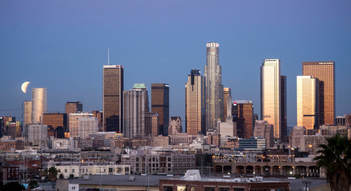 Los Angeles
Los Angeles 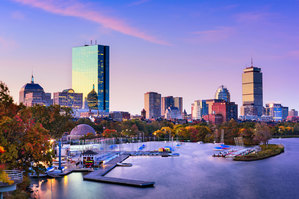 Boston
Skyscapers
Boston
Skyscapers
 The U.S. Bank Tower
The U.S. Bank Tower 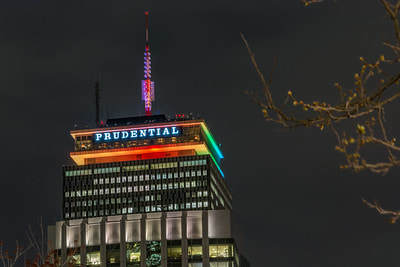 The Prudential Tower The U.S. Bank Tower in Downton Los Angeles might be the second tallest building in Los Angeles, but it is the most famous and most recognizable skyscraper in all of Southern California. In 2016, the new owners of the skyscraper opened up an observation deck called the OUE Skyspace on the 69th and 70th floors, including a restaurant named 71Above (on the 71st floor of course) AND included a transparent glass slide affixed to the outside of the building between the 70th and 69th floors. So you can see the entire city of Los Angles and beyond while sliding smoothly.
The Prudential Tower The U.S. Bank Tower in Downton Los Angeles might be the second tallest building in Los Angeles, but it is the most famous and most recognizable skyscraper in all of Southern California. In 2016, the new owners of the skyscraper opened up an observation deck called the OUE Skyspace on the 69th and 70th floors, including a restaurant named 71Above (on the 71st floor of course) AND included a transparent glass slide affixed to the outside of the building between the 70th and 69th floors. So you can see the entire city of Los Angles and beyond while sliding smoothly. 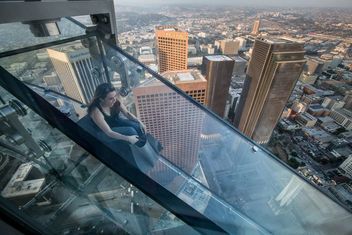 The Prudential Tower (otherwise known as The Pru to the locals) stands as the tallest building in Boston thanks to it’s radio mast, rising to 907 feet in height. The building has a total of 52 floors that includes the restaurant Top of the Hub – which occupies all of the 52nd floor. While reserving a table might cost you a $25 cover charge, you can happily sit at the bar at The Top of the Hub free of charge if you order a drink or a light dessert. But then below, on the 50th floor is the Skywalk Observatory, which has been hailed as the highest observation deck in all of New England. Now that’s a one of a kind view.
The Prudential Tower (otherwise known as The Pru to the locals) stands as the tallest building in Boston thanks to it’s radio mast, rising to 907 feet in height. The building has a total of 52 floors that includes the restaurant Top of the Hub – which occupies all of the 52nd floor. While reserving a table might cost you a $25 cover charge, you can happily sit at the bar at The Top of the Hub free of charge if you order a drink or a light dessert. But then below, on the 50th floor is the Skywalk Observatory, which has been hailed as the highest observation deck in all of New England. Now that’s a one of a kind view.
 Burgers
Burgers
 In-N-Out Burger
In-N-Out Burger  Tasty Burger Listen, I am a native Californian. And personally, whenever I am asked the question, “Is In-N-Out better than Shake Shack?” an angel dies. Because I LOVE In-N-Out. If I had to pick one thing that would encompass the embodiment of what it means to be a Californian, In-N-Out would be it. This burger is perfection on a bun. The whole In-N-Out experience puts Californians into a special state of mind. When you get off the plane at LAX, do you go straight home or to your hotel? Nope. You go to In-N-Out first, and you go to In-N-Out on the way back to the airport. Besides their Animal Style Fries and their Double Doubles, In-N-Out is not about the burger, but about the community behind the burger. So this obviously isn’t In-N-Out. But if you’re living on the East Coast you might as well acclimate to whatever the equivalent to In-N-Out Burger is. In Boston, this would be Tasty Burger. Now Tasty Burger is the official hamburger to the Boston Red Sox and has been serving the public since 2010. And while they don’t serve Animal Style Fries, they do serve beer on tap. Mostly from Boston’s local brews like Harpoon, Sam Adams and Narragansett. The chain further blues the lines between fast-casual and full-service dining, with takeout ordering, build-your-own burgers and full table service. More so, their onion rings are the chain’s tour de force. Their thinly sliced red-onion strings fried to a golden, greasy crisp will have you be licking your fingers.
Tasty Burger Listen, I am a native Californian. And personally, whenever I am asked the question, “Is In-N-Out better than Shake Shack?” an angel dies. Because I LOVE In-N-Out. If I had to pick one thing that would encompass the embodiment of what it means to be a Californian, In-N-Out would be it. This burger is perfection on a bun. The whole In-N-Out experience puts Californians into a special state of mind. When you get off the plane at LAX, do you go straight home or to your hotel? Nope. You go to In-N-Out first, and you go to In-N-Out on the way back to the airport. Besides their Animal Style Fries and their Double Doubles, In-N-Out is not about the burger, but about the community behind the burger. So this obviously isn’t In-N-Out. But if you’re living on the East Coast you might as well acclimate to whatever the equivalent to In-N-Out Burger is. In Boston, this would be Tasty Burger. Now Tasty Burger is the official hamburger to the Boston Red Sox and has been serving the public since 2010. And while they don’t serve Animal Style Fries, they do serve beer on tap. Mostly from Boston’s local brews like Harpoon, Sam Adams and Narragansett. The chain further blues the lines between fast-casual and full-service dining, with takeout ordering, build-your-own burgers and full table service. More so, their onion rings are the chain’s tour de force. Their thinly sliced red-onion strings fried to a golden, greasy crisp will have you be licking your fingers. 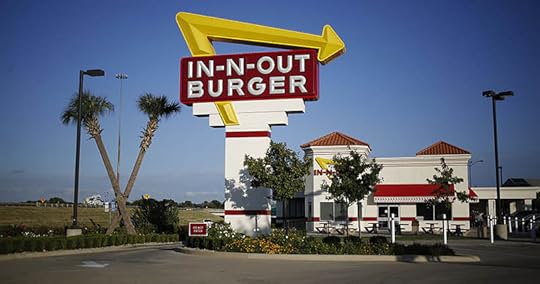
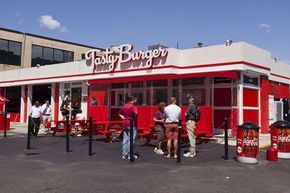 Weather
Weather
 Sunny & Hot
Sunny & Hot 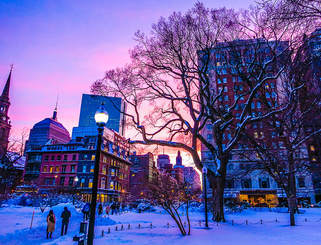 Seasonal Year Round This is probably the most obvious comparison between these two cities. LA is usually is on a scale. It is either really sunny or really hot. Sunny can be categorized – in LA standards – as having nice, comfortable weather 9 out of 12 months. But the remaining 3 of these 12 months are wild cards and these months are smack-dab in the middle of summer. Average temperatures this past July were among the hottest ever on recorded in Southern California, according to the National Weather Service. This might be because the strong high pressure systems and lower amounts of marine layer than the region typically gets, contributed to this year’s the stifling heat. But when it’s not too hot, you have the San Gabriel Mountains to thank you for keeping this city cool even on it’s hottest of days. Boston is the type of city that at least displays all four seasons. When it is summer, it is hot. When it is fall, it is crisp and you can witness the leaves changing right before your very eyes. When it is winter, it is snowy – although it can sometimes be a little too snowy. And when it is spring, it rains. There’s a certain beauty that at least comes with viewing all four seasons. But because it is New England after all, the weather can sometimes be bipolar. One minute it will be sunny, and the next it will be a complete downpour. That being said, if you don’t normally get to experience the changing of seasons, Boston is the city that makes an impact by being distinctive with all four of these seasons. So if you enjoy leafy pathways, building snowmen, warm summers and fresh spring air, Boston is the perfect city to provide all of your seasonal experiences.
Seasonal Year Round This is probably the most obvious comparison between these two cities. LA is usually is on a scale. It is either really sunny or really hot. Sunny can be categorized – in LA standards – as having nice, comfortable weather 9 out of 12 months. But the remaining 3 of these 12 months are wild cards and these months are smack-dab in the middle of summer. Average temperatures this past July were among the hottest ever on recorded in Southern California, according to the National Weather Service. This might be because the strong high pressure systems and lower amounts of marine layer than the region typically gets, contributed to this year’s the stifling heat. But when it’s not too hot, you have the San Gabriel Mountains to thank you for keeping this city cool even on it’s hottest of days. Boston is the type of city that at least displays all four seasons. When it is summer, it is hot. When it is fall, it is crisp and you can witness the leaves changing right before your very eyes. When it is winter, it is snowy – although it can sometimes be a little too snowy. And when it is spring, it rains. There’s a certain beauty that at least comes with viewing all four seasons. But because it is New England after all, the weather can sometimes be bipolar. One minute it will be sunny, and the next it will be a complete downpour. That being said, if you don’t normally get to experience the changing of seasons, Boston is the city that makes an impact by being distinctive with all four of these seasons. So if you enjoy leafy pathways, building snowmen, warm summers and fresh spring air, Boston is the perfect city to provide all of your seasonal experiences. 
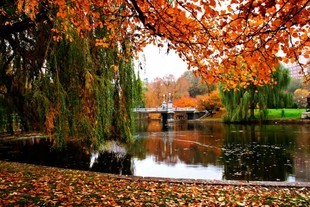 Sports
Sports
 The Lakers, The Kings, The Rams & The Dodgers
The Lakers, The Kings, The Rams & The Dodgers  The Red Sox, The Patriots, The Celtics & The Bruins For as long as I’ve lived in California, I have always considered LA as the seat of power in the entertainment industry instead of a sporty city. That was, of course, before LA decided to be an NFL town again by bringing back The Rams. However, LA is still struggling to become a sports mecca city. Angelinos come to the games late and leave early. They are bandwagon riders. To say that Angelinos‘ care about sports is nothing in comparison to the love and passion East Coasters have to their own sports teams. That being said, the stands do get filled for every Laker and Dodger Game. The best rule of thumb for sussing out someone’s dedication to the home team here in LA is this: the farther away from the action they are, the more important the game is to that person. Plus LA does have some winning sports teams. The Lakers have 16 NBA championships. The Dodgers have won five World Series since moving from Brooklyn. The Kings have two Stanley Cups wins in the last six years. And the Rams . . . well, we shall see what becomes of them. Oh, and we recently got LeBron! There’s no question as to why Boston is regarded as one of the greatest sport cities in American. This century alone, Boston has won more championship titles in the big four professional sports (baseball, football, basketball and ice hockey) than any other US city. And each team has at least won one title. It’s no joke when Bostonians say that they “love” their team. The Red Sox recently set a Major League Baseball record with a sellout streak at Fenway Park of 820 games. And if you want to purchase season tickets to the New England Patriots, don’t expect it to happen in this lifetime. The waiting list is said to be more than 50,000 strong. So why is Boston all hyped up with their sports teams? It might have something to do with how Bostonians individually identify themselves with their own sports team. Even when the Rox lose, Tom Brady misses that throw, the buzzer goes off early for the Celtics and its zero points for the Bruins, Bostonians will never give up their love of their sports team. Now, that is dedication.
The Red Sox, The Patriots, The Celtics & The Bruins For as long as I’ve lived in California, I have always considered LA as the seat of power in the entertainment industry instead of a sporty city. That was, of course, before LA decided to be an NFL town again by bringing back The Rams. However, LA is still struggling to become a sports mecca city. Angelinos come to the games late and leave early. They are bandwagon riders. To say that Angelinos‘ care about sports is nothing in comparison to the love and passion East Coasters have to their own sports teams. That being said, the stands do get filled for every Laker and Dodger Game. The best rule of thumb for sussing out someone’s dedication to the home team here in LA is this: the farther away from the action they are, the more important the game is to that person. Plus LA does have some winning sports teams. The Lakers have 16 NBA championships. The Dodgers have won five World Series since moving from Brooklyn. The Kings have two Stanley Cups wins in the last six years. And the Rams . . . well, we shall see what becomes of them. Oh, and we recently got LeBron! There’s no question as to why Boston is regarded as one of the greatest sport cities in American. This century alone, Boston has won more championship titles in the big four professional sports (baseball, football, basketball and ice hockey) than any other US city. And each team has at least won one title. It’s no joke when Bostonians say that they “love” their team. The Red Sox recently set a Major League Baseball record with a sellout streak at Fenway Park of 820 games. And if you want to purchase season tickets to the New England Patriots, don’t expect it to happen in this lifetime. The waiting list is said to be more than 50,000 strong. So why is Boston all hyped up with their sports teams? It might have something to do with how Bostonians individually identify themselves with their own sports team. Even when the Rox lose, Tom Brady misses that throw, the buzzer goes off early for the Celtics and its zero points for the Bruins, Bostonians will never give up their love of their sports team. Now, that is dedication.
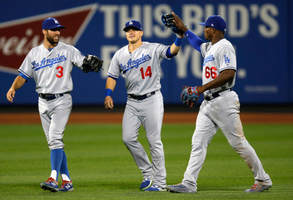
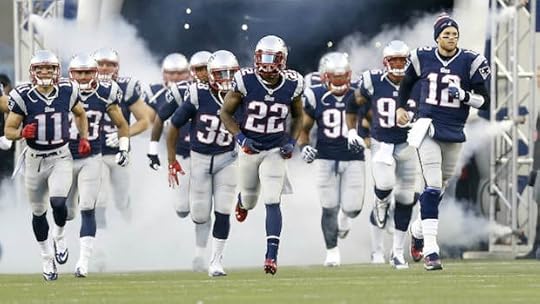 Transportation
Transportation
 The LA Metro
The LA Metro  The T In Los Angeles, we have the LA Metro. It is a rail and bus transit system and the third most comprehensive system in the entire USA. However, overall LA Metro ridership figures have been waning steadily. And that’s just because LA is a transient city in which you NEED a car to help you get from Point A to Point B. Plus, the fact that the price of motor fuel has been relatively low in recent years has also contributed to Angelenos opting for their cars instead. And if that isn’t enough, LA Metro is fighting against an image problem. Unreliability is partially responsible. Metro Buses are having a hard time staying on time. That’s what happens when you try to push public transportation to a city that has already adapted without it.
The T In Los Angeles, we have the LA Metro. It is a rail and bus transit system and the third most comprehensive system in the entire USA. However, overall LA Metro ridership figures have been waning steadily. And that’s just because LA is a transient city in which you NEED a car to help you get from Point A to Point B. Plus, the fact that the price of motor fuel has been relatively low in recent years has also contributed to Angelenos opting for their cars instead. And if that isn’t enough, LA Metro is fighting against an image problem. Unreliability is partially responsible. Metro Buses are having a hard time staying on time. That’s what happens when you try to push public transportation to a city that has already adapted without it.  In Boston, we have the T. Boston’s public transportation system is operated by the Massachusetts Bay Transportation Authority. But the locals know it simply as the “T.” It offers, subways, buses, trolly cars and boat services to just about everywhere in the Greater Boston area and beyond. Boston may be “America’s Walking City,” but Boston also features an extensive public transportation system to help anyone new to the city navigate it smoothy from Harvard to the Harbor. Getting around Boston on public transportation can save anyone time, stress and money. Unlike LA, Boston is a very walkabout city with much to do. And the city’s compact size means that anyone can walk almost anywhere in less time than retrieving a car from a hotel parking lot.
In Boston, we have the T. Boston’s public transportation system is operated by the Massachusetts Bay Transportation Authority. But the locals know it simply as the “T.” It offers, subways, buses, trolly cars and boat services to just about everywhere in the Greater Boston area and beyond. Boston may be “America’s Walking City,” but Boston also features an extensive public transportation system to help anyone new to the city navigate it smoothy from Harvard to the Harbor. Getting around Boston on public transportation can save anyone time, stress and money. Unlike LA, Boston is a very walkabout city with much to do. And the city’s compact size means that anyone can walk almost anywhere in less time than retrieving a car from a hotel parking lot.  People
People
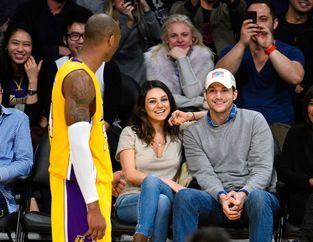 Celebrities
Celebrities  Politicians There’s a reason why Los Angeles’s nickname is La-La-Land. Not only is the city famous for it’s weather – and therefore the ideal location for shoots), but Los Angeles is every actor’s rite of passage. LA is understandably the hub to a large number of film and television productions and still holds the world’s largest group of production studios than any other city in the world. Okay, so, yes it’s true that you might run into a celebrity while you’re in LA. But it won’t be while you’re walking down on Hollywood Boulevard. Usually at Laker games you can spot a celebrity or two with court-side seats. But that’s just the appeal if you’re looking to be an actor in LA.
Politicians There’s a reason why Los Angeles’s nickname is La-La-Land. Not only is the city famous for it’s weather – and therefore the ideal location for shoots), but Los Angeles is every actor’s rite of passage. LA is understandably the hub to a large number of film and television productions and still holds the world’s largest group of production studios than any other city in the world. Okay, so, yes it’s true that you might run into a celebrity while you’re in LA. But it won’t be while you’re walking down on Hollywood Boulevard. Usually at Laker games you can spot a celebrity or two with court-side seats. But that’s just the appeal if you’re looking to be an actor in LA.  While LA may be where you will find a network of actors, Boston is the center point for up-and-coming politicians. From Barney Frank to Marty Walsh, Boston has been the center the socially progressive movements as early as the 19th century. The city has become a stronghold for people who seek to get into politics and become the next Joe Kennedy. Not to mention that a lot of local former Boston politicians still live around the city. John Kerry can be seen walking his dog, Ben in the Boston Commons in the late afternoon. You might just have a chance to ask him his two cents on his stance of the current government.
While LA may be where you will find a network of actors, Boston is the center point for up-and-coming politicians. From Barney Frank to Marty Walsh, Boston has been the center the socially progressive movements as early as the 19th century. The city has become a stronghold for people who seek to get into politics and become the next Joe Kennedy. Not to mention that a lot of local former Boston politicians still live around the city. John Kerry can be seen walking his dog, Ben in the Boston Commons in the late afternoon. You might just have a chance to ask him his two cents on his stance of the current government.  History
History
 Spanish History
Spanish History 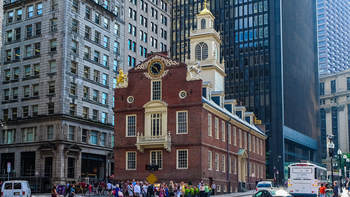 Colonial History El Pueblo de la Reina de Los Angeles (The Town of the Queen of Angels) was officially founded on September 4, 1781. The settlement was part of Spain’s colonization of California, which began in the 1760’s as a reaction to the Russian advancement into Alaska and Northern California. That’s why whenever you visit Los Angeles you’ll see a couple of adobe missions from the early Spanish explorations.
Colonial History El Pueblo de la Reina de Los Angeles (The Town of the Queen of Angels) was officially founded on September 4, 1781. The settlement was part of Spain’s colonization of California, which began in the 1760’s as a reaction to the Russian advancement into Alaska and Northern California. That’s why whenever you visit Los Angeles you’ll see a couple of adobe missions from the early Spanish explorations.  Governor Winthrop announced the foundation of the town of Boston on September 7, 1630 with the place named after the town of Boston, in the English country of Lincolnshire, from which several prominent colonists emigrated. Early colonists believed that Boston was a community with a special covenant with God, and made it imperative that colonists legislate morality and church attendance in the World of God. To this day, some of the original colonial buildings are still standing in Boston.
Governor Winthrop announced the foundation of the town of Boston on September 7, 1630 with the place named after the town of Boston, in the English country of Lincolnshire, from which several prominent colonists emigrated. Early colonists believed that Boston was a community with a special covenant with God, and made it imperative that colonists legislate morality and church attendance in the World of God. To this day, some of the original colonial buildings are still standing in Boston. 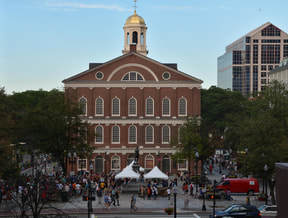 So between these two cities, they both have their perks. You seriously cannot go wrong living in one of these towns.
So between these two cities, they both have their perks. You seriously cannot go wrong living in one of these towns.


Bostonians tend to think that Los Angeles is an ugly maze of freeways where everyone is a Johnny Depp–look-alike– hipster, whereas Angelinos imagine Boston to be this rough and rugged city where the Mayor is mistakenly Whitey Bulger. That is not true by the way, for neither of these assumptions.
First off – to get it out of the way – some of these LA/Boston stereotypes are true. Los Angeles does have too many freeways. So much so that we had to start numbering them (i.e. The 101, The 210, The 5, etc.). And Boston loves their sports teams. And when I mean love, I mean like they eat, breathe and dream about their local sports teams. Tom Brady has entered every Bostonian’s dream at least once since he started helping out the Patriots.
So I get it. I’ve heard all of the clichés and assumptions about both cities. But really, what I like to draw people’s attention to, is the fact that both cities that I have humble connections with are just equally good in their own way. Yes, there are some major differences between the two cities.
There’s the weather . . .
Nope, never mind. That’s the only major difference.
But besides the weather, both cities have a lot of charm and culture to them.
Let me break it down for you.
 Los Angeles
Los Angeles  Boston
Skyscapers
Boston
Skyscapers
 The U.S. Bank Tower
The U.S. Bank Tower  The Prudential Tower The U.S. Bank Tower in Downton Los Angeles might be the second tallest building in Los Angeles, but it is the most famous and most recognizable skyscraper in all of Southern California. In 2016, the new owners of the skyscraper opened up an observation deck called the OUE Skyspace on the 69th and 70th floors, including a restaurant named 71Above (on the 71st floor of course) AND included a transparent glass slide affixed to the outside of the building between the 70th and 69th floors. So you can see the entire city of Los Angles and beyond while sliding smoothly.
The Prudential Tower The U.S. Bank Tower in Downton Los Angeles might be the second tallest building in Los Angeles, but it is the most famous and most recognizable skyscraper in all of Southern California. In 2016, the new owners of the skyscraper opened up an observation deck called the OUE Skyspace on the 69th and 70th floors, including a restaurant named 71Above (on the 71st floor of course) AND included a transparent glass slide affixed to the outside of the building between the 70th and 69th floors. So you can see the entire city of Los Angles and beyond while sliding smoothly.  The Prudential Tower (otherwise known as The Pru to the locals) stands as the tallest building in Boston thanks to it’s radio mast, rising to 907 feet in height. The building has a total of 52 floors that includes the restaurant Top of the Hub – which occupies all of the 52nd floor. While reserving a table might cost you a $25 cover charge, you can happily sit at the bar at The Top of the Hub free of charge if you order a drink or a light dessert. But then below, on the 50th floor is the Skywalk Observatory, which has been hailed as the highest observation deck in all of New England. Now that’s a one of a kind view.
The Prudential Tower (otherwise known as The Pru to the locals) stands as the tallest building in Boston thanks to it’s radio mast, rising to 907 feet in height. The building has a total of 52 floors that includes the restaurant Top of the Hub – which occupies all of the 52nd floor. While reserving a table might cost you a $25 cover charge, you can happily sit at the bar at The Top of the Hub free of charge if you order a drink or a light dessert. But then below, on the 50th floor is the Skywalk Observatory, which has been hailed as the highest observation deck in all of New England. Now that’s a one of a kind view.  Burgers
Burgers
 In-N-Out Burger
In-N-Out Burger  Tasty Burger Listen, I am a native Californian. And personally, whenever I am asked the question, “Is In-N-Out better than Shake Shack?” an angel dies. Because I LOVE In-N-Out. If I had to pick one thing that would encompass the embodiment of what it means to be a Californian, In-N-Out would be it. This burger is perfection on a bun. The whole In-N-Out experience puts Californians into a special state of mind. When you get off the plane at LAX, do you go straight home or to your hotel? Nope. You go to In-N-Out first, and you go to In-N-Out on the way back to the airport. Besides their Animal Style Fries and their Double Doubles, In-N-Out is not about the burger, but about the community behind the burger. So this obviously isn’t In-N-Out. But if you’re living on the East Coast you might as well acclimate to whatever the equivalent to In-N-Out Burger is. In Boston, this would be Tasty Burger. Now Tasty Burger is the official hamburger to the Boston Red Sox and has been serving the public since 2010. And while they don’t serve Animal Style Fries, they do serve beer on tap. Mostly from Boston’s local brews like Harpoon, Sam Adams and Narragansett. The chain further blues the lines between fast-casual and full-service dining, with takeout ordering, build-your-own burgers and full table service. More so, their onion rings are the chain’s tour de force. Their thinly sliced red-onion strings fried to a golden, greasy crisp will have you be licking your fingers.
Tasty Burger Listen, I am a native Californian. And personally, whenever I am asked the question, “Is In-N-Out better than Shake Shack?” an angel dies. Because I LOVE In-N-Out. If I had to pick one thing that would encompass the embodiment of what it means to be a Californian, In-N-Out would be it. This burger is perfection on a bun. The whole In-N-Out experience puts Californians into a special state of mind. When you get off the plane at LAX, do you go straight home or to your hotel? Nope. You go to In-N-Out first, and you go to In-N-Out on the way back to the airport. Besides their Animal Style Fries and their Double Doubles, In-N-Out is not about the burger, but about the community behind the burger. So this obviously isn’t In-N-Out. But if you’re living on the East Coast you might as well acclimate to whatever the equivalent to In-N-Out Burger is. In Boston, this would be Tasty Burger. Now Tasty Burger is the official hamburger to the Boston Red Sox and has been serving the public since 2010. And while they don’t serve Animal Style Fries, they do serve beer on tap. Mostly from Boston’s local brews like Harpoon, Sam Adams and Narragansett. The chain further blues the lines between fast-casual and full-service dining, with takeout ordering, build-your-own burgers and full table service. More so, their onion rings are the chain’s tour de force. Their thinly sliced red-onion strings fried to a golden, greasy crisp will have you be licking your fingers. 
 Weather
Weather
 Sunny & Hot
Sunny & Hot  Seasonal Year Round This is probably the most obvious comparison between these two cities. LA is usually is on a scale. It is either really sunny or really hot. Sunny can be categorized – in LA standards – as having nice, comfortable weather 9 out of 12 months. But the remaining 3 of these 12 months are wild cards and these months are smack-dab in the middle of summer. Average temperatures this past July were among the hottest ever on recorded in Southern California, according to the National Weather Service. This might be because the strong high pressure systems and lower amounts of marine layer than the region typically gets, contributed to this year’s the stifling heat. But when it’s not too hot, you have the San Gabriel Mountains to thank you for keeping this city cool even on it’s hottest of days. Boston is the type of city that at least displays all four seasons. When it is summer, it is hot. When it is fall, it is crisp and you can witness the leaves changing right before your very eyes. When it is winter, it is snowy – although it can sometimes be a little too snowy. And when it is spring, it rains. There’s a certain beauty that at least comes with viewing all four seasons. But because it is New England after all, the weather can sometimes be bipolar. One minute it will be sunny, and the next it will be a complete downpour. That being said, if you don’t normally get to experience the changing of seasons, Boston is the city that makes an impact by being distinctive with all four of these seasons. So if you enjoy leafy pathways, building snowmen, warm summers and fresh spring air, Boston is the perfect city to provide all of your seasonal experiences.
Seasonal Year Round This is probably the most obvious comparison between these two cities. LA is usually is on a scale. It is either really sunny or really hot. Sunny can be categorized – in LA standards – as having nice, comfortable weather 9 out of 12 months. But the remaining 3 of these 12 months are wild cards and these months are smack-dab in the middle of summer. Average temperatures this past July were among the hottest ever on recorded in Southern California, according to the National Weather Service. This might be because the strong high pressure systems and lower amounts of marine layer than the region typically gets, contributed to this year’s the stifling heat. But when it’s not too hot, you have the San Gabriel Mountains to thank you for keeping this city cool even on it’s hottest of days. Boston is the type of city that at least displays all four seasons. When it is summer, it is hot. When it is fall, it is crisp and you can witness the leaves changing right before your very eyes. When it is winter, it is snowy – although it can sometimes be a little too snowy. And when it is spring, it rains. There’s a certain beauty that at least comes with viewing all four seasons. But because it is New England after all, the weather can sometimes be bipolar. One minute it will be sunny, and the next it will be a complete downpour. That being said, if you don’t normally get to experience the changing of seasons, Boston is the city that makes an impact by being distinctive with all four of these seasons. So if you enjoy leafy pathways, building snowmen, warm summers and fresh spring air, Boston is the perfect city to provide all of your seasonal experiences. 
 Sports
Sports
 The Lakers, The Kings, The Rams & The Dodgers
The Lakers, The Kings, The Rams & The Dodgers  The Red Sox, The Patriots, The Celtics & The Bruins For as long as I’ve lived in California, I have always considered LA as the seat of power in the entertainment industry instead of a sporty city. That was, of course, before LA decided to be an NFL town again by bringing back The Rams. However, LA is still struggling to become a sports mecca city. Angelinos come to the games late and leave early. They are bandwagon riders. To say that Angelinos‘ care about sports is nothing in comparison to the love and passion East Coasters have to their own sports teams. That being said, the stands do get filled for every Laker and Dodger Game. The best rule of thumb for sussing out someone’s dedication to the home team here in LA is this: the farther away from the action they are, the more important the game is to that person. Plus LA does have some winning sports teams. The Lakers have 16 NBA championships. The Dodgers have won five World Series since moving from Brooklyn. The Kings have two Stanley Cups wins in the last six years. And the Rams . . . well, we shall see what becomes of them. Oh, and we recently got LeBron! There’s no question as to why Boston is regarded as one of the greatest sport cities in American. This century alone, Boston has won more championship titles in the big four professional sports (baseball, football, basketball and ice hockey) than any other US city. And each team has at least won one title. It’s no joke when Bostonians say that they “love” their team. The Red Sox recently set a Major League Baseball record with a sellout streak at Fenway Park of 820 games. And if you want to purchase season tickets to the New England Patriots, don’t expect it to happen in this lifetime. The waiting list is said to be more than 50,000 strong. So why is Boston all hyped up with their sports teams? It might have something to do with how Bostonians individually identify themselves with their own sports team. Even when the Rox lose, Tom Brady misses that throw, the buzzer goes off early for the Celtics and its zero points for the Bruins, Bostonians will never give up their love of their sports team. Now, that is dedication.
The Red Sox, The Patriots, The Celtics & The Bruins For as long as I’ve lived in California, I have always considered LA as the seat of power in the entertainment industry instead of a sporty city. That was, of course, before LA decided to be an NFL town again by bringing back The Rams. However, LA is still struggling to become a sports mecca city. Angelinos come to the games late and leave early. They are bandwagon riders. To say that Angelinos‘ care about sports is nothing in comparison to the love and passion East Coasters have to their own sports teams. That being said, the stands do get filled for every Laker and Dodger Game. The best rule of thumb for sussing out someone’s dedication to the home team here in LA is this: the farther away from the action they are, the more important the game is to that person. Plus LA does have some winning sports teams. The Lakers have 16 NBA championships. The Dodgers have won five World Series since moving from Brooklyn. The Kings have two Stanley Cups wins in the last six years. And the Rams . . . well, we shall see what becomes of them. Oh, and we recently got LeBron! There’s no question as to why Boston is regarded as one of the greatest sport cities in American. This century alone, Boston has won more championship titles in the big four professional sports (baseball, football, basketball and ice hockey) than any other US city. And each team has at least won one title. It’s no joke when Bostonians say that they “love” their team. The Red Sox recently set a Major League Baseball record with a sellout streak at Fenway Park of 820 games. And if you want to purchase season tickets to the New England Patriots, don’t expect it to happen in this lifetime. The waiting list is said to be more than 50,000 strong. So why is Boston all hyped up with their sports teams? It might have something to do with how Bostonians individually identify themselves with their own sports team. Even when the Rox lose, Tom Brady misses that throw, the buzzer goes off early for the Celtics and its zero points for the Bruins, Bostonians will never give up their love of their sports team. Now, that is dedication. 
 Transportation
Transportation
 The LA Metro
The LA Metro  The T In Los Angeles, we have the LA Metro. It is a rail and bus transit system and the third most comprehensive system in the entire USA. However, overall LA Metro ridership figures have been waning steadily. And that’s just because LA is a transient city in which you NEED a car to help you get from Point A to Point B. Plus, the fact that the price of motor fuel has been relatively low in recent years has also contributed to Angelenos opting for their cars instead. And if that isn’t enough, LA Metro is fighting against an image problem. Unreliability is partially responsible. Metro Buses are having a hard time staying on time. That’s what happens when you try to push public transportation to a city that has already adapted without it.
The T In Los Angeles, we have the LA Metro. It is a rail and bus transit system and the third most comprehensive system in the entire USA. However, overall LA Metro ridership figures have been waning steadily. And that’s just because LA is a transient city in which you NEED a car to help you get from Point A to Point B. Plus, the fact that the price of motor fuel has been relatively low in recent years has also contributed to Angelenos opting for their cars instead. And if that isn’t enough, LA Metro is fighting against an image problem. Unreliability is partially responsible. Metro Buses are having a hard time staying on time. That’s what happens when you try to push public transportation to a city that has already adapted without it.  In Boston, we have the T. Boston’s public transportation system is operated by the Massachusetts Bay Transportation Authority. But the locals know it simply as the “T.” It offers, subways, buses, trolly cars and boat services to just about everywhere in the Greater Boston area and beyond. Boston may be “America’s Walking City,” but Boston also features an extensive public transportation system to help anyone new to the city navigate it smoothy from Harvard to the Harbor. Getting around Boston on public transportation can save anyone time, stress and money. Unlike LA, Boston is a very walkabout city with much to do. And the city’s compact size means that anyone can walk almost anywhere in less time than retrieving a car from a hotel parking lot.
In Boston, we have the T. Boston’s public transportation system is operated by the Massachusetts Bay Transportation Authority. But the locals know it simply as the “T.” It offers, subways, buses, trolly cars and boat services to just about everywhere in the Greater Boston area and beyond. Boston may be “America’s Walking City,” but Boston also features an extensive public transportation system to help anyone new to the city navigate it smoothy from Harvard to the Harbor. Getting around Boston on public transportation can save anyone time, stress and money. Unlike LA, Boston is a very walkabout city with much to do. And the city’s compact size means that anyone can walk almost anywhere in less time than retrieving a car from a hotel parking lot.  People
People
 Celebrities
Celebrities  Politicians There’s a reason why Los Angeles’s nickname is La-La-Land. Not only is the city famous for it’s weather – and therefore the ideal location for shoots), but Los Angeles is every actor’s rite of passage. LA is understandably the hub to a large number of film and television productions and still holds the world’s largest group of production studios than any other city in the world. Okay, so, yes it’s true that you might run into a celebrity while you’re in LA. But it won’t be while you’re walking down on Hollywood Boulevard. Usually at Laker games you can spot a celebrity or two with court-side seats. But that’s just the appeal if you’re looking to be an actor in LA.
Politicians There’s a reason why Los Angeles’s nickname is La-La-Land. Not only is the city famous for it’s weather – and therefore the ideal location for shoots), but Los Angeles is every actor’s rite of passage. LA is understandably the hub to a large number of film and television productions and still holds the world’s largest group of production studios than any other city in the world. Okay, so, yes it’s true that you might run into a celebrity while you’re in LA. But it won’t be while you’re walking down on Hollywood Boulevard. Usually at Laker games you can spot a celebrity or two with court-side seats. But that’s just the appeal if you’re looking to be an actor in LA.  While LA may be where you will find a network of actors, Boston is the center point for up-and-coming politicians. From Barney Frank to Marty Walsh, Boston has been the center the socially progressive movements as early as the 19th century. The city has become a stronghold for people who seek to get into politics and become the next Joe Kennedy. Not to mention that a lot of local former Boston politicians still live around the city. John Kerry can be seen walking his dog, Ben in the Boston Commons in the late afternoon. You might just have a chance to ask him his two cents on his stance of the current government.
While LA may be where you will find a network of actors, Boston is the center point for up-and-coming politicians. From Barney Frank to Marty Walsh, Boston has been the center the socially progressive movements as early as the 19th century. The city has become a stronghold for people who seek to get into politics and become the next Joe Kennedy. Not to mention that a lot of local former Boston politicians still live around the city. John Kerry can be seen walking his dog, Ben in the Boston Commons in the late afternoon. You might just have a chance to ask him his two cents on his stance of the current government.  History
History
 Spanish History
Spanish History  Colonial History El Pueblo de la Reina de Los Angeles (The Town of the Queen of Angels) was officially founded on September 4, 1781. The settlement was part of Spain’s colonization of California, which began in the 1760’s as a reaction to the Russian advancement into Alaska and Northern California. That’s why whenever you visit Los Angeles you’ll see a couple of adobe missions from the early Spanish explorations.
Colonial History El Pueblo de la Reina de Los Angeles (The Town of the Queen of Angels) was officially founded on September 4, 1781. The settlement was part of Spain’s colonization of California, which began in the 1760’s as a reaction to the Russian advancement into Alaska and Northern California. That’s why whenever you visit Los Angeles you’ll see a couple of adobe missions from the early Spanish explorations.  Governor Winthrop announced the foundation of the town of Boston on September 7, 1630 with the place named after the town of Boston, in the English country of Lincolnshire, from which several prominent colonists emigrated. Early colonists believed that Boston was a community with a special covenant with God, and made it imperative that colonists legislate morality and church attendance in the World of God. To this day, some of the original colonial buildings are still standing in Boston.
Governor Winthrop announced the foundation of the town of Boston on September 7, 1630 with the place named after the town of Boston, in the English country of Lincolnshire, from which several prominent colonists emigrated. Early colonists believed that Boston was a community with a special covenant with God, and made it imperative that colonists legislate morality and church attendance in the World of God. To this day, some of the original colonial buildings are still standing in Boston.  So between these two cities, they both have their perks. You seriously cannot go wrong living in one of these towns.
So between these two cities, they both have their perks. You seriously cannot go wrong living in one of these towns. 

Published on August 30, 2018 16:35
July 28, 2018
Beyond Boston
Last month marked my two year anniversary of moving out to Boston, Massachusetts. And all I can say is that I have never felt more welcomed in this city thanks to its people and history.
But this summer, I wanted to try something different: I wanted to explore what was outside of the Greater Boston Area.
As someone who loves history – and who loves tourist traps – I decided to do some research into some of the coolest things outside of Boston.
So get your pencils out and start making your reservations to visit these awesome places around Massachusetts:
1) Old Sturbridge Village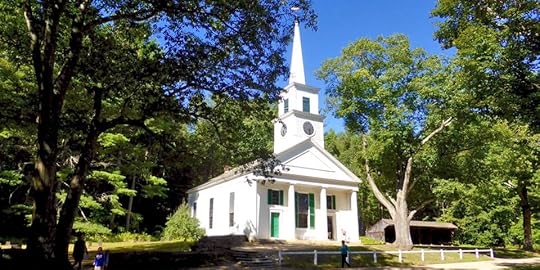 Discover 1830s New England in a blacksmith’s shop, a friendly country store, or amid the awesome beauty of heirloom gardens. Tour the Common with its white-steepled meetinghouse, period homes, and craft shops. Mosey past water-powered mills and “meet” heritage pigs, sheep, and cattle. Walk through woodlands or along the riverbank. Try your hand at nearly forgotten crafts such as textiles, coopering, foodways, and more. Even better, Old Sturbridge Village has seasonal events. Check out the “barnyard babies” in the spring, Baseball (1830s style) all summer long, and enjoy a patriotic Independence Day Celebration on July 4th. Celebrate the fiery foliage and the autumns harvest. Or experience Christmas by Candlelight with a sleigh ride in December.
Discover 1830s New England in a blacksmith’s shop, a friendly country store, or amid the awesome beauty of heirloom gardens. Tour the Common with its white-steepled meetinghouse, period homes, and craft shops. Mosey past water-powered mills and “meet” heritage pigs, sheep, and cattle. Walk through woodlands or along the riverbank. Try your hand at nearly forgotten crafts such as textiles, coopering, foodways, and more. Even better, Old Sturbridge Village has seasonal events. Check out the “barnyard babies” in the spring, Baseball (1830s style) all summer long, and enjoy a patriotic Independence Day Celebration on July 4th. Celebrate the fiery foliage and the autumns harvest. Or experience Christmas by Candlelight with a sleigh ride in December.
2) Plimoth Plantation & Mayflower II The Plimoth Plantation is a hands-on, entertaining living history experience dedicated to the Native Wampanoag and Pilgrim colonists of 17th century Plymouth, Massachusetts. Here, history comes alive with modern relevances for visitors of all ages at this immersive Smithsonian Affiliate museum featuring costumed interpreters and modern day artisans. You can even drive down to the picturesque Plymouth Harbor to view the Mayflower II docked at the State Pier. Fun and educational, the museum is a sensory treat and a must-see while in the New England area.
The Plimoth Plantation is a hands-on, entertaining living history experience dedicated to the Native Wampanoag and Pilgrim colonists of 17th century Plymouth, Massachusetts. Here, history comes alive with modern relevances for visitors of all ages at this immersive Smithsonian Affiliate museum featuring costumed interpreters and modern day artisans. You can even drive down to the picturesque Plymouth Harbor to view the Mayflower II docked at the State Pier. Fun and educational, the museum is a sensory treat and a must-see while in the New England area.
3) Nantucket No visit to Massachusetts is complete without a visit to the island of Nantucket. Located 30 miles south from Cape Cod, and grouped together with the small islands of Tuckernuck and Muskeget, Nantucket is a richly historic town with 82 miles of picture-perfect, highly acclaimed beaches. Within this pastoral island, the Cultural District has a vast array of museums, theaters and galleries to immerse visitors into Nantucket’s diverse treasures. Visit the world-renowned Whaling Museum, which features a fully restored 1847 spermaceti candle factory – that houses the original whale-oil beam press – as well as the 46-foot sperm whale skeleton. Be sure to purchase your tickets early to catch the ferry to this amazing island.
No visit to Massachusetts is complete without a visit to the island of Nantucket. Located 30 miles south from Cape Cod, and grouped together with the small islands of Tuckernuck and Muskeget, Nantucket is a richly historic town with 82 miles of picture-perfect, highly acclaimed beaches. Within this pastoral island, the Cultural District has a vast array of museums, theaters and galleries to immerse visitors into Nantucket’s diverse treasures. Visit the world-renowned Whaling Museum, which features a fully restored 1847 spermaceti candle factory – that houses the original whale-oil beam press – as well as the 46-foot sperm whale skeleton. Be sure to purchase your tickets early to catch the ferry to this amazing island.
4) Martha’s Vineyard Known as the “Storybook Island,” Martha’s Vineyard is a charming island with much to see and much to do. Just to name a few: Aquinnah’s colored cliffs, the marvelous unspoiled beaches, the gingerbread cottages of Oak Bluffs, the elegant Edgartown and its lovely old sea captain’s mansions and sophisticated shops and restaurants of every kind. One you’ve set foot, you’ll want to return again and again. Washed by the Atlantic, Martha Vineyard’s six towns, each special in their own unique way, are just waiting to be discovered.
Known as the “Storybook Island,” Martha’s Vineyard is a charming island with much to see and much to do. Just to name a few: Aquinnah’s colored cliffs, the marvelous unspoiled beaches, the gingerbread cottages of Oak Bluffs, the elegant Edgartown and its lovely old sea captain’s mansions and sophisticated shops and restaurants of every kind. One you’ve set foot, you’ll want to return again and again. Washed by the Atlantic, Martha Vineyard’s six towns, each special in their own unique way, are just waiting to be discovered.
5) Cape Cod Cape Cod offers up the essence of New England summers. Cross the Cape Cod Canal and enter the world of sand dunes and salty beaches. The town of Providenicetown (or P-Town to the locals) is picturesque with multiple detours for fresh seafood and sightseeing. Check out the Cape Cod Maritime Museum, located only steps away from Main Street and the Island ferries. Or take the scenic ‘road’ around the Cape on the steel wheels of the Cape Cod Central Railroad. Or perhaps visit Heritage Museums and Gardens – the largest cultural attraction on the Cape. Whatever you do in Cape Cod you will not be shortchanged of any entertainment.
Cape Cod offers up the essence of New England summers. Cross the Cape Cod Canal and enter the world of sand dunes and salty beaches. The town of Providenicetown (or P-Town to the locals) is picturesque with multiple detours for fresh seafood and sightseeing. Check out the Cape Cod Maritime Museum, located only steps away from Main Street and the Island ferries. Or take the scenic ‘road’ around the Cape on the steel wheels of the Cape Cod Central Railroad. Or perhaps visit Heritage Museums and Gardens – the largest cultural attraction on the Cape. Whatever you do in Cape Cod you will not be shortchanged of any entertainment.
6) Lexington
 Hailed as “the birthplace of liberty,” the town of Lexington boasts with history that defined American identity and culture. You can visit such famous spots as Lexington Battle Green or the Buckman Tavern, where the militia faced off against British regulars. Drop by sites central to the state of the American Revolution, including the Minuteman National Historic Park and the National Heritage Museum.
Hailed as “the birthplace of liberty,” the town of Lexington boasts with history that defined American identity and culture. You can visit such famous spots as Lexington Battle Green or the Buckman Tavern, where the militia faced off against British regulars. Drop by sites central to the state of the American Revolution, including the Minuteman National Historic Park and the National Heritage Museum.
7) Concord
 The town of Concord is central to the story surrounding the start of the American Revolution. Neighboring Lexington – and both laying claim that their town was the one who sparked the American Revolution – Concord is the home to many authors and politicians that gave a voice and identity to American history and literature. Home to a beautiful array of Colonial revival buildings within a tree-lined country road, Concord houses many artifacts of American history. The Concord Museum contains numerous examples of 17th, 18th and 19th century decorative arts. The Old Manse House is where Ralph Waldo Emerson drafted his first published essay, “Nature.” And then there's The Orchard House, where Louisa May Alcott grew up with her family which later inspired her to write Little Women. You’re never lacking in history when visiting Concord.
The town of Concord is central to the story surrounding the start of the American Revolution. Neighboring Lexington – and both laying claim that their town was the one who sparked the American Revolution – Concord is the home to many authors and politicians that gave a voice and identity to American history and literature. Home to a beautiful array of Colonial revival buildings within a tree-lined country road, Concord houses many artifacts of American history. The Concord Museum contains numerous examples of 17th, 18th and 19th century decorative arts. The Old Manse House is where Ralph Waldo Emerson drafted his first published essay, “Nature.” And then there's The Orchard House, where Louisa May Alcott grew up with her family which later inspired her to write Little Women. You’re never lacking in history when visiting Concord.
8) Salem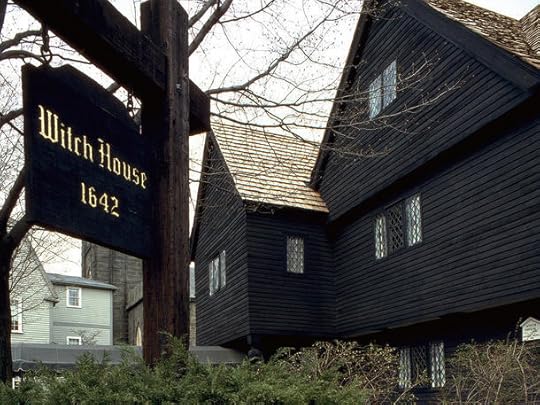 The town of Salem will definitely make you feel like you’re back in 1692. Visitors are given a dramatic history lesson at the Salem Witch Museum, the Salem Heritage Walk and at The House of the Seven Gables. Given Salem’s notorious history with the Salem Witch Trials, the town accepts its reputation as a “spooky” town. Learn about the word ‘witch’ in “Witches-Evolving Perception” at the Salem Witch Museum. Or experience New England’s oldest wooden mansion built in 1668 at The House of the Seven Gables. But if historical homes are not for forte, stop by the Peabody Essex Museum which features unrivaled collections and special exhibitions. Yet, if you’re going to Salem for the ghosts and souls, be sure to visit Salem’s most haunted attraction art the Haunted Footsteps Ghost Tour. There, delve into the macabre humor of Salem’s haunted history. If you don’t believe in witches, you may after visiting this fun little town.
The town of Salem will definitely make you feel like you’re back in 1692. Visitors are given a dramatic history lesson at the Salem Witch Museum, the Salem Heritage Walk and at The House of the Seven Gables. Given Salem’s notorious history with the Salem Witch Trials, the town accepts its reputation as a “spooky” town. Learn about the word ‘witch’ in “Witches-Evolving Perception” at the Salem Witch Museum. Or experience New England’s oldest wooden mansion built in 1668 at The House of the Seven Gables. But if historical homes are not for forte, stop by the Peabody Essex Museum which features unrivaled collections and special exhibitions. Yet, if you’re going to Salem for the ghosts and souls, be sure to visit Salem’s most haunted attraction art the Haunted Footsteps Ghost Tour. There, delve into the macabre humor of Salem’s haunted history. If you don’t believe in witches, you may after visiting this fun little town.
9) The Mount: Edith Wharton's Home
 Located in Lenox, Massachusetts, the 50-acre estate was the seasonal residence of American novelist Edith Wharton from 1902 to 1911. The famed author of The Age of Innocents and Ethan Frome, aided the design of her Georgian-Revival manor. She had a particular passion of symmetry, incorporating fake doorways, windows and other architectural features to maintain the symmetrical lines of her house. In addition, she was also responsible for the design of the estate’s gardens, settled atop a rock outcropping to take advantage of the views of the Berkshires. The gallery allows access to all main rooms, which include the library, den, drawing room, dining room, and staircase. This historical landmark will make any visitor feel like they stepped into one of Wharton’s books.
Located in Lenox, Massachusetts, the 50-acre estate was the seasonal residence of American novelist Edith Wharton from 1902 to 1911. The famed author of The Age of Innocents and Ethan Frome, aided the design of her Georgian-Revival manor. She had a particular passion of symmetry, incorporating fake doorways, windows and other architectural features to maintain the symmetrical lines of her house. In addition, she was also responsible for the design of the estate’s gardens, settled atop a rock outcropping to take advantage of the views of the Berkshires. The gallery allows access to all main rooms, which include the library, den, drawing room, dining room, and staircase. This historical landmark will make any visitor feel like they stepped into one of Wharton’s books.
10) Dr. Seuss Museum Big Dr. Seuss fans can finally visit the newly opened Dr. Seuss Museum in Springfield, Massachusetts. With his crazy mixed-up words, rhyming tongue twisters and colorful characters, the museum is like walking into a literal Dr. Seuss book. The first rooms are dedicated to the author’s life growing up in Springfield, followed by interactive displays and characters from Dr. Seuss’s books. You can listen to Horton’s Whoville band, meet the Cat in the Hat, and climb a Wump with humps. Revisit your favorite childhood author, and you’ll leave feeling like you have a Wocket in your pocket.
Big Dr. Seuss fans can finally visit the newly opened Dr. Seuss Museum in Springfield, Massachusetts. With his crazy mixed-up words, rhyming tongue twisters and colorful characters, the museum is like walking into a literal Dr. Seuss book. The first rooms are dedicated to the author’s life growing up in Springfield, followed by interactive displays and characters from Dr. Seuss’s books. You can listen to Horton’s Whoville band, meet the Cat in the Hat, and climb a Wump with humps. Revisit your favorite childhood author, and you’ll leave feeling like you have a Wocket in your pocket.
Happy traveling!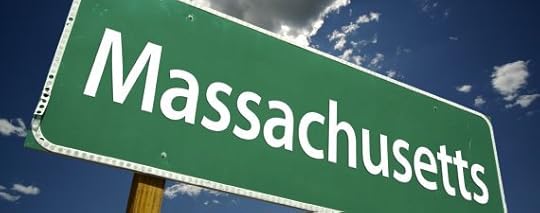
But this summer, I wanted to try something different: I wanted to explore what was outside of the Greater Boston Area.
As someone who loves history – and who loves tourist traps – I decided to do some research into some of the coolest things outside of Boston.
So get your pencils out and start making your reservations to visit these awesome places around Massachusetts:
1) Old Sturbridge Village
 Discover 1830s New England in a blacksmith’s shop, a friendly country store, or amid the awesome beauty of heirloom gardens. Tour the Common with its white-steepled meetinghouse, period homes, and craft shops. Mosey past water-powered mills and “meet” heritage pigs, sheep, and cattle. Walk through woodlands or along the riverbank. Try your hand at nearly forgotten crafts such as textiles, coopering, foodways, and more. Even better, Old Sturbridge Village has seasonal events. Check out the “barnyard babies” in the spring, Baseball (1830s style) all summer long, and enjoy a patriotic Independence Day Celebration on July 4th. Celebrate the fiery foliage and the autumns harvest. Or experience Christmas by Candlelight with a sleigh ride in December.
Discover 1830s New England in a blacksmith’s shop, a friendly country store, or amid the awesome beauty of heirloom gardens. Tour the Common with its white-steepled meetinghouse, period homes, and craft shops. Mosey past water-powered mills and “meet” heritage pigs, sheep, and cattle. Walk through woodlands or along the riverbank. Try your hand at nearly forgotten crafts such as textiles, coopering, foodways, and more. Even better, Old Sturbridge Village has seasonal events. Check out the “barnyard babies” in the spring, Baseball (1830s style) all summer long, and enjoy a patriotic Independence Day Celebration on July 4th. Celebrate the fiery foliage and the autumns harvest. Or experience Christmas by Candlelight with a sleigh ride in December. 2) Plimoth Plantation & Mayflower II
 The Plimoth Plantation is a hands-on, entertaining living history experience dedicated to the Native Wampanoag and Pilgrim colonists of 17th century Plymouth, Massachusetts. Here, history comes alive with modern relevances for visitors of all ages at this immersive Smithsonian Affiliate museum featuring costumed interpreters and modern day artisans. You can even drive down to the picturesque Plymouth Harbor to view the Mayflower II docked at the State Pier. Fun and educational, the museum is a sensory treat and a must-see while in the New England area.
The Plimoth Plantation is a hands-on, entertaining living history experience dedicated to the Native Wampanoag and Pilgrim colonists of 17th century Plymouth, Massachusetts. Here, history comes alive with modern relevances for visitors of all ages at this immersive Smithsonian Affiliate museum featuring costumed interpreters and modern day artisans. You can even drive down to the picturesque Plymouth Harbor to view the Mayflower II docked at the State Pier. Fun and educational, the museum is a sensory treat and a must-see while in the New England area. 3) Nantucket
 No visit to Massachusetts is complete without a visit to the island of Nantucket. Located 30 miles south from Cape Cod, and grouped together with the small islands of Tuckernuck and Muskeget, Nantucket is a richly historic town with 82 miles of picture-perfect, highly acclaimed beaches. Within this pastoral island, the Cultural District has a vast array of museums, theaters and galleries to immerse visitors into Nantucket’s diverse treasures. Visit the world-renowned Whaling Museum, which features a fully restored 1847 spermaceti candle factory – that houses the original whale-oil beam press – as well as the 46-foot sperm whale skeleton. Be sure to purchase your tickets early to catch the ferry to this amazing island.
No visit to Massachusetts is complete without a visit to the island of Nantucket. Located 30 miles south from Cape Cod, and grouped together with the small islands of Tuckernuck and Muskeget, Nantucket is a richly historic town with 82 miles of picture-perfect, highly acclaimed beaches. Within this pastoral island, the Cultural District has a vast array of museums, theaters and galleries to immerse visitors into Nantucket’s diverse treasures. Visit the world-renowned Whaling Museum, which features a fully restored 1847 spermaceti candle factory – that houses the original whale-oil beam press – as well as the 46-foot sperm whale skeleton. Be sure to purchase your tickets early to catch the ferry to this amazing island. 4) Martha’s Vineyard
 Known as the “Storybook Island,” Martha’s Vineyard is a charming island with much to see and much to do. Just to name a few: Aquinnah’s colored cliffs, the marvelous unspoiled beaches, the gingerbread cottages of Oak Bluffs, the elegant Edgartown and its lovely old sea captain’s mansions and sophisticated shops and restaurants of every kind. One you’ve set foot, you’ll want to return again and again. Washed by the Atlantic, Martha Vineyard’s six towns, each special in their own unique way, are just waiting to be discovered.
Known as the “Storybook Island,” Martha’s Vineyard is a charming island with much to see and much to do. Just to name a few: Aquinnah’s colored cliffs, the marvelous unspoiled beaches, the gingerbread cottages of Oak Bluffs, the elegant Edgartown and its lovely old sea captain’s mansions and sophisticated shops and restaurants of every kind. One you’ve set foot, you’ll want to return again and again. Washed by the Atlantic, Martha Vineyard’s six towns, each special in their own unique way, are just waiting to be discovered. 5) Cape Cod
 Cape Cod offers up the essence of New England summers. Cross the Cape Cod Canal and enter the world of sand dunes and salty beaches. The town of Providenicetown (or P-Town to the locals) is picturesque with multiple detours for fresh seafood and sightseeing. Check out the Cape Cod Maritime Museum, located only steps away from Main Street and the Island ferries. Or take the scenic ‘road’ around the Cape on the steel wheels of the Cape Cod Central Railroad. Or perhaps visit Heritage Museums and Gardens – the largest cultural attraction on the Cape. Whatever you do in Cape Cod you will not be shortchanged of any entertainment.
Cape Cod offers up the essence of New England summers. Cross the Cape Cod Canal and enter the world of sand dunes and salty beaches. The town of Providenicetown (or P-Town to the locals) is picturesque with multiple detours for fresh seafood and sightseeing. Check out the Cape Cod Maritime Museum, located only steps away from Main Street and the Island ferries. Or take the scenic ‘road’ around the Cape on the steel wheels of the Cape Cod Central Railroad. Or perhaps visit Heritage Museums and Gardens – the largest cultural attraction on the Cape. Whatever you do in Cape Cod you will not be shortchanged of any entertainment. 6) Lexington
 Hailed as “the birthplace of liberty,” the town of Lexington boasts with history that defined American identity and culture. You can visit such famous spots as Lexington Battle Green or the Buckman Tavern, where the militia faced off against British regulars. Drop by sites central to the state of the American Revolution, including the Minuteman National Historic Park and the National Heritage Museum.
Hailed as “the birthplace of liberty,” the town of Lexington boasts with history that defined American identity and culture. You can visit such famous spots as Lexington Battle Green or the Buckman Tavern, where the militia faced off against British regulars. Drop by sites central to the state of the American Revolution, including the Minuteman National Historic Park and the National Heritage Museum. 7) Concord
 The town of Concord is central to the story surrounding the start of the American Revolution. Neighboring Lexington – and both laying claim that their town was the one who sparked the American Revolution – Concord is the home to many authors and politicians that gave a voice and identity to American history and literature. Home to a beautiful array of Colonial revival buildings within a tree-lined country road, Concord houses many artifacts of American history. The Concord Museum contains numerous examples of 17th, 18th and 19th century decorative arts. The Old Manse House is where Ralph Waldo Emerson drafted his first published essay, “Nature.” And then there's The Orchard House, where Louisa May Alcott grew up with her family which later inspired her to write Little Women. You’re never lacking in history when visiting Concord.
The town of Concord is central to the story surrounding the start of the American Revolution. Neighboring Lexington – and both laying claim that their town was the one who sparked the American Revolution – Concord is the home to many authors and politicians that gave a voice and identity to American history and literature. Home to a beautiful array of Colonial revival buildings within a tree-lined country road, Concord houses many artifacts of American history. The Concord Museum contains numerous examples of 17th, 18th and 19th century decorative arts. The Old Manse House is where Ralph Waldo Emerson drafted his first published essay, “Nature.” And then there's The Orchard House, where Louisa May Alcott grew up with her family which later inspired her to write Little Women. You’re never lacking in history when visiting Concord. 8) Salem
 The town of Salem will definitely make you feel like you’re back in 1692. Visitors are given a dramatic history lesson at the Salem Witch Museum, the Salem Heritage Walk and at The House of the Seven Gables. Given Salem’s notorious history with the Salem Witch Trials, the town accepts its reputation as a “spooky” town. Learn about the word ‘witch’ in “Witches-Evolving Perception” at the Salem Witch Museum. Or experience New England’s oldest wooden mansion built in 1668 at The House of the Seven Gables. But if historical homes are not for forte, stop by the Peabody Essex Museum which features unrivaled collections and special exhibitions. Yet, if you’re going to Salem for the ghosts and souls, be sure to visit Salem’s most haunted attraction art the Haunted Footsteps Ghost Tour. There, delve into the macabre humor of Salem’s haunted history. If you don’t believe in witches, you may after visiting this fun little town.
The town of Salem will definitely make you feel like you’re back in 1692. Visitors are given a dramatic history lesson at the Salem Witch Museum, the Salem Heritage Walk and at The House of the Seven Gables. Given Salem’s notorious history with the Salem Witch Trials, the town accepts its reputation as a “spooky” town. Learn about the word ‘witch’ in “Witches-Evolving Perception” at the Salem Witch Museum. Or experience New England’s oldest wooden mansion built in 1668 at The House of the Seven Gables. But if historical homes are not for forte, stop by the Peabody Essex Museum which features unrivaled collections and special exhibitions. Yet, if you’re going to Salem for the ghosts and souls, be sure to visit Salem’s most haunted attraction art the Haunted Footsteps Ghost Tour. There, delve into the macabre humor of Salem’s haunted history. If you don’t believe in witches, you may after visiting this fun little town. 9) The Mount: Edith Wharton's Home
 Located in Lenox, Massachusetts, the 50-acre estate was the seasonal residence of American novelist Edith Wharton from 1902 to 1911. The famed author of The Age of Innocents and Ethan Frome, aided the design of her Georgian-Revival manor. She had a particular passion of symmetry, incorporating fake doorways, windows and other architectural features to maintain the symmetrical lines of her house. In addition, she was also responsible for the design of the estate’s gardens, settled atop a rock outcropping to take advantage of the views of the Berkshires. The gallery allows access to all main rooms, which include the library, den, drawing room, dining room, and staircase. This historical landmark will make any visitor feel like they stepped into one of Wharton’s books.
Located in Lenox, Massachusetts, the 50-acre estate was the seasonal residence of American novelist Edith Wharton from 1902 to 1911. The famed author of The Age of Innocents and Ethan Frome, aided the design of her Georgian-Revival manor. She had a particular passion of symmetry, incorporating fake doorways, windows and other architectural features to maintain the symmetrical lines of her house. In addition, she was also responsible for the design of the estate’s gardens, settled atop a rock outcropping to take advantage of the views of the Berkshires. The gallery allows access to all main rooms, which include the library, den, drawing room, dining room, and staircase. This historical landmark will make any visitor feel like they stepped into one of Wharton’s books. 10) Dr. Seuss Museum
 Big Dr. Seuss fans can finally visit the newly opened Dr. Seuss Museum in Springfield, Massachusetts. With his crazy mixed-up words, rhyming tongue twisters and colorful characters, the museum is like walking into a literal Dr. Seuss book. The first rooms are dedicated to the author’s life growing up in Springfield, followed by interactive displays and characters from Dr. Seuss’s books. You can listen to Horton’s Whoville band, meet the Cat in the Hat, and climb a Wump with humps. Revisit your favorite childhood author, and you’ll leave feeling like you have a Wocket in your pocket.
Big Dr. Seuss fans can finally visit the newly opened Dr. Seuss Museum in Springfield, Massachusetts. With his crazy mixed-up words, rhyming tongue twisters and colorful characters, the museum is like walking into a literal Dr. Seuss book. The first rooms are dedicated to the author’s life growing up in Springfield, followed by interactive displays and characters from Dr. Seuss’s books. You can listen to Horton’s Whoville band, meet the Cat in the Hat, and climb a Wump with humps. Revisit your favorite childhood author, and you’ll leave feeling like you have a Wocket in your pocket. Happy traveling!

Published on July 28, 2018 10:00
June 30, 2018
Top 10 Best Summer Beach Reads
Ah, summer!
A time for beaches and . . . beach reads!
Come on, you know that nothing connects a person better than reading a good book with your feet in the sand.
I mean, who doesn’t love those books that give you that lazy summer vacation feeling near the shore?
So if you’re planning on heading to the beach anytime soon, be sure to pack one of these great reads with you in your bag: 1) Beautiful Ruins by Jess Walter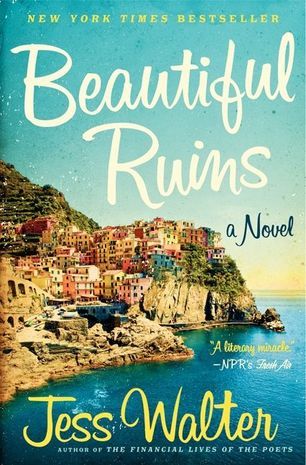 Walter’s story about a love affair that starts on the Italian coast in 1962 is an artful matrix of locales and characters. When a beautiful blond American actress, Dee Moray arrives alone by boat to the fictitious town of Porto Vergogna, she captures the attention of Pasquale Tursi. Pasquale aspires to turn the village into a resort town after dropping out of college to take care of his recently widowed mother and their hotel. The book moves back and forth in time, telling the story of each of the five characters that interact with the others and revolving around the events that take place in Porto Vergogna 50 years later. The book itself opens like a move, and the pages are full of promises for an escapist storyline. More importantly, Beautiful Ruins highlights how even the most insignificant things in a person’s life can unwittingly impact the lives of many others.
Walter’s story about a love affair that starts on the Italian coast in 1962 is an artful matrix of locales and characters. When a beautiful blond American actress, Dee Moray arrives alone by boat to the fictitious town of Porto Vergogna, she captures the attention of Pasquale Tursi. Pasquale aspires to turn the village into a resort town after dropping out of college to take care of his recently widowed mother and their hotel. The book moves back and forth in time, telling the story of each of the five characters that interact with the others and revolving around the events that take place in Porto Vergogna 50 years later. The book itself opens like a move, and the pages are full of promises for an escapist storyline. More importantly, Beautiful Ruins highlights how even the most insignificant things in a person’s life can unwittingly impact the lives of many others.
2) The Lost City of Z: A Tale of Deadly Obsession in the Amazon by David Grann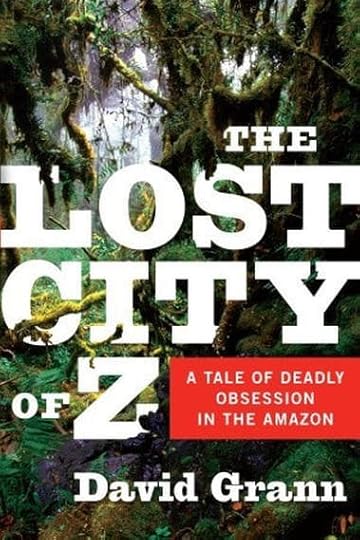 In May 1925, the legendary British explorer, surveyor and archaeologist Lt. Col. Percy Fawcett vanished along with his son Jack and their friend Raleigh Rimmell. It was Fawcett’s eight expedition to the Amazon. Beforehand – in the course of all his travels – Fawcett heard whispers of a kingdom in South America, a civilization overgrown and forgotten. He began spotting clues everywhere, in the customs of the natives, and in oral histories and legends. And thus, he is drawn to issue an expedition to discover this hidden city. Part biography, part detective story and party adventure tale, Grann recreates the great age of exploration in The Lost City of Z. But what makes Fawcett’s story all the more intriguing is the uncertainty of his fate. Was he murdered by hostile natives? Did he starve to death? Did they “go native” willing and decided to remain in the jungle? Or were they killed by the Amazon’s ravenous creatures? One will never know.
In May 1925, the legendary British explorer, surveyor and archaeologist Lt. Col. Percy Fawcett vanished along with his son Jack and their friend Raleigh Rimmell. It was Fawcett’s eight expedition to the Amazon. Beforehand – in the course of all his travels – Fawcett heard whispers of a kingdom in South America, a civilization overgrown and forgotten. He began spotting clues everywhere, in the customs of the natives, and in oral histories and legends. And thus, he is drawn to issue an expedition to discover this hidden city. Part biography, part detective story and party adventure tale, Grann recreates the great age of exploration in The Lost City of Z. But what makes Fawcett’s story all the more intriguing is the uncertainty of his fate. Was he murdered by hostile natives? Did he starve to death? Did they “go native” willing and decided to remain in the jungle? Or were they killed by the Amazon’s ravenous creatures? One will never know.
3) The Opposite of Loneliness by Marina Keegan
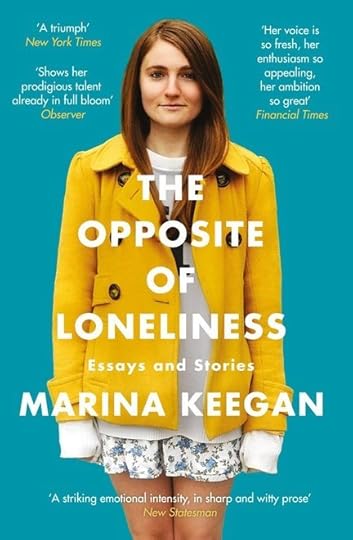 This collection of fiction and non-fiction writings was written while the author was a student at Yale. Keegan graduated on May 21, 2012, having already secured a job at The New Yorker and who had a play set to be produced. Five days later, she died in a car accident. These posthumous essays and stories by a young woman struck down in her prime is a lovely testament to life and love in The Opposite of Loneliness. In “Baggage Claim,’ a conversation between two people holds unspoken feelings. In “Hail, Full of Grace,” a young woman has returned home for the holidays with her adopted infant, and in “Stability in Motion,” Keegan writes about how her first car helped her become who she was. Keegan seems to understand (way beyond her years) the pain of the decision that you may not regret on a daily basis but that come back to haunt you when you least expect them.
This collection of fiction and non-fiction writings was written while the author was a student at Yale. Keegan graduated on May 21, 2012, having already secured a job at The New Yorker and who had a play set to be produced. Five days later, she died in a car accident. These posthumous essays and stories by a young woman struck down in her prime is a lovely testament to life and love in The Opposite of Loneliness. In “Baggage Claim,’ a conversation between two people holds unspoken feelings. In “Hail, Full of Grace,” a young woman has returned home for the holidays with her adopted infant, and in “Stability in Motion,” Keegan writes about how her first car helped her become who she was. Keegan seems to understand (way beyond her years) the pain of the decision that you may not regret on a daily basis but that come back to haunt you when you least expect them.
4) Lincoln in the Bardo by George Saunders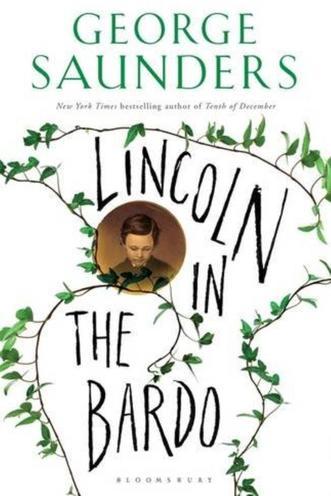 The novel boasts a host of characters, each with their own distinct vernacular, and each with their own story to tell – stories that all come together to paint a picture of the precariousness of life during the civil war, as well as the tragedy of familiar loss. Saunders begins his story during and after the death of Abraham Lincoln’s son, William “Willie” Wallace Lincoln, and examines the president’s grief at his loss. The bulk of the novel (which takes place over the course of a single evening) is set in the bardo, an intermediate space between life and the afterlife. Within the bardo, everyone that Willie’s spirit meets is a person that has died and been buried in the same cemetery as Willie. One of the spirits encourages Willie to pass on to the next stage of the afterlife, as they know that the bardo is a dangerous place of young people. Saunder’s writing is very intricate and precise with the chorus of voices in the bardo. Each narrator is equal in their presentation, and each is distinctive in their delivery.
The novel boasts a host of characters, each with their own distinct vernacular, and each with their own story to tell – stories that all come together to paint a picture of the precariousness of life during the civil war, as well as the tragedy of familiar loss. Saunders begins his story during and after the death of Abraham Lincoln’s son, William “Willie” Wallace Lincoln, and examines the president’s grief at his loss. The bulk of the novel (which takes place over the course of a single evening) is set in the bardo, an intermediate space between life and the afterlife. Within the bardo, everyone that Willie’s spirit meets is a person that has died and been buried in the same cemetery as Willie. One of the spirits encourages Willie to pass on to the next stage of the afterlife, as they know that the bardo is a dangerous place of young people. Saunder’s writing is very intricate and precise with the chorus of voices in the bardo. Each narrator is equal in their presentation, and each is distinctive in their delivery.
5) We Were Liars by E. Lockhart
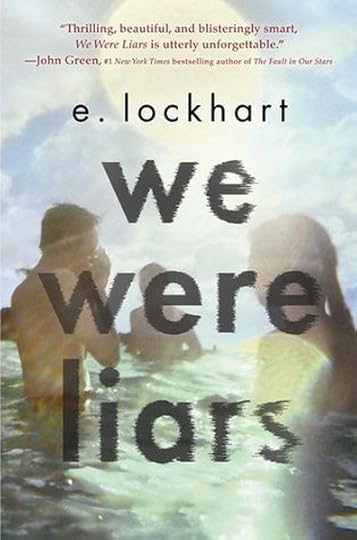 This YA novel is about a wealthy family, the Sinclairs, who spend their summers on their grandfather’s private island, near Martha’s Vineyard. Cadence Sinclair is seventeen going on eighteen. She had an mysterious traumatic brain injury when she was fifteen that ultimately left her with amnesia. Much of the book details her friends and family encouraging to remember what happened two years ago on the island. Cadence particularly remembers the company of “The Lairs”: her cousins, Johnny and Mirren, as well as Gat, the nephew of Johnny’s mother’s boyfriend. The Lairs, including Cadence, are all about the same age; Johnny and Mirren are like the siblings Cadence never had, and Gat immediately steals Cadence’s heart. But something happened that summer when Cadence and Gat fell in love. Something that had some sinister relationship with Cadence’s accident. As Cadence ever-so-gradually begins to recall the events of that summer years ago, the reader discovers that all is not as it seems on the private island. Definitions of family, of loyalty and of acceptance are all deeply tested, and Cadence must redefine for herself what she believes in.
This YA novel is about a wealthy family, the Sinclairs, who spend their summers on their grandfather’s private island, near Martha’s Vineyard. Cadence Sinclair is seventeen going on eighteen. She had an mysterious traumatic brain injury when she was fifteen that ultimately left her with amnesia. Much of the book details her friends and family encouraging to remember what happened two years ago on the island. Cadence particularly remembers the company of “The Lairs”: her cousins, Johnny and Mirren, as well as Gat, the nephew of Johnny’s mother’s boyfriend. The Lairs, including Cadence, are all about the same age; Johnny and Mirren are like the siblings Cadence never had, and Gat immediately steals Cadence’s heart. But something happened that summer when Cadence and Gat fell in love. Something that had some sinister relationship with Cadence’s accident. As Cadence ever-so-gradually begins to recall the events of that summer years ago, the reader discovers that all is not as it seems on the private island. Definitions of family, of loyalty and of acceptance are all deeply tested, and Cadence must redefine for herself what she believes in.
6) Me Talk Pretty One Day by David Sedaris
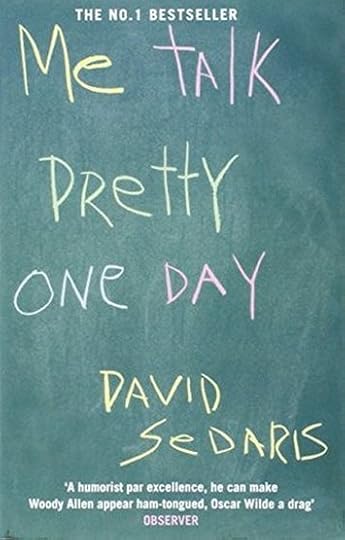 Anything written by David Sedaris is cause for jubilation. But Me Talk Pretty One Day may be just his most acclaimed novel ever. In his collection of essays, Sedaris gives his readers a glimpse into his hysterical and quirky childhood as an outsider in North Carolina. He explores his attempts to learn French when he decides to move to Paris; and in “You Can’t Kill the Rooster,” Sedaris draws a portrait of his brother who begins talking incessantly in hip-hop slang to his bewildered father. The focus is not so much on Sedaris’s family, but rather the anecdotes. Sedaris is endlessly dry, self-deprecating, and able to find the humor in any experience.
Anything written by David Sedaris is cause for jubilation. But Me Talk Pretty One Day may be just his most acclaimed novel ever. In his collection of essays, Sedaris gives his readers a glimpse into his hysterical and quirky childhood as an outsider in North Carolina. He explores his attempts to learn French when he decides to move to Paris; and in “You Can’t Kill the Rooster,” Sedaris draws a portrait of his brother who begins talking incessantly in hip-hop slang to his bewildered father. The focus is not so much on Sedaris’s family, but rather the anecdotes. Sedaris is endlessly dry, self-deprecating, and able to find the humor in any experience.
7) Where’d You Go, Bernadette by Maria Semple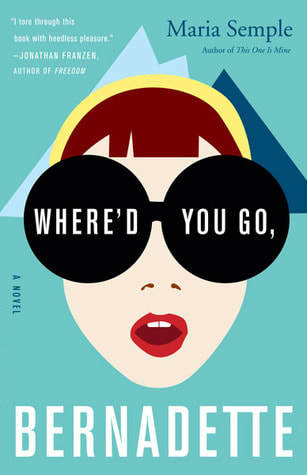 Semple’s sharp and witty novel follows a young girl, Bee, as she pieces together emails, documents, and secret correspondences to find her mother, Bernadette. Bee is precocious, but strong and sweet, a nice counterpoint to her slightly unhinged mother. Bernadette, on the other hand, was an architect in Los Angeles, before she married moved to Seattle with her husband, Elgie. But one day she vanishes. Exploring themes of abandonment, anxiety, and complex familiar relationships, Where’d You Go, Bernadette is a fun and memorable beach read.
Semple’s sharp and witty novel follows a young girl, Bee, as she pieces together emails, documents, and secret correspondences to find her mother, Bernadette. Bee is precocious, but strong and sweet, a nice counterpoint to her slightly unhinged mother. Bernadette, on the other hand, was an architect in Los Angeles, before she married moved to Seattle with her husband, Elgie. But one day she vanishes. Exploring themes of abandonment, anxiety, and complex familiar relationships, Where’d You Go, Bernadette is a fun and memorable beach read.
8) Unbroken by Laura Hillenbrand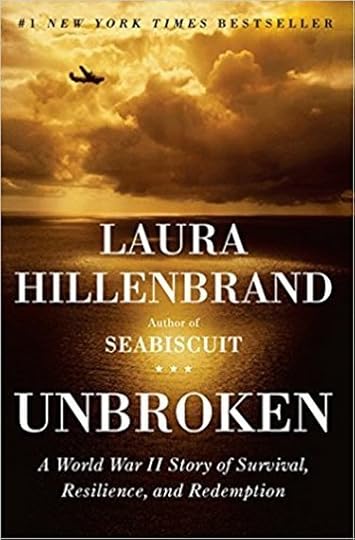 Based upon the incredible true story, Louis “Louie” Zamperini was always in trouble. But with the help of his older brother, he turns his life around and begins channeling his energy into running, later qualifying for the 1936 Olympics. When World War II breaks out, Louie enlists in the military. After his plane crashes in the Pacific , he survives 47 days in a raft, until his capture by the Japanese navy. Hillenbrand sketches the unreliable story of an undisciplined misfit who is on the search for redemption that will leave readers in awe.
Based upon the incredible true story, Louis “Louie” Zamperini was always in trouble. But with the help of his older brother, he turns his life around and begins channeling his energy into running, later qualifying for the 1936 Olympics. When World War II breaks out, Louie enlists in the military. After his plane crashes in the Pacific , he survives 47 days in a raft, until his capture by the Japanese navy. Hillenbrand sketches the unreliable story of an undisciplined misfit who is on the search for redemption that will leave readers in awe.
9) A Man Called Ove by Fredrik Backman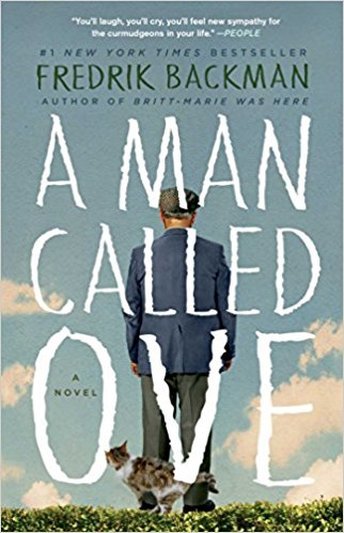 Ove is a curmudgeonly old man. He screams at his neighbors for parking in the wrong place and punches a hospital clown whose magic tricks annoy him. He’s planning to commit suicide until he strikes up an unlikely friendship with two chatty young daughters who move in next-door to him after they accidentally flatten his mailbox. The story moves back and forth between Ove’s childhood and his life as a fifty-nine-year-old man in Sweden. Ove leads a very fixed life, not necessarily taking pleasure in his formulaic way of doing things, but certainly deriving some sense of satisfaction or purpose from it. Backman does an outstanding job of illustrating the development of Ove’s grumpy demeanor from start to finish.
Ove is a curmudgeonly old man. He screams at his neighbors for parking in the wrong place and punches a hospital clown whose magic tricks annoy him. He’s planning to commit suicide until he strikes up an unlikely friendship with two chatty young daughters who move in next-door to him after they accidentally flatten his mailbox. The story moves back and forth between Ove’s childhood and his life as a fifty-nine-year-old man in Sweden. Ove leads a very fixed life, not necessarily taking pleasure in his formulaic way of doing things, but certainly deriving some sense of satisfaction or purpose from it. Backman does an outstanding job of illustrating the development of Ove’s grumpy demeanor from start to finish.
10) The Girl With the Lower Back Tattoo by Amy Schumer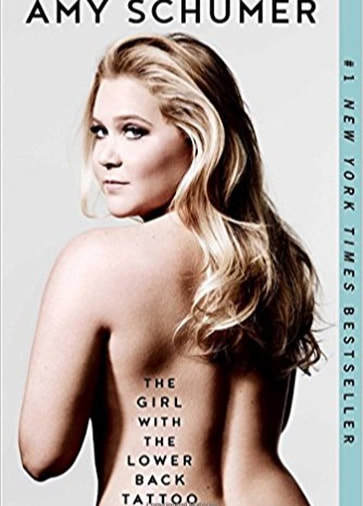 In The Girl with the Lower Back Tattoo, author and comedian Amy Schumer chronicles her past with stories about her teenage years, her family, relationships and shares the experiences that have shaped who she is. Schumer is clear that her novel is definitely not a memoir. She discusses everything from her hared of watercress to her bowel movements before a show, that it is almost hard to imagine what else she could include in an autobiography. As you’d expect of a comedian of Schumer’s calibre, her writing is out loud hilarious and will leave a stitch in your side.
In The Girl with the Lower Back Tattoo, author and comedian Amy Schumer chronicles her past with stories about her teenage years, her family, relationships and shares the experiences that have shaped who she is. Schumer is clear that her novel is definitely not a memoir. She discusses everything from her hared of watercress to her bowel movements before a show, that it is almost hard to imagine what else she could include in an autobiography. As you’d expect of a comedian of Schumer’s calibre, her writing is out loud hilarious and will leave a stitch in your side. 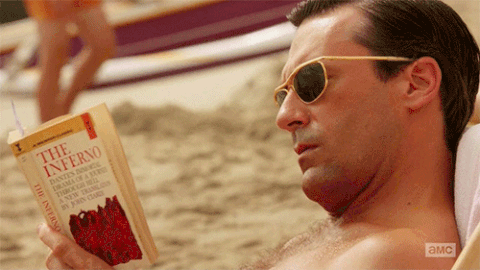 Enjoy those beachy reads this summer.
Enjoy those beachy reads this summer.
A time for beaches and . . . beach reads!
Come on, you know that nothing connects a person better than reading a good book with your feet in the sand.
I mean, who doesn’t love those books that give you that lazy summer vacation feeling near the shore?
So if you’re planning on heading to the beach anytime soon, be sure to pack one of these great reads with you in your bag: 1) Beautiful Ruins by Jess Walter
 Walter’s story about a love affair that starts on the Italian coast in 1962 is an artful matrix of locales and characters. When a beautiful blond American actress, Dee Moray arrives alone by boat to the fictitious town of Porto Vergogna, she captures the attention of Pasquale Tursi. Pasquale aspires to turn the village into a resort town after dropping out of college to take care of his recently widowed mother and their hotel. The book moves back and forth in time, telling the story of each of the five characters that interact with the others and revolving around the events that take place in Porto Vergogna 50 years later. The book itself opens like a move, and the pages are full of promises for an escapist storyline. More importantly, Beautiful Ruins highlights how even the most insignificant things in a person’s life can unwittingly impact the lives of many others.
Walter’s story about a love affair that starts on the Italian coast in 1962 is an artful matrix of locales and characters. When a beautiful blond American actress, Dee Moray arrives alone by boat to the fictitious town of Porto Vergogna, she captures the attention of Pasquale Tursi. Pasquale aspires to turn the village into a resort town after dropping out of college to take care of his recently widowed mother and their hotel. The book moves back and forth in time, telling the story of each of the five characters that interact with the others and revolving around the events that take place in Porto Vergogna 50 years later. The book itself opens like a move, and the pages are full of promises for an escapist storyline. More importantly, Beautiful Ruins highlights how even the most insignificant things in a person’s life can unwittingly impact the lives of many others. 2) The Lost City of Z: A Tale of Deadly Obsession in the Amazon by David Grann
 In May 1925, the legendary British explorer, surveyor and archaeologist Lt. Col. Percy Fawcett vanished along with his son Jack and their friend Raleigh Rimmell. It was Fawcett’s eight expedition to the Amazon. Beforehand – in the course of all his travels – Fawcett heard whispers of a kingdom in South America, a civilization overgrown and forgotten. He began spotting clues everywhere, in the customs of the natives, and in oral histories and legends. And thus, he is drawn to issue an expedition to discover this hidden city. Part biography, part detective story and party adventure tale, Grann recreates the great age of exploration in The Lost City of Z. But what makes Fawcett’s story all the more intriguing is the uncertainty of his fate. Was he murdered by hostile natives? Did he starve to death? Did they “go native” willing and decided to remain in the jungle? Or were they killed by the Amazon’s ravenous creatures? One will never know.
In May 1925, the legendary British explorer, surveyor and archaeologist Lt. Col. Percy Fawcett vanished along with his son Jack and their friend Raleigh Rimmell. It was Fawcett’s eight expedition to the Amazon. Beforehand – in the course of all his travels – Fawcett heard whispers of a kingdom in South America, a civilization overgrown and forgotten. He began spotting clues everywhere, in the customs of the natives, and in oral histories and legends. And thus, he is drawn to issue an expedition to discover this hidden city. Part biography, part detective story and party adventure tale, Grann recreates the great age of exploration in The Lost City of Z. But what makes Fawcett’s story all the more intriguing is the uncertainty of his fate. Was he murdered by hostile natives? Did he starve to death? Did they “go native” willing and decided to remain in the jungle? Or were they killed by the Amazon’s ravenous creatures? One will never know. 3) The Opposite of Loneliness by Marina Keegan
 This collection of fiction and non-fiction writings was written while the author was a student at Yale. Keegan graduated on May 21, 2012, having already secured a job at The New Yorker and who had a play set to be produced. Five days later, she died in a car accident. These posthumous essays and stories by a young woman struck down in her prime is a lovely testament to life and love in The Opposite of Loneliness. In “Baggage Claim,’ a conversation between two people holds unspoken feelings. In “Hail, Full of Grace,” a young woman has returned home for the holidays with her adopted infant, and in “Stability in Motion,” Keegan writes about how her first car helped her become who she was. Keegan seems to understand (way beyond her years) the pain of the decision that you may not regret on a daily basis but that come back to haunt you when you least expect them.
This collection of fiction and non-fiction writings was written while the author was a student at Yale. Keegan graduated on May 21, 2012, having already secured a job at The New Yorker and who had a play set to be produced. Five days later, she died in a car accident. These posthumous essays and stories by a young woman struck down in her prime is a lovely testament to life and love in The Opposite of Loneliness. In “Baggage Claim,’ a conversation between two people holds unspoken feelings. In “Hail, Full of Grace,” a young woman has returned home for the holidays with her adopted infant, and in “Stability in Motion,” Keegan writes about how her first car helped her become who she was. Keegan seems to understand (way beyond her years) the pain of the decision that you may not regret on a daily basis but that come back to haunt you when you least expect them. 4) Lincoln in the Bardo by George Saunders
 The novel boasts a host of characters, each with their own distinct vernacular, and each with their own story to tell – stories that all come together to paint a picture of the precariousness of life during the civil war, as well as the tragedy of familiar loss. Saunders begins his story during and after the death of Abraham Lincoln’s son, William “Willie” Wallace Lincoln, and examines the president’s grief at his loss. The bulk of the novel (which takes place over the course of a single evening) is set in the bardo, an intermediate space between life and the afterlife. Within the bardo, everyone that Willie’s spirit meets is a person that has died and been buried in the same cemetery as Willie. One of the spirits encourages Willie to pass on to the next stage of the afterlife, as they know that the bardo is a dangerous place of young people. Saunder’s writing is very intricate and precise with the chorus of voices in the bardo. Each narrator is equal in their presentation, and each is distinctive in their delivery.
The novel boasts a host of characters, each with their own distinct vernacular, and each with their own story to tell – stories that all come together to paint a picture of the precariousness of life during the civil war, as well as the tragedy of familiar loss. Saunders begins his story during and after the death of Abraham Lincoln’s son, William “Willie” Wallace Lincoln, and examines the president’s grief at his loss. The bulk of the novel (which takes place over the course of a single evening) is set in the bardo, an intermediate space between life and the afterlife. Within the bardo, everyone that Willie’s spirit meets is a person that has died and been buried in the same cemetery as Willie. One of the spirits encourages Willie to pass on to the next stage of the afterlife, as they know that the bardo is a dangerous place of young people. Saunder’s writing is very intricate and precise with the chorus of voices in the bardo. Each narrator is equal in their presentation, and each is distinctive in their delivery. 5) We Were Liars by E. Lockhart
 This YA novel is about a wealthy family, the Sinclairs, who spend their summers on their grandfather’s private island, near Martha’s Vineyard. Cadence Sinclair is seventeen going on eighteen. She had an mysterious traumatic brain injury when she was fifteen that ultimately left her with amnesia. Much of the book details her friends and family encouraging to remember what happened two years ago on the island. Cadence particularly remembers the company of “The Lairs”: her cousins, Johnny and Mirren, as well as Gat, the nephew of Johnny’s mother’s boyfriend. The Lairs, including Cadence, are all about the same age; Johnny and Mirren are like the siblings Cadence never had, and Gat immediately steals Cadence’s heart. But something happened that summer when Cadence and Gat fell in love. Something that had some sinister relationship with Cadence’s accident. As Cadence ever-so-gradually begins to recall the events of that summer years ago, the reader discovers that all is not as it seems on the private island. Definitions of family, of loyalty and of acceptance are all deeply tested, and Cadence must redefine for herself what she believes in.
This YA novel is about a wealthy family, the Sinclairs, who spend their summers on their grandfather’s private island, near Martha’s Vineyard. Cadence Sinclair is seventeen going on eighteen. She had an mysterious traumatic brain injury when she was fifteen that ultimately left her with amnesia. Much of the book details her friends and family encouraging to remember what happened two years ago on the island. Cadence particularly remembers the company of “The Lairs”: her cousins, Johnny and Mirren, as well as Gat, the nephew of Johnny’s mother’s boyfriend. The Lairs, including Cadence, are all about the same age; Johnny and Mirren are like the siblings Cadence never had, and Gat immediately steals Cadence’s heart. But something happened that summer when Cadence and Gat fell in love. Something that had some sinister relationship with Cadence’s accident. As Cadence ever-so-gradually begins to recall the events of that summer years ago, the reader discovers that all is not as it seems on the private island. Definitions of family, of loyalty and of acceptance are all deeply tested, and Cadence must redefine for herself what she believes in. 6) Me Talk Pretty One Day by David Sedaris
 Anything written by David Sedaris is cause for jubilation. But Me Talk Pretty One Day may be just his most acclaimed novel ever. In his collection of essays, Sedaris gives his readers a glimpse into his hysterical and quirky childhood as an outsider in North Carolina. He explores his attempts to learn French when he decides to move to Paris; and in “You Can’t Kill the Rooster,” Sedaris draws a portrait of his brother who begins talking incessantly in hip-hop slang to his bewildered father. The focus is not so much on Sedaris’s family, but rather the anecdotes. Sedaris is endlessly dry, self-deprecating, and able to find the humor in any experience.
Anything written by David Sedaris is cause for jubilation. But Me Talk Pretty One Day may be just his most acclaimed novel ever. In his collection of essays, Sedaris gives his readers a glimpse into his hysterical and quirky childhood as an outsider in North Carolina. He explores his attempts to learn French when he decides to move to Paris; and in “You Can’t Kill the Rooster,” Sedaris draws a portrait of his brother who begins talking incessantly in hip-hop slang to his bewildered father. The focus is not so much on Sedaris’s family, but rather the anecdotes. Sedaris is endlessly dry, self-deprecating, and able to find the humor in any experience. 7) Where’d You Go, Bernadette by Maria Semple
 Semple’s sharp and witty novel follows a young girl, Bee, as she pieces together emails, documents, and secret correspondences to find her mother, Bernadette. Bee is precocious, but strong and sweet, a nice counterpoint to her slightly unhinged mother. Bernadette, on the other hand, was an architect in Los Angeles, before she married moved to Seattle with her husband, Elgie. But one day she vanishes. Exploring themes of abandonment, anxiety, and complex familiar relationships, Where’d You Go, Bernadette is a fun and memorable beach read.
Semple’s sharp and witty novel follows a young girl, Bee, as she pieces together emails, documents, and secret correspondences to find her mother, Bernadette. Bee is precocious, but strong and sweet, a nice counterpoint to her slightly unhinged mother. Bernadette, on the other hand, was an architect in Los Angeles, before she married moved to Seattle with her husband, Elgie. But one day she vanishes. Exploring themes of abandonment, anxiety, and complex familiar relationships, Where’d You Go, Bernadette is a fun and memorable beach read. 8) Unbroken by Laura Hillenbrand
 Based upon the incredible true story, Louis “Louie” Zamperini was always in trouble. But with the help of his older brother, he turns his life around and begins channeling his energy into running, later qualifying for the 1936 Olympics. When World War II breaks out, Louie enlists in the military. After his plane crashes in the Pacific , he survives 47 days in a raft, until his capture by the Japanese navy. Hillenbrand sketches the unreliable story of an undisciplined misfit who is on the search for redemption that will leave readers in awe.
Based upon the incredible true story, Louis “Louie” Zamperini was always in trouble. But with the help of his older brother, he turns his life around and begins channeling his energy into running, later qualifying for the 1936 Olympics. When World War II breaks out, Louie enlists in the military. After his plane crashes in the Pacific , he survives 47 days in a raft, until his capture by the Japanese navy. Hillenbrand sketches the unreliable story of an undisciplined misfit who is on the search for redemption that will leave readers in awe. 9) A Man Called Ove by Fredrik Backman
 Ove is a curmudgeonly old man. He screams at his neighbors for parking in the wrong place and punches a hospital clown whose magic tricks annoy him. He’s planning to commit suicide until he strikes up an unlikely friendship with two chatty young daughters who move in next-door to him after they accidentally flatten his mailbox. The story moves back and forth between Ove’s childhood and his life as a fifty-nine-year-old man in Sweden. Ove leads a very fixed life, not necessarily taking pleasure in his formulaic way of doing things, but certainly deriving some sense of satisfaction or purpose from it. Backman does an outstanding job of illustrating the development of Ove’s grumpy demeanor from start to finish.
Ove is a curmudgeonly old man. He screams at his neighbors for parking in the wrong place and punches a hospital clown whose magic tricks annoy him. He’s planning to commit suicide until he strikes up an unlikely friendship with two chatty young daughters who move in next-door to him after they accidentally flatten his mailbox. The story moves back and forth between Ove’s childhood and his life as a fifty-nine-year-old man in Sweden. Ove leads a very fixed life, not necessarily taking pleasure in his formulaic way of doing things, but certainly deriving some sense of satisfaction or purpose from it. Backman does an outstanding job of illustrating the development of Ove’s grumpy demeanor from start to finish. 10) The Girl With the Lower Back Tattoo by Amy Schumer
 In The Girl with the Lower Back Tattoo, author and comedian Amy Schumer chronicles her past with stories about her teenage years, her family, relationships and shares the experiences that have shaped who she is. Schumer is clear that her novel is definitely not a memoir. She discusses everything from her hared of watercress to her bowel movements before a show, that it is almost hard to imagine what else she could include in an autobiography. As you’d expect of a comedian of Schumer’s calibre, her writing is out loud hilarious and will leave a stitch in your side.
In The Girl with the Lower Back Tattoo, author and comedian Amy Schumer chronicles her past with stories about her teenage years, her family, relationships and shares the experiences that have shaped who she is. Schumer is clear that her novel is definitely not a memoir. She discusses everything from her hared of watercress to her bowel movements before a show, that it is almost hard to imagine what else she could include in an autobiography. As you’d expect of a comedian of Schumer’s calibre, her writing is out loud hilarious and will leave a stitch in your side.  Enjoy those beachy reads this summer.
Enjoy those beachy reads this summer.
Published on June 30, 2018 08:52
May 29, 2018
7 Books to Read In Order To (Somewhat) Survive Adulthood
A couple of weekends ago, I went back to my old stomping grounds at Mount Holyoke College for our Two Year Reunion.
Yeah, you read that right.
My school has a TWO year reunion.
Hey, we’re a really tiny school and we need to build that Alumnae network, that’s why.
Anyway, our Two Year Reunion was almost "too soon" for me. Not enough had happened, and everyone who I had reconnected with from my college days were all still pretty much in the same boat as I was. Everyone was JUST getting started with their lives. Some had immediately left to go back home after graduation to pursue entry level jobs, while others found tiny apartments in big cities while enrolling in graduate programs.
In other words, we were still struggling adults.
Mount Holyoke offered everything a youngling like myself could want – academics, extracurriculars, good friends – and when I had left that campus I also left behind the bubble that was my identity as a college student. Unfortunately, there is no known cure for the deflated feeling one feels after leaving a campus like that. The feeling just persists beyond graduation.
Because it's called adulthood. Last year around this time, I was still a new adult struggling to adjust to my new environment. I was frantically trying to read as many books as I could in the hopes that something within these pages would tell me what to do next with my life. More so, I needed an escape. Since I couldn't pack up and go back to my old college dorm room at Pearson's Hall, getting out of my head was the next best option.
Last year around this time, I was still a new adult struggling to adjust to my new environment. I was frantically trying to read as many books as I could in the hopes that something within these pages would tell me what to do next with my life. More so, I needed an escape. Since I couldn't pack up and go back to my old college dorm room at Pearson's Hall, getting out of my head was the next best option.
But even with all the book suggestions that came my way, I couldn't help but grimaced at the some of the "happy-go-lucky / feel-good" novels that were brought to my attention. I was an adult, and with adulthood comes confusion, overwhelming emotions, loneliness and a slight addiction to Netflix. I needed books that understood me, and felt EXACTLY what I was feeling.
So if you're a recently new adult, know that you are not alone. There are plenty of books out there that combat and even comfort the surprising or outrageously abnormal foreign feelings that (unfortunately) come attached with adulthood. Best of all, after reading these books you are reminded of a very important thing:
The feeling you are currently feeling right now, is NEVER permanent. #1: David Copperfield by Charles Dickens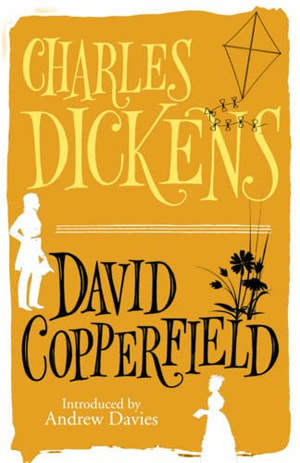 Even in the 1850’s, things still sucked. Dickens’ classic about the still-relatable theme of overcoming awful circumstances to achieve great things is a reminder of the struggles we endure in our twenties. The story follows the life of David Copperfield from childhood to maturity as he accounts his ordeals working in his cruel stepfather’s warehouse, to his assumption into a middle-class society. But any happiness that touches Copperfield’s life is quickly taken away by sorrows before he can fully experience it. Yet Dickens conditions his readers to find happiness in every little thing Copperfield experiences, even if it is fleeting.
Even in the 1850’s, things still sucked. Dickens’ classic about the still-relatable theme of overcoming awful circumstances to achieve great things is a reminder of the struggles we endure in our twenties. The story follows the life of David Copperfield from childhood to maturity as he accounts his ordeals working in his cruel stepfather’s warehouse, to his assumption into a middle-class society. But any happiness that touches Copperfield’s life is quickly taken away by sorrows before he can fully experience it. Yet Dickens conditions his readers to find happiness in every little thing Copperfield experiences, even if it is fleeting.
#2: The House on Mango Street by Sandra Cisneros
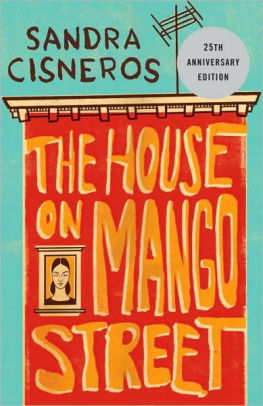 Told through a series of nonlinear vignettes, Cisneros’ beautiful novel about a young Latina teenager growing up into a complex young woman, is sometimes heartbreaking and even sometimes joyous. The novel begins when Esperanza and the rest of her family move into a new house in the Latino section of Chicago. Meanwhile, Esperanza dreams of a life of creativity, independence, but more importantly about the woman she will become once she leaves Mango Street. Cisneros writes pointedly about the universal pangs of otherness and the growing pains of adjusting into adulthood.
Told through a series of nonlinear vignettes, Cisneros’ beautiful novel about a young Latina teenager growing up into a complex young woman, is sometimes heartbreaking and even sometimes joyous. The novel begins when Esperanza and the rest of her family move into a new house in the Latino section of Chicago. Meanwhile, Esperanza dreams of a life of creativity, independence, but more importantly about the woman she will become once she leaves Mango Street. Cisneros writes pointedly about the universal pangs of otherness and the growing pains of adjusting into adulthood.
#3: Adulting: How to Become a Grown-up in 468 Easy(ish) Steps by Kelly Williams Brown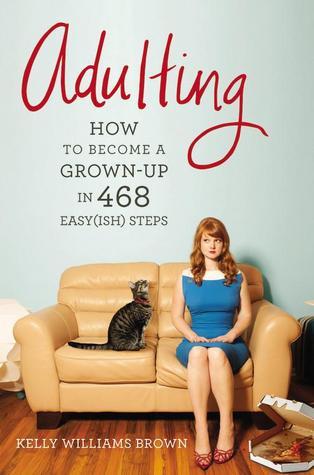 Not a fiction book, but is definitely a book that everyone should read after graduating from college. Williams helps her peers navigate the rocky shoals of maturity to guide us twentysomethings who are just figuring out that food does not spontaneously manifest itself in the fridge overnight. Williams’ counsel doesn’t go unrecognized without a few personal and professional issues. From career advise (“Do not steal more than $3 worth of office supplies per quarter”) to cooking (“Oatmeal gives you an amazing amount of energy, like cocaine, if cocaine were really good for your digestion and didn’t ruin lives”). Adulting tackles multiple serious issues (468 issues to be exact) upon entering the scary adult world. But hey, at least Williams’ whimsical writing, makes the acclimatizing just a little bit more bearable.
Not a fiction book, but is definitely a book that everyone should read after graduating from college. Williams helps her peers navigate the rocky shoals of maturity to guide us twentysomethings who are just figuring out that food does not spontaneously manifest itself in the fridge overnight. Williams’ counsel doesn’t go unrecognized without a few personal and professional issues. From career advise (“Do not steal more than $3 worth of office supplies per quarter”) to cooking (“Oatmeal gives you an amazing amount of energy, like cocaine, if cocaine were really good for your digestion and didn’t ruin lives”). Adulting tackles multiple serious issues (468 issues to be exact) upon entering the scary adult world. But hey, at least Williams’ whimsical writing, makes the acclimatizing just a little bit more bearable.
#4: Sweetbitter by Stephanie Danler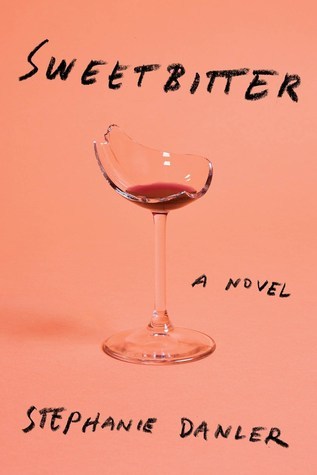 Also known as “Adulting (for Beginners),” Danler’s bestselling nostalgic novel introduces 22-year-old Tess just as she arrives in the Big Apple. But like many fresh university graduates, Tess moves to New York without a plan and without any real clue about what she wants to do with her life. And like so many before and after her, she is ready to launch her adult life. She lands a high-end restaurant gig where she is invited to train and learn all about food, wine and service. Seems easy enough, right? Wrong. On her first day on the job, Tess discovers she’s in way over her head. She breaks plates and glasses, forgets to complete crucial tasks and accidentally puts herself in uncomfortable situations. Yet, Danler’s writing perfectly captures Tess' tumultuous twenties with rose-colored glasses. Just like Tess, everyone in their twenties has at some point moved to a new city or started a new job only to find themselves a little overwhelmed, while trying to find a place for themselves in the world. Yet there’s a gritty rawness to being new, a feeling that Danler can only describe as an homage to wistful youth.
Also known as “Adulting (for Beginners),” Danler’s bestselling nostalgic novel introduces 22-year-old Tess just as she arrives in the Big Apple. But like many fresh university graduates, Tess moves to New York without a plan and without any real clue about what she wants to do with her life. And like so many before and after her, she is ready to launch her adult life. She lands a high-end restaurant gig where she is invited to train and learn all about food, wine and service. Seems easy enough, right? Wrong. On her first day on the job, Tess discovers she’s in way over her head. She breaks plates and glasses, forgets to complete crucial tasks and accidentally puts herself in uncomfortable situations. Yet, Danler’s writing perfectly captures Tess' tumultuous twenties with rose-colored glasses. Just like Tess, everyone in their twenties has at some point moved to a new city or started a new job only to find themselves a little overwhelmed, while trying to find a place for themselves in the world. Yet there’s a gritty rawness to being new, a feeling that Danler can only describe as an homage to wistful youth.
#5: The Assistants by Camille Perri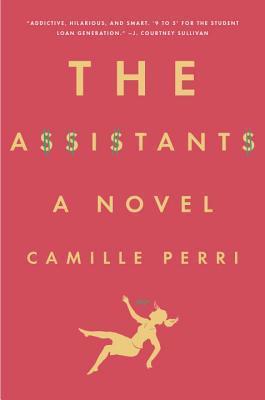 In The Assistants, 30-year-old Tina Fontana works for media titan Robert Barlow. Tina dedicates herself to him, masters his schedule and earns his trust. But Tina also owes thousands in student loans, and she realizes that no matter how hard she works, earning $50k a year in Manhattan will never let her get out from under it. Her friends are in the same boat. They attended expensive colleges only to find themselves in a job market that has them running errands for the rich and famous. The temptation to reach for the money that their bosses spend on meals and jewelry is aggravating. Then when a technical error with Robert’s expense report presents Tina with the opportunity to pay off the entire balance of her loans, she questions whether to take the money, or to learn how to survive with her crushing debt.
In The Assistants, 30-year-old Tina Fontana works for media titan Robert Barlow. Tina dedicates herself to him, masters his schedule and earns his trust. But Tina also owes thousands in student loans, and she realizes that no matter how hard she works, earning $50k a year in Manhattan will never let her get out from under it. Her friends are in the same boat. They attended expensive colleges only to find themselves in a job market that has them running errands for the rich and famous. The temptation to reach for the money that their bosses spend on meals and jewelry is aggravating. Then when a technical error with Robert’s expense report presents Tina with the opportunity to pay off the entire balance of her loans, she questions whether to take the money, or to learn how to survive with her crushing debt.
#6: Modern Lovers by Emma Straub
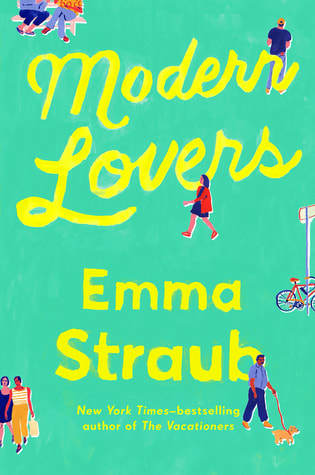 Longtime husband and wife, Elizabeth and Andrew, and their good friends, Zoe and her wife, Jane are trying to sort out their relationships. But eons ago, when Elizabeth, Andrew and Zoe were at Oberlin, they were in a band together. Their fourth band member, Lydia went on to fame and adulation and an early death at 27. This news causes both Elizabeth (who wrote the hit song that made Lydia’s career) and Andrew (who seemed to have a complicated, possibly romantic relationship with Lydia) to re-evaluate the arc of their lives. What’s most satisfying about Modern Lovers is how it captures the lives of its characters, young and old with equal authenticity. It is a novel about the rough transition from youth to adulthood and the need to remember, reimagine and reassess.
Longtime husband and wife, Elizabeth and Andrew, and their good friends, Zoe and her wife, Jane are trying to sort out their relationships. But eons ago, when Elizabeth, Andrew and Zoe were at Oberlin, they were in a band together. Their fourth band member, Lydia went on to fame and adulation and an early death at 27. This news causes both Elizabeth (who wrote the hit song that made Lydia’s career) and Andrew (who seemed to have a complicated, possibly romantic relationship with Lydia) to re-evaluate the arc of their lives. What’s most satisfying about Modern Lovers is how it captures the lives of its characters, young and old with equal authenticity. It is a novel about the rough transition from youth to adulthood and the need to remember, reimagine and reassess.
#7: Rich and Pretty by Rumaan Alam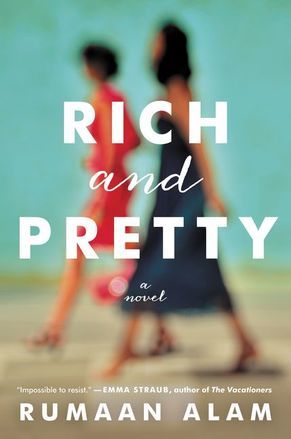 Sarah and Lauren have been best friends since high school, through college, love, jobs and the harsh realities of adult life. Lauren works as an associate editor for a publisher of cookbooks, is single and pursues a carefree, on-the-go lifestyle. In other words, Lauren doesn’t settle. Sarah, the daughter of retired singer and a former advisor to the president leads a charmed life. For Sarah, her biggest fear is that her socialite parents won't approve of her engagement to Dan. But now Sarah and Lauren have been apart for so long. Can two women who now rarely see one another still call themselves best friends? After all, each woman envies and is horrified by particular aspects of the other’s life. Alam explores how the attachments we form in childhood shift as we adapt to our adult lives and how the bonds of friendship endure even when paths diverge.
Sarah and Lauren have been best friends since high school, through college, love, jobs and the harsh realities of adult life. Lauren works as an associate editor for a publisher of cookbooks, is single and pursues a carefree, on-the-go lifestyle. In other words, Lauren doesn’t settle. Sarah, the daughter of retired singer and a former advisor to the president leads a charmed life. For Sarah, her biggest fear is that her socialite parents won't approve of her engagement to Dan. But now Sarah and Lauren have been apart for so long. Can two women who now rarely see one another still call themselves best friends? After all, each woman envies and is horrified by particular aspects of the other’s life. Alam explores how the attachments we form in childhood shift as we adapt to our adult lives and how the bonds of friendship endure even when paths diverge. 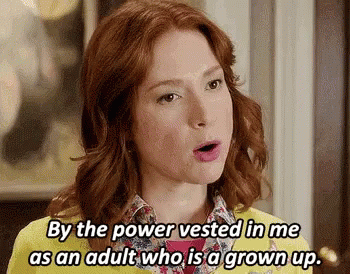 Thankfully, returning to Mount Holyoke's campus also put into perspective the things I didn't really miss about college (i.e. 8:30 AM classes, the communal bathrooms, the tedious homework assignments, etc.) and gave me a small appreciation of what I already had now that I was (somewhat) adulting.
Thankfully, returning to Mount Holyoke's campus also put into perspective the things I didn't really miss about college (i.e. 8:30 AM classes, the communal bathrooms, the tedious homework assignments, etc.) and gave me a small appreciation of what I already had now that I was (somewhat) adulting.
Better yet, the people who I had reconnected with at my college reunion – people who I was really good friends with – were telling me about their interesting adventure while going through adulthood. One friend of mine who I had always liked – mainly because she said hello to everyone she passed on campus, and was always sincere – I was really happy to see again. She told me about her new job, moving to a new city and about a boy she was now dating.
And honestly, I felt really good for her. She genuinely made reunion worth it.
Because sometimes it's worth listening to both the success and struggles of navigating the cutthroat waters of adulthood.
After all, there's no instruction manual on how to live out or lives.
We just have to try and live out the best of it.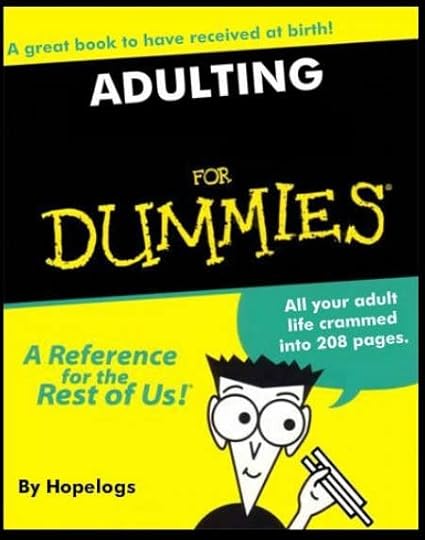
Yeah, you read that right.
My school has a TWO year reunion.
Hey, we’re a really tiny school and we need to build that Alumnae network, that’s why.
Anyway, our Two Year Reunion was almost "too soon" for me. Not enough had happened, and everyone who I had reconnected with from my college days were all still pretty much in the same boat as I was. Everyone was JUST getting started with their lives. Some had immediately left to go back home after graduation to pursue entry level jobs, while others found tiny apartments in big cities while enrolling in graduate programs.
In other words, we were still struggling adults.
Mount Holyoke offered everything a youngling like myself could want – academics, extracurriculars, good friends – and when I had left that campus I also left behind the bubble that was my identity as a college student. Unfortunately, there is no known cure for the deflated feeling one feels after leaving a campus like that. The feeling just persists beyond graduation.
Because it's called adulthood.
 Last year around this time, I was still a new adult struggling to adjust to my new environment. I was frantically trying to read as many books as I could in the hopes that something within these pages would tell me what to do next with my life. More so, I needed an escape. Since I couldn't pack up and go back to my old college dorm room at Pearson's Hall, getting out of my head was the next best option.
Last year around this time, I was still a new adult struggling to adjust to my new environment. I was frantically trying to read as many books as I could in the hopes that something within these pages would tell me what to do next with my life. More so, I needed an escape. Since I couldn't pack up and go back to my old college dorm room at Pearson's Hall, getting out of my head was the next best option.But even with all the book suggestions that came my way, I couldn't help but grimaced at the some of the "happy-go-lucky / feel-good" novels that were brought to my attention. I was an adult, and with adulthood comes confusion, overwhelming emotions, loneliness and a slight addiction to Netflix. I needed books that understood me, and felt EXACTLY what I was feeling.
So if you're a recently new adult, know that you are not alone. There are plenty of books out there that combat and even comfort the surprising or outrageously abnormal foreign feelings that (unfortunately) come attached with adulthood. Best of all, after reading these books you are reminded of a very important thing:
The feeling you are currently feeling right now, is NEVER permanent. #1: David Copperfield by Charles Dickens
 Even in the 1850’s, things still sucked. Dickens’ classic about the still-relatable theme of overcoming awful circumstances to achieve great things is a reminder of the struggles we endure in our twenties. The story follows the life of David Copperfield from childhood to maturity as he accounts his ordeals working in his cruel stepfather’s warehouse, to his assumption into a middle-class society. But any happiness that touches Copperfield’s life is quickly taken away by sorrows before he can fully experience it. Yet Dickens conditions his readers to find happiness in every little thing Copperfield experiences, even if it is fleeting.
Even in the 1850’s, things still sucked. Dickens’ classic about the still-relatable theme of overcoming awful circumstances to achieve great things is a reminder of the struggles we endure in our twenties. The story follows the life of David Copperfield from childhood to maturity as he accounts his ordeals working in his cruel stepfather’s warehouse, to his assumption into a middle-class society. But any happiness that touches Copperfield’s life is quickly taken away by sorrows before he can fully experience it. Yet Dickens conditions his readers to find happiness in every little thing Copperfield experiences, even if it is fleeting. #2: The House on Mango Street by Sandra Cisneros
 Told through a series of nonlinear vignettes, Cisneros’ beautiful novel about a young Latina teenager growing up into a complex young woman, is sometimes heartbreaking and even sometimes joyous. The novel begins when Esperanza and the rest of her family move into a new house in the Latino section of Chicago. Meanwhile, Esperanza dreams of a life of creativity, independence, but more importantly about the woman she will become once she leaves Mango Street. Cisneros writes pointedly about the universal pangs of otherness and the growing pains of adjusting into adulthood.
Told through a series of nonlinear vignettes, Cisneros’ beautiful novel about a young Latina teenager growing up into a complex young woman, is sometimes heartbreaking and even sometimes joyous. The novel begins when Esperanza and the rest of her family move into a new house in the Latino section of Chicago. Meanwhile, Esperanza dreams of a life of creativity, independence, but more importantly about the woman she will become once she leaves Mango Street. Cisneros writes pointedly about the universal pangs of otherness and the growing pains of adjusting into adulthood.#3: Adulting: How to Become a Grown-up in 468 Easy(ish) Steps by Kelly Williams Brown
 Not a fiction book, but is definitely a book that everyone should read after graduating from college. Williams helps her peers navigate the rocky shoals of maturity to guide us twentysomethings who are just figuring out that food does not spontaneously manifest itself in the fridge overnight. Williams’ counsel doesn’t go unrecognized without a few personal and professional issues. From career advise (“Do not steal more than $3 worth of office supplies per quarter”) to cooking (“Oatmeal gives you an amazing amount of energy, like cocaine, if cocaine were really good for your digestion and didn’t ruin lives”). Adulting tackles multiple serious issues (468 issues to be exact) upon entering the scary adult world. But hey, at least Williams’ whimsical writing, makes the acclimatizing just a little bit more bearable.
Not a fiction book, but is definitely a book that everyone should read after graduating from college. Williams helps her peers navigate the rocky shoals of maturity to guide us twentysomethings who are just figuring out that food does not spontaneously manifest itself in the fridge overnight. Williams’ counsel doesn’t go unrecognized without a few personal and professional issues. From career advise (“Do not steal more than $3 worth of office supplies per quarter”) to cooking (“Oatmeal gives you an amazing amount of energy, like cocaine, if cocaine were really good for your digestion and didn’t ruin lives”). Adulting tackles multiple serious issues (468 issues to be exact) upon entering the scary adult world. But hey, at least Williams’ whimsical writing, makes the acclimatizing just a little bit more bearable. #4: Sweetbitter by Stephanie Danler
 Also known as “Adulting (for Beginners),” Danler’s bestselling nostalgic novel introduces 22-year-old Tess just as she arrives in the Big Apple. But like many fresh university graduates, Tess moves to New York without a plan and without any real clue about what she wants to do with her life. And like so many before and after her, she is ready to launch her adult life. She lands a high-end restaurant gig where she is invited to train and learn all about food, wine and service. Seems easy enough, right? Wrong. On her first day on the job, Tess discovers she’s in way over her head. She breaks plates and glasses, forgets to complete crucial tasks and accidentally puts herself in uncomfortable situations. Yet, Danler’s writing perfectly captures Tess' tumultuous twenties with rose-colored glasses. Just like Tess, everyone in their twenties has at some point moved to a new city or started a new job only to find themselves a little overwhelmed, while trying to find a place for themselves in the world. Yet there’s a gritty rawness to being new, a feeling that Danler can only describe as an homage to wistful youth.
Also known as “Adulting (for Beginners),” Danler’s bestselling nostalgic novel introduces 22-year-old Tess just as she arrives in the Big Apple. But like many fresh university graduates, Tess moves to New York without a plan and without any real clue about what she wants to do with her life. And like so many before and after her, she is ready to launch her adult life. She lands a high-end restaurant gig where she is invited to train and learn all about food, wine and service. Seems easy enough, right? Wrong. On her first day on the job, Tess discovers she’s in way over her head. She breaks plates and glasses, forgets to complete crucial tasks and accidentally puts herself in uncomfortable situations. Yet, Danler’s writing perfectly captures Tess' tumultuous twenties with rose-colored glasses. Just like Tess, everyone in their twenties has at some point moved to a new city or started a new job only to find themselves a little overwhelmed, while trying to find a place for themselves in the world. Yet there’s a gritty rawness to being new, a feeling that Danler can only describe as an homage to wistful youth.#5: The Assistants by Camille Perri
 In The Assistants, 30-year-old Tina Fontana works for media titan Robert Barlow. Tina dedicates herself to him, masters his schedule and earns his trust. But Tina also owes thousands in student loans, and she realizes that no matter how hard she works, earning $50k a year in Manhattan will never let her get out from under it. Her friends are in the same boat. They attended expensive colleges only to find themselves in a job market that has them running errands for the rich and famous. The temptation to reach for the money that their bosses spend on meals and jewelry is aggravating. Then when a technical error with Robert’s expense report presents Tina with the opportunity to pay off the entire balance of her loans, she questions whether to take the money, or to learn how to survive with her crushing debt.
In The Assistants, 30-year-old Tina Fontana works for media titan Robert Barlow. Tina dedicates herself to him, masters his schedule and earns his trust. But Tina also owes thousands in student loans, and she realizes that no matter how hard she works, earning $50k a year in Manhattan will never let her get out from under it. Her friends are in the same boat. They attended expensive colleges only to find themselves in a job market that has them running errands for the rich and famous. The temptation to reach for the money that their bosses spend on meals and jewelry is aggravating. Then when a technical error with Robert’s expense report presents Tina with the opportunity to pay off the entire balance of her loans, she questions whether to take the money, or to learn how to survive with her crushing debt.#6: Modern Lovers by Emma Straub
 Longtime husband and wife, Elizabeth and Andrew, and their good friends, Zoe and her wife, Jane are trying to sort out their relationships. But eons ago, when Elizabeth, Andrew and Zoe were at Oberlin, they were in a band together. Their fourth band member, Lydia went on to fame and adulation and an early death at 27. This news causes both Elizabeth (who wrote the hit song that made Lydia’s career) and Andrew (who seemed to have a complicated, possibly romantic relationship with Lydia) to re-evaluate the arc of their lives. What’s most satisfying about Modern Lovers is how it captures the lives of its characters, young and old with equal authenticity. It is a novel about the rough transition from youth to adulthood and the need to remember, reimagine and reassess.
Longtime husband and wife, Elizabeth and Andrew, and their good friends, Zoe and her wife, Jane are trying to sort out their relationships. But eons ago, when Elizabeth, Andrew and Zoe were at Oberlin, they were in a band together. Their fourth band member, Lydia went on to fame and adulation and an early death at 27. This news causes both Elizabeth (who wrote the hit song that made Lydia’s career) and Andrew (who seemed to have a complicated, possibly romantic relationship with Lydia) to re-evaluate the arc of their lives. What’s most satisfying about Modern Lovers is how it captures the lives of its characters, young and old with equal authenticity. It is a novel about the rough transition from youth to adulthood and the need to remember, reimagine and reassess. #7: Rich and Pretty by Rumaan Alam
 Sarah and Lauren have been best friends since high school, through college, love, jobs and the harsh realities of adult life. Lauren works as an associate editor for a publisher of cookbooks, is single and pursues a carefree, on-the-go lifestyle. In other words, Lauren doesn’t settle. Sarah, the daughter of retired singer and a former advisor to the president leads a charmed life. For Sarah, her biggest fear is that her socialite parents won't approve of her engagement to Dan. But now Sarah and Lauren have been apart for so long. Can two women who now rarely see one another still call themselves best friends? After all, each woman envies and is horrified by particular aspects of the other’s life. Alam explores how the attachments we form in childhood shift as we adapt to our adult lives and how the bonds of friendship endure even when paths diverge.
Sarah and Lauren have been best friends since high school, through college, love, jobs and the harsh realities of adult life. Lauren works as an associate editor for a publisher of cookbooks, is single and pursues a carefree, on-the-go lifestyle. In other words, Lauren doesn’t settle. Sarah, the daughter of retired singer and a former advisor to the president leads a charmed life. For Sarah, her biggest fear is that her socialite parents won't approve of her engagement to Dan. But now Sarah and Lauren have been apart for so long. Can two women who now rarely see one another still call themselves best friends? After all, each woman envies and is horrified by particular aspects of the other’s life. Alam explores how the attachments we form in childhood shift as we adapt to our adult lives and how the bonds of friendship endure even when paths diverge.  Thankfully, returning to Mount Holyoke's campus also put into perspective the things I didn't really miss about college (i.e. 8:30 AM classes, the communal bathrooms, the tedious homework assignments, etc.) and gave me a small appreciation of what I already had now that I was (somewhat) adulting.
Thankfully, returning to Mount Holyoke's campus also put into perspective the things I didn't really miss about college (i.e. 8:30 AM classes, the communal bathrooms, the tedious homework assignments, etc.) and gave me a small appreciation of what I already had now that I was (somewhat) adulting.Better yet, the people who I had reconnected with at my college reunion – people who I was really good friends with – were telling me about their interesting adventure while going through adulthood. One friend of mine who I had always liked – mainly because she said hello to everyone she passed on campus, and was always sincere – I was really happy to see again. She told me about her new job, moving to a new city and about a boy she was now dating.
And honestly, I felt really good for her. She genuinely made reunion worth it.
Because sometimes it's worth listening to both the success and struggles of navigating the cutthroat waters of adulthood.
After all, there's no instruction manual on how to live out or lives.
We just have to try and live out the best of it.

Published on May 29, 2018 15:46
April 23, 2018
How To (Literally) Have Breakfast At Tiffany’s
Last month, I went to New York City to visit my God-Sister, Siobhan and her mother. But before my trip, I had comprised a small To Do List of all the things that I wanted to see while I was in The Big Apple (i.e. visit friends, grab boba tea, eat a slice of New York pizza off a paper plate next to the sidewalk). And at the very top of my list, underlined again and again was, “Having Breakfast at Tiffany’s.”  If you never seen the iconic 1961 film adaptation of Truman Capote’s 1958 novella – in which Holly Golightly arrives at the Tiffany & Co flagship store on Fifth Avenue – let me set the scene. (Or watch the video down below).
If you never seen the iconic 1961 film adaptation of Truman Capote’s 1958 novella – in which Holly Golightly arrives at the Tiffany & Co flagship store on Fifth Avenue – let me set the scene. (Or watch the video down below).
FADE IN:
EXT. NEW YORK CITY FIFTH AVENUE – DAWN
The entire block is empty of all other people, until a bright yellow taxi cab drives up the street and stops in front of the jewelry store, Tiffany’s. Stepping out of the cab is a tall, elegant looking young woman. HOLLY GOLIGHTLY. She wears a black ball gown with matching gloves, an elaborate updo, oversized sunglasses, and several lush strands of pearls. As the cab drives away, Holly approaches one of the window displays of the store. She is carrying a small white paper bag. Barely taking her eyes off the diamonds in the window, she opens the bag and removes a cup of coffee and a pastry, which she bites into, as the movie’s theme song, “Moon River” plays in the background.
END SCENE
Anyway, this was such an iconic scene that after the movie came out, people would stand outside the famed jewelry store, sipping their coffee and chewing on their bagels, whilst peeking glances into the store's windows. But since Tiffany’s has always been a preeminent luxury jeweler – and not a place where you could actually have breakfast inside (circa 1837) – that all changed last November.
The newly renovated home-goods floor of the Tiffany & Co. flagship store on Fifth Avenue, had officially opened to the public, introducing The Blue Box Cafe.
So now you can literally have Breakfast at Tiffany’s!!!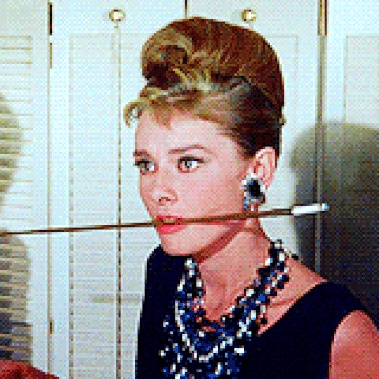 But just to fact-check everything, I looked up the menu of the Blue Box Cafe and, sure enough, they served breakfast – starting at $29. The “Breakfast at Tiffany’s” breakfast (so aptly named) comes with your choice of coffee or tea, followed by a croissant and seasonal fruit, rounded out with your choice of a buttermilk waffle, smoked salmon and bagel stack, truffle eggs or avocado toast.
But just to fact-check everything, I looked up the menu of the Blue Box Cafe and, sure enough, they served breakfast – starting at $29. The “Breakfast at Tiffany’s” breakfast (so aptly named) comes with your choice of coffee or tea, followed by a croissant and seasonal fruit, rounded out with your choice of a buttermilk waffle, smoked salmon and bagel stack, truffle eggs or avocado toast.  But what really sealed the deal for me (although the breakfast options pretty much had me saying, “Shut up and take my money!”) was the cafe’s nod to the long-heralded regality of the store itself. More specifically, their afternoon tea options – starting at $49 (which is actually a REALLY great deal for afternoon tea). Their “Tiffany Tea” menu features teas by Bellocq, as well as a selection of finger sandwiches and bakery items.
But what really sealed the deal for me (although the breakfast options pretty much had me saying, “Shut up and take my money!”) was the cafe’s nod to the long-heralded regality of the store itself. More specifically, their afternoon tea options – starting at $49 (which is actually a REALLY great deal for afternoon tea). Their “Tiffany Tea” menu features teas by Bellocq, as well as a selection of finger sandwiches and bakery items.  Anyway, upon hearing about this new cafe in New York – and in love with their Afternoon Tea menu – this had instantly become my number 1 visit to New York.
Anyway, upon hearing about this new cafe in New York – and in love with their Afternoon Tea menu – this had instantly become my number 1 visit to New York.
Only, there was just one problem: I couldn’t get a reservation.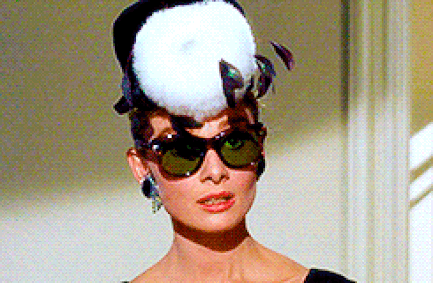 Which wasn’t all that surprising. It was New York, after all. Any restaurant that is new in New York quickly becomes booked for months on end. Especially, if it’s a cafe that had recently opened up inside one of the world’s most famous jewelry stores – with an iconic movie scene incorporated in the pop-culture lexicon as well.
Which wasn’t all that surprising. It was New York, after all. Any restaurant that is new in New York quickly becomes booked for months on end. Especially, if it’s a cafe that had recently opened up inside one of the world’s most famous jewelry stores – with an iconic movie scene incorporated in the pop-culture lexicon as well.
So I went back to my trusty computer. I typed in The Blue Box Cafe into my Google search engine. Clicked on the Tiffany & Co. link, was brought to their cafe web page, clicked on their reservation button . . . and was brought to a page where I was to make my reservation.
However, everything was booked.
Great.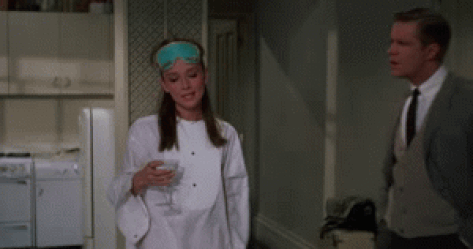 However, I read the fine print on the reservation page: Reservations for The Blue Box Cafe at Tiffany & Co. open 30 days in advance at 9 AM, Eastern Standard Time. If you do not see your desired time available, we suggest that you add yourself to the Notify List to be notified if a reservation becomes available.
However, I read the fine print on the reservation page: Reservations for The Blue Box Cafe at Tiffany & Co. open 30 days in advance at 9 AM, Eastern Standard Time. If you do not see your desired time available, we suggest that you add yourself to the Notify List to be notified if a reservation becomes available.
All right, so this reservation software that Tiffany’s was using for their cafe at least allowed their guests to add their names to their Notify List (which was really a Waitlist). So if you were planning on going to Tiffany’s tomorrow, you probably won’t get a table. But if you knew you were going to be in Manhattan a month in advanced, the odds might play in your favor.
Luckily, I had twenty-five days to finalize everything for my New York trip, so I was in the clear. I selected a date and time before clicking on the "Notify Me" button.
Now all I had to do was wait.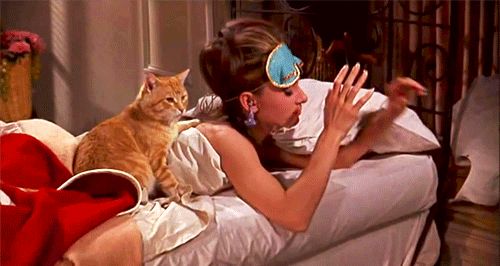 Here’s the thing with these reservations. Resy, the software that Tiffany’s was using to record their guest’s reservations, will kindly tell you when a table is ready. Once you sign up for a reservation you can include your phone number and your email address. Then if there is an opening, the app will notify you, or you will receive an email with the restaurant reservation. However, you will not hear anything from the app or your email. Unless you have programmed your phone to notify you every time you receive an update from the app, or a new message from your email, you might be able to snatch the new opening.
Here’s the thing with these reservations. Resy, the software that Tiffany’s was using to record their guest’s reservations, will kindly tell you when a table is ready. Once you sign up for a reservation you can include your phone number and your email address. Then if there is an opening, the app will notify you, or you will receive an email with the restaurant reservation. However, you will not hear anything from the app or your email. Unless you have programmed your phone to notify you every time you receive an update from the app, or a new message from your email, you might be able to snatch the new opening.
But a week since I had made the reservation on Resy, I kept missing the notifications on my phone and email. I’ll be in a meeting at work, leave my phone at my desk, and would return with two openings for the Blue Box Cafe. But by the time I would log into the app or check my email, the opening would instantly be gone. It was like playing a game of spoons with this app. Some days I would just stare at my phone waiting for a notification to pop up. And if it did, I would jump on it and quickly seize the reservation with my shaky fingers. Days went by, and for some odd reason, I wasn’t fast enough to score a reservation. UNTIL, I was playing HQ on my phone one day and a notification just happened to show up. I exited the game – it was worth it, I promise – and finally got my reservation.
That was the hard part. Next was the follow up research: I had never actually seen Breakfast at Tiffany’s.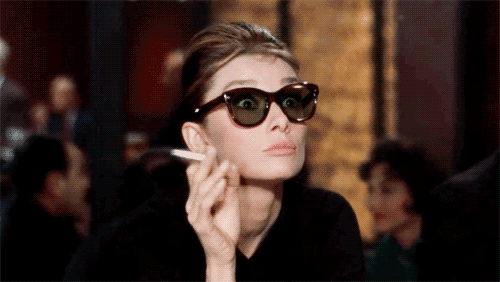 Okay, so I had heard of Breakfast at Tiffany’s. I knew of the iconic little black dress that Audrey Hepburn wore, and I knew that it was a somewhat famous movie.
Okay, so I had heard of Breakfast at Tiffany’s. I knew of the iconic little black dress that Audrey Hepburn wore, and I knew that it was a somewhat famous movie.
I figured, that since I had jumped through all these hoops to get a reservation at this place, I might as well watch the movie that ultimately prompted Tiffany's to open a cafe to the public.
The movie was on Netflix and I sat down to watch it. The plot of the movie was that Holly Golightly was an escort searching for a rich, older man to marry. But in the process she meets a handsome writer who moves into her apartment building. Low and behold, they fall in love and end up together.
But what caught my attention was the fact that the movie was based upon a Truman Capote novella. Intrigued – this was after all part of my research before leaving to have breakfast at Tiffany’s – I bought the novella and read Capote’s story in one sitting.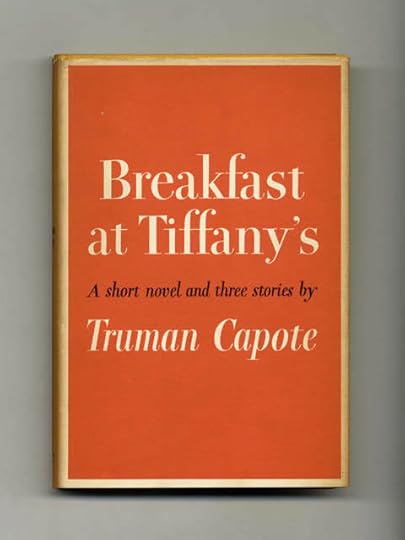 The novella was so much better than the movie – because isn’t that almost always the case with these kinds of things? Yet, the premise of both the novella and the movie were almost identical. In each there is a lonely young writer (unnamed in the book, and Paul Varjack, played by George Peppard, in the film) who stumbles into a friendship with a charming young woman of questionable morality. He learns of her dubious activities: carrying weather reports for a convicted mobster, taking $50 trips to the powder room, and stealing away the future president of Brazil from her best friend. The narrator (in both the novella and in the film) also comes across a Doc Golightly and learns of Holly’s true past as Lulamae Barnes. Additionally, in both versions Holly’s teetering life finally comes crumbling down after receiving a poorly-timed telegraph and an even more poorly-timed arrest.
The novella was so much better than the movie – because isn’t that almost always the case with these kinds of things? Yet, the premise of both the novella and the movie were almost identical. In each there is a lonely young writer (unnamed in the book, and Paul Varjack, played by George Peppard, in the film) who stumbles into a friendship with a charming young woman of questionable morality. He learns of her dubious activities: carrying weather reports for a convicted mobster, taking $50 trips to the powder room, and stealing away the future president of Brazil from her best friend. The narrator (in both the novella and in the film) also comes across a Doc Golightly and learns of Holly’s true past as Lulamae Barnes. Additionally, in both versions Holly’s teetering life finally comes crumbling down after receiving a poorly-timed telegraph and an even more poorly-timed arrest.
But the real difference comes at the ending of both the movie and the novella. According to the movie, once Holly is released from jail she abandons her cat and tells Varjack that she is determined to flee the country and go to Brazil. Varjack on the other hand, tries to convince her to stay by saying:
You know what's wrong with you, Miss Whoever-you-are? You're chicken, you've got no guts. You're afraid to stick out your chin and say, "Okay, life's a fact, people do fall in love, people do belong to each other, because that's the only chance anybody's got for real happiness." You call yourself a free spirit, a "wild thing," and you're terrified somebody's gonna stick you in a cage. Well baby, you're already in that cage. You built it yourself. And it's not bounded in the west by Tulip, Texas, or in the east by Somali-land. It's wherever you go. Because no matter where you run, you just end up running into yourself.
Of course, after hearing Varjack’s speech, Holly has a change of heart, turns back, searches for her cat, realizes that people can belong to one another and that maybe she’s been wrong all along. The movie ends with her kissing Varjack in the rain. (Watch the ending below). But in the novella, the nameless narrator doesn’t make such a “life-changing” speech to Holly. Instead, once Holly gets released from jail, she abandons the cat, leaves the country and goes on an adventure around the world.
I like that ending a whole lot better than the movie version.
By changing the ending in the movie, it in effect changed Holly’s character completely. The explicit message of the movie is that for all of Holly’s resisting and pretending, deep down she was simply a woman searching for love and for a man who could tame her. All of her problems suddenly became neatly tucked away when she and Varjack finally get together. But after finishing both the novella and the movie, it was so much easier to picture Holly Golightly running around Africa than to see her sharing a home with Varjack and a cat. By taking a complex and distinct character and forcefully domesticating her, the film perpetuates the fairytale idea that all women need to be rescued. And as any average woman – especially one that graduated from a Woman’s College – will tell you, that is FUCKING BULLSHIT!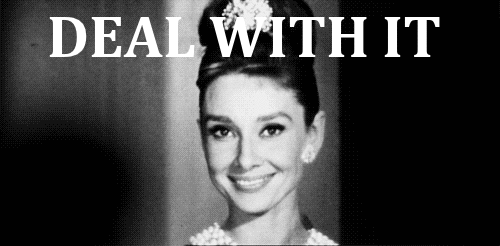 That being said, the film is really fun to watch. If it had been redone with Capote’s original ending, I would still love to have Audrey Hepburn play Holly Golightly. And who can forget that dress? The way I think of it is that the movie is the first introduction to a person you know you’re going to like. While the book lets you get to know the person more before proving your first impression right. Or you can do what I do and just pretend that the movie is actually the book. Both the film and the book are equally beautiful, and compliment each other well, but it’s easier to accept Capote’s ending.
That being said, the film is really fun to watch. If it had been redone with Capote’s original ending, I would still love to have Audrey Hepburn play Holly Golightly. And who can forget that dress? The way I think of it is that the movie is the first introduction to a person you know you’re going to like. While the book lets you get to know the person more before proving your first impression right. Or you can do what I do and just pretend that the movie is actually the book. Both the film and the book are equally beautiful, and compliment each other well, but it’s easier to accept Capote’s ending.
Afterwards, I really, really, really wanted to be Holly Golightly.
Then I had an idea: I could actually be Holly Golightly!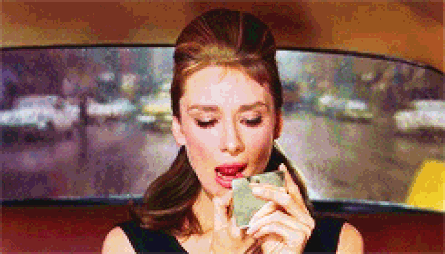 Holly Golightly – in the movie and in the book – loved going to breakfast at Tiffany’s.
Holly Golightly – in the movie and in the book – loved going to breakfast at Tiffany’s.
So why not dress up as Holly Golightly and go to Tiffany’s just like in the movie?
I already had a little black dress in my closet. All I needed were the gloves and the jewelry to complete the ensemble. So I went on Amazon and made a few purchases.
If there’s one thing that you should know about me, it’s that I love dressing up. Not just for formal events, but like for Halloween. My friends will tell you, that I take Halloween VERY seriously. And if I was going as Holly Golightly to Tiffany’s, I had to look like Holly Golightly.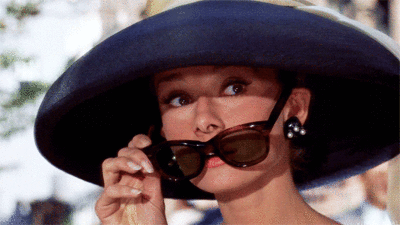 I was surprised that not enough people actually dressed up as Holly Golightly when the Blue Box Cafe opened. I went on their Facebook and Instagram page and saw that nobody had taken advantage of dressing up in a little black dress and calling themselves Holly as they ordered breakfast at Tiffany’s.
I was surprised that not enough people actually dressed up as Holly Golightly when the Blue Box Cafe opened. I went on their Facebook and Instagram page and saw that nobody had taken advantage of dressing up in a little black dress and calling themselves Holly as they ordered breakfast at Tiffany’s.
Maybe I’m weird (which I most definitely am) but that shocked me.
Sure enough, the four strand pearl necklace, earrings and black satin gloves were delivered a few days before my trip to New York. There was even a black fully functional extended cigarette holder that was included in the accessory set that I had purchased.
By the time I had checked into my hotel in New York City, I made plans to meet Siobhan and her mother at Tiffany’s. Once I was all dressed up – sunglasses and extended cigarette holder in hand – I began my walk down Fifth Avenue.
But there was one thing that I had forgotten about Tiffany’s as I approached the jewelry store (fully dressed up as Holly Golightly, I might add), and that was where Tiffany’s was located on Fifth Avenue. Well, Tiffany’s (as beautiful as a building it is on the busy streets of Fifth Avenue) has the unfortunate location to be RIGHT NEXT TO Trump Tower.
Yeah. Go figure.
 Realizing this, I became acutely aware that I wasn’t going to follow in Audrey’s high-heeled footsteps as I approached the jewelry store. It took some time maneuvering around the surging masses of people, the ugly barriers and the protesters chanting “Shame! Shame! Shame!” Not exactly the quiet Fifth Avenue atmosphere that Holly Golightly was greeted with when she exited from her yellow taxi cab.
Realizing this, I became acutely aware that I wasn’t going to follow in Audrey’s high-heeled footsteps as I approached the jewelry store. It took some time maneuvering around the surging masses of people, the ugly barriers and the protesters chanting “Shame! Shame! Shame!” Not exactly the quiet Fifth Avenue atmosphere that Holly Golightly was greeted with when she exited from her yellow taxi cab.
But once I made it to the jewelry store and met both Siobhan and her mother, I was suddenly aware of something else: People – the same people whom I had just walked past in front of Trump Tower – were taking my picture.
“Well what did you expect?” Siobhan turned to me. “You look exactly like Holly."
I mean, that was the whole point after all. But I never had imagined that I would attract the protesters adjacent at Trump Tower. Siobhan’s mother had her camera with her, so we decided to take a couple of pictures in front of the store, recreating the iconic scene with Audrey gazing into the store’s window display. I had my back turned, channeling my inner Holly Golightly and wishing that I had a paper coffee cup and pastry in each hand. When I had turned back around, a small crowd had started to gather as Siobhan’s mother snapped picture after picture of me in my little black dress and my updo hairstyle.
“Hi Holly!” One woman waved at me as she held her phone out.
“Holly, can I get my picture with you?” It was an elderly man in a wool sweatshirt, and I happily snapped a picture with him.
I felt like one of those dressed up characters that always showboated in front of the Chinese Theater on Hollywood Boulevard. A few more people approached me asking for pictures, one person – most likely a tourist – even asked me after she had taken a photo of us how much she should tip me (I politely declined, by the way).
“They probably all think that you actually work for Tiffany’s,” Siobhan’s mother smiled at me as she stowed her camera away.
“You should.” Siobhan even chimed in. “Anything to take the focus off of Trump for once.”
Which made me register, that the protesters in front of Trump Tower had somehow quieted down. A took another look around the crowd that had formed in front of Tiffany’s and identified a couple of protesters with signs whom I had taken a picture with just a few minutes ago. I hadn’t even put two-to-two together that a good portion of the protesters had migrated over to Tiffany’s to snap pictures of me. More so, they were smiling so wide that I thought their cheeks would burst. At least just for a few moments the protesters had their anger on pause to take pictures with Holly Golightly in front of Tiffany’s.
This was probably the closets that I would get to that ideal serene opening at the very beginning at Breakfast at Tiffany’s.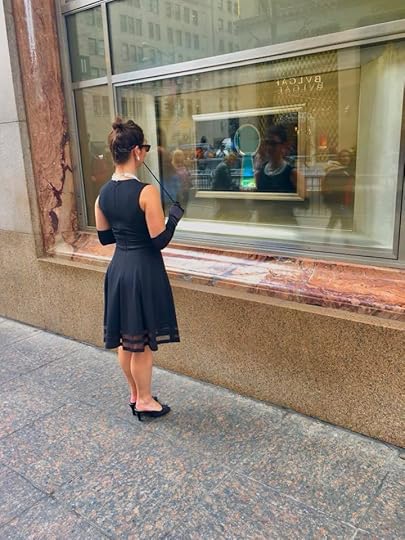
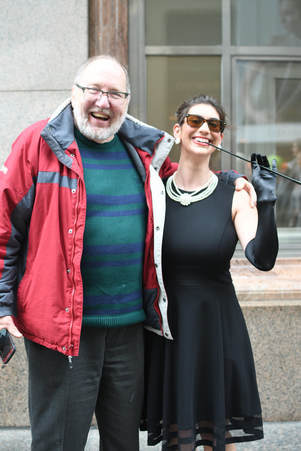 After a couple of more pictures, we went through the revolving doors of Tiffany’s.
After a couple of more pictures, we went through the revolving doors of Tiffany’s.
To get to the cafe, first we had to walk past rows upon rows of diamonds on the main floor.
The inside still looked the same as the scene in the movie. Instantly, I was reminded of when Holly brought her love interest, Paul Varjack to Tiffany’s during normal business hours. Varjack insisted that he wanted to buy Holly something, but only if it costs less than ten dollars – which is how much he currently has in his pocket. The kind sales associate recommended a sterling-silver telephone dialer for $6.75, including tax. "Well, the price is right,” Varjack says. “But, uh, I must say, I was hoping for something slightly more . . . how shall I say it . . . romantic in feeling.” In the end, they decide to have the ring from the box of Cracker Jacks engraved. 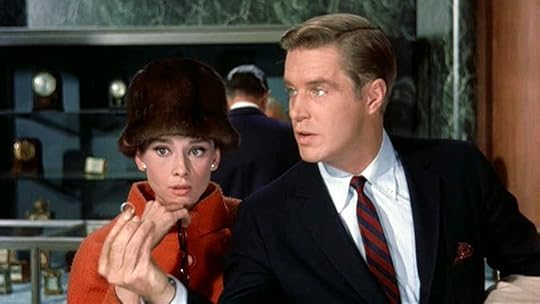 Next we entered a concierge-attended elevator to take us to the fourth floor. The elevator attended even raised his eyebrows in surprise when he saw me.
Next we entered a concierge-attended elevator to take us to the fourth floor. The elevator attended even raised his eyebrows in surprise when he saw me.
“About time you’ve returned Ms. Golightly,” he laughed as he pressed the button for the forth floor for us. I am also continuously being stared at this whole time, by the way.
When we get off the elevator, we approached the front of the cafe, and get escorted to our seats. The room was covered in the store’s trademark robin’s egg blue, from the slipcovers on the chairs to the salt and pepper shakers. There was even a beautiful marble and amazonite stone wall that even the real Holly Golightly would’ve massively approved. I felt like I was inside an actual blue Tiffany box! The food was even worth it. Between the three of us, Siobhan was the only one who actually ordered breakfast at Tiffany’s; while her mother and I both indulged on the afternoon tea. The Blue Box Cafe was primarily all about the experience, and it definitely lived up to the hype. I think in part because I was dressed up.
The food was even worth it. Between the three of us, Siobhan was the only one who actually ordered breakfast at Tiffany’s; while her mother and I both indulged on the afternoon tea. The Blue Box Cafe was primarily all about the experience, and it definitely lived up to the hype. I think in part because I was dressed up.
Which – by the way – I would totally dress up as Holly Golightly again if I were to obtain another sought after reservation at the Blue Box Cafe. Perhaps, the next time, I’ll go as Holly Golightly JUST as she is rolling out of bed with her light blue sleeping mask.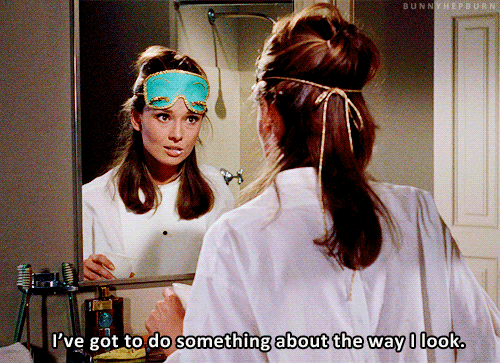 Overall, it was a wonderful experience. But if fancy blue and white chinaware doesn’t strike your fancy, even enjoying a simple cup of coffee and pastry outside of the Tiffany’s store would be just as perfect as well.
Overall, it was a wonderful experience. But if fancy blue and white chinaware doesn’t strike your fancy, even enjoying a simple cup of coffee and pastry outside of the Tiffany’s store would be just as perfect as well.
I would think that Holly would agree.
 If you never seen the iconic 1961 film adaptation of Truman Capote’s 1958 novella – in which Holly Golightly arrives at the Tiffany & Co flagship store on Fifth Avenue – let me set the scene. (Or watch the video down below).
If you never seen the iconic 1961 film adaptation of Truman Capote’s 1958 novella – in which Holly Golightly arrives at the Tiffany & Co flagship store on Fifth Avenue – let me set the scene. (Or watch the video down below). FADE IN:
EXT. NEW YORK CITY FIFTH AVENUE – DAWN
The entire block is empty of all other people, until a bright yellow taxi cab drives up the street and stops in front of the jewelry store, Tiffany’s. Stepping out of the cab is a tall, elegant looking young woman. HOLLY GOLIGHTLY. She wears a black ball gown with matching gloves, an elaborate updo, oversized sunglasses, and several lush strands of pearls. As the cab drives away, Holly approaches one of the window displays of the store. She is carrying a small white paper bag. Barely taking her eyes off the diamonds in the window, she opens the bag and removes a cup of coffee and a pastry, which she bites into, as the movie’s theme song, “Moon River” plays in the background.
END SCENE
Anyway, this was such an iconic scene that after the movie came out, people would stand outside the famed jewelry store, sipping their coffee and chewing on their bagels, whilst peeking glances into the store's windows. But since Tiffany’s has always been a preeminent luxury jeweler – and not a place where you could actually have breakfast inside (circa 1837) – that all changed last November.
The newly renovated home-goods floor of the Tiffany & Co. flagship store on Fifth Avenue, had officially opened to the public, introducing The Blue Box Cafe.
So now you can literally have Breakfast at Tiffany’s!!!
 But just to fact-check everything, I looked up the menu of the Blue Box Cafe and, sure enough, they served breakfast – starting at $29. The “Breakfast at Tiffany’s” breakfast (so aptly named) comes with your choice of coffee or tea, followed by a croissant and seasonal fruit, rounded out with your choice of a buttermilk waffle, smoked salmon and bagel stack, truffle eggs or avocado toast.
But just to fact-check everything, I looked up the menu of the Blue Box Cafe and, sure enough, they served breakfast – starting at $29. The “Breakfast at Tiffany’s” breakfast (so aptly named) comes with your choice of coffee or tea, followed by a croissant and seasonal fruit, rounded out with your choice of a buttermilk waffle, smoked salmon and bagel stack, truffle eggs or avocado toast.  But what really sealed the deal for me (although the breakfast options pretty much had me saying, “Shut up and take my money!”) was the cafe’s nod to the long-heralded regality of the store itself. More specifically, their afternoon tea options – starting at $49 (which is actually a REALLY great deal for afternoon tea). Their “Tiffany Tea” menu features teas by Bellocq, as well as a selection of finger sandwiches and bakery items.
But what really sealed the deal for me (although the breakfast options pretty much had me saying, “Shut up and take my money!”) was the cafe’s nod to the long-heralded regality of the store itself. More specifically, their afternoon tea options – starting at $49 (which is actually a REALLY great deal for afternoon tea). Their “Tiffany Tea” menu features teas by Bellocq, as well as a selection of finger sandwiches and bakery items.  Anyway, upon hearing about this new cafe in New York – and in love with their Afternoon Tea menu – this had instantly become my number 1 visit to New York.
Anyway, upon hearing about this new cafe in New York – and in love with their Afternoon Tea menu – this had instantly become my number 1 visit to New York. Only, there was just one problem: I couldn’t get a reservation.
 Which wasn’t all that surprising. It was New York, after all. Any restaurant that is new in New York quickly becomes booked for months on end. Especially, if it’s a cafe that had recently opened up inside one of the world’s most famous jewelry stores – with an iconic movie scene incorporated in the pop-culture lexicon as well.
Which wasn’t all that surprising. It was New York, after all. Any restaurant that is new in New York quickly becomes booked for months on end. Especially, if it’s a cafe that had recently opened up inside one of the world’s most famous jewelry stores – with an iconic movie scene incorporated in the pop-culture lexicon as well.So I went back to my trusty computer. I typed in The Blue Box Cafe into my Google search engine. Clicked on the Tiffany & Co. link, was brought to their cafe web page, clicked on their reservation button . . . and was brought to a page where I was to make my reservation.
However, everything was booked.
Great.
 However, I read the fine print on the reservation page: Reservations for The Blue Box Cafe at Tiffany & Co. open 30 days in advance at 9 AM, Eastern Standard Time. If you do not see your desired time available, we suggest that you add yourself to the Notify List to be notified if a reservation becomes available.
However, I read the fine print on the reservation page: Reservations for The Blue Box Cafe at Tiffany & Co. open 30 days in advance at 9 AM, Eastern Standard Time. If you do not see your desired time available, we suggest that you add yourself to the Notify List to be notified if a reservation becomes available.
All right, so this reservation software that Tiffany’s was using for their cafe at least allowed their guests to add their names to their Notify List (which was really a Waitlist). So if you were planning on going to Tiffany’s tomorrow, you probably won’t get a table. But if you knew you were going to be in Manhattan a month in advanced, the odds might play in your favor.
Luckily, I had twenty-five days to finalize everything for my New York trip, so I was in the clear. I selected a date and time before clicking on the "Notify Me" button.
Now all I had to do was wait.
 Here’s the thing with these reservations. Resy, the software that Tiffany’s was using to record their guest’s reservations, will kindly tell you when a table is ready. Once you sign up for a reservation you can include your phone number and your email address. Then if there is an opening, the app will notify you, or you will receive an email with the restaurant reservation. However, you will not hear anything from the app or your email. Unless you have programmed your phone to notify you every time you receive an update from the app, or a new message from your email, you might be able to snatch the new opening.
Here’s the thing with these reservations. Resy, the software that Tiffany’s was using to record their guest’s reservations, will kindly tell you when a table is ready. Once you sign up for a reservation you can include your phone number and your email address. Then if there is an opening, the app will notify you, or you will receive an email with the restaurant reservation. However, you will not hear anything from the app or your email. Unless you have programmed your phone to notify you every time you receive an update from the app, or a new message from your email, you might be able to snatch the new opening.But a week since I had made the reservation on Resy, I kept missing the notifications on my phone and email. I’ll be in a meeting at work, leave my phone at my desk, and would return with two openings for the Blue Box Cafe. But by the time I would log into the app or check my email, the opening would instantly be gone. It was like playing a game of spoons with this app. Some days I would just stare at my phone waiting for a notification to pop up. And if it did, I would jump on it and quickly seize the reservation with my shaky fingers. Days went by, and for some odd reason, I wasn’t fast enough to score a reservation. UNTIL, I was playing HQ on my phone one day and a notification just happened to show up. I exited the game – it was worth it, I promise – and finally got my reservation.
That was the hard part. Next was the follow up research: I had never actually seen Breakfast at Tiffany’s.
 Okay, so I had heard of Breakfast at Tiffany’s. I knew of the iconic little black dress that Audrey Hepburn wore, and I knew that it was a somewhat famous movie.
Okay, so I had heard of Breakfast at Tiffany’s. I knew of the iconic little black dress that Audrey Hepburn wore, and I knew that it was a somewhat famous movie.
I figured, that since I had jumped through all these hoops to get a reservation at this place, I might as well watch the movie that ultimately prompted Tiffany's to open a cafe to the public.
The movie was on Netflix and I sat down to watch it. The plot of the movie was that Holly Golightly was an escort searching for a rich, older man to marry. But in the process she meets a handsome writer who moves into her apartment building. Low and behold, they fall in love and end up together.
But what caught my attention was the fact that the movie was based upon a Truman Capote novella. Intrigued – this was after all part of my research before leaving to have breakfast at Tiffany’s – I bought the novella and read Capote’s story in one sitting.
 The novella was so much better than the movie – because isn’t that almost always the case with these kinds of things? Yet, the premise of both the novella and the movie were almost identical. In each there is a lonely young writer (unnamed in the book, and Paul Varjack, played by George Peppard, in the film) who stumbles into a friendship with a charming young woman of questionable morality. He learns of her dubious activities: carrying weather reports for a convicted mobster, taking $50 trips to the powder room, and stealing away the future president of Brazil from her best friend. The narrator (in both the novella and in the film) also comes across a Doc Golightly and learns of Holly’s true past as Lulamae Barnes. Additionally, in both versions Holly’s teetering life finally comes crumbling down after receiving a poorly-timed telegraph and an even more poorly-timed arrest.
The novella was so much better than the movie – because isn’t that almost always the case with these kinds of things? Yet, the premise of both the novella and the movie were almost identical. In each there is a lonely young writer (unnamed in the book, and Paul Varjack, played by George Peppard, in the film) who stumbles into a friendship with a charming young woman of questionable morality. He learns of her dubious activities: carrying weather reports for a convicted mobster, taking $50 trips to the powder room, and stealing away the future president of Brazil from her best friend. The narrator (in both the novella and in the film) also comes across a Doc Golightly and learns of Holly’s true past as Lulamae Barnes. Additionally, in both versions Holly’s teetering life finally comes crumbling down after receiving a poorly-timed telegraph and an even more poorly-timed arrest. But the real difference comes at the ending of both the movie and the novella. According to the movie, once Holly is released from jail she abandons her cat and tells Varjack that she is determined to flee the country and go to Brazil. Varjack on the other hand, tries to convince her to stay by saying:
You know what's wrong with you, Miss Whoever-you-are? You're chicken, you've got no guts. You're afraid to stick out your chin and say, "Okay, life's a fact, people do fall in love, people do belong to each other, because that's the only chance anybody's got for real happiness." You call yourself a free spirit, a "wild thing," and you're terrified somebody's gonna stick you in a cage. Well baby, you're already in that cage. You built it yourself. And it's not bounded in the west by Tulip, Texas, or in the east by Somali-land. It's wherever you go. Because no matter where you run, you just end up running into yourself.
Of course, after hearing Varjack’s speech, Holly has a change of heart, turns back, searches for her cat, realizes that people can belong to one another and that maybe she’s been wrong all along. The movie ends with her kissing Varjack in the rain. (Watch the ending below). But in the novella, the nameless narrator doesn’t make such a “life-changing” speech to Holly. Instead, once Holly gets released from jail, she abandons the cat, leaves the country and goes on an adventure around the world.
I like that ending a whole lot better than the movie version.
By changing the ending in the movie, it in effect changed Holly’s character completely. The explicit message of the movie is that for all of Holly’s resisting and pretending, deep down she was simply a woman searching for love and for a man who could tame her. All of her problems suddenly became neatly tucked away when she and Varjack finally get together. But after finishing both the novella and the movie, it was so much easier to picture Holly Golightly running around Africa than to see her sharing a home with Varjack and a cat. By taking a complex and distinct character and forcefully domesticating her, the film perpetuates the fairytale idea that all women need to be rescued. And as any average woman – especially one that graduated from a Woman’s College – will tell you, that is FUCKING BULLSHIT!
 That being said, the film is really fun to watch. If it had been redone with Capote’s original ending, I would still love to have Audrey Hepburn play Holly Golightly. And who can forget that dress? The way I think of it is that the movie is the first introduction to a person you know you’re going to like. While the book lets you get to know the person more before proving your first impression right. Or you can do what I do and just pretend that the movie is actually the book. Both the film and the book are equally beautiful, and compliment each other well, but it’s easier to accept Capote’s ending.
That being said, the film is really fun to watch. If it had been redone with Capote’s original ending, I would still love to have Audrey Hepburn play Holly Golightly. And who can forget that dress? The way I think of it is that the movie is the first introduction to a person you know you’re going to like. While the book lets you get to know the person more before proving your first impression right. Or you can do what I do and just pretend that the movie is actually the book. Both the film and the book are equally beautiful, and compliment each other well, but it’s easier to accept Capote’s ending.Afterwards, I really, really, really wanted to be Holly Golightly.
Then I had an idea: I could actually be Holly Golightly!
 Holly Golightly – in the movie and in the book – loved going to breakfast at Tiffany’s.
Holly Golightly – in the movie and in the book – loved going to breakfast at Tiffany’s.So why not dress up as Holly Golightly and go to Tiffany’s just like in the movie?
I already had a little black dress in my closet. All I needed were the gloves and the jewelry to complete the ensemble. So I went on Amazon and made a few purchases.
If there’s one thing that you should know about me, it’s that I love dressing up. Not just for formal events, but like for Halloween. My friends will tell you, that I take Halloween VERY seriously. And if I was going as Holly Golightly to Tiffany’s, I had to look like Holly Golightly.
 I was surprised that not enough people actually dressed up as Holly Golightly when the Blue Box Cafe opened. I went on their Facebook and Instagram page and saw that nobody had taken advantage of dressing up in a little black dress and calling themselves Holly as they ordered breakfast at Tiffany’s.
I was surprised that not enough people actually dressed up as Holly Golightly when the Blue Box Cafe opened. I went on their Facebook and Instagram page and saw that nobody had taken advantage of dressing up in a little black dress and calling themselves Holly as they ordered breakfast at Tiffany’s. Maybe I’m weird (which I most definitely am) but that shocked me.
Sure enough, the four strand pearl necklace, earrings and black satin gloves were delivered a few days before my trip to New York. There was even a black fully functional extended cigarette holder that was included in the accessory set that I had purchased.
By the time I had checked into my hotel in New York City, I made plans to meet Siobhan and her mother at Tiffany’s. Once I was all dressed up – sunglasses and extended cigarette holder in hand – I began my walk down Fifth Avenue.
But there was one thing that I had forgotten about Tiffany’s as I approached the jewelry store (fully dressed up as Holly Golightly, I might add), and that was where Tiffany’s was located on Fifth Avenue. Well, Tiffany’s (as beautiful as a building it is on the busy streets of Fifth Avenue) has the unfortunate location to be RIGHT NEXT TO Trump Tower.
Yeah. Go figure.
 Realizing this, I became acutely aware that I wasn’t going to follow in Audrey’s high-heeled footsteps as I approached the jewelry store. It took some time maneuvering around the surging masses of people, the ugly barriers and the protesters chanting “Shame! Shame! Shame!” Not exactly the quiet Fifth Avenue atmosphere that Holly Golightly was greeted with when she exited from her yellow taxi cab.
Realizing this, I became acutely aware that I wasn’t going to follow in Audrey’s high-heeled footsteps as I approached the jewelry store. It took some time maneuvering around the surging masses of people, the ugly barriers and the protesters chanting “Shame! Shame! Shame!” Not exactly the quiet Fifth Avenue atmosphere that Holly Golightly was greeted with when she exited from her yellow taxi cab. But once I made it to the jewelry store and met both Siobhan and her mother, I was suddenly aware of something else: People – the same people whom I had just walked past in front of Trump Tower – were taking my picture.
“Well what did you expect?” Siobhan turned to me. “You look exactly like Holly."
I mean, that was the whole point after all. But I never had imagined that I would attract the protesters adjacent at Trump Tower. Siobhan’s mother had her camera with her, so we decided to take a couple of pictures in front of the store, recreating the iconic scene with Audrey gazing into the store’s window display. I had my back turned, channeling my inner Holly Golightly and wishing that I had a paper coffee cup and pastry in each hand. When I had turned back around, a small crowd had started to gather as Siobhan’s mother snapped picture after picture of me in my little black dress and my updo hairstyle.
“Hi Holly!” One woman waved at me as she held her phone out.
“Holly, can I get my picture with you?” It was an elderly man in a wool sweatshirt, and I happily snapped a picture with him.
I felt like one of those dressed up characters that always showboated in front of the Chinese Theater on Hollywood Boulevard. A few more people approached me asking for pictures, one person – most likely a tourist – even asked me after she had taken a photo of us how much she should tip me (I politely declined, by the way).
“They probably all think that you actually work for Tiffany’s,” Siobhan’s mother smiled at me as she stowed her camera away.
“You should.” Siobhan even chimed in. “Anything to take the focus off of Trump for once.”
Which made me register, that the protesters in front of Trump Tower had somehow quieted down. A took another look around the crowd that had formed in front of Tiffany’s and identified a couple of protesters with signs whom I had taken a picture with just a few minutes ago. I hadn’t even put two-to-two together that a good portion of the protesters had migrated over to Tiffany’s to snap pictures of me. More so, they were smiling so wide that I thought their cheeks would burst. At least just for a few moments the protesters had their anger on pause to take pictures with Holly Golightly in front of Tiffany’s.
This was probably the closets that I would get to that ideal serene opening at the very beginning at Breakfast at Tiffany’s.

 After a couple of more pictures, we went through the revolving doors of Tiffany’s.
After a couple of more pictures, we went through the revolving doors of Tiffany’s.To get to the cafe, first we had to walk past rows upon rows of diamonds on the main floor.
The inside still looked the same as the scene in the movie. Instantly, I was reminded of when Holly brought her love interest, Paul Varjack to Tiffany’s during normal business hours. Varjack insisted that he wanted to buy Holly something, but only if it costs less than ten dollars – which is how much he currently has in his pocket. The kind sales associate recommended a sterling-silver telephone dialer for $6.75, including tax. "Well, the price is right,” Varjack says. “But, uh, I must say, I was hoping for something slightly more . . . how shall I say it . . . romantic in feeling.” In the end, they decide to have the ring from the box of Cracker Jacks engraved.
 Next we entered a concierge-attended elevator to take us to the fourth floor. The elevator attended even raised his eyebrows in surprise when he saw me.
Next we entered a concierge-attended elevator to take us to the fourth floor. The elevator attended even raised his eyebrows in surprise when he saw me.“About time you’ve returned Ms. Golightly,” he laughed as he pressed the button for the forth floor for us. I am also continuously being stared at this whole time, by the way.
When we get off the elevator, we approached the front of the cafe, and get escorted to our seats. The room was covered in the store’s trademark robin’s egg blue, from the slipcovers on the chairs to the salt and pepper shakers. There was even a beautiful marble and amazonite stone wall that even the real Holly Golightly would’ve massively approved. I felt like I was inside an actual blue Tiffany box!
 The food was even worth it. Between the three of us, Siobhan was the only one who actually ordered breakfast at Tiffany’s; while her mother and I both indulged on the afternoon tea. The Blue Box Cafe was primarily all about the experience, and it definitely lived up to the hype. I think in part because I was dressed up.
The food was even worth it. Between the three of us, Siobhan was the only one who actually ordered breakfast at Tiffany’s; while her mother and I both indulged on the afternoon tea. The Blue Box Cafe was primarily all about the experience, and it definitely lived up to the hype. I think in part because I was dressed up. Which – by the way – I would totally dress up as Holly Golightly again if I were to obtain another sought after reservation at the Blue Box Cafe. Perhaps, the next time, I’ll go as Holly Golightly JUST as she is rolling out of bed with her light blue sleeping mask.
 Overall, it was a wonderful experience. But if fancy blue and white chinaware doesn’t strike your fancy, even enjoying a simple cup of coffee and pastry outside of the Tiffany’s store would be just as perfect as well.
Overall, it was a wonderful experience. But if fancy blue and white chinaware doesn’t strike your fancy, even enjoying a simple cup of coffee and pastry outside of the Tiffany’s store would be just as perfect as well. I would think that Holly would agree.

Published on April 23, 2018 17:16
March 26, 2018
Is It Worth Reading Game of Thrones?
So this past week, I finally – FINALLY! – got around to read George R.R. Martin’s first book in A Song of Ice and Fire series.
I know. Took me long enough.
The reason for this sudden binge reading, was probably caused by the revelation that usually around this time, around this month, we get word on the next upcoming season of Game of Thrones.
But alas, we have to wait a year – nay! – a year AND A HALF, for HBO’s flagship hit series to return to our screens.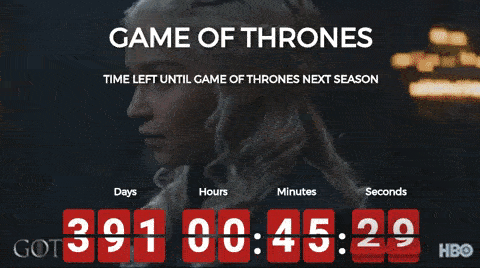 You know you’ve been counting down the days since Season 7 ended!
You know you’ve been counting down the days since Season 7 ended!
To fill that Targaryen / Stark / Lannister hole in my heart, I took to reading the first book of the series.
And boy, I’m quiet sure where to begin.
(Note: For anyone who wishes to remain innocent of any spoilers relating to both the books and the TV show of Game of Thrones stop reading now. You’ve been warned).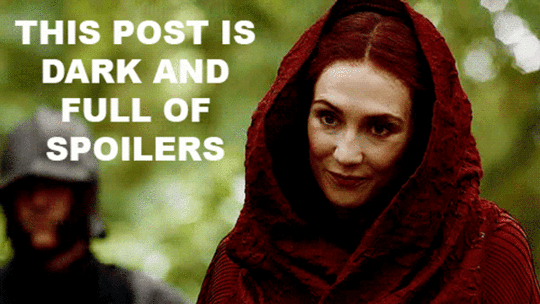 First off, let’s take a moment to reflect that A Game of Thrones – the first novel in A Song of Ice and Fire series – was first published in 1996! The book (as of this year) is currently twenty-two years old! It can sing about feeling 22, just like in that Taylor Swift song because it’s true.
First off, let’s take a moment to reflect that A Game of Thrones – the first novel in A Song of Ice and Fire series – was first published in 1996! The book (as of this year) is currently twenty-two years old! It can sing about feeling 22, just like in that Taylor Swift song because it’s true.
Anyway, in the novel – just like in the TV show – Martin introduces the plot-lines of the noble houses of Westeros, the Wall, and the Targaryens. It is also (sadly) the only book in the series that features Ned Stark, Robert Baratheon, Khal Drogo and Viserys Targaryen.
Because, you know, after that book they all end up dead.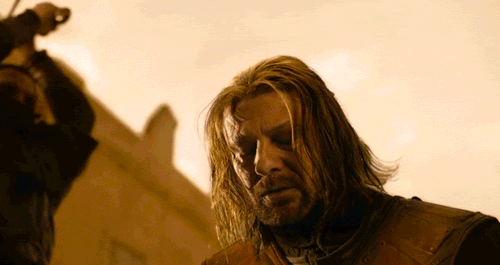 UGH!!! Even reading that scene in the book was hard to muster.
UGH!!! Even reading that scene in the book was hard to muster.
Martin had originally established his series as a trilogy. Now, the series consists of five published volumes, and a two are at the moment in the works (i.e. The Winds of Winter and A Dream of Spring). In addition, there are three prequel novellas, with several more being planned.
In other words, Martin has been working on this epic series (and then some) for years.
And despite the fact that Martin's book series is still on-going, HBO is expected to reveal its ending of the series before Martin’s version hits the bookstores.
Fun Fact: Author Diana Gabaldon – who wrote the Outlander saga – had been writing her series LONGER than Martin has. Her first novel was published in 1991 and her tenth novel will be final conclusion of the series. Now there’s a writer who meets her deadlines.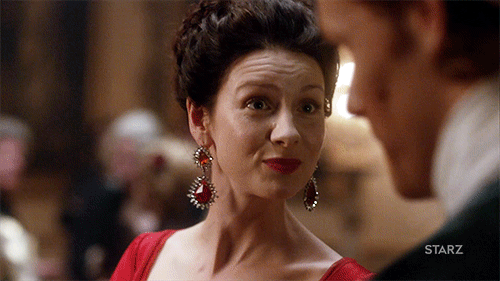 Anyhow, back to Game of Thrones.
Anyhow, back to Game of Thrones.
While reading the first book, I actually began to grow a larger appreciation for not just Martin himself, but for the TV show as well.
For me, I enjoy reading the books more than their adaptations because I get a glimpse as to what goes on inside the minds of all of the characters. In my opinion, it is very rare to see a television show or a movie reflect the story that was originally made for the pages of a novel. Most of the little things I like about some certain characters are lost in translation to the screen. Yet, sometimes the adaptation pulls through, respecting it’s origins from the novel. For the television series of Game of Thrones, they stayed true to Martin’s own words. Perhaps, even a little bit better.
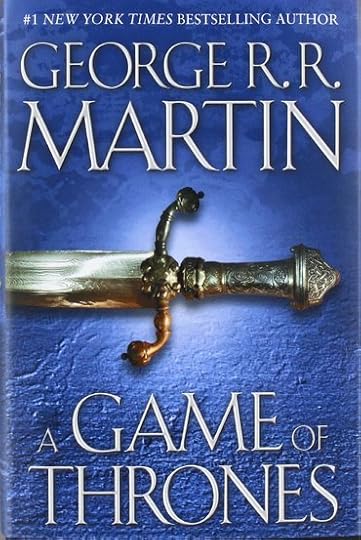 Granted, Martin has at least a hundred characters alone in his first novel with very similar sounding names – seriously, you couldn’t pick an entirely different name to differentiate between Bronn and Bran? – and each of his chapters are not ones in which you can easily graze through. To Martin’s credit, he is at least very detailed in his dialogue and in each of his sentences.
Granted, Martin has at least a hundred characters alone in his first novel with very similar sounding names – seriously, you couldn’t pick an entirely different name to differentiate between Bronn and Bran? – and each of his chapters are not ones in which you can easily graze through. To Martin’s credit, he is at least very detailed in his dialogue and in each of his sentences.
That being said, the show is no less inferior in quality. Visually, it is beautiful to watch. What with the fantastic places, the costumes, the combats, and let’s not forget the dragons! For a show with an estimate of 10 hour-long episodes, the show for the most part keeps itself as book-worthy as possible for its fans while juggling Martin’s vast source material.
At least until the last couple of seasons in which the TV show had to break off from the books and diverge into it’s own intricate plot. 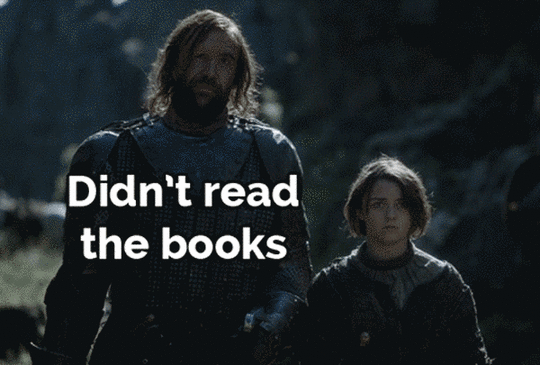 So now the question is: IS THIS BOOK WORTH READING?
So now the question is: IS THIS BOOK WORTH READING?
The answer: YES.
Martin creates a very detailed and rich world in A Game of Thrones with very deep characters. And thankfully, the show follows suit.
Now keep in mind, I didn’t read the book first before the TV show. In fact, I watched the TV show first before I actually took the time to pick up the book. And even without having read the book, I still very much enjoyed watching the TV show. I got all the necessary adrenaline rushes, quantum shocks and twists just from watching the show alone.
I mean, who can forget The Red Wedding? Or the Purple Wedding? Or, Oberyn Martell’s duel with The Mountain?
*Sigh* RIP, the Red Viper
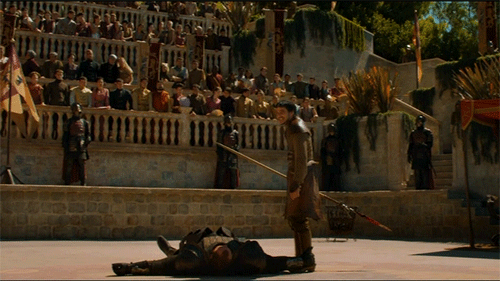 When watching the television series there was definitely an exciting climax. It was what kept me double clicking for the next episode.
When watching the television series there was definitely an exciting climax. It was what kept me double clicking for the next episode.
The same was applied to the books at well. Each chapter kept me on edge. And even though I had a good idea as to what would happen next, I considered the books to be a type of contextual guide for the TV series.
So if you had already seen the series (so far) and wish to read the books, you definitely should. Granted, even though I had only read the first book that only reflected the first season, I have heard from friends that after season two, the TV and the books start to go their separate ways. Nevertheless, I’m still enjoying the show.
Would I recommend people reading the books before watching the show? I mean, it depends. I’ve thoroughly have enjoyed the franchise since watching the TV show alone, but the books are a great companion if you want to know more about each of the characters. You really can’t go wrong if you start one or the other. It’s all about personal taste.
Read the first book, and if you like it read the rest.
That’s if Martin EVER releases his next book.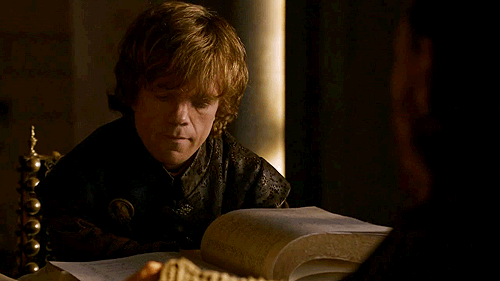
I know. Took me long enough.
The reason for this sudden binge reading, was probably caused by the revelation that usually around this time, around this month, we get word on the next upcoming season of Game of Thrones.
But alas, we have to wait a year – nay! – a year AND A HALF, for HBO’s flagship hit series to return to our screens.
 You know you’ve been counting down the days since Season 7 ended!
You know you’ve been counting down the days since Season 7 ended!To fill that Targaryen / Stark / Lannister hole in my heart, I took to reading the first book of the series.
And boy, I’m quiet sure where to begin.
(Note: For anyone who wishes to remain innocent of any spoilers relating to both the books and the TV show of Game of Thrones stop reading now. You’ve been warned).
 First off, let’s take a moment to reflect that A Game of Thrones – the first novel in A Song of Ice and Fire series – was first published in 1996! The book (as of this year) is currently twenty-two years old! It can sing about feeling 22, just like in that Taylor Swift song because it’s true.
First off, let’s take a moment to reflect that A Game of Thrones – the first novel in A Song of Ice and Fire series – was first published in 1996! The book (as of this year) is currently twenty-two years old! It can sing about feeling 22, just like in that Taylor Swift song because it’s true.Anyway, in the novel – just like in the TV show – Martin introduces the plot-lines of the noble houses of Westeros, the Wall, and the Targaryens. It is also (sadly) the only book in the series that features Ned Stark, Robert Baratheon, Khal Drogo and Viserys Targaryen.
Because, you know, after that book they all end up dead.
 UGH!!! Even reading that scene in the book was hard to muster.
UGH!!! Even reading that scene in the book was hard to muster. Martin had originally established his series as a trilogy. Now, the series consists of five published volumes, and a two are at the moment in the works (i.e. The Winds of Winter and A Dream of Spring). In addition, there are three prequel novellas, with several more being planned.
In other words, Martin has been working on this epic series (and then some) for years.
And despite the fact that Martin's book series is still on-going, HBO is expected to reveal its ending of the series before Martin’s version hits the bookstores.
Fun Fact: Author Diana Gabaldon – who wrote the Outlander saga – had been writing her series LONGER than Martin has. Her first novel was published in 1991 and her tenth novel will be final conclusion of the series. Now there’s a writer who meets her deadlines.
 Anyhow, back to Game of Thrones.
Anyhow, back to Game of Thrones. While reading the first book, I actually began to grow a larger appreciation for not just Martin himself, but for the TV show as well.
For me, I enjoy reading the books more than their adaptations because I get a glimpse as to what goes on inside the minds of all of the characters. In my opinion, it is very rare to see a television show or a movie reflect the story that was originally made for the pages of a novel. Most of the little things I like about some certain characters are lost in translation to the screen. Yet, sometimes the adaptation pulls through, respecting it’s origins from the novel. For the television series of Game of Thrones, they stayed true to Martin’s own words. Perhaps, even a little bit better.
 Granted, Martin has at least a hundred characters alone in his first novel with very similar sounding names – seriously, you couldn’t pick an entirely different name to differentiate between Bronn and Bran? – and each of his chapters are not ones in which you can easily graze through. To Martin’s credit, he is at least very detailed in his dialogue and in each of his sentences.
Granted, Martin has at least a hundred characters alone in his first novel with very similar sounding names – seriously, you couldn’t pick an entirely different name to differentiate between Bronn and Bran? – and each of his chapters are not ones in which you can easily graze through. To Martin’s credit, he is at least very detailed in his dialogue and in each of his sentences. That being said, the show is no less inferior in quality. Visually, it is beautiful to watch. What with the fantastic places, the costumes, the combats, and let’s not forget the dragons! For a show with an estimate of 10 hour-long episodes, the show for the most part keeps itself as book-worthy as possible for its fans while juggling Martin’s vast source material.
At least until the last couple of seasons in which the TV show had to break off from the books and diverge into it’s own intricate plot.
 So now the question is: IS THIS BOOK WORTH READING?
So now the question is: IS THIS BOOK WORTH READING?The answer: YES.
Martin creates a very detailed and rich world in A Game of Thrones with very deep characters. And thankfully, the show follows suit.
Now keep in mind, I didn’t read the book first before the TV show. In fact, I watched the TV show first before I actually took the time to pick up the book. And even without having read the book, I still very much enjoyed watching the TV show. I got all the necessary adrenaline rushes, quantum shocks and twists just from watching the show alone.
I mean, who can forget The Red Wedding? Or the Purple Wedding? Or, Oberyn Martell’s duel with The Mountain?
*Sigh* RIP, the Red Viper
 When watching the television series there was definitely an exciting climax. It was what kept me double clicking for the next episode.
When watching the television series there was definitely an exciting climax. It was what kept me double clicking for the next episode. The same was applied to the books at well. Each chapter kept me on edge. And even though I had a good idea as to what would happen next, I considered the books to be a type of contextual guide for the TV series.
So if you had already seen the series (so far) and wish to read the books, you definitely should. Granted, even though I had only read the first book that only reflected the first season, I have heard from friends that after season two, the TV and the books start to go their separate ways. Nevertheless, I’m still enjoying the show.
Would I recommend people reading the books before watching the show? I mean, it depends. I’ve thoroughly have enjoyed the franchise since watching the TV show alone, but the books are a great companion if you want to know more about each of the characters. You really can’t go wrong if you start one or the other. It’s all about personal taste.
Read the first book, and if you like it read the rest.
That’s if Martin EVER releases his next book.

Published on March 26, 2018 14:52
February 21, 2018
28 Classic Romance Novels To Read
Valentine's Day may be over, but who honestly needs flowers and chocolate, when you have a love for classic novels?
(Okay, scratch that. We may actually need the chocolates for this one).
Nothing says February quite like a romantic tale. While there will always be great modern romances, there will always room on your shelf for the classics. As authors like Jane Austen or the Bronte sisters were penning tragic, intoxicating, head-over-heels stories in the early/mid nineteenth century, they helped contribute to the romance genre that we know today.
So while others on V-Day were out braving the elements or spending half of their paychecks on a candlelit dinner, do not feel like you were missing out. After all, isn't the one person whom you should love and take care of above all else, yourself? So curl up inside your fluffy bed, draw yourself a bubble bath, or sip some tea on your couch as you dig into these timeless romantic classics.
And just remember, whatever your relationship status is – "single," "in a relationship," "it's complicated" – anyone can enjoy a good old-fashion love story. Besides, you deserve to treat yourself on a memorable date with classic literature.
#1: Sense and Sensibility by Jane Austen (1811)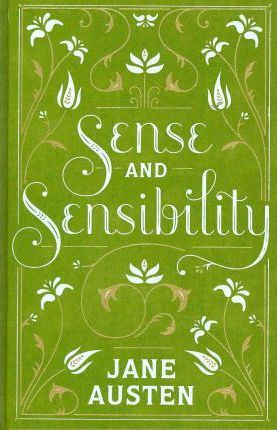 In the wake of their father’s death, the Dashwood sisters, Elinor, Marianne and Margaret, are left to their own devices when they move to a cottage owned by a distant cousin. Before they move house, though, Elinor (the more sensible sister) tentatively allows herself to fall in love with the admirable Edward Ferras. The Dashwoods try to make themselves at home in their cottage, all while Marianne (the sister full of sensibility) grows more and more in love with the ever handsome Willoughby. But there seems to be something off about Willoughby, and the only one who sees right through him is the good-hearted, Colonel Brandon who is vying for Marianne’s heart as well.
In the wake of their father’s death, the Dashwood sisters, Elinor, Marianne and Margaret, are left to their own devices when they move to a cottage owned by a distant cousin. Before they move house, though, Elinor (the more sensible sister) tentatively allows herself to fall in love with the admirable Edward Ferras. The Dashwoods try to make themselves at home in their cottage, all while Marianne (the sister full of sensibility) grows more and more in love with the ever handsome Willoughby. But there seems to be something off about Willoughby, and the only one who sees right through him is the good-hearted, Colonel Brandon who is vying for Marianne’s heart as well.
#2: Jane Eyre by Charlotte Bronte (1847)
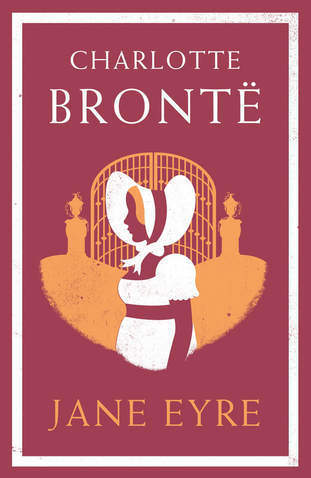 Orphaned and alone, young Jane Eyre lives with her aunt and cousins, the Reeds, at Gateshead Hall. Mrs. Reed hates Jane, and after fighting with her bully cousin John Reed, Jane’s aunt imprisons Jane in a room where Jane’s uncle died. There, she has a hysterical fit when she thinks she sees her uncle’s ghost appearing. After this, Jane’s aunt sends her away to a religious boarding school where Jane grows up later to become a governess. The governess job that Jane accepts is to tutor a little French girl, Adéle Varens, at a country house called Thornfield. Jane goes there and meets the mysterious owner, Mr. Rochester. Jane likes Thornfield, although she is partly disturbed by the eerie laughter coming from a locked room on the third floor.
Orphaned and alone, young Jane Eyre lives with her aunt and cousins, the Reeds, at Gateshead Hall. Mrs. Reed hates Jane, and after fighting with her bully cousin John Reed, Jane’s aunt imprisons Jane in a room where Jane’s uncle died. There, she has a hysterical fit when she thinks she sees her uncle’s ghost appearing. After this, Jane’s aunt sends her away to a religious boarding school where Jane grows up later to become a governess. The governess job that Jane accepts is to tutor a little French girl, Adéle Varens, at a country house called Thornfield. Jane goes there and meets the mysterious owner, Mr. Rochester. Jane likes Thornfield, although she is partly disturbed by the eerie laughter coming from a locked room on the third floor.
#3: Pride and Prejudice by Jane Austen (1813)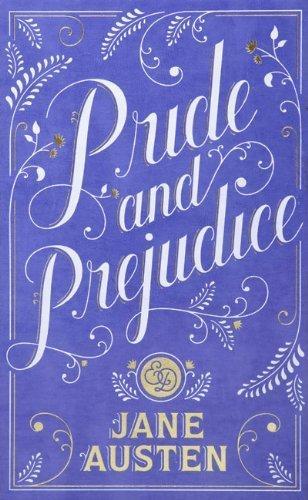 It is a truth universally acknowledged that everyone knows this classic love story. Mr. and Mrs. Bennett have five unmarried daughters and a very small fortune. Because of the English property law, the girls and Ms. Bennet will be kicked out of the house when Mr. Bennet dies. Then enters rich, single Mr. Bingley and his friend, Fitzwilliam Darcy. Jane, the eldest of the Bennet sisters takes a liking to Mr. Bingley, but it is Elizabeth Bennet who openly detests Mr. Darcy. It is these first impressions that are never quite really what they seem.
It is a truth universally acknowledged that everyone knows this classic love story. Mr. and Mrs. Bennett have five unmarried daughters and a very small fortune. Because of the English property law, the girls and Ms. Bennet will be kicked out of the house when Mr. Bennet dies. Then enters rich, single Mr. Bingley and his friend, Fitzwilliam Darcy. Jane, the eldest of the Bennet sisters takes a liking to Mr. Bingley, but it is Elizabeth Bennet who openly detests Mr. Darcy. It is these first impressions that are never quite really what they seem.
#4: Wuthering Heights by Emily Bronte (1847)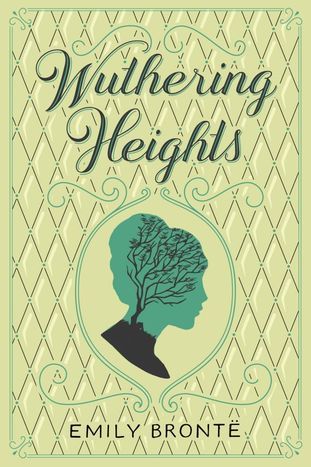 When Mr. Earnshaw, brings home orphaned Heathcliff to Wuthering Heights, tensions are spurred amongst the Earnshaw children. Hindley Earnshaw detests Heathcliff, while his younger sister, Catherine quickly comes to love him. As Catherine and Heathcliff become inseparable, Hindley’s bitterness for Heathcliff grows when he learns that his father prefers Heathcliff’s company to his own. But after the death of Mr. Earnshaw, things take turn for the worse. Hindley forces Heathcliff into a life of servitude while Catherine’s interests pique when she is introduced to Edgar Linton, whose estate neighbors that of Wuthering Heights.
When Mr. Earnshaw, brings home orphaned Heathcliff to Wuthering Heights, tensions are spurred amongst the Earnshaw children. Hindley Earnshaw detests Heathcliff, while his younger sister, Catherine quickly comes to love him. As Catherine and Heathcliff become inseparable, Hindley’s bitterness for Heathcliff grows when he learns that his father prefers Heathcliff’s company to his own. But after the death of Mr. Earnshaw, things take turn for the worse. Hindley forces Heathcliff into a life of servitude while Catherine’s interests pique when she is introduced to Edgar Linton, whose estate neighbors that of Wuthering Heights.
#5: Mansfield Park by Jane Austen (1814)
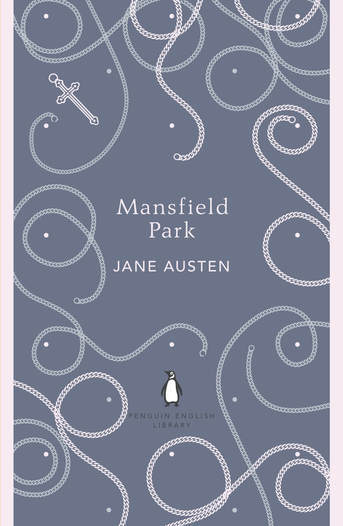 A timid girl named Fanny Price comes to live with her wealthy relatives, the Bertrams, at Mansfield Park when she’s just ten years old. Fanny grows up very shy and is often ignored and treated unkindly by her two cousins and her uncle. As the years go by, a wealthy brother and sister, Henry and Mary Crawford, move to a nearby house and shake things up when they come to visit Mansfield Park. Julia and Maria, Fanny’s cousins fall both madly in love with Henry, while Mary Crawford shows some interest in Edmund Bertram, Fanny’s cousin and the person whom she is in love with. Love triangles and quadrangles start spinning, and Fannie and the rest of the Bertrams must find a way to untangle themselves from the whole ordeal.
A timid girl named Fanny Price comes to live with her wealthy relatives, the Bertrams, at Mansfield Park when she’s just ten years old. Fanny grows up very shy and is often ignored and treated unkindly by her two cousins and her uncle. As the years go by, a wealthy brother and sister, Henry and Mary Crawford, move to a nearby house and shake things up when they come to visit Mansfield Park. Julia and Maria, Fanny’s cousins fall both madly in love with Henry, while Mary Crawford shows some interest in Edmund Bertram, Fanny’s cousin and the person whom she is in love with. Love triangles and quadrangles start spinning, and Fannie and the rest of the Bertrams must find a way to untangle themselves from the whole ordeal.
#6: Shirley by Charlotte Bronte
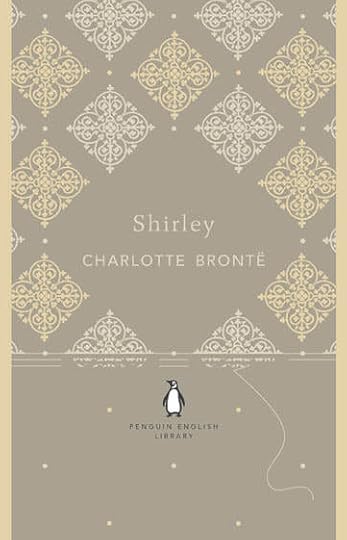 The story starts with Robert Moore, a mill-owner in Yorkshire, who faces violent oppositions from his workers. He is loved by his cousin Caroline and to some extent does return her affection but is too practical to indulge in marriage with her due to his financial situation. As Caroline falls into despair, and Robert struggles to save his mill, enters Shirley Keelder. Young, beautiful, spirited and rich, she comes to the Yorkshire neighborhood and evidently strikes up a friendly relationship with Caroline. However, with the arrival of the affluent Shirley, the entire Yorkshire community expects her to marry Robert and to save him from financial ruin. But can Shirley accept Robert without ruining her new friendship with Caroline?
The story starts with Robert Moore, a mill-owner in Yorkshire, who faces violent oppositions from his workers. He is loved by his cousin Caroline and to some extent does return her affection but is too practical to indulge in marriage with her due to his financial situation. As Caroline falls into despair, and Robert struggles to save his mill, enters Shirley Keelder. Young, beautiful, spirited and rich, she comes to the Yorkshire neighborhood and evidently strikes up a friendly relationship with Caroline. However, with the arrival of the affluent Shirley, the entire Yorkshire community expects her to marry Robert and to save him from financial ruin. But can Shirley accept Robert without ruining her new friendship with Caroline?
#7: Emma by Jane Austen (1815)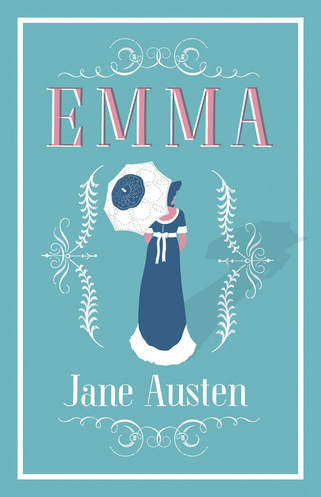 Jane Austen is a woman of many talents. She can deliver a biting social commentary, she can reduce anyone to fits of giggles, and (more importantly) she knows how to write a great love story. Austen’s timeless classic, Emma, is about a young matchmaker who does not believe that she, herself, will ever find (or need) love. When we first meet Emma Woodhouse, she realizes that she is quite good at playing matchmaker. She convinces her governess and friend, Ms. Taylor, to marry Mr. Weston. From this, she thinks that she is gifted as a matchmaker, soon turning her talents to others that she knows. Hilarity ensues with zany schemes, terrible misunderstandings, gossip gone awry and an attractive pull towards the respectable Mr. Knightly.
Jane Austen is a woman of many talents. She can deliver a biting social commentary, she can reduce anyone to fits of giggles, and (more importantly) she knows how to write a great love story. Austen’s timeless classic, Emma, is about a young matchmaker who does not believe that she, herself, will ever find (or need) love. When we first meet Emma Woodhouse, she realizes that she is quite good at playing matchmaker. She convinces her governess and friend, Ms. Taylor, to marry Mr. Weston. From this, she thinks that she is gifted as a matchmaker, soon turning her talents to others that she knows. Hilarity ensues with zany schemes, terrible misunderstandings, gossip gone awry and an attractive pull towards the respectable Mr. Knightly.
#8: Villette by Charlotte Bronte (1853)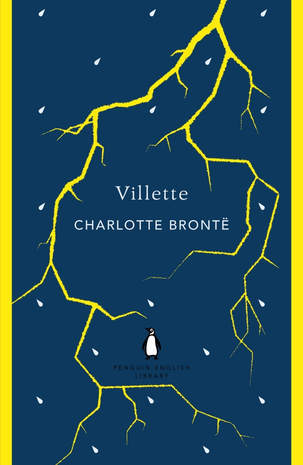 When Lucy Snowe, an educated young Englishwoman, is left in destitute after the death of her mysterious family, she takes herself on a blind, daring trip to the kingdom of Labassecour, where she lands herself a job in the small town of Villette. She becomes a nursery governess to the three daughters of the proprietress of a large school for girls. When she grows increasingly closer to the school’s literature teacher, M. Paul, Lucy must first confront herself with her past, which is slowly seeping into the once quiet neighborhood of Villette.
When Lucy Snowe, an educated young Englishwoman, is left in destitute after the death of her mysterious family, she takes herself on a blind, daring trip to the kingdom of Labassecour, where she lands herself a job in the small town of Villette. She becomes a nursery governess to the three daughters of the proprietress of a large school for girls. When she grows increasingly closer to the school’s literature teacher, M. Paul, Lucy must first confront herself with her past, which is slowly seeping into the once quiet neighborhood of Villette.
#9: Northanger Abbey by Jane Austen (1817)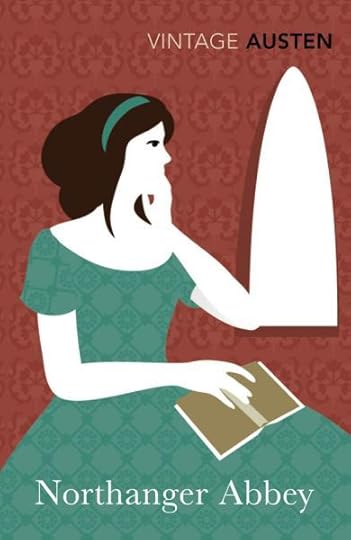 When voracious reader, Catherine Morland is invited to accompany their family friends in Bath, she meets and befriends two families: the scheming Thorpes and the wealthy, educated Tilneys. Upon meeting the charming and witty Henry Tilney at a ball, Catherine quickly develops a crush on him, all while Catherine’s new friend, Isabella tries to pair Catherine up with her rude and overbearing brother, John. When the Tilney family requests Catherine to join them at their home at Northanger Abbey, Catherine can’t help but be curious about the place. But with her love and knowledge of Gothic novels, Catherine begins to confuse fiction with reality when she begins to make deadly assumptions after hearing about Mrs. Tilney’s death.
When voracious reader, Catherine Morland is invited to accompany their family friends in Bath, she meets and befriends two families: the scheming Thorpes and the wealthy, educated Tilneys. Upon meeting the charming and witty Henry Tilney at a ball, Catherine quickly develops a crush on him, all while Catherine’s new friend, Isabella tries to pair Catherine up with her rude and overbearing brother, John. When the Tilney family requests Catherine to join them at their home at Northanger Abbey, Catherine can’t help but be curious about the place. But with her love and knowledge of Gothic novels, Catherine begins to confuse fiction with reality when she begins to make deadly assumptions after hearing about Mrs. Tilney’s death.
#10: Madame Bovary by Gustave Falubert (1856)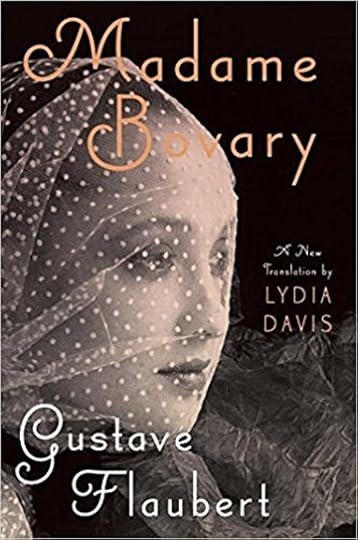 After the death of his first wife, dull Charles Bovary is in search of a new wife. When he meets the gorgeous and exciting Emma Rouault, he ends up marrying her, unaware of the the romantic fantasies and ideals his new wife possesses. Within the first few months of their marriage, Emma grows excessively bored of her new life and longs for the opulent lifestyle of balls and aristocrats. As she continues to compare her fantasies to the humdrum reality of her life, the young couple moves to Yonville, a slightly larger town in an attempt to counteract Emma’s slowly growing depression. But upon their arrival to Yonville, does Emma encounter two men whom she harbors overwhelming emotions for, evidently leading to her ultimate demise.
After the death of his first wife, dull Charles Bovary is in search of a new wife. When he meets the gorgeous and exciting Emma Rouault, he ends up marrying her, unaware of the the romantic fantasies and ideals his new wife possesses. Within the first few months of their marriage, Emma grows excessively bored of her new life and longs for the opulent lifestyle of balls and aristocrats. As she continues to compare her fantasies to the humdrum reality of her life, the young couple moves to Yonville, a slightly larger town in an attempt to counteract Emma’s slowly growing depression. But upon their arrival to Yonville, does Emma encounter two men whom she harbors overwhelming emotions for, evidently leading to her ultimate demise.
#11: Persuasion by Jane Austen (1817)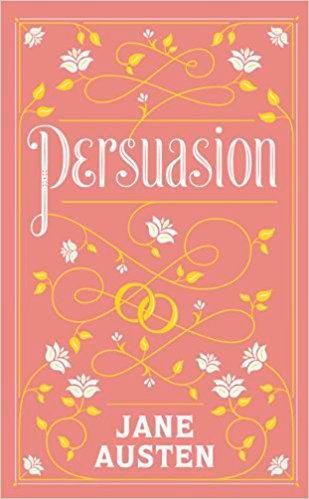 Eight years ago, a young Captain Wentworth and the middle Elliot daughter, Anne, fell in love. After dating for only a few months, the two of them decided that they wanted to get married. But Wentworth’s service in the navy, however, didn’t give him enough of a steady income or social status to please Anne’s family. Eventually, the rest of the Elliot family persuaded Anne to break off her short-lived engagement to Wentworth, leaving Anne heartbroken. Now, the Elliots of Kellynch Hall, are in financial trouble, and in a last ditch effort to save themselves from debt move to Bath in the hopes of increasing their income. But before they move, Anne runs into no other than the one and only Captain Wentworth, back with a massive fortune.
Eight years ago, a young Captain Wentworth and the middle Elliot daughter, Anne, fell in love. After dating for only a few months, the two of them decided that they wanted to get married. But Wentworth’s service in the navy, however, didn’t give him enough of a steady income or social status to please Anne’s family. Eventually, the rest of the Elliot family persuaded Anne to break off her short-lived engagement to Wentworth, leaving Anne heartbroken. Now, the Elliots of Kellynch Hall, are in financial trouble, and in a last ditch effort to save themselves from debt move to Bath in the hopes of increasing their income. But before they move, Anne runs into no other than the one and only Captain Wentworth, back with a massive fortune.
#12: Lorna Doone by R.D. Blackmore (1869)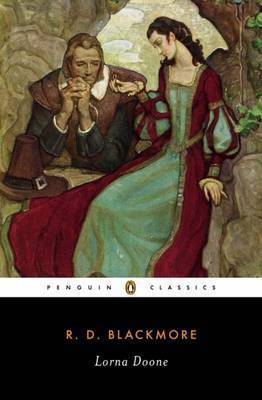 When John Ridd – a member of the now outlawed Doone family in Somerset, England – falls hopelessly in love with Lorna, he is forlorn to learn that she is betrothed to the son of the Doone heir, Carver. Carver is cruel, menacing and will do everything in his power to force the marriage on Lorna once he comes into his inheritance. Seized by his love and curiosity of adventure, John helps Lorna escape, and together they embark on an journey throughout the English countryside that ultimately climaxes into heartrending violence between the Doones, and John himself.
When John Ridd – a member of the now outlawed Doone family in Somerset, England – falls hopelessly in love with Lorna, he is forlorn to learn that she is betrothed to the son of the Doone heir, Carver. Carver is cruel, menacing and will do everything in his power to force the marriage on Lorna once he comes into his inheritance. Seized by his love and curiosity of adventure, John helps Lorna escape, and together they embark on an journey throughout the English countryside that ultimately climaxes into heartrending violence between the Doones, and John himself.
#13: Little Women by Louisa May Alcott (1869)
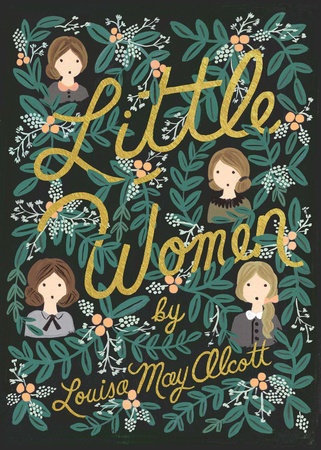 When their father leaves to fight in the Civil War, four teenage sisters and their mother must strive to support their family in their new New England neighborhood. Meg, Jo, Beth and Amy March all contribute to maintaining a stable household, and in the process become close friends with their wealthy neighbor, Theodore Laurence (or “Laurie” as the March sisters call him). The theme of love is everywhere in Little Women. Not just romantic love, but also more abstract affections, such as the love of country or the love of religion. At least love in Alcott’s novel has the ability to sweeten any sour situation. Even if that situation happens to be a love triangle between Jo, Laurie and the respectable Professor Bhaer.
When their father leaves to fight in the Civil War, four teenage sisters and their mother must strive to support their family in their new New England neighborhood. Meg, Jo, Beth and Amy March all contribute to maintaining a stable household, and in the process become close friends with their wealthy neighbor, Theodore Laurence (or “Laurie” as the March sisters call him). The theme of love is everywhere in Little Women. Not just romantic love, but also more abstract affections, such as the love of country or the love of religion. At least love in Alcott’s novel has the ability to sweeten any sour situation. Even if that situation happens to be a love triangle between Jo, Laurie and the respectable Professor Bhaer.
#14: Anna Karenina by Leo Tolstoy (1877)
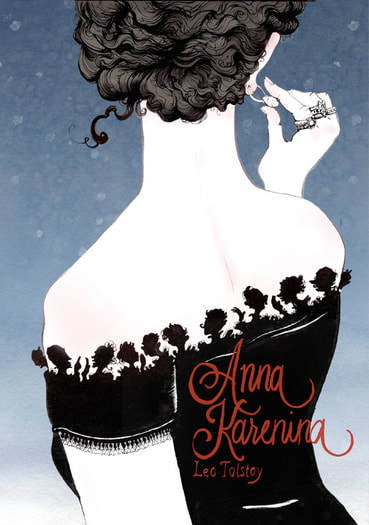 In 1874, in Imperial Russia, the aristocratic Anna Karenina travels from Saint Petersburg to Moscow to save the marriage of her brother Prince Oblonsky, who had a love affair with his housemaid. Anna Karenina, however is stuck in a loveless marriage with her husband, Count Alexei Karenin, a match that was primarily held in place by the dictates of society. But when Anna meets the dashing cavalry officer, Count Vronsky, she readily abandons her husband and son for the sake of illicit passion. Far from being an ennobling force, Anna and Vronsky’s love leads to chaos, ruin and eventually to a certain character’s doomed demise.
In 1874, in Imperial Russia, the aristocratic Anna Karenina travels from Saint Petersburg to Moscow to save the marriage of her brother Prince Oblonsky, who had a love affair with his housemaid. Anna Karenina, however is stuck in a loveless marriage with her husband, Count Alexei Karenin, a match that was primarily held in place by the dictates of society. But when Anna meets the dashing cavalry officer, Count Vronsky, she readily abandons her husband and son for the sake of illicit passion. Far from being an ennobling force, Anna and Vronsky’s love leads to chaos, ruin and eventually to a certain character’s doomed demise.
#15: The Portrait of a Lady by Henry James (1881)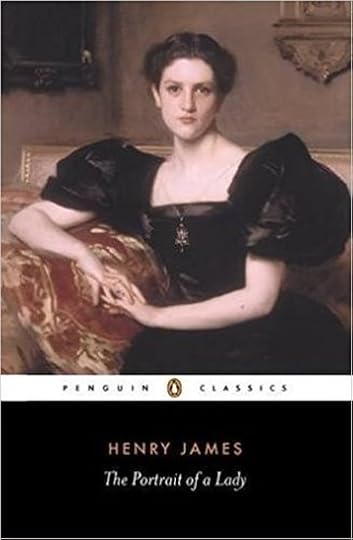 After the death of her father, Isabel Archer – young, beautiful, and exceedingly intelligent – travels to England with her eccentric aunt, Mrs. Touchett. Isabel is ambitious and wants to assert her own unique self in life. She greatly values her independence and understands that if she were to marry, she would be sacrificing her freedom. So she asserts her freedom when she turns down two offers of marriage. The first is from the the powerful Casper Goodwood and the second is from Lord Warburton. But when she meets Gilbert Osmond while abroad in Florence, Isabel becomes infatuated with him and debates whether to risk her own independence for him.
After the death of her father, Isabel Archer – young, beautiful, and exceedingly intelligent – travels to England with her eccentric aunt, Mrs. Touchett. Isabel is ambitious and wants to assert her own unique self in life. She greatly values her independence and understands that if she were to marry, she would be sacrificing her freedom. So she asserts her freedom when she turns down two offers of marriage. The first is from the the powerful Casper Goodwood and the second is from Lord Warburton. But when she meets Gilbert Osmond while abroad in Florence, Isabel becomes infatuated with him and debates whether to risk her own independence for him.
#16: The Age of Innocence by Edith Wharton (1920)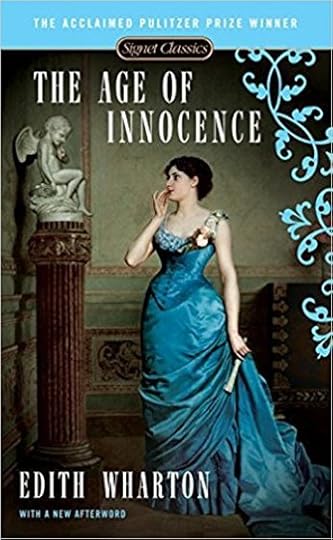 Through a critical eye, Wharton narrates a romantic doom by duty in 1870s “Old New York.” The story follows Newland Archer, a lawyer who is engaged to May Welland. Both of them are well-bred, and part of New York’s richest and oldest high society families. But when May’s cousin, Countess Ellen Olenska arrives in the city after fleeing a bad marriage, Newland becomes increasingly infatuated with her. He begins to question if he should risk it all, break off his engagement with May and be with Ellen instead. Yet, Newland understands that if he persues Ellen, his actions would banish them forever from the rigid puritanical society from which they live.
Through a critical eye, Wharton narrates a romantic doom by duty in 1870s “Old New York.” The story follows Newland Archer, a lawyer who is engaged to May Welland. Both of them are well-bred, and part of New York’s richest and oldest high society families. But when May’s cousin, Countess Ellen Olenska arrives in the city after fleeing a bad marriage, Newland becomes increasingly infatuated with her. He begins to question if he should risk it all, break off his engagement with May and be with Ellen instead. Yet, Newland understands that if he persues Ellen, his actions would banish them forever from the rigid puritanical society from which they live.
#17: Lady Chatterley's Lover by D.H. Lawrence (1928)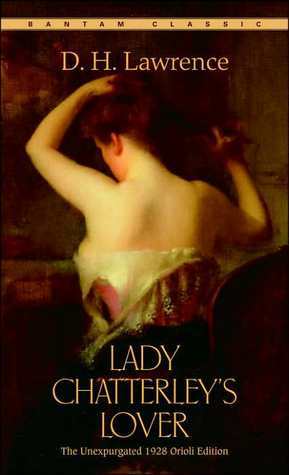 If you’re seeking a romance novel that does not fall under the penmanship of Danielle Stelle or E.L. James, try engaging yourself with Lawrence’s writing. In Lady Chatterley’s Lover, Lawrence’s literary prose is something much more than plain “sexy writing.” He focuses in on each of his characters, and explores their own psychological mindsets. Set two years after World War I, the story zeros in on Connie and her husband, Clifford Chatterley. When Clifford returns from the war paralyzed from the waist down, Connie becomes restless. Clifford is incapable of having sex, but he hints to Connie that he would like a child – so long as he does not know who the real father is. Then enters, Oliver Mellors, the estate gamekeeper who soon becomes Connie’s lover. From their very first encounter, Connie begins to adore Mellors, feeling that they have connected on a deeper, sensual level. But as they grow progressively closer, someone from Mellors’ past returns to complicate matters.
If you’re seeking a romance novel that does not fall under the penmanship of Danielle Stelle or E.L. James, try engaging yourself with Lawrence’s writing. In Lady Chatterley’s Lover, Lawrence’s literary prose is something much more than plain “sexy writing.” He focuses in on each of his characters, and explores their own psychological mindsets. Set two years after World War I, the story zeros in on Connie and her husband, Clifford Chatterley. When Clifford returns from the war paralyzed from the waist down, Connie becomes restless. Clifford is incapable of having sex, but he hints to Connie that he would like a child – so long as he does not know who the real father is. Then enters, Oliver Mellors, the estate gamekeeper who soon becomes Connie’s lover. From their very first encounter, Connie begins to adore Mellors, feeling that they have connected on a deeper, sensual level. But as they grow progressively closer, someone from Mellors’ past returns to complicate matters.
#18: Gone with the Wind by Margaret Mitchell (1936)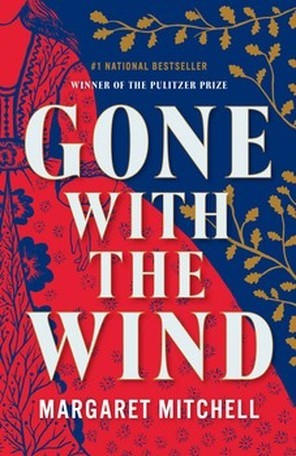 Margaret Mitchell’s sweeping epic tale of the South begins with Scarlett O’Hara, a narcissistic plantation belle whom – underneath her polished exterior – is a dynamo of unruly impulses. Although her beauty and flirtatious behavior has enchanted almost every young man in the region, Scarlett has her eyes set on marrying Ashley Wilkes. But when she finds out that Ashley is engaged to someone else, does Scarlett’s real love story begin. The Civil War descends upon Scarlett’s hometown. She marries Ashley’s brother-in-law, Charles – just to spite him. Charles dies in the war, leaving Scarlett widowed and pregnant. Oh, and there’s this guy name Rhett Butler who keeps popping up in Scarlett’s life at the most inconvenient times. Yet, as Scarlett tries to pick up the pieces of what was left of her former life after the war, does she find herself being drawn by Rhett’s dashing persona.
Margaret Mitchell’s sweeping epic tale of the South begins with Scarlett O’Hara, a narcissistic plantation belle whom – underneath her polished exterior – is a dynamo of unruly impulses. Although her beauty and flirtatious behavior has enchanted almost every young man in the region, Scarlett has her eyes set on marrying Ashley Wilkes. But when she finds out that Ashley is engaged to someone else, does Scarlett’s real love story begin. The Civil War descends upon Scarlett’s hometown. She marries Ashley’s brother-in-law, Charles – just to spite him. Charles dies in the war, leaving Scarlett widowed and pregnant. Oh, and there’s this guy name Rhett Butler who keeps popping up in Scarlett’s life at the most inconvenient times. Yet, as Scarlett tries to pick up the pieces of what was left of her former life after the war, does she find herself being drawn by Rhett’s dashing persona.
#19: The End of the Affair by Graham Greene (1951)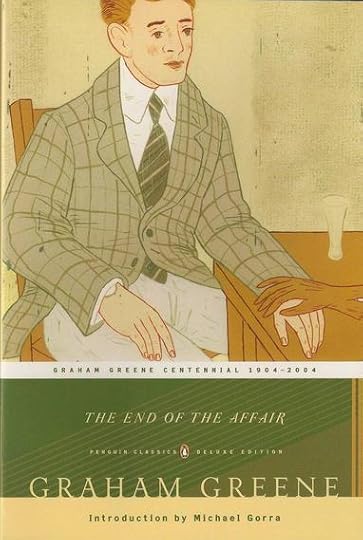 Graham Greene’s novel is narrated by Bendrix, a writer who once had an affair with a married woman named Sarah Miles. She ended the affair, and since then, he has lived a bitter existence. Seeing her husband, Henry, spurs Bendrix to hire a private detective, who brings to Bendrix Sarah’s journal and letters. He reads her writings, only to discover that she had ended the affair because she was starting to believe in Catholic values, and with that, came the guilt of having betrayed her husband. However, Bendrix finds this puzzling, since Sarah had previously not believed in God. Just when Bendrix tries to confront Sarah about why she broke off the affair, does she die. In her death, Bendrix starts to examine his own faith as he looks back on how he and Sarah ignited their once passionate romance.
Graham Greene’s novel is narrated by Bendrix, a writer who once had an affair with a married woman named Sarah Miles. She ended the affair, and since then, he has lived a bitter existence. Seeing her husband, Henry, spurs Bendrix to hire a private detective, who brings to Bendrix Sarah’s journal and letters. He reads her writings, only to discover that she had ended the affair because she was starting to believe in Catholic values, and with that, came the guilt of having betrayed her husband. However, Bendrix finds this puzzling, since Sarah had previously not believed in God. Just when Bendrix tries to confront Sarah about why she broke off the affair, does she die. In her death, Bendrix starts to examine his own faith as he looks back on how he and Sarah ignited their once passionate romance.
#20: Doctor Zhivago by Bori Pasternak (1957)
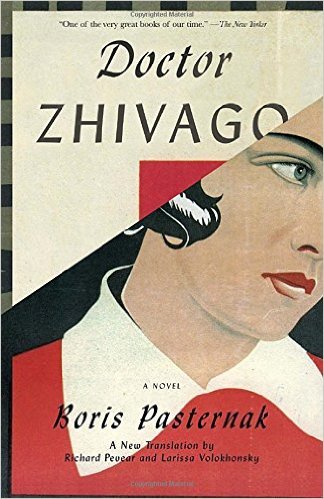 While serving in the war, Doctor Yury Zhivago meets a nurse named Lara Antipova and falls in love with her. Lara’s husband, Pasha, has gone missing in the war and is ultimately presumed dead. But rather than have an affair with Lara, Zhivago stays true to his wife, Tonya and heads back home when the fighting is over. But everything changes when the Bolshevik Revolution has taken hold of Russia. Yury serves as a field doctor until he cannot stand the war any longer. He deserts when the Red Army fights a decisive battle with the White Army and wins the civil war. Then when Yury returns to his hometown he runs into no other than Lara, herself.
While serving in the war, Doctor Yury Zhivago meets a nurse named Lara Antipova and falls in love with her. Lara’s husband, Pasha, has gone missing in the war and is ultimately presumed dead. But rather than have an affair with Lara, Zhivago stays true to his wife, Tonya and heads back home when the fighting is over. But everything changes when the Bolshevik Revolution has taken hold of Russia. Yury serves as a field doctor until he cannot stand the war any longer. He deserts when the Red Army fights a decisive battle with the White Army and wins the civil war. Then when Yury returns to his hometown he runs into no other than Lara, herself.
#21: Lady of Quality by Georgette Heyer (1972)
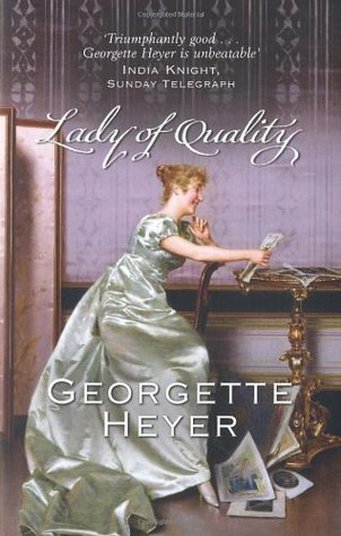 Set in the Regency era of England, a wealthy, beautiful and intelligent Annis Wychwood has decided to move to Bath. But to the displeasure of her family, she has announced that she will be living alone. Then arrives Lucilla Carleton. Lucilla is running away to Bath to avoid her marriage to Ninian Elmore, a marriage that her family greatly favors but Lucilla detests. Thus, Annis finds herself embroiled in the affairs of the pretty runaway heiress, and with that Lucilla’s uncivil guardian, Mr. Oliver Carleton. But Annis’s friendship with Lucilla has it’s own consequences. Among them, the conflicting emotions she feels for Oliver Carleton.
Set in the Regency era of England, a wealthy, beautiful and intelligent Annis Wychwood has decided to move to Bath. But to the displeasure of her family, she has announced that she will be living alone. Then arrives Lucilla Carleton. Lucilla is running away to Bath to avoid her marriage to Ninian Elmore, a marriage that her family greatly favors but Lucilla detests. Thus, Annis finds herself embroiled in the affairs of the pretty runaway heiress, and with that Lucilla’s uncivil guardian, Mr. Oliver Carleton. But Annis’s friendship with Lucilla has it’s own consequences. Among them, the conflicting emotions she feels for Oliver Carleton.
#22: The Princess Bride by William Goldman (1973)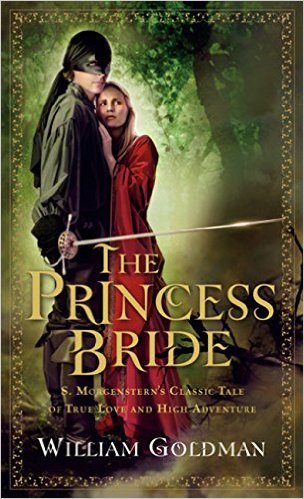 The story begins with the beautiful Buttercup who lives on a farm. She is one of the most beautiful women in the world and tends to spend most of her days bossing around a poor farmhand named, Wesley who works on her land. Long story short, Buttercup realizes that she’s actually in love with Wesley and Wesley feels the same way. But before they can get married, Wesley insists that he makes his fortune in America so that they can later be together. Buttercup promises to be faithful but is devastated to when she learns that Wesley’s ship has been attacked by the infamous Dread Pirate Roberts and presumes him to be dead. Meanwhile, Prince Humperdinck is in search of a bride and comes across Buttercup. Enticed by her beauty and convinced that Wesley is gone forever, the two get engaged. But when Wesley reappears – very much alive – he enlists the help of a swordsman named Inigo and giant named Fezzik to rescue Buttercup from her loveless engagement before it’s too late.
The story begins with the beautiful Buttercup who lives on a farm. She is one of the most beautiful women in the world and tends to spend most of her days bossing around a poor farmhand named, Wesley who works on her land. Long story short, Buttercup realizes that she’s actually in love with Wesley and Wesley feels the same way. But before they can get married, Wesley insists that he makes his fortune in America so that they can later be together. Buttercup promises to be faithful but is devastated to when she learns that Wesley’s ship has been attacked by the infamous Dread Pirate Roberts and presumes him to be dead. Meanwhile, Prince Humperdinck is in search of a bride and comes across Buttercup. Enticed by her beauty and convinced that Wesley is gone forever, the two get engaged. But when Wesley reappears – very much alive – he enlists the help of a swordsman named Inigo and giant named Fezzik to rescue Buttercup from her loveless engagement before it’s too late.
#23: Love in the Time of Cholera by Gabriel Garcia Márquez (1985)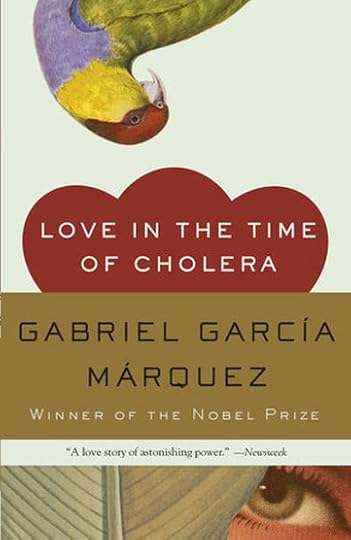 It has officially been fifty-one years, nine months and four days since Fermina Daza turned down hopeless romantic Florentino Ariza’s impassioned advances. Instead, she has married Dr. Juvenal Urbino, the City of Viceroy’s most esteemed doctor. But regardless of the many women whom had loved him, Florentino has sworn his eternal love solely for Fermina and hopes for the day when he may court her again. When Fermina’s husband accidentally dies, Florentino sees the doctor’s death as his chance to declare his enduring love to the now widowed Fermina. Richly passionate, and a love story that stretches multiple decades at its center, Márquez’s acclaimed novel delves into the myths we create about love, and their power over us.
It has officially been fifty-one years, nine months and four days since Fermina Daza turned down hopeless romantic Florentino Ariza’s impassioned advances. Instead, she has married Dr. Juvenal Urbino, the City of Viceroy’s most esteemed doctor. But regardless of the many women whom had loved him, Florentino has sworn his eternal love solely for Fermina and hopes for the day when he may court her again. When Fermina’s husband accidentally dies, Florentino sees the doctor’s death as his chance to declare his enduring love to the now widowed Fermina. Richly passionate, and a love story that stretches multiple decades at its center, Márquez’s acclaimed novel delves into the myths we create about love, and their power over us.
#24: Romeo and Juliet, William Shakespeare (1597)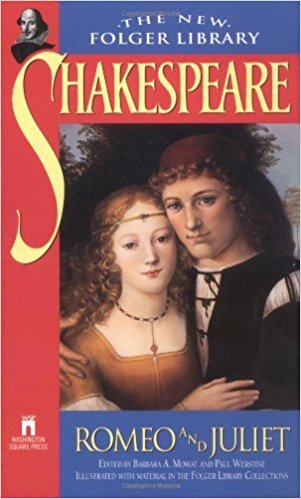 It wouldn’t be a complete classical romance list without Romeo and Juliet. You know how it goes. The story takes place in Verona. There’s a feud between the Montague and the Capulet families. Romeo (a Montague) falls for the beautiful Juliet (Capulet). There’s a miscommunication. And then everything goes downhill from there with disastrous consequences (spoiler alert!) Call it romantic or tragic, but Shakespeare’s play evokes idealized sentimental love between two star-crossed individuals and follows through on all of the necessary romantic tropes (e.g. love at first sight, love conquers all). But some have argued that it’s in fact the play’s tragic ending that makes the story all the more alluring.
It wouldn’t be a complete classical romance list without Romeo and Juliet. You know how it goes. The story takes place in Verona. There’s a feud between the Montague and the Capulet families. Romeo (a Montague) falls for the beautiful Juliet (Capulet). There’s a miscommunication. And then everything goes downhill from there with disastrous consequences (spoiler alert!) Call it romantic or tragic, but Shakespeare’s play evokes idealized sentimental love between two star-crossed individuals and follows through on all of the necessary romantic tropes (e.g. love at first sight, love conquers all). But some have argued that it’s in fact the play’s tragic ending that makes the story all the more alluring.
#25: A Room with a View, E.M. Forster (1908)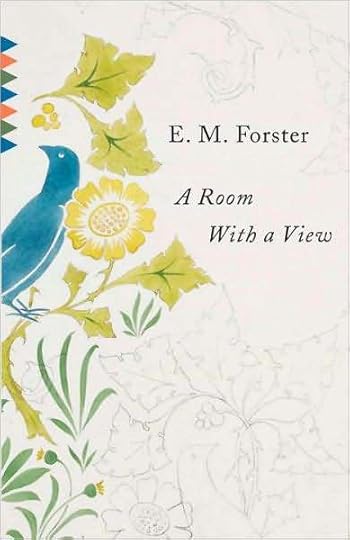 When Lucy Honeychurch and her cousin, Charlotte Bartlett vacation to Florence, Italy together, the two women are displeased with their rooms. But when a pair of unconventional guests, Mr. Emerson and his son, George, offer to switch rooms with them, does it spark a unrestrained attraction between Lucy and George. However, this is the Edwardian era, and boundaries of social class dominate each of the characters. Just when Lucy is tempted to follow her emotions, she and George witness a dramatic murder in a Florence square that irreversibly changes not just their views of the social rules that they abide by, but their feelings for each other as well.
When Lucy Honeychurch and her cousin, Charlotte Bartlett vacation to Florence, Italy together, the two women are displeased with their rooms. But when a pair of unconventional guests, Mr. Emerson and his son, George, offer to switch rooms with them, does it spark a unrestrained attraction between Lucy and George. However, this is the Edwardian era, and boundaries of social class dominate each of the characters. Just when Lucy is tempted to follow her emotions, she and George witness a dramatic murder in a Florence square that irreversibly changes not just their views of the social rules that they abide by, but their feelings for each other as well.
#26: A Midsummer Night’s Dream, William Shakespeare (1605)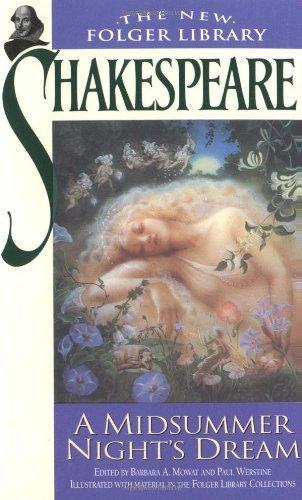 Lysander loves Hermia, and Hermia loves Lysander. Helena loves Demetrius; Demetrius used to love Helena but now loves Hermia. In his second most notorious romantic play, Shakespeare introduces the human world intersecting with the realm of magic. But when Hermia is forced to marry Demetrius instead of Lysander, they run away together into the woods. From there, other romantic entanglements are abound in the woods, mostly performed by the mischievous fairies.
Lysander loves Hermia, and Hermia loves Lysander. Helena loves Demetrius; Demetrius used to love Helena but now loves Hermia. In his second most notorious romantic play, Shakespeare introduces the human world intersecting with the realm of magic. But when Hermia is forced to marry Demetrius instead of Lysander, they run away together into the woods. From there, other romantic entanglements are abound in the woods, mostly performed by the mischievous fairies.
#27: The Blue Castle, L.M. Montgomery (1926)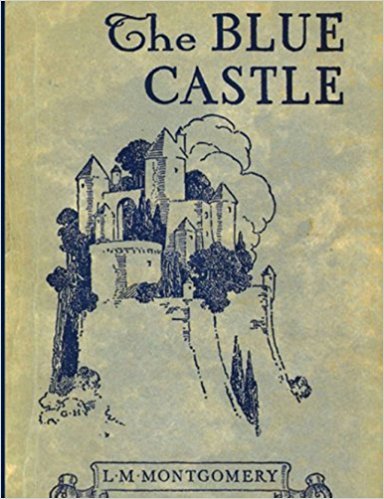 The story follows Valancy Stirling, who, at the age of twenty-nine, discovers that she has a fatal heart condition. With this news, she vows to live her life to the fullest for the first time. She starts living and experiencing everything she has always dreamed of having in life. She no longer cares for what her controlling and stifling family members think about her, and as she expands her horizons, Valancy makes her first step towards independence by landing a job as a caretaker of one of her former schoolmates who is dying of consumption. While living there, Valancy suddenly becomes close with that of the mysterious Barney Snaith. With time running out, Valancy has to make the decision whether to live out the rest of her life quietly, or to act upon her feelings for Barney.
The story follows Valancy Stirling, who, at the age of twenty-nine, discovers that she has a fatal heart condition. With this news, she vows to live her life to the fullest for the first time. She starts living and experiencing everything she has always dreamed of having in life. She no longer cares for what her controlling and stifling family members think about her, and as she expands her horizons, Valancy makes her first step towards independence by landing a job as a caretaker of one of her former schoolmates who is dying of consumption. While living there, Valancy suddenly becomes close with that of the mysterious Barney Snaith. With time running out, Valancy has to make the decision whether to live out the rest of her life quietly, or to act upon her feelings for Barney.
#28: Twelfth Night, William Shakespeare (1602)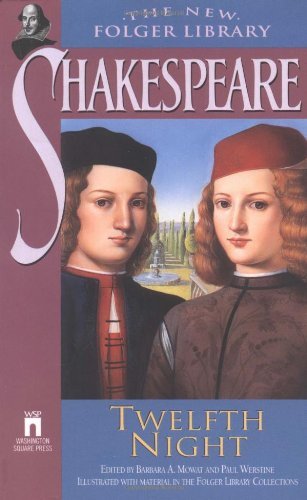 The play opens when Viola finds herself shipwrecked after a violent storm off the coast of Illyria. In the process, she has lost her twin brother, Sebastian, and must disguise herself as a boy for protection. She becomes the a page in the service of Duke Orsino. But the Duke is spurned by the love he has for Countess Olivia. Olivia has forsworn all men after the death of her brother and has constantly rebuffed his advances multiple times. That is, until she meets Viola (disguised as a boy), and falls madly in love with her.
The play opens when Viola finds herself shipwrecked after a violent storm off the coast of Illyria. In the process, she has lost her twin brother, Sebastian, and must disguise herself as a boy for protection. She becomes the a page in the service of Duke Orsino. But the Duke is spurned by the love he has for Countess Olivia. Olivia has forsworn all men after the death of her brother and has constantly rebuffed his advances multiple times. That is, until she meets Viola (disguised as a boy), and falls madly in love with her.
See? Who needs a Valentine when you have books?
And chocolate!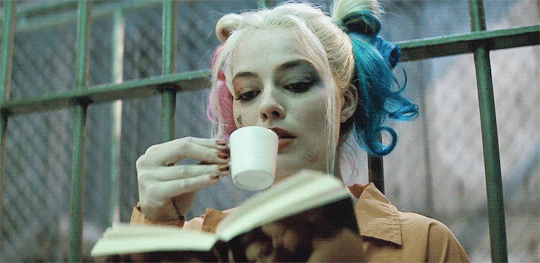
(Okay, scratch that. We may actually need the chocolates for this one).
Nothing says February quite like a romantic tale. While there will always be great modern romances, there will always room on your shelf for the classics. As authors like Jane Austen or the Bronte sisters were penning tragic, intoxicating, head-over-heels stories in the early/mid nineteenth century, they helped contribute to the romance genre that we know today.
So while others on V-Day were out braving the elements or spending half of their paychecks on a candlelit dinner, do not feel like you were missing out. After all, isn't the one person whom you should love and take care of above all else, yourself? So curl up inside your fluffy bed, draw yourself a bubble bath, or sip some tea on your couch as you dig into these timeless romantic classics.
And just remember, whatever your relationship status is – "single," "in a relationship," "it's complicated" – anyone can enjoy a good old-fashion love story. Besides, you deserve to treat yourself on a memorable date with classic literature.
#1: Sense and Sensibility by Jane Austen (1811)
 In the wake of their father’s death, the Dashwood sisters, Elinor, Marianne and Margaret, are left to their own devices when they move to a cottage owned by a distant cousin. Before they move house, though, Elinor (the more sensible sister) tentatively allows herself to fall in love with the admirable Edward Ferras. The Dashwoods try to make themselves at home in their cottage, all while Marianne (the sister full of sensibility) grows more and more in love with the ever handsome Willoughby. But there seems to be something off about Willoughby, and the only one who sees right through him is the good-hearted, Colonel Brandon who is vying for Marianne’s heart as well.
In the wake of their father’s death, the Dashwood sisters, Elinor, Marianne and Margaret, are left to their own devices when they move to a cottage owned by a distant cousin. Before they move house, though, Elinor (the more sensible sister) tentatively allows herself to fall in love with the admirable Edward Ferras. The Dashwoods try to make themselves at home in their cottage, all while Marianne (the sister full of sensibility) grows more and more in love with the ever handsome Willoughby. But there seems to be something off about Willoughby, and the only one who sees right through him is the good-hearted, Colonel Brandon who is vying for Marianne’s heart as well. #2: Jane Eyre by Charlotte Bronte (1847)
 Orphaned and alone, young Jane Eyre lives with her aunt and cousins, the Reeds, at Gateshead Hall. Mrs. Reed hates Jane, and after fighting with her bully cousin John Reed, Jane’s aunt imprisons Jane in a room where Jane’s uncle died. There, she has a hysterical fit when she thinks she sees her uncle’s ghost appearing. After this, Jane’s aunt sends her away to a religious boarding school where Jane grows up later to become a governess. The governess job that Jane accepts is to tutor a little French girl, Adéle Varens, at a country house called Thornfield. Jane goes there and meets the mysterious owner, Mr. Rochester. Jane likes Thornfield, although she is partly disturbed by the eerie laughter coming from a locked room on the third floor.
Orphaned and alone, young Jane Eyre lives with her aunt and cousins, the Reeds, at Gateshead Hall. Mrs. Reed hates Jane, and after fighting with her bully cousin John Reed, Jane’s aunt imprisons Jane in a room where Jane’s uncle died. There, she has a hysterical fit when she thinks she sees her uncle’s ghost appearing. After this, Jane’s aunt sends her away to a religious boarding school where Jane grows up later to become a governess. The governess job that Jane accepts is to tutor a little French girl, Adéle Varens, at a country house called Thornfield. Jane goes there and meets the mysterious owner, Mr. Rochester. Jane likes Thornfield, although she is partly disturbed by the eerie laughter coming from a locked room on the third floor.#3: Pride and Prejudice by Jane Austen (1813)
 It is a truth universally acknowledged that everyone knows this classic love story. Mr. and Mrs. Bennett have five unmarried daughters and a very small fortune. Because of the English property law, the girls and Ms. Bennet will be kicked out of the house when Mr. Bennet dies. Then enters rich, single Mr. Bingley and his friend, Fitzwilliam Darcy. Jane, the eldest of the Bennet sisters takes a liking to Mr. Bingley, but it is Elizabeth Bennet who openly detests Mr. Darcy. It is these first impressions that are never quite really what they seem.
It is a truth universally acknowledged that everyone knows this classic love story. Mr. and Mrs. Bennett have five unmarried daughters and a very small fortune. Because of the English property law, the girls and Ms. Bennet will be kicked out of the house when Mr. Bennet dies. Then enters rich, single Mr. Bingley and his friend, Fitzwilliam Darcy. Jane, the eldest of the Bennet sisters takes a liking to Mr. Bingley, but it is Elizabeth Bennet who openly detests Mr. Darcy. It is these first impressions that are never quite really what they seem.#4: Wuthering Heights by Emily Bronte (1847)
 When Mr. Earnshaw, brings home orphaned Heathcliff to Wuthering Heights, tensions are spurred amongst the Earnshaw children. Hindley Earnshaw detests Heathcliff, while his younger sister, Catherine quickly comes to love him. As Catherine and Heathcliff become inseparable, Hindley’s bitterness for Heathcliff grows when he learns that his father prefers Heathcliff’s company to his own. But after the death of Mr. Earnshaw, things take turn for the worse. Hindley forces Heathcliff into a life of servitude while Catherine’s interests pique when she is introduced to Edgar Linton, whose estate neighbors that of Wuthering Heights.
When Mr. Earnshaw, brings home orphaned Heathcliff to Wuthering Heights, tensions are spurred amongst the Earnshaw children. Hindley Earnshaw detests Heathcliff, while his younger sister, Catherine quickly comes to love him. As Catherine and Heathcliff become inseparable, Hindley’s bitterness for Heathcliff grows when he learns that his father prefers Heathcliff’s company to his own. But after the death of Mr. Earnshaw, things take turn for the worse. Hindley forces Heathcliff into a life of servitude while Catherine’s interests pique when she is introduced to Edgar Linton, whose estate neighbors that of Wuthering Heights.#5: Mansfield Park by Jane Austen (1814)
 A timid girl named Fanny Price comes to live with her wealthy relatives, the Bertrams, at Mansfield Park when she’s just ten years old. Fanny grows up very shy and is often ignored and treated unkindly by her two cousins and her uncle. As the years go by, a wealthy brother and sister, Henry and Mary Crawford, move to a nearby house and shake things up when they come to visit Mansfield Park. Julia and Maria, Fanny’s cousins fall both madly in love with Henry, while Mary Crawford shows some interest in Edmund Bertram, Fanny’s cousin and the person whom she is in love with. Love triangles and quadrangles start spinning, and Fannie and the rest of the Bertrams must find a way to untangle themselves from the whole ordeal.
A timid girl named Fanny Price comes to live with her wealthy relatives, the Bertrams, at Mansfield Park when she’s just ten years old. Fanny grows up very shy and is often ignored and treated unkindly by her two cousins and her uncle. As the years go by, a wealthy brother and sister, Henry and Mary Crawford, move to a nearby house and shake things up when they come to visit Mansfield Park. Julia and Maria, Fanny’s cousins fall both madly in love with Henry, while Mary Crawford shows some interest in Edmund Bertram, Fanny’s cousin and the person whom she is in love with. Love triangles and quadrangles start spinning, and Fannie and the rest of the Bertrams must find a way to untangle themselves from the whole ordeal. #6: Shirley by Charlotte Bronte
 The story starts with Robert Moore, a mill-owner in Yorkshire, who faces violent oppositions from his workers. He is loved by his cousin Caroline and to some extent does return her affection but is too practical to indulge in marriage with her due to his financial situation. As Caroline falls into despair, and Robert struggles to save his mill, enters Shirley Keelder. Young, beautiful, spirited and rich, she comes to the Yorkshire neighborhood and evidently strikes up a friendly relationship with Caroline. However, with the arrival of the affluent Shirley, the entire Yorkshire community expects her to marry Robert and to save him from financial ruin. But can Shirley accept Robert without ruining her new friendship with Caroline?
The story starts with Robert Moore, a mill-owner in Yorkshire, who faces violent oppositions from his workers. He is loved by his cousin Caroline and to some extent does return her affection but is too practical to indulge in marriage with her due to his financial situation. As Caroline falls into despair, and Robert struggles to save his mill, enters Shirley Keelder. Young, beautiful, spirited and rich, she comes to the Yorkshire neighborhood and evidently strikes up a friendly relationship with Caroline. However, with the arrival of the affluent Shirley, the entire Yorkshire community expects her to marry Robert and to save him from financial ruin. But can Shirley accept Robert without ruining her new friendship with Caroline?
#7: Emma by Jane Austen (1815)
 Jane Austen is a woman of many talents. She can deliver a biting social commentary, she can reduce anyone to fits of giggles, and (more importantly) she knows how to write a great love story. Austen’s timeless classic, Emma, is about a young matchmaker who does not believe that she, herself, will ever find (or need) love. When we first meet Emma Woodhouse, she realizes that she is quite good at playing matchmaker. She convinces her governess and friend, Ms. Taylor, to marry Mr. Weston. From this, she thinks that she is gifted as a matchmaker, soon turning her talents to others that she knows. Hilarity ensues with zany schemes, terrible misunderstandings, gossip gone awry and an attractive pull towards the respectable Mr. Knightly.
Jane Austen is a woman of many talents. She can deliver a biting social commentary, she can reduce anyone to fits of giggles, and (more importantly) she knows how to write a great love story. Austen’s timeless classic, Emma, is about a young matchmaker who does not believe that she, herself, will ever find (or need) love. When we first meet Emma Woodhouse, she realizes that she is quite good at playing matchmaker. She convinces her governess and friend, Ms. Taylor, to marry Mr. Weston. From this, she thinks that she is gifted as a matchmaker, soon turning her talents to others that she knows. Hilarity ensues with zany schemes, terrible misunderstandings, gossip gone awry and an attractive pull towards the respectable Mr. Knightly. #8: Villette by Charlotte Bronte (1853)
 When Lucy Snowe, an educated young Englishwoman, is left in destitute after the death of her mysterious family, she takes herself on a blind, daring trip to the kingdom of Labassecour, where she lands herself a job in the small town of Villette. She becomes a nursery governess to the three daughters of the proprietress of a large school for girls. When she grows increasingly closer to the school’s literature teacher, M. Paul, Lucy must first confront herself with her past, which is slowly seeping into the once quiet neighborhood of Villette.
When Lucy Snowe, an educated young Englishwoman, is left in destitute after the death of her mysterious family, she takes herself on a blind, daring trip to the kingdom of Labassecour, where she lands herself a job in the small town of Villette. She becomes a nursery governess to the three daughters of the proprietress of a large school for girls. When she grows increasingly closer to the school’s literature teacher, M. Paul, Lucy must first confront herself with her past, which is slowly seeping into the once quiet neighborhood of Villette.#9: Northanger Abbey by Jane Austen (1817)
 When voracious reader, Catherine Morland is invited to accompany their family friends in Bath, she meets and befriends two families: the scheming Thorpes and the wealthy, educated Tilneys. Upon meeting the charming and witty Henry Tilney at a ball, Catherine quickly develops a crush on him, all while Catherine’s new friend, Isabella tries to pair Catherine up with her rude and overbearing brother, John. When the Tilney family requests Catherine to join them at their home at Northanger Abbey, Catherine can’t help but be curious about the place. But with her love and knowledge of Gothic novels, Catherine begins to confuse fiction with reality when she begins to make deadly assumptions after hearing about Mrs. Tilney’s death.
When voracious reader, Catherine Morland is invited to accompany their family friends in Bath, she meets and befriends two families: the scheming Thorpes and the wealthy, educated Tilneys. Upon meeting the charming and witty Henry Tilney at a ball, Catherine quickly develops a crush on him, all while Catherine’s new friend, Isabella tries to pair Catherine up with her rude and overbearing brother, John. When the Tilney family requests Catherine to join them at their home at Northanger Abbey, Catherine can’t help but be curious about the place. But with her love and knowledge of Gothic novels, Catherine begins to confuse fiction with reality when she begins to make deadly assumptions after hearing about Mrs. Tilney’s death.#10: Madame Bovary by Gustave Falubert (1856)
 After the death of his first wife, dull Charles Bovary is in search of a new wife. When he meets the gorgeous and exciting Emma Rouault, he ends up marrying her, unaware of the the romantic fantasies and ideals his new wife possesses. Within the first few months of their marriage, Emma grows excessively bored of her new life and longs for the opulent lifestyle of balls and aristocrats. As she continues to compare her fantasies to the humdrum reality of her life, the young couple moves to Yonville, a slightly larger town in an attempt to counteract Emma’s slowly growing depression. But upon their arrival to Yonville, does Emma encounter two men whom she harbors overwhelming emotions for, evidently leading to her ultimate demise.
After the death of his first wife, dull Charles Bovary is in search of a new wife. When he meets the gorgeous and exciting Emma Rouault, he ends up marrying her, unaware of the the romantic fantasies and ideals his new wife possesses. Within the first few months of their marriage, Emma grows excessively bored of her new life and longs for the opulent lifestyle of balls and aristocrats. As she continues to compare her fantasies to the humdrum reality of her life, the young couple moves to Yonville, a slightly larger town in an attempt to counteract Emma’s slowly growing depression. But upon their arrival to Yonville, does Emma encounter two men whom she harbors overwhelming emotions for, evidently leading to her ultimate demise.
#11: Persuasion by Jane Austen (1817)
 Eight years ago, a young Captain Wentworth and the middle Elliot daughter, Anne, fell in love. After dating for only a few months, the two of them decided that they wanted to get married. But Wentworth’s service in the navy, however, didn’t give him enough of a steady income or social status to please Anne’s family. Eventually, the rest of the Elliot family persuaded Anne to break off her short-lived engagement to Wentworth, leaving Anne heartbroken. Now, the Elliots of Kellynch Hall, are in financial trouble, and in a last ditch effort to save themselves from debt move to Bath in the hopes of increasing their income. But before they move, Anne runs into no other than the one and only Captain Wentworth, back with a massive fortune.
Eight years ago, a young Captain Wentworth and the middle Elliot daughter, Anne, fell in love. After dating for only a few months, the two of them decided that they wanted to get married. But Wentworth’s service in the navy, however, didn’t give him enough of a steady income or social status to please Anne’s family. Eventually, the rest of the Elliot family persuaded Anne to break off her short-lived engagement to Wentworth, leaving Anne heartbroken. Now, the Elliots of Kellynch Hall, are in financial trouble, and in a last ditch effort to save themselves from debt move to Bath in the hopes of increasing their income. But before they move, Anne runs into no other than the one and only Captain Wentworth, back with a massive fortune. #12: Lorna Doone by R.D. Blackmore (1869)
 When John Ridd – a member of the now outlawed Doone family in Somerset, England – falls hopelessly in love with Lorna, he is forlorn to learn that she is betrothed to the son of the Doone heir, Carver. Carver is cruel, menacing and will do everything in his power to force the marriage on Lorna once he comes into his inheritance. Seized by his love and curiosity of adventure, John helps Lorna escape, and together they embark on an journey throughout the English countryside that ultimately climaxes into heartrending violence between the Doones, and John himself.
When John Ridd – a member of the now outlawed Doone family in Somerset, England – falls hopelessly in love with Lorna, he is forlorn to learn that she is betrothed to the son of the Doone heir, Carver. Carver is cruel, menacing and will do everything in his power to force the marriage on Lorna once he comes into his inheritance. Seized by his love and curiosity of adventure, John helps Lorna escape, and together they embark on an journey throughout the English countryside that ultimately climaxes into heartrending violence between the Doones, and John himself.#13: Little Women by Louisa May Alcott (1869)
 When their father leaves to fight in the Civil War, four teenage sisters and their mother must strive to support their family in their new New England neighborhood. Meg, Jo, Beth and Amy March all contribute to maintaining a stable household, and in the process become close friends with their wealthy neighbor, Theodore Laurence (or “Laurie” as the March sisters call him). The theme of love is everywhere in Little Women. Not just romantic love, but also more abstract affections, such as the love of country or the love of religion. At least love in Alcott’s novel has the ability to sweeten any sour situation. Even if that situation happens to be a love triangle between Jo, Laurie and the respectable Professor Bhaer.
When their father leaves to fight in the Civil War, four teenage sisters and their mother must strive to support their family in their new New England neighborhood. Meg, Jo, Beth and Amy March all contribute to maintaining a stable household, and in the process become close friends with their wealthy neighbor, Theodore Laurence (or “Laurie” as the March sisters call him). The theme of love is everywhere in Little Women. Not just romantic love, but also more abstract affections, such as the love of country or the love of religion. At least love in Alcott’s novel has the ability to sweeten any sour situation. Even if that situation happens to be a love triangle between Jo, Laurie and the respectable Professor Bhaer. #14: Anna Karenina by Leo Tolstoy (1877)
 In 1874, in Imperial Russia, the aristocratic Anna Karenina travels from Saint Petersburg to Moscow to save the marriage of her brother Prince Oblonsky, who had a love affair with his housemaid. Anna Karenina, however is stuck in a loveless marriage with her husband, Count Alexei Karenin, a match that was primarily held in place by the dictates of society. But when Anna meets the dashing cavalry officer, Count Vronsky, she readily abandons her husband and son for the sake of illicit passion. Far from being an ennobling force, Anna and Vronsky’s love leads to chaos, ruin and eventually to a certain character’s doomed demise.
In 1874, in Imperial Russia, the aristocratic Anna Karenina travels from Saint Petersburg to Moscow to save the marriage of her brother Prince Oblonsky, who had a love affair with his housemaid. Anna Karenina, however is stuck in a loveless marriage with her husband, Count Alexei Karenin, a match that was primarily held in place by the dictates of society. But when Anna meets the dashing cavalry officer, Count Vronsky, she readily abandons her husband and son for the sake of illicit passion. Far from being an ennobling force, Anna and Vronsky’s love leads to chaos, ruin and eventually to a certain character’s doomed demise. #15: The Portrait of a Lady by Henry James (1881)
 After the death of her father, Isabel Archer – young, beautiful, and exceedingly intelligent – travels to England with her eccentric aunt, Mrs. Touchett. Isabel is ambitious and wants to assert her own unique self in life. She greatly values her independence and understands that if she were to marry, she would be sacrificing her freedom. So she asserts her freedom when she turns down two offers of marriage. The first is from the the powerful Casper Goodwood and the second is from Lord Warburton. But when she meets Gilbert Osmond while abroad in Florence, Isabel becomes infatuated with him and debates whether to risk her own independence for him.
After the death of her father, Isabel Archer – young, beautiful, and exceedingly intelligent – travels to England with her eccentric aunt, Mrs. Touchett. Isabel is ambitious and wants to assert her own unique self in life. She greatly values her independence and understands that if she were to marry, she would be sacrificing her freedom. So she asserts her freedom when she turns down two offers of marriage. The first is from the the powerful Casper Goodwood and the second is from Lord Warburton. But when she meets Gilbert Osmond while abroad in Florence, Isabel becomes infatuated with him and debates whether to risk her own independence for him.#16: The Age of Innocence by Edith Wharton (1920)
 Through a critical eye, Wharton narrates a romantic doom by duty in 1870s “Old New York.” The story follows Newland Archer, a lawyer who is engaged to May Welland. Both of them are well-bred, and part of New York’s richest and oldest high society families. But when May’s cousin, Countess Ellen Olenska arrives in the city after fleeing a bad marriage, Newland becomes increasingly infatuated with her. He begins to question if he should risk it all, break off his engagement with May and be with Ellen instead. Yet, Newland understands that if he persues Ellen, his actions would banish them forever from the rigid puritanical society from which they live.
Through a critical eye, Wharton narrates a romantic doom by duty in 1870s “Old New York.” The story follows Newland Archer, a lawyer who is engaged to May Welland. Both of them are well-bred, and part of New York’s richest and oldest high society families. But when May’s cousin, Countess Ellen Olenska arrives in the city after fleeing a bad marriage, Newland becomes increasingly infatuated with her. He begins to question if he should risk it all, break off his engagement with May and be with Ellen instead. Yet, Newland understands that if he persues Ellen, his actions would banish them forever from the rigid puritanical society from which they live.#17: Lady Chatterley's Lover by D.H. Lawrence (1928)
 If you’re seeking a romance novel that does not fall under the penmanship of Danielle Stelle or E.L. James, try engaging yourself with Lawrence’s writing. In Lady Chatterley’s Lover, Lawrence’s literary prose is something much more than plain “sexy writing.” He focuses in on each of his characters, and explores their own psychological mindsets. Set two years after World War I, the story zeros in on Connie and her husband, Clifford Chatterley. When Clifford returns from the war paralyzed from the waist down, Connie becomes restless. Clifford is incapable of having sex, but he hints to Connie that he would like a child – so long as he does not know who the real father is. Then enters, Oliver Mellors, the estate gamekeeper who soon becomes Connie’s lover. From their very first encounter, Connie begins to adore Mellors, feeling that they have connected on a deeper, sensual level. But as they grow progressively closer, someone from Mellors’ past returns to complicate matters.
If you’re seeking a romance novel that does not fall under the penmanship of Danielle Stelle or E.L. James, try engaging yourself with Lawrence’s writing. In Lady Chatterley’s Lover, Lawrence’s literary prose is something much more than plain “sexy writing.” He focuses in on each of his characters, and explores their own psychological mindsets. Set two years after World War I, the story zeros in on Connie and her husband, Clifford Chatterley. When Clifford returns from the war paralyzed from the waist down, Connie becomes restless. Clifford is incapable of having sex, but he hints to Connie that he would like a child – so long as he does not know who the real father is. Then enters, Oliver Mellors, the estate gamekeeper who soon becomes Connie’s lover. From their very first encounter, Connie begins to adore Mellors, feeling that they have connected on a deeper, sensual level. But as they grow progressively closer, someone from Mellors’ past returns to complicate matters.#18: Gone with the Wind by Margaret Mitchell (1936)
 Margaret Mitchell’s sweeping epic tale of the South begins with Scarlett O’Hara, a narcissistic plantation belle whom – underneath her polished exterior – is a dynamo of unruly impulses. Although her beauty and flirtatious behavior has enchanted almost every young man in the region, Scarlett has her eyes set on marrying Ashley Wilkes. But when she finds out that Ashley is engaged to someone else, does Scarlett’s real love story begin. The Civil War descends upon Scarlett’s hometown. She marries Ashley’s brother-in-law, Charles – just to spite him. Charles dies in the war, leaving Scarlett widowed and pregnant. Oh, and there’s this guy name Rhett Butler who keeps popping up in Scarlett’s life at the most inconvenient times. Yet, as Scarlett tries to pick up the pieces of what was left of her former life after the war, does she find herself being drawn by Rhett’s dashing persona.
Margaret Mitchell’s sweeping epic tale of the South begins with Scarlett O’Hara, a narcissistic plantation belle whom – underneath her polished exterior – is a dynamo of unruly impulses. Although her beauty and flirtatious behavior has enchanted almost every young man in the region, Scarlett has her eyes set on marrying Ashley Wilkes. But when she finds out that Ashley is engaged to someone else, does Scarlett’s real love story begin. The Civil War descends upon Scarlett’s hometown. She marries Ashley’s brother-in-law, Charles – just to spite him. Charles dies in the war, leaving Scarlett widowed and pregnant. Oh, and there’s this guy name Rhett Butler who keeps popping up in Scarlett’s life at the most inconvenient times. Yet, as Scarlett tries to pick up the pieces of what was left of her former life after the war, does she find herself being drawn by Rhett’s dashing persona. #19: The End of the Affair by Graham Greene (1951)
 Graham Greene’s novel is narrated by Bendrix, a writer who once had an affair with a married woman named Sarah Miles. She ended the affair, and since then, he has lived a bitter existence. Seeing her husband, Henry, spurs Bendrix to hire a private detective, who brings to Bendrix Sarah’s journal and letters. He reads her writings, only to discover that she had ended the affair because she was starting to believe in Catholic values, and with that, came the guilt of having betrayed her husband. However, Bendrix finds this puzzling, since Sarah had previously not believed in God. Just when Bendrix tries to confront Sarah about why she broke off the affair, does she die. In her death, Bendrix starts to examine his own faith as he looks back on how he and Sarah ignited their once passionate romance.
Graham Greene’s novel is narrated by Bendrix, a writer who once had an affair with a married woman named Sarah Miles. She ended the affair, and since then, he has lived a bitter existence. Seeing her husband, Henry, spurs Bendrix to hire a private detective, who brings to Bendrix Sarah’s journal and letters. He reads her writings, only to discover that she had ended the affair because she was starting to believe in Catholic values, and with that, came the guilt of having betrayed her husband. However, Bendrix finds this puzzling, since Sarah had previously not believed in God. Just when Bendrix tries to confront Sarah about why she broke off the affair, does she die. In her death, Bendrix starts to examine his own faith as he looks back on how he and Sarah ignited their once passionate romance.#20: Doctor Zhivago by Bori Pasternak (1957)
 While serving in the war, Doctor Yury Zhivago meets a nurse named Lara Antipova and falls in love with her. Lara’s husband, Pasha, has gone missing in the war and is ultimately presumed dead. But rather than have an affair with Lara, Zhivago stays true to his wife, Tonya and heads back home when the fighting is over. But everything changes when the Bolshevik Revolution has taken hold of Russia. Yury serves as a field doctor until he cannot stand the war any longer. He deserts when the Red Army fights a decisive battle with the White Army and wins the civil war. Then when Yury returns to his hometown he runs into no other than Lara, herself.
While serving in the war, Doctor Yury Zhivago meets a nurse named Lara Antipova and falls in love with her. Lara’s husband, Pasha, has gone missing in the war and is ultimately presumed dead. But rather than have an affair with Lara, Zhivago stays true to his wife, Tonya and heads back home when the fighting is over. But everything changes when the Bolshevik Revolution has taken hold of Russia. Yury serves as a field doctor until he cannot stand the war any longer. He deserts when the Red Army fights a decisive battle with the White Army and wins the civil war. Then when Yury returns to his hometown he runs into no other than Lara, herself. #21: Lady of Quality by Georgette Heyer (1972)
 Set in the Regency era of England, a wealthy, beautiful and intelligent Annis Wychwood has decided to move to Bath. But to the displeasure of her family, she has announced that she will be living alone. Then arrives Lucilla Carleton. Lucilla is running away to Bath to avoid her marriage to Ninian Elmore, a marriage that her family greatly favors but Lucilla detests. Thus, Annis finds herself embroiled in the affairs of the pretty runaway heiress, and with that Lucilla’s uncivil guardian, Mr. Oliver Carleton. But Annis’s friendship with Lucilla has it’s own consequences. Among them, the conflicting emotions she feels for Oliver Carleton.
Set in the Regency era of England, a wealthy, beautiful and intelligent Annis Wychwood has decided to move to Bath. But to the displeasure of her family, she has announced that she will be living alone. Then arrives Lucilla Carleton. Lucilla is running away to Bath to avoid her marriage to Ninian Elmore, a marriage that her family greatly favors but Lucilla detests. Thus, Annis finds herself embroiled in the affairs of the pretty runaway heiress, and with that Lucilla’s uncivil guardian, Mr. Oliver Carleton. But Annis’s friendship with Lucilla has it’s own consequences. Among them, the conflicting emotions she feels for Oliver Carleton.#22: The Princess Bride by William Goldman (1973)
 The story begins with the beautiful Buttercup who lives on a farm. She is one of the most beautiful women in the world and tends to spend most of her days bossing around a poor farmhand named, Wesley who works on her land. Long story short, Buttercup realizes that she’s actually in love with Wesley and Wesley feels the same way. But before they can get married, Wesley insists that he makes his fortune in America so that they can later be together. Buttercup promises to be faithful but is devastated to when she learns that Wesley’s ship has been attacked by the infamous Dread Pirate Roberts and presumes him to be dead. Meanwhile, Prince Humperdinck is in search of a bride and comes across Buttercup. Enticed by her beauty and convinced that Wesley is gone forever, the two get engaged. But when Wesley reappears – very much alive – he enlists the help of a swordsman named Inigo and giant named Fezzik to rescue Buttercup from her loveless engagement before it’s too late.
The story begins with the beautiful Buttercup who lives on a farm. She is one of the most beautiful women in the world and tends to spend most of her days bossing around a poor farmhand named, Wesley who works on her land. Long story short, Buttercup realizes that she’s actually in love with Wesley and Wesley feels the same way. But before they can get married, Wesley insists that he makes his fortune in America so that they can later be together. Buttercup promises to be faithful but is devastated to when she learns that Wesley’s ship has been attacked by the infamous Dread Pirate Roberts and presumes him to be dead. Meanwhile, Prince Humperdinck is in search of a bride and comes across Buttercup. Enticed by her beauty and convinced that Wesley is gone forever, the two get engaged. But when Wesley reappears – very much alive – he enlists the help of a swordsman named Inigo and giant named Fezzik to rescue Buttercup from her loveless engagement before it’s too late. #23: Love in the Time of Cholera by Gabriel Garcia Márquez (1985)
 It has officially been fifty-one years, nine months and four days since Fermina Daza turned down hopeless romantic Florentino Ariza’s impassioned advances. Instead, she has married Dr. Juvenal Urbino, the City of Viceroy’s most esteemed doctor. But regardless of the many women whom had loved him, Florentino has sworn his eternal love solely for Fermina and hopes for the day when he may court her again. When Fermina’s husband accidentally dies, Florentino sees the doctor’s death as his chance to declare his enduring love to the now widowed Fermina. Richly passionate, and a love story that stretches multiple decades at its center, Márquez’s acclaimed novel delves into the myths we create about love, and their power over us.
It has officially been fifty-one years, nine months and four days since Fermina Daza turned down hopeless romantic Florentino Ariza’s impassioned advances. Instead, she has married Dr. Juvenal Urbino, the City of Viceroy’s most esteemed doctor. But regardless of the many women whom had loved him, Florentino has sworn his eternal love solely for Fermina and hopes for the day when he may court her again. When Fermina’s husband accidentally dies, Florentino sees the doctor’s death as his chance to declare his enduring love to the now widowed Fermina. Richly passionate, and a love story that stretches multiple decades at its center, Márquez’s acclaimed novel delves into the myths we create about love, and their power over us.#24: Romeo and Juliet, William Shakespeare (1597)
 It wouldn’t be a complete classical romance list without Romeo and Juliet. You know how it goes. The story takes place in Verona. There’s a feud between the Montague and the Capulet families. Romeo (a Montague) falls for the beautiful Juliet (Capulet). There’s a miscommunication. And then everything goes downhill from there with disastrous consequences (spoiler alert!) Call it romantic or tragic, but Shakespeare’s play evokes idealized sentimental love between two star-crossed individuals and follows through on all of the necessary romantic tropes (e.g. love at first sight, love conquers all). But some have argued that it’s in fact the play’s tragic ending that makes the story all the more alluring.
It wouldn’t be a complete classical romance list without Romeo and Juliet. You know how it goes. The story takes place in Verona. There’s a feud between the Montague and the Capulet families. Romeo (a Montague) falls for the beautiful Juliet (Capulet). There’s a miscommunication. And then everything goes downhill from there with disastrous consequences (spoiler alert!) Call it romantic or tragic, but Shakespeare’s play evokes idealized sentimental love between two star-crossed individuals and follows through on all of the necessary romantic tropes (e.g. love at first sight, love conquers all). But some have argued that it’s in fact the play’s tragic ending that makes the story all the more alluring.#25: A Room with a View, E.M. Forster (1908)
 When Lucy Honeychurch and her cousin, Charlotte Bartlett vacation to Florence, Italy together, the two women are displeased with their rooms. But when a pair of unconventional guests, Mr. Emerson and his son, George, offer to switch rooms with them, does it spark a unrestrained attraction between Lucy and George. However, this is the Edwardian era, and boundaries of social class dominate each of the characters. Just when Lucy is tempted to follow her emotions, she and George witness a dramatic murder in a Florence square that irreversibly changes not just their views of the social rules that they abide by, but their feelings for each other as well.
When Lucy Honeychurch and her cousin, Charlotte Bartlett vacation to Florence, Italy together, the two women are displeased with their rooms. But when a pair of unconventional guests, Mr. Emerson and his son, George, offer to switch rooms with them, does it spark a unrestrained attraction between Lucy and George. However, this is the Edwardian era, and boundaries of social class dominate each of the characters. Just when Lucy is tempted to follow her emotions, she and George witness a dramatic murder in a Florence square that irreversibly changes not just their views of the social rules that they abide by, but their feelings for each other as well. #26: A Midsummer Night’s Dream, William Shakespeare (1605)
 Lysander loves Hermia, and Hermia loves Lysander. Helena loves Demetrius; Demetrius used to love Helena but now loves Hermia. In his second most notorious romantic play, Shakespeare introduces the human world intersecting with the realm of magic. But when Hermia is forced to marry Demetrius instead of Lysander, they run away together into the woods. From there, other romantic entanglements are abound in the woods, mostly performed by the mischievous fairies.
Lysander loves Hermia, and Hermia loves Lysander. Helena loves Demetrius; Demetrius used to love Helena but now loves Hermia. In his second most notorious romantic play, Shakespeare introduces the human world intersecting with the realm of magic. But when Hermia is forced to marry Demetrius instead of Lysander, they run away together into the woods. From there, other romantic entanglements are abound in the woods, mostly performed by the mischievous fairies. #27: The Blue Castle, L.M. Montgomery (1926)
 The story follows Valancy Stirling, who, at the age of twenty-nine, discovers that she has a fatal heart condition. With this news, she vows to live her life to the fullest for the first time. She starts living and experiencing everything she has always dreamed of having in life. She no longer cares for what her controlling and stifling family members think about her, and as she expands her horizons, Valancy makes her first step towards independence by landing a job as a caretaker of one of her former schoolmates who is dying of consumption. While living there, Valancy suddenly becomes close with that of the mysterious Barney Snaith. With time running out, Valancy has to make the decision whether to live out the rest of her life quietly, or to act upon her feelings for Barney.
The story follows Valancy Stirling, who, at the age of twenty-nine, discovers that she has a fatal heart condition. With this news, she vows to live her life to the fullest for the first time. She starts living and experiencing everything she has always dreamed of having in life. She no longer cares for what her controlling and stifling family members think about her, and as she expands her horizons, Valancy makes her first step towards independence by landing a job as a caretaker of one of her former schoolmates who is dying of consumption. While living there, Valancy suddenly becomes close with that of the mysterious Barney Snaith. With time running out, Valancy has to make the decision whether to live out the rest of her life quietly, or to act upon her feelings for Barney. #28: Twelfth Night, William Shakespeare (1602)
 The play opens when Viola finds herself shipwrecked after a violent storm off the coast of Illyria. In the process, she has lost her twin brother, Sebastian, and must disguise herself as a boy for protection. She becomes the a page in the service of Duke Orsino. But the Duke is spurned by the love he has for Countess Olivia. Olivia has forsworn all men after the death of her brother and has constantly rebuffed his advances multiple times. That is, until she meets Viola (disguised as a boy), and falls madly in love with her.
The play opens when Viola finds herself shipwrecked after a violent storm off the coast of Illyria. In the process, she has lost her twin brother, Sebastian, and must disguise herself as a boy for protection. She becomes the a page in the service of Duke Orsino. But the Duke is spurned by the love he has for Countess Olivia. Olivia has forsworn all men after the death of her brother and has constantly rebuffed his advances multiple times. That is, until she meets Viola (disguised as a boy), and falls madly in love with her.See? Who needs a Valentine when you have books?
And chocolate!

Published on February 21, 2018 09:03
January 25, 2018
5 Quick and Dirty Tips For Beginner Skiers
As someone who grew up in sunny SoCal, I was more a beach person than a skier. The mountains and skiing seemed so far away from me. Although we had great skiing in SoCal (or so I’ve heard) I never took to it like I took to the sandy beaches. Like the typical Californian that I am, I knew how to surf and how to kneeboard. That was pretty much it as far as extreme sports for me went. But when I moved to the East Coast, there were so many winter sports that many of my friends had participated in:
Ice skating, snowboarding, or just skiing in general. I had ice skated before – and had learned how not to fall on my butt – but as far as my knowledge of the other snowy activities, I knew nothing. Ziltch. Zero. Nada.
I had ice skated before – and had learned how not to fall on my butt – but as far as my knowledge of the other snowy activities, I knew nothing. Ziltch. Zero. Nada.
So when my friends, Kira and Suyin asked me to take a day-trip to Wachusett Mountain to ski, I was both excited and terrified at the same time.
Me: “Skiing! Oh boy!” Also Me: “Skiing! I’m definitely going to break my butt on the Bunny Slopes."
Also Me: “Skiing! I’m definitely going to break my butt on the Bunny Slopes."
 Since moving out to the East Coast, I've loved the snow. But I had only watched skiing on television during the Winter Olympics, and had visited the Holmenkollen Ski Museum when I went to visit my friend Ines in Oslo, Norway. I was about to be way out of my comfort zone and had no idea what I was getting myself into.
Since moving out to the East Coast, I've loved the snow. But I had only watched skiing on television during the Winter Olympics, and had visited the Holmenkollen Ski Museum when I went to visit my friend Ines in Oslo, Norway. I was about to be way out of my comfort zone and had no idea what I was getting myself into.
My friends had at least some experience of skiing in the past so I was expecting myself to fall down two to three times. So when we drove up to Mount Wachusett earlier this month to get our ski-on, low-and-behold, I did fall onto my butt pretty badly when I went down the Bunny Slope. In a curved position I attempted to put my legs together and made progress downward. No sooner had I moved, the skis became uncontrollable and my body sloped into the heap of the fresh white snow waiting for me at the bottom. Kira had also fallen down.
Luckily, we were equipped with a solid skier who laughed at us when we struggled to figure out how to stand right back up.
Thanks Suyin. But the next time Kira and I went down the Bunny Slope, we had mastered the art of the sacred usage of the “pizza” and “French fry” form. Admittedly, I crashed into one of the fences first before I acquired a better grip on my skis. I could hardly believe that the day had come when this California girl would finally learn how to ride down the slopes!
But the next time Kira and I went down the Bunny Slope, we had mastered the art of the sacred usage of the “pizza” and “French fry” form. Admittedly, I crashed into one of the fences first before I acquired a better grip on my skis. I could hardly believe that the day had come when this California girl would finally learn how to ride down the slopes!
So if anyone is just a beginner skier – like me – or wish to refresh their skills before going out skiing, here are a couple of things that you should know first:
1) Don’t Borrow. Don’t Buy. Rent! Avoid borrowing skis from others since they are typically designed based on someone’s height and weight. And finding someone else who is also 5’2 and 120 lbs AND owns an extra pair of skis, is almost useless unless they're your identical twin. And buying your own skiing equipment is costly in it of itself. But, if you find yourself suddenly living in the French Alps and plan on skiing everyday, then that’s another story. Usually the resort that you will be skiing at will have its own rental spot. Sure, even renting the proper equipment will be pricey, but it will definitely be a whole lot cheaper than purchasing your own skis. If you do feel the need to purchase something, goggles, a helmet and nylon pants are certainly worth the investment.
Avoid borrowing skis from others since they are typically designed based on someone’s height and weight. And finding someone else who is also 5’2 and 120 lbs AND owns an extra pair of skis, is almost useless unless they're your identical twin. And buying your own skiing equipment is costly in it of itself. But, if you find yourself suddenly living in the French Alps and plan on skiing everyday, then that’s another story. Usually the resort that you will be skiing at will have its own rental spot. Sure, even renting the proper equipment will be pricey, but it will definitely be a whole lot cheaper than purchasing your own skis. If you do feel the need to purchase something, goggles, a helmet and nylon pants are certainly worth the investment.
2) Get in Shape But round is a shape! Hahaha. But no, seriously. The last thing you want is to spend hundreds of dollars on a ski-weekend-getaway only to discover that you are too damn tired to get out of bed after your first day on the slopes. Skiing is very physical, and preparing your body leading up to the weeks of your ski trip will benefit you greatly. Work on strengthening your legs and back, this will provide you with a more effective control on your skis when you go downhill. Becoming a couch potato the day before you decide to go skiing, won’t guarantee you a smooth ride down the slopes.
But round is a shape! Hahaha. But no, seriously. The last thing you want is to spend hundreds of dollars on a ski-weekend-getaway only to discover that you are too damn tired to get out of bed after your first day on the slopes. Skiing is very physical, and preparing your body leading up to the weeks of your ski trip will benefit you greatly. Work on strengthening your legs and back, this will provide you with a more effective control on your skis when you go downhill. Becoming a couch potato the day before you decide to go skiing, won’t guarantee you a smooth ride down the slopes.
3) The Rule of Three for Skiing Attire
 When deciding what to wear on the slopes, there are three main layers when it comes to skiing apparel: The base layer, the mid layer and the outer layer. For the base layer (that’s the one right next to your skin), wear something light like a plain long sleeve shirt. The mid layer should be one of two types of fleeces, a light-weight fleece or a heavy-weight fleece. Depending if the weather on the ski slopes that day is relatively warm or slightly frigid will determine what kind of fleece you should shrug on. For fleece jackets, look for important features like zippers in the underarm – appropriately called “pit vents” – that will help you stay cool when you’re getting a strong workout. And finally, for the outer layer, you’ll want to invest in a shell jacket – a thin outer layer that protects you from wind and moisture without adding the extra bulk. You know those puffy jackets that sometimes make you look like the Michelin Man or the Stay Puft Marshmallow Man from Ghostbusters? Well, DON’T WEAR THOSE WHEN YOU SKI! Those types of jackets don’t allow moisture to escape which will constrict your movements on the slopes. The shell jackets at least are your first defense against the cold wind or a big pile of wet snow. Oh, and for the love of God, NEVER wear jeans or cotton when you’re skiing. You’re just asking for trouble if you do.
When deciding what to wear on the slopes, there are three main layers when it comes to skiing apparel: The base layer, the mid layer and the outer layer. For the base layer (that’s the one right next to your skin), wear something light like a plain long sleeve shirt. The mid layer should be one of two types of fleeces, a light-weight fleece or a heavy-weight fleece. Depending if the weather on the ski slopes that day is relatively warm or slightly frigid will determine what kind of fleece you should shrug on. For fleece jackets, look for important features like zippers in the underarm – appropriately called “pit vents” – that will help you stay cool when you’re getting a strong workout. And finally, for the outer layer, you’ll want to invest in a shell jacket – a thin outer layer that protects you from wind and moisture without adding the extra bulk. You know those puffy jackets that sometimes make you look like the Michelin Man or the Stay Puft Marshmallow Man from Ghostbusters? Well, DON’T WEAR THOSE WHEN YOU SKI! Those types of jackets don’t allow moisture to escape which will constrict your movements on the slopes. The shell jackets at least are your first defense against the cold wind or a big pile of wet snow. Oh, and for the love of God, NEVER wear jeans or cotton when you’re skiing. You’re just asking for trouble if you do.
4) I Don’t Care, Take a Lesson I don’t wanna hear how you first learned how to ski when you were in the second grade-but-hadn’t-skied-since story. If you haven’t skied in three years (or more), take the beginner class again. Investing in professional lessons at the ski resort will do wonders for you. The rule of thumb is to NEVER let one of your experienced skiing friends teach you how to ski. No matter how much you love them and they love you, your friend will probably hastily convince you to go down the Black Diamond slopes. Trust me, you will not be ready to go down the Black Diamond slopes. Usually at ski resorts – depending on what kind of package you purchased – the ski lessons come with the package. So take a class and let the professionals do their jobs. More so, lots of the ski lessons will have several groups running at once which means you might be able to move between groups if your ski skills develop quickly.
I don’t wanna hear how you first learned how to ski when you were in the second grade-but-hadn’t-skied-since story. If you haven’t skied in three years (or more), take the beginner class again. Investing in professional lessons at the ski resort will do wonders for you. The rule of thumb is to NEVER let one of your experienced skiing friends teach you how to ski. No matter how much you love them and they love you, your friend will probably hastily convince you to go down the Black Diamond slopes. Trust me, you will not be ready to go down the Black Diamond slopes. Usually at ski resorts – depending on what kind of package you purchased – the ski lessons come with the package. So take a class and let the professionals do their jobs. More so, lots of the ski lessons will have several groups running at once which means you might be able to move between groups if your ski skills develop quickly.
5) If You Fall, Don’t Try To Get Back Up (Let Me Explain)
 As I said – as a person who has never skied before – I knew that I would fall the first time. That being said, if you do happen to have any control over your fall, try and fall uphill. More specifically, try and land on your butt. The hard part is getting up. And honestly unless you are an experienced skier you can try and push yourself up. But if you want an easier way, unlock yourself from one of your skis and then snap yourself back in once you’re standing up again.
As I said – as a person who has never skied before – I knew that I would fall the first time. That being said, if you do happen to have any control over your fall, try and fall uphill. More specifically, try and land on your butt. The hard part is getting up. And honestly unless you are an experienced skier you can try and push yourself up. But if you want an easier way, unlock yourself from one of your skis and then snap yourself back in once you’re standing up again.
 After Kira and I enrolled in a beginner ski school lesson, the crunch-crunch sound underfoot gave way to that sleek rasp of skis on snow. I could feel my 'J' turns improving and my confidence growing. We went down the Bunny Slopes together again and again, and gradually the slopes became easier with every turn. At the bottom of the slope, Suyin was shouting something encouraging to us as we both successfully made it down the small hill without falling.
After Kira and I enrolled in a beginner ski school lesson, the crunch-crunch sound underfoot gave way to that sleek rasp of skis on snow. I could feel my 'J' turns improving and my confidence growing. We went down the Bunny Slopes together again and again, and gradually the slopes became easier with every turn. At the bottom of the slope, Suyin was shouting something encouraging to us as we both successfully made it down the small hill without falling.
When skiing for the first time, you're going to be slow and shaky at first. And let me tell you, there is NOTHING more annoying than when you're taking your time going down a slope only to have a small 6 year old kid whiz past you effortlessly at breakneck speed. It can be very frustrating but also really fun.
And before you know it, you'll be flying down those advance slopes in no time!
Ice skating, snowboarding, or just skiing in general.
 I had ice skated before – and had learned how not to fall on my butt – but as far as my knowledge of the other snowy activities, I knew nothing. Ziltch. Zero. Nada.
I had ice skated before – and had learned how not to fall on my butt – but as far as my knowledge of the other snowy activities, I knew nothing. Ziltch. Zero. Nada.So when my friends, Kira and Suyin asked me to take a day-trip to Wachusett Mountain to ski, I was both excited and terrified at the same time.
Me: “Skiing! Oh boy!”
 Also Me: “Skiing! I’m definitely going to break my butt on the Bunny Slopes."
Also Me: “Skiing! I’m definitely going to break my butt on the Bunny Slopes." Since moving out to the East Coast, I've loved the snow. But I had only watched skiing on television during the Winter Olympics, and had visited the Holmenkollen Ski Museum when I went to visit my friend Ines in Oslo, Norway. I was about to be way out of my comfort zone and had no idea what I was getting myself into.
Since moving out to the East Coast, I've loved the snow. But I had only watched skiing on television during the Winter Olympics, and had visited the Holmenkollen Ski Museum when I went to visit my friend Ines in Oslo, Norway. I was about to be way out of my comfort zone and had no idea what I was getting myself into.My friends had at least some experience of skiing in the past so I was expecting myself to fall down two to three times. So when we drove up to Mount Wachusett earlier this month to get our ski-on, low-and-behold, I did fall onto my butt pretty badly when I went down the Bunny Slope. In a curved position I attempted to put my legs together and made progress downward. No sooner had I moved, the skis became uncontrollable and my body sloped into the heap of the fresh white snow waiting for me at the bottom. Kira had also fallen down.
Luckily, we were equipped with a solid skier who laughed at us when we struggled to figure out how to stand right back up.
Thanks Suyin.
 But the next time Kira and I went down the Bunny Slope, we had mastered the art of the sacred usage of the “pizza” and “French fry” form. Admittedly, I crashed into one of the fences first before I acquired a better grip on my skis. I could hardly believe that the day had come when this California girl would finally learn how to ride down the slopes!
But the next time Kira and I went down the Bunny Slope, we had mastered the art of the sacred usage of the “pizza” and “French fry” form. Admittedly, I crashed into one of the fences first before I acquired a better grip on my skis. I could hardly believe that the day had come when this California girl would finally learn how to ride down the slopes!So if anyone is just a beginner skier – like me – or wish to refresh their skills before going out skiing, here are a couple of things that you should know first:
1) Don’t Borrow. Don’t Buy. Rent!
 Avoid borrowing skis from others since they are typically designed based on someone’s height and weight. And finding someone else who is also 5’2 and 120 lbs AND owns an extra pair of skis, is almost useless unless they're your identical twin. And buying your own skiing equipment is costly in it of itself. But, if you find yourself suddenly living in the French Alps and plan on skiing everyday, then that’s another story. Usually the resort that you will be skiing at will have its own rental spot. Sure, even renting the proper equipment will be pricey, but it will definitely be a whole lot cheaper than purchasing your own skis. If you do feel the need to purchase something, goggles, a helmet and nylon pants are certainly worth the investment.
Avoid borrowing skis from others since they are typically designed based on someone’s height and weight. And finding someone else who is also 5’2 and 120 lbs AND owns an extra pair of skis, is almost useless unless they're your identical twin. And buying your own skiing equipment is costly in it of itself. But, if you find yourself suddenly living in the French Alps and plan on skiing everyday, then that’s another story. Usually the resort that you will be skiing at will have its own rental spot. Sure, even renting the proper equipment will be pricey, but it will definitely be a whole lot cheaper than purchasing your own skis. If you do feel the need to purchase something, goggles, a helmet and nylon pants are certainly worth the investment.2) Get in Shape
 But round is a shape! Hahaha. But no, seriously. The last thing you want is to spend hundreds of dollars on a ski-weekend-getaway only to discover that you are too damn tired to get out of bed after your first day on the slopes. Skiing is very physical, and preparing your body leading up to the weeks of your ski trip will benefit you greatly. Work on strengthening your legs and back, this will provide you with a more effective control on your skis when you go downhill. Becoming a couch potato the day before you decide to go skiing, won’t guarantee you a smooth ride down the slopes.
But round is a shape! Hahaha. But no, seriously. The last thing you want is to spend hundreds of dollars on a ski-weekend-getaway only to discover that you are too damn tired to get out of bed after your first day on the slopes. Skiing is very physical, and preparing your body leading up to the weeks of your ski trip will benefit you greatly. Work on strengthening your legs and back, this will provide you with a more effective control on your skis when you go downhill. Becoming a couch potato the day before you decide to go skiing, won’t guarantee you a smooth ride down the slopes. 3) The Rule of Three for Skiing Attire
 When deciding what to wear on the slopes, there are three main layers when it comes to skiing apparel: The base layer, the mid layer and the outer layer. For the base layer (that’s the one right next to your skin), wear something light like a plain long sleeve shirt. The mid layer should be one of two types of fleeces, a light-weight fleece or a heavy-weight fleece. Depending if the weather on the ski slopes that day is relatively warm or slightly frigid will determine what kind of fleece you should shrug on. For fleece jackets, look for important features like zippers in the underarm – appropriately called “pit vents” – that will help you stay cool when you’re getting a strong workout. And finally, for the outer layer, you’ll want to invest in a shell jacket – a thin outer layer that protects you from wind and moisture without adding the extra bulk. You know those puffy jackets that sometimes make you look like the Michelin Man or the Stay Puft Marshmallow Man from Ghostbusters? Well, DON’T WEAR THOSE WHEN YOU SKI! Those types of jackets don’t allow moisture to escape which will constrict your movements on the slopes. The shell jackets at least are your first defense against the cold wind or a big pile of wet snow. Oh, and for the love of God, NEVER wear jeans or cotton when you’re skiing. You’re just asking for trouble if you do.
When deciding what to wear on the slopes, there are three main layers when it comes to skiing apparel: The base layer, the mid layer and the outer layer. For the base layer (that’s the one right next to your skin), wear something light like a plain long sleeve shirt. The mid layer should be one of two types of fleeces, a light-weight fleece or a heavy-weight fleece. Depending if the weather on the ski slopes that day is relatively warm or slightly frigid will determine what kind of fleece you should shrug on. For fleece jackets, look for important features like zippers in the underarm – appropriately called “pit vents” – that will help you stay cool when you’re getting a strong workout. And finally, for the outer layer, you’ll want to invest in a shell jacket – a thin outer layer that protects you from wind and moisture without adding the extra bulk. You know those puffy jackets that sometimes make you look like the Michelin Man or the Stay Puft Marshmallow Man from Ghostbusters? Well, DON’T WEAR THOSE WHEN YOU SKI! Those types of jackets don’t allow moisture to escape which will constrict your movements on the slopes. The shell jackets at least are your first defense against the cold wind or a big pile of wet snow. Oh, and for the love of God, NEVER wear jeans or cotton when you’re skiing. You’re just asking for trouble if you do.
4) I Don’t Care, Take a Lesson
 I don’t wanna hear how you first learned how to ski when you were in the second grade-but-hadn’t-skied-since story. If you haven’t skied in three years (or more), take the beginner class again. Investing in professional lessons at the ski resort will do wonders for you. The rule of thumb is to NEVER let one of your experienced skiing friends teach you how to ski. No matter how much you love them and they love you, your friend will probably hastily convince you to go down the Black Diamond slopes. Trust me, you will not be ready to go down the Black Diamond slopes. Usually at ski resorts – depending on what kind of package you purchased – the ski lessons come with the package. So take a class and let the professionals do their jobs. More so, lots of the ski lessons will have several groups running at once which means you might be able to move between groups if your ski skills develop quickly.
I don’t wanna hear how you first learned how to ski when you were in the second grade-but-hadn’t-skied-since story. If you haven’t skied in three years (or more), take the beginner class again. Investing in professional lessons at the ski resort will do wonders for you. The rule of thumb is to NEVER let one of your experienced skiing friends teach you how to ski. No matter how much you love them and they love you, your friend will probably hastily convince you to go down the Black Diamond slopes. Trust me, you will not be ready to go down the Black Diamond slopes. Usually at ski resorts – depending on what kind of package you purchased – the ski lessons come with the package. So take a class and let the professionals do their jobs. More so, lots of the ski lessons will have several groups running at once which means you might be able to move between groups if your ski skills develop quickly.5) If You Fall, Don’t Try To Get Back Up (Let Me Explain)
 As I said – as a person who has never skied before – I knew that I would fall the first time. That being said, if you do happen to have any control over your fall, try and fall uphill. More specifically, try and land on your butt. The hard part is getting up. And honestly unless you are an experienced skier you can try and push yourself up. But if you want an easier way, unlock yourself from one of your skis and then snap yourself back in once you’re standing up again.
As I said – as a person who has never skied before – I knew that I would fall the first time. That being said, if you do happen to have any control over your fall, try and fall uphill. More specifically, try and land on your butt. The hard part is getting up. And honestly unless you are an experienced skier you can try and push yourself up. But if you want an easier way, unlock yourself from one of your skis and then snap yourself back in once you’re standing up again.  After Kira and I enrolled in a beginner ski school lesson, the crunch-crunch sound underfoot gave way to that sleek rasp of skis on snow. I could feel my 'J' turns improving and my confidence growing. We went down the Bunny Slopes together again and again, and gradually the slopes became easier with every turn. At the bottom of the slope, Suyin was shouting something encouraging to us as we both successfully made it down the small hill without falling.
After Kira and I enrolled in a beginner ski school lesson, the crunch-crunch sound underfoot gave way to that sleek rasp of skis on snow. I could feel my 'J' turns improving and my confidence growing. We went down the Bunny Slopes together again and again, and gradually the slopes became easier with every turn. At the bottom of the slope, Suyin was shouting something encouraging to us as we both successfully made it down the small hill without falling.When skiing for the first time, you're going to be slow and shaky at first. And let me tell you, there is NOTHING more annoying than when you're taking your time going down a slope only to have a small 6 year old kid whiz past you effortlessly at breakneck speed. It can be very frustrating but also really fun.
And before you know it, you'll be flying down those advance slopes in no time!

Published on January 25, 2018 07:06
December 29, 2017
The 10 Best Boston Parties To Go To For New Year's Eve
Boston is a pretty popular city when celebrating the Fourth of July, the Boston Marathon or even when the Patriots win at the Super Bowl.
Sorry. Whenever any Boston sports team wins at any championship game.
But Boston is also a popular city to ring in the New Year. From fireworks over Boston Harbor, to ice sculptures, there are plenty of New Year’s Eve parties and special events to do in Boston during the last day of 2017.
Go classy to ring in 2018 while wearing your tuxedo and holding a vodka martini (that’s shaken, not stirred) at the James Bond themed Casino Royale bash at the Yotel rooftop in the Seaport District, or dress up for the ’70’s at a retro arcade.
Anywhere you go in Boston to party for the New Year will be absolutely worth it!
 #10: New Year's Eve Fireworks on Boston Harbor
#10: New Year's Eve Fireworks on Boston Harbor
Where: Boston Harbor
Ticket Price: Free
Dress Code: None
 Head on over to Christopher Columbus Park to watch the fireworks over Boston Harbor at midnight. Any spot along the waterfront overlooking the Harbor (such as the North End) will give you a great view of the beloved 40-year old pyrotechnic spectacular. The midnight show is part of the city’s annual First Night Boston celebration. This event is free and open to the public.
Head on over to Christopher Columbus Park to watch the fireworks over Boston Harbor at midnight. Any spot along the waterfront overlooking the Harbor (such as the North End) will give you a great view of the beloved 40-year old pyrotechnic spectacular. The midnight show is part of the city’s annual First Night Boston celebration. This event is free and open to the public.
#9: Boston Harbor New Year’s Eve Fireworks Cruise
Where: 60 Rowes Wharf
Tickets: $90.00
Dress Code: Formal Dress
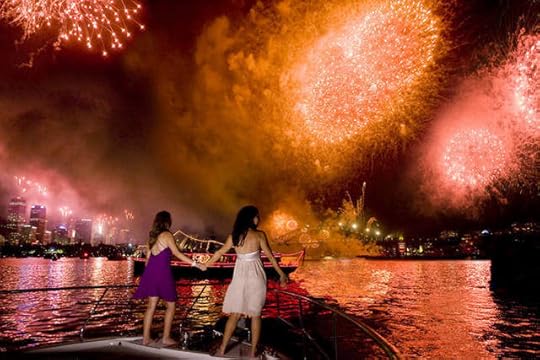 What better way to ring in the New Year than on a vessel cruising through Boston’s harbor? Take in the view of the Boston skyline as you leave the mainland in 2017 and return in 2018. The New Years cruise includes a DJ, a well stocked bar, cheese and crackers, and of course, champagne to toast at midnight. Come dressed in your nautical best to celebrate the New year in the most maritime manner. Tickets start at $50.00 each.
What better way to ring in the New Year than on a vessel cruising through Boston’s harbor? Take in the view of the Boston skyline as you leave the mainland in 2017 and return in 2018. The New Years cruise includes a DJ, a well stocked bar, cheese and crackers, and of course, champagne to toast at midnight. Come dressed in your nautical best to celebrate the New year in the most maritime manner. Tickets start at $50.00 each.
#8: New Year’s Eve at the Harpoon Brewery
Where: 360 Northern Ave.
Tickets: $90
Dress Code: Casual Leave it to the city’s breweries to know how to celebrate a Hoppy New Beer. The Harpoon Brewery ushers in the New Year at it’s cavernous Seaport location. For $90, you get three beer tokens, one of Harpoon’s famous soft pretzels, themed desserts and hot d’oeuvres. Be sure to make your way around to all four themed stations to get a taste of how New Years is celebrated around the world. Dance the night away and watch the ball drop live from Times Square on the dance floor.
Leave it to the city’s breweries to know how to celebrate a Hoppy New Beer. The Harpoon Brewery ushers in the New Year at it’s cavernous Seaport location. For $90, you get three beer tokens, one of Harpoon’s famous soft pretzels, themed desserts and hot d’oeuvres. Be sure to make your way around to all four themed stations to get a taste of how New Years is celebrated around the world. Dance the night away and watch the ball drop live from Times Square on the dance floor.
#7: New Year’s Eve at Studio A4cade
Where: 292 Massachussets Ave.
Tickets: $20
Dress Code: ’70’s Getup Party like it’s 1978! The Cambridge arcade bar is taking a trip back to the ’70’s with it’s special New Year’s Eve bash. Head over to A4cade between noon and midnight on December 31st for an end-of-the-year, disco-themed dance party. For $20 you get up to $10 in tokens upon entry. That’s a pretty good deal since the rest of the evening will be celebrated with complimentary champagne and prosecco and an insane costume contest.
Party like it’s 1978! The Cambridge arcade bar is taking a trip back to the ’70’s with it’s special New Year’s Eve bash. Head over to A4cade between noon and midnight on December 31st for an end-of-the-year, disco-themed dance party. For $20 you get up to $10 in tokens upon entry. That’s a pretty good deal since the rest of the evening will be celebrated with complimentary champagne and prosecco and an insane costume contest.
#6: New Year’s Eve at Cask N’ Flagon
Where: 62 Brookline Ave.
Tickets: $55
Dress Code: ’80’s Getup
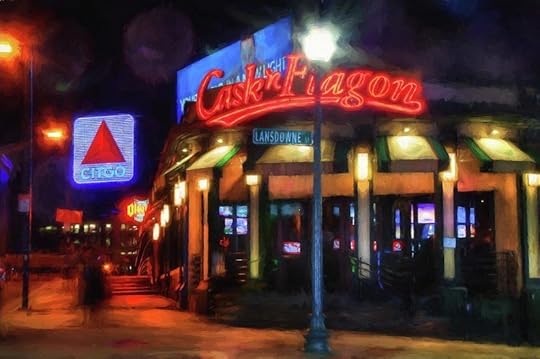 If ’70’s parties are not your thing, then how about the ’80’s? Break out your old Van Halen t-shirt and head to this fan-favorite Fenway bar on New Year’s EVe. Cask ’n Flagon is hosting an ’80’s-themed bash where you can party all night long to classic tunes while also enjoying a champagne toast.
If ’70’s parties are not your thing, then how about the ’80’s? Break out your old Van Halen t-shirt and head to this fan-favorite Fenway bar on New Year’s EVe. Cask ’n Flagon is hosting an ’80’s-themed bash where you can party all night long to classic tunes while also enjoying a champagne toast.
#5: New Year’s Extravaganza at Royale
Where: 279 Tremont Street
Tickets: $90
Dress Code: Classy The popular nightclub’s New Year’s Eve party is almost sold out, but there are still some tickets left for what’s bring billed as the “city’s craziest” end-of-the-year celebration. Ring in the new year with Boston’s tallest LED wall, a full array of the concert’s sound system, and live Times Square ball drop feed. For $90, Royale’s bash will feature live music by Those Guys, a balloon drop at midnight and more.
The popular nightclub’s New Year’s Eve party is almost sold out, but there are still some tickets left for what’s bring billed as the “city’s craziest” end-of-the-year celebration. Ring in the new year with Boston’s tallest LED wall, a full array of the concert’s sound system, and live Times Square ball drop feed. For $90, Royale’s bash will feature live music by Those Guys, a balloon drop at midnight and more.
#4: Hong Kong Boston’s New Year’s Bash!
Where: 65 Chatham Street
Tickets: $25
Dress Code: Casual
 From karaoke to enormous drinks, this beloved Boston bar has everything you need to celebrate the end of 2017. The Hong Kong’s New Year’s Eve bash will include a confetti ball drop and a champagne toast at midnight, as well as plenty of space to get your groove on. Advanced tickets are just $25 each.
From karaoke to enormous drinks, this beloved Boston bar has everything you need to celebrate the end of 2017. The Hong Kong’s New Year’s Eve bash will include a confetti ball drop and a champagne toast at midnight, as well as plenty of space to get your groove on. Advanced tickets are just $25 each.
#3: 2018 NYE Rooftop Bond Party
Where: 65 Seaport Boulevard
Tickets: $100
Dress Code: Formal Dress
 Yotel is getting into the New Year spirit with a special Casino Royale bash at its rooftop Skye Lounge. Guests can party like James Bond with roulette and black jack tables, “shaken not stirred” martinis, music and a champagne toast at midnight. Yotel Boston asks that guests “dress to impress” as they listen to the tunes of DJ Hectik, take in the views of the harbor and downtown Boston on their outdoor heated rooftop patio. The fun starts at 8 PM and tickets are available starting at $100.
Yotel is getting into the New Year spirit with a special Casino Royale bash at its rooftop Skye Lounge. Guests can party like James Bond with roulette and black jack tables, “shaken not stirred” martinis, music and a champagne toast at midnight. Yotel Boston asks that guests “dress to impress” as they listen to the tunes of DJ Hectik, take in the views of the harbor and downtown Boston on their outdoor heated rooftop patio. The fun starts at 8 PM and tickets are available starting at $100.
#2: First Night Boston
Where: Coply Square
Tickets: Free
Dress Code: Casual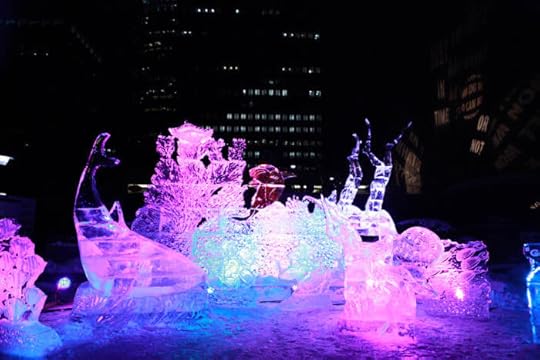 It wouldn’t be New Year’s Even in Boston without the annual First Night festivities. The celebration will take over Copley Square and the Back Bay with musical performances, ice sculptures, light displays and more, following the midnight fireworks over the Harbor.
It wouldn’t be New Year’s Even in Boston without the annual First Night festivities. The celebration will take over Copley Square and the Back Bay with musical performances, ice sculptures, light displays and more, following the midnight fireworks over the Harbor.
#1: The Upside Down: New Year’s Eve Experience
Where: Secret Location
Tickets: $80
Dress Code: Casual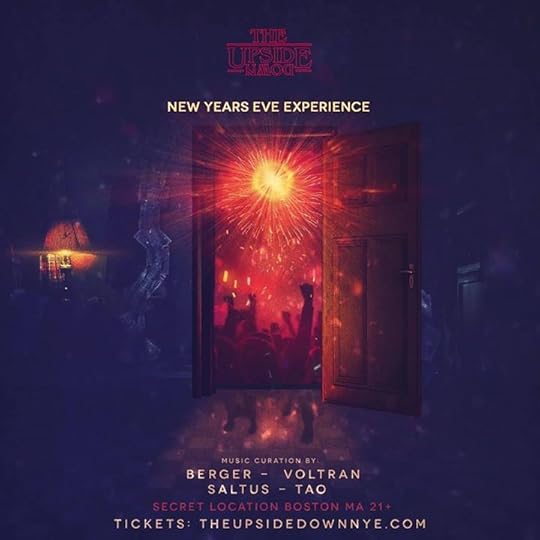
Party in the Upside Down at this Stranger Things themed New Year’s Eve party. The celebration is geared towards fans of the techno and house music. It will feature a champagne toast at midnight (mean, all of these parties do), a photo booth, live art installations and more. The secret location of the event will be announce at a later date.
Happy 2018!!! One final thing before you head out and splurge on your New Years Eve tickets . . .
One final thing before you head out and splurge on your New Years Eve tickets . . .
For those who have friends or family members who are either studying or living abroad, ringing in the New Year can sometimes be taxing. You miss your friend, or a specific relative who is now working in a different country. So, why not plan a trip out to visit them? Whether you plan on celebrating 2018 in Europe, Asia or Africa, New Year's Eve will always be a fulfilling feeling of accomplishment and positivity.
My good friend, Ms. Rick Steves, Ms. Carmen San Diego, Ms. Worldwide, Emily Kammerlohr has an amazing blog running called She’s a Trip where she writes about her travel experiences and offers tips on how make the most out of your adventures abroad.
So if you’re a single female (like me!) who is nervous traveler (also, like me!) have no fear! On Emily’s blog, she is, "all about making traveling less scary and more accessible for young women.” So yeah. You can believe that Emily knows her stuff.
And with New Years just around the corner, Emily will give you the confidence that you’ll need to be with that special someone when ushering in the New Year. Because what’s better than kicking off 2018 right than being with the person who matters the most to you? Go check out Emily’s blog today!
You can even follow her on Twitter, Instagram, Pinterest or Facebook. She also likes emails, so once you’ve returned from your adventures abroad, go send her a little email detailing your successful trip.
So have a very Happy New Year! Wherever you are!

 @shesatripblog
@shesatripblog  shesatripblog
shesatripblog  E M I L Y // She's a Trip
E M I L Y // She's a Trip  She's a Trip
She's a Trip
Sorry. Whenever any Boston sports team wins at any championship game.
But Boston is also a popular city to ring in the New Year. From fireworks over Boston Harbor, to ice sculptures, there are plenty of New Year’s Eve parties and special events to do in Boston during the last day of 2017.
Go classy to ring in 2018 while wearing your tuxedo and holding a vodka martini (that’s shaken, not stirred) at the James Bond themed Casino Royale bash at the Yotel rooftop in the Seaport District, or dress up for the ’70’s at a retro arcade.
Anywhere you go in Boston to party for the New Year will be absolutely worth it!
 #10: New Year's Eve Fireworks on Boston Harbor
#10: New Year's Eve Fireworks on Boston HarborWhere: Boston Harbor
Ticket Price: Free
Dress Code: None
 Head on over to Christopher Columbus Park to watch the fireworks over Boston Harbor at midnight. Any spot along the waterfront overlooking the Harbor (such as the North End) will give you a great view of the beloved 40-year old pyrotechnic spectacular. The midnight show is part of the city’s annual First Night Boston celebration. This event is free and open to the public.
Head on over to Christopher Columbus Park to watch the fireworks over Boston Harbor at midnight. Any spot along the waterfront overlooking the Harbor (such as the North End) will give you a great view of the beloved 40-year old pyrotechnic spectacular. The midnight show is part of the city’s annual First Night Boston celebration. This event is free and open to the public. #9: Boston Harbor New Year’s Eve Fireworks Cruise
Where: 60 Rowes Wharf
Tickets: $90.00
Dress Code: Formal Dress
 What better way to ring in the New Year than on a vessel cruising through Boston’s harbor? Take in the view of the Boston skyline as you leave the mainland in 2017 and return in 2018. The New Years cruise includes a DJ, a well stocked bar, cheese and crackers, and of course, champagne to toast at midnight. Come dressed in your nautical best to celebrate the New year in the most maritime manner. Tickets start at $50.00 each.
What better way to ring in the New Year than on a vessel cruising through Boston’s harbor? Take in the view of the Boston skyline as you leave the mainland in 2017 and return in 2018. The New Years cruise includes a DJ, a well stocked bar, cheese and crackers, and of course, champagne to toast at midnight. Come dressed in your nautical best to celebrate the New year in the most maritime manner. Tickets start at $50.00 each. #8: New Year’s Eve at the Harpoon Brewery
Where: 360 Northern Ave.
Tickets: $90
Dress Code: Casual
 Leave it to the city’s breweries to know how to celebrate a Hoppy New Beer. The Harpoon Brewery ushers in the New Year at it’s cavernous Seaport location. For $90, you get three beer tokens, one of Harpoon’s famous soft pretzels, themed desserts and hot d’oeuvres. Be sure to make your way around to all four themed stations to get a taste of how New Years is celebrated around the world. Dance the night away and watch the ball drop live from Times Square on the dance floor.
Leave it to the city’s breweries to know how to celebrate a Hoppy New Beer. The Harpoon Brewery ushers in the New Year at it’s cavernous Seaport location. For $90, you get three beer tokens, one of Harpoon’s famous soft pretzels, themed desserts and hot d’oeuvres. Be sure to make your way around to all four themed stations to get a taste of how New Years is celebrated around the world. Dance the night away and watch the ball drop live from Times Square on the dance floor. #7: New Year’s Eve at Studio A4cade
Where: 292 Massachussets Ave.
Tickets: $20
Dress Code: ’70’s Getup
 Party like it’s 1978! The Cambridge arcade bar is taking a trip back to the ’70’s with it’s special New Year’s Eve bash. Head over to A4cade between noon and midnight on December 31st for an end-of-the-year, disco-themed dance party. For $20 you get up to $10 in tokens upon entry. That’s a pretty good deal since the rest of the evening will be celebrated with complimentary champagne and prosecco and an insane costume contest.
Party like it’s 1978! The Cambridge arcade bar is taking a trip back to the ’70’s with it’s special New Year’s Eve bash. Head over to A4cade between noon and midnight on December 31st for an end-of-the-year, disco-themed dance party. For $20 you get up to $10 in tokens upon entry. That’s a pretty good deal since the rest of the evening will be celebrated with complimentary champagne and prosecco and an insane costume contest.#6: New Year’s Eve at Cask N’ Flagon
Where: 62 Brookline Ave.
Tickets: $55
Dress Code: ’80’s Getup
 If ’70’s parties are not your thing, then how about the ’80’s? Break out your old Van Halen t-shirt and head to this fan-favorite Fenway bar on New Year’s EVe. Cask ’n Flagon is hosting an ’80’s-themed bash where you can party all night long to classic tunes while also enjoying a champagne toast.
If ’70’s parties are not your thing, then how about the ’80’s? Break out your old Van Halen t-shirt and head to this fan-favorite Fenway bar on New Year’s EVe. Cask ’n Flagon is hosting an ’80’s-themed bash where you can party all night long to classic tunes while also enjoying a champagne toast. #5: New Year’s Extravaganza at Royale
Where: 279 Tremont Street
Tickets: $90
Dress Code: Classy
 The popular nightclub’s New Year’s Eve party is almost sold out, but there are still some tickets left for what’s bring billed as the “city’s craziest” end-of-the-year celebration. Ring in the new year with Boston’s tallest LED wall, a full array of the concert’s sound system, and live Times Square ball drop feed. For $90, Royale’s bash will feature live music by Those Guys, a balloon drop at midnight and more.
The popular nightclub’s New Year’s Eve party is almost sold out, but there are still some tickets left for what’s bring billed as the “city’s craziest” end-of-the-year celebration. Ring in the new year with Boston’s tallest LED wall, a full array of the concert’s sound system, and live Times Square ball drop feed. For $90, Royale’s bash will feature live music by Those Guys, a balloon drop at midnight and more. #4: Hong Kong Boston’s New Year’s Bash!
Where: 65 Chatham Street
Tickets: $25
Dress Code: Casual
 From karaoke to enormous drinks, this beloved Boston bar has everything you need to celebrate the end of 2017. The Hong Kong’s New Year’s Eve bash will include a confetti ball drop and a champagne toast at midnight, as well as plenty of space to get your groove on. Advanced tickets are just $25 each.
From karaoke to enormous drinks, this beloved Boston bar has everything you need to celebrate the end of 2017. The Hong Kong’s New Year’s Eve bash will include a confetti ball drop and a champagne toast at midnight, as well as plenty of space to get your groove on. Advanced tickets are just $25 each. #3: 2018 NYE Rooftop Bond Party
Where: 65 Seaport Boulevard
Tickets: $100
Dress Code: Formal Dress
 Yotel is getting into the New Year spirit with a special Casino Royale bash at its rooftop Skye Lounge. Guests can party like James Bond with roulette and black jack tables, “shaken not stirred” martinis, music and a champagne toast at midnight. Yotel Boston asks that guests “dress to impress” as they listen to the tunes of DJ Hectik, take in the views of the harbor and downtown Boston on their outdoor heated rooftop patio. The fun starts at 8 PM and tickets are available starting at $100.
Yotel is getting into the New Year spirit with a special Casino Royale bash at its rooftop Skye Lounge. Guests can party like James Bond with roulette and black jack tables, “shaken not stirred” martinis, music and a champagne toast at midnight. Yotel Boston asks that guests “dress to impress” as they listen to the tunes of DJ Hectik, take in the views of the harbor and downtown Boston on their outdoor heated rooftop patio. The fun starts at 8 PM and tickets are available starting at $100. #2: First Night Boston
Where: Coply Square
Tickets: Free
Dress Code: Casual
 It wouldn’t be New Year’s Even in Boston without the annual First Night festivities. The celebration will take over Copley Square and the Back Bay with musical performances, ice sculptures, light displays and more, following the midnight fireworks over the Harbor.
It wouldn’t be New Year’s Even in Boston without the annual First Night festivities. The celebration will take over Copley Square and the Back Bay with musical performances, ice sculptures, light displays and more, following the midnight fireworks over the Harbor. #1: The Upside Down: New Year’s Eve Experience
Where: Secret Location
Tickets: $80
Dress Code: Casual

Party in the Upside Down at this Stranger Things themed New Year’s Eve party. The celebration is geared towards fans of the techno and house music. It will feature a champagne toast at midnight (mean, all of these parties do), a photo booth, live art installations and more. The secret location of the event will be announce at a later date.
Happy 2018!!!
 One final thing before you head out and splurge on your New Years Eve tickets . . .
One final thing before you head out and splurge on your New Years Eve tickets . . .For those who have friends or family members who are either studying or living abroad, ringing in the New Year can sometimes be taxing. You miss your friend, or a specific relative who is now working in a different country. So, why not plan a trip out to visit them? Whether you plan on celebrating 2018 in Europe, Asia or Africa, New Year's Eve will always be a fulfilling feeling of accomplishment and positivity.
My good friend, Ms. Rick Steves, Ms. Carmen San Diego, Ms. Worldwide, Emily Kammerlohr has an amazing blog running called She’s a Trip where she writes about her travel experiences and offers tips on how make the most out of your adventures abroad.
So if you’re a single female (like me!) who is nervous traveler (also, like me!) have no fear! On Emily’s blog, she is, "all about making traveling less scary and more accessible for young women.” So yeah. You can believe that Emily knows her stuff.
And with New Years just around the corner, Emily will give you the confidence that you’ll need to be with that special someone when ushering in the New Year. Because what’s better than kicking off 2018 right than being with the person who matters the most to you? Go check out Emily’s blog today!
You can even follow her on Twitter, Instagram, Pinterest or Facebook. She also likes emails, so once you’ve returned from your adventures abroad, go send her a little email detailing your successful trip.
So have a very Happy New Year! Wherever you are!


 @shesatripblog
@shesatripblog  shesatripblog
shesatripblog  E M I L Y // She's a Trip
E M I L Y // She's a Trip  She's a Trip
She's a Trip
Published on December 29, 2017 20:17



